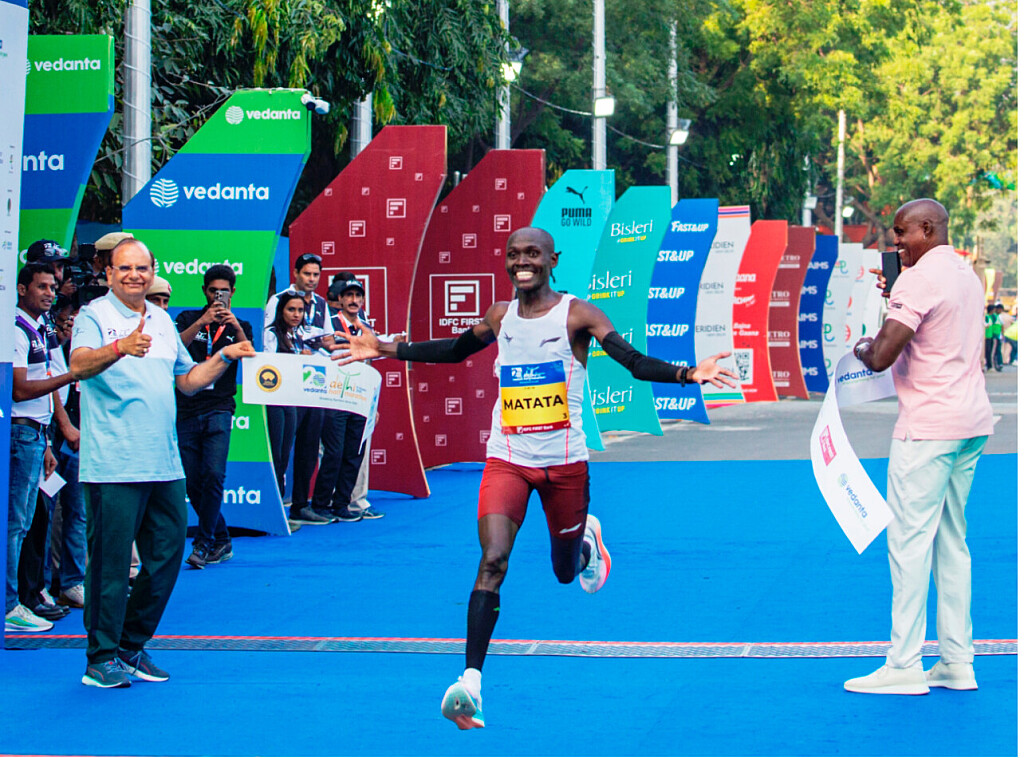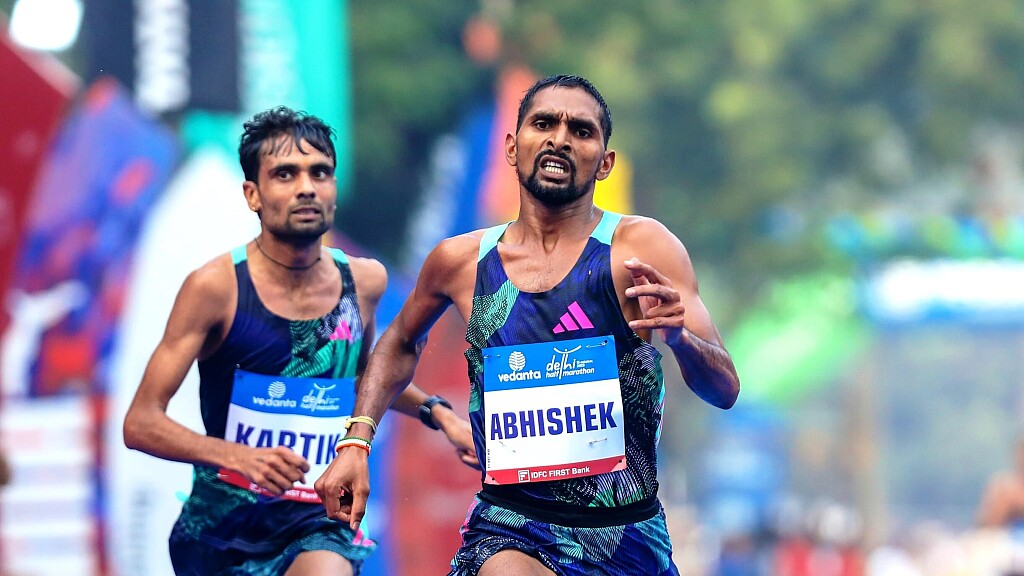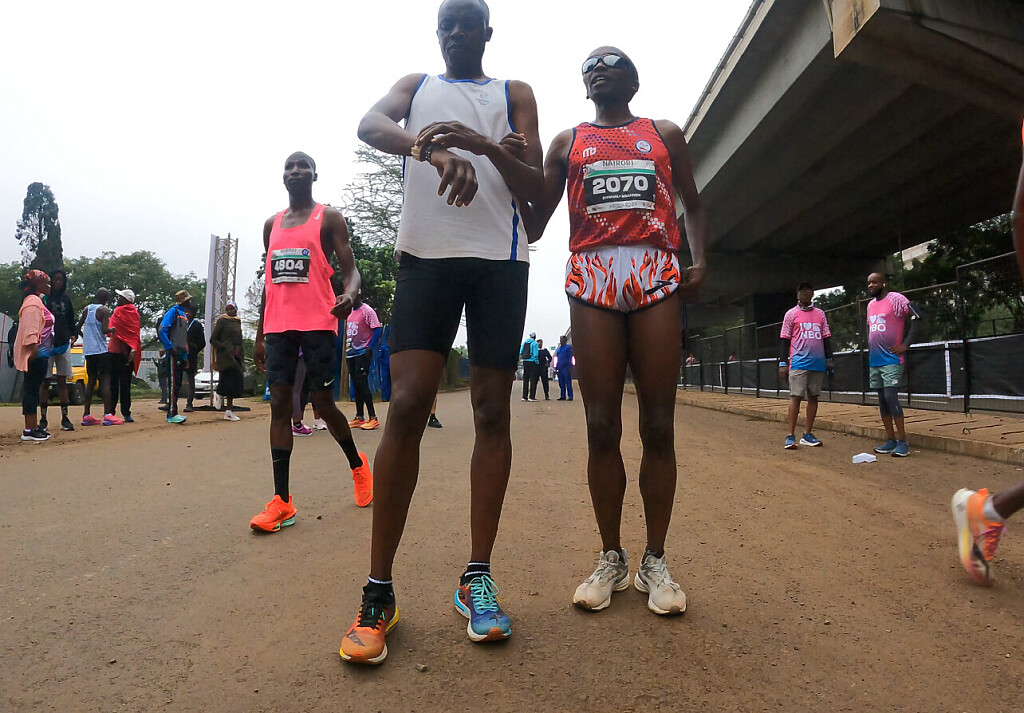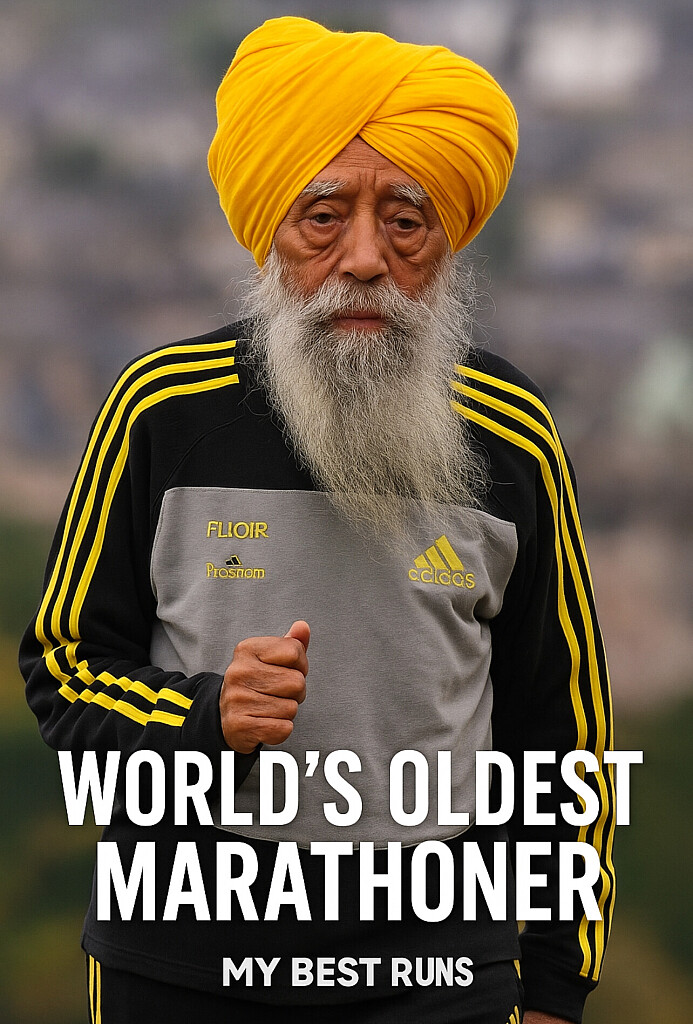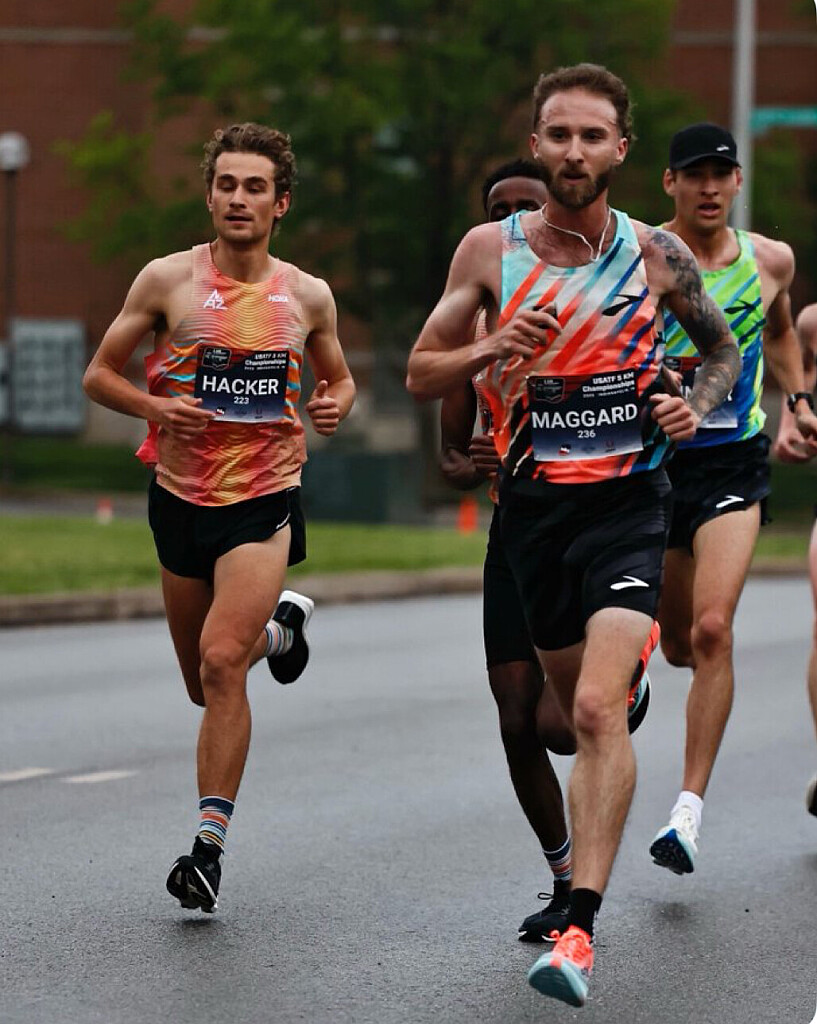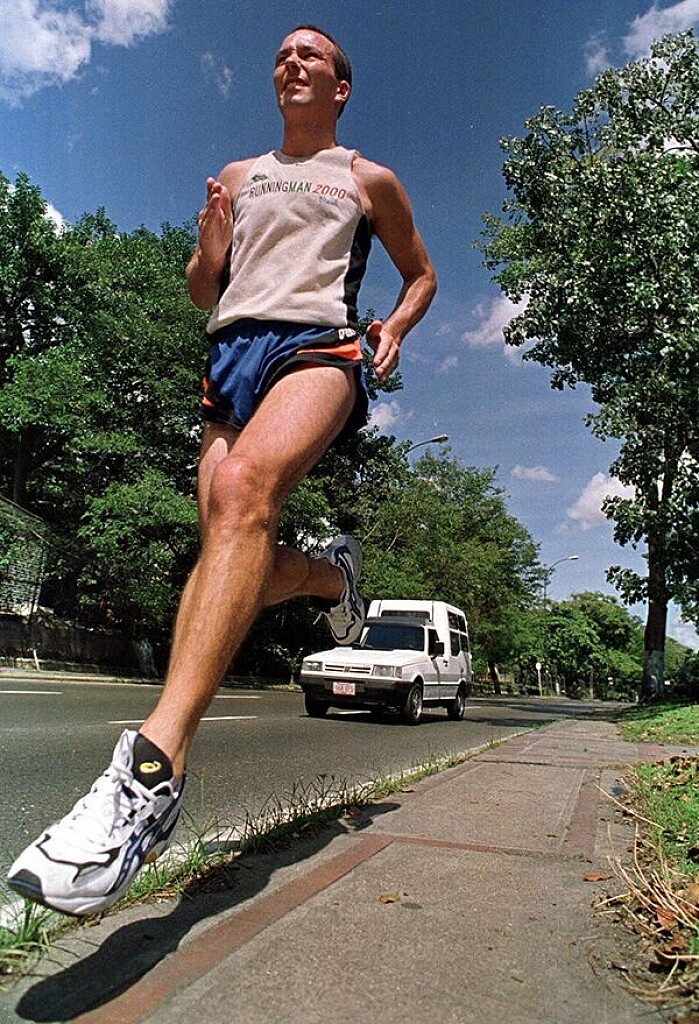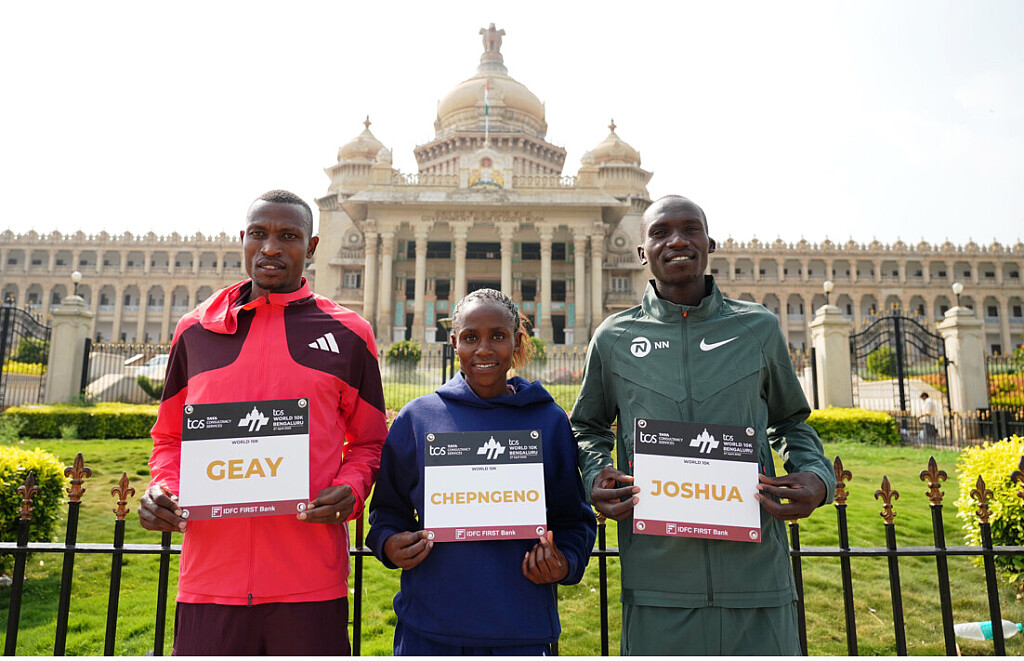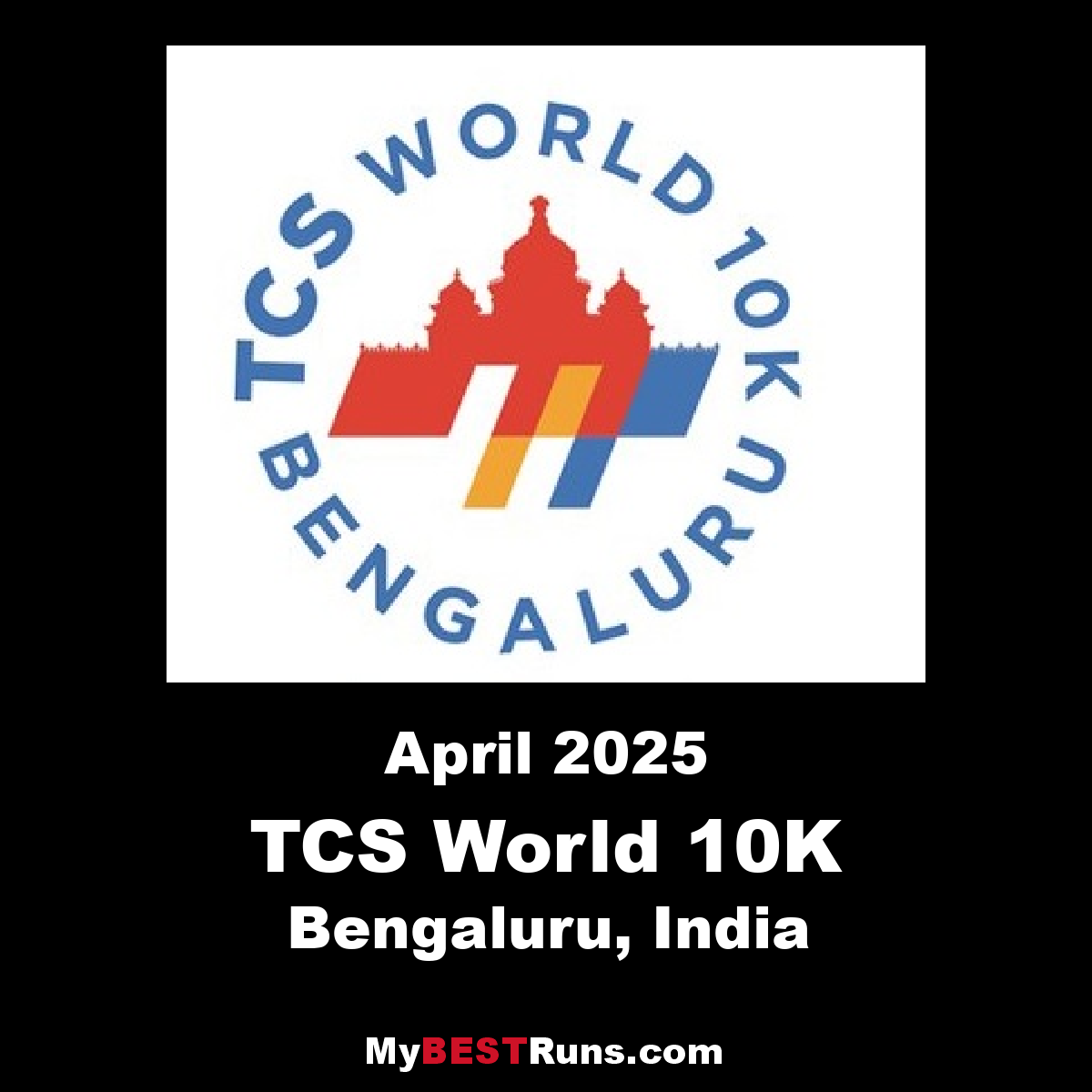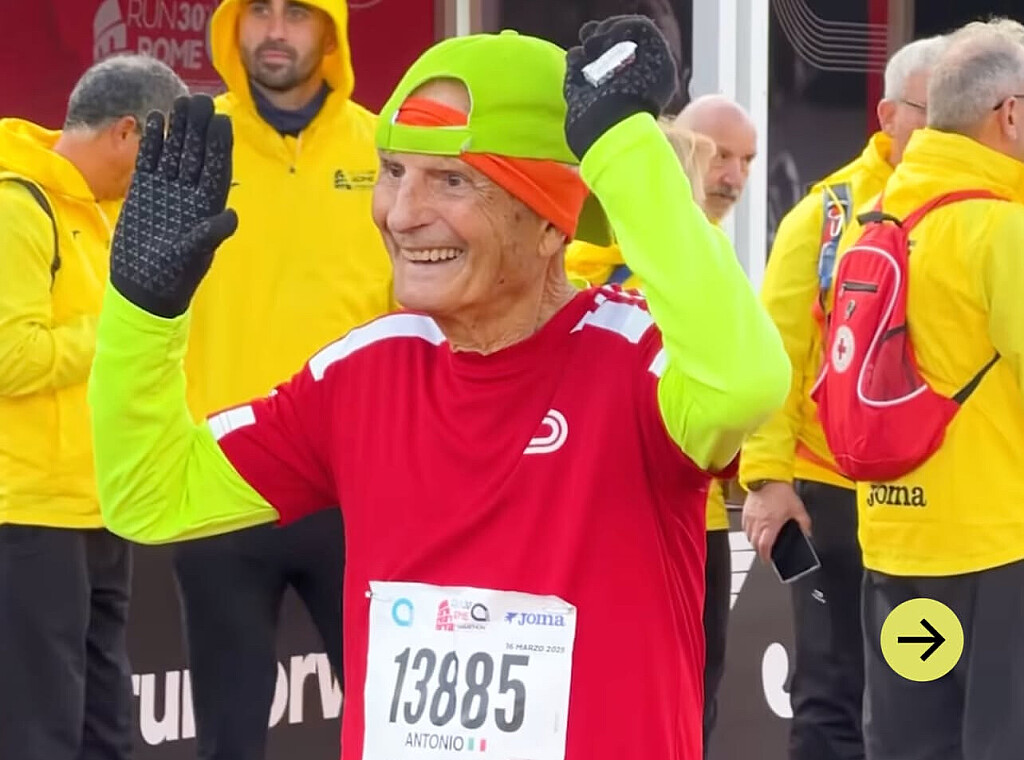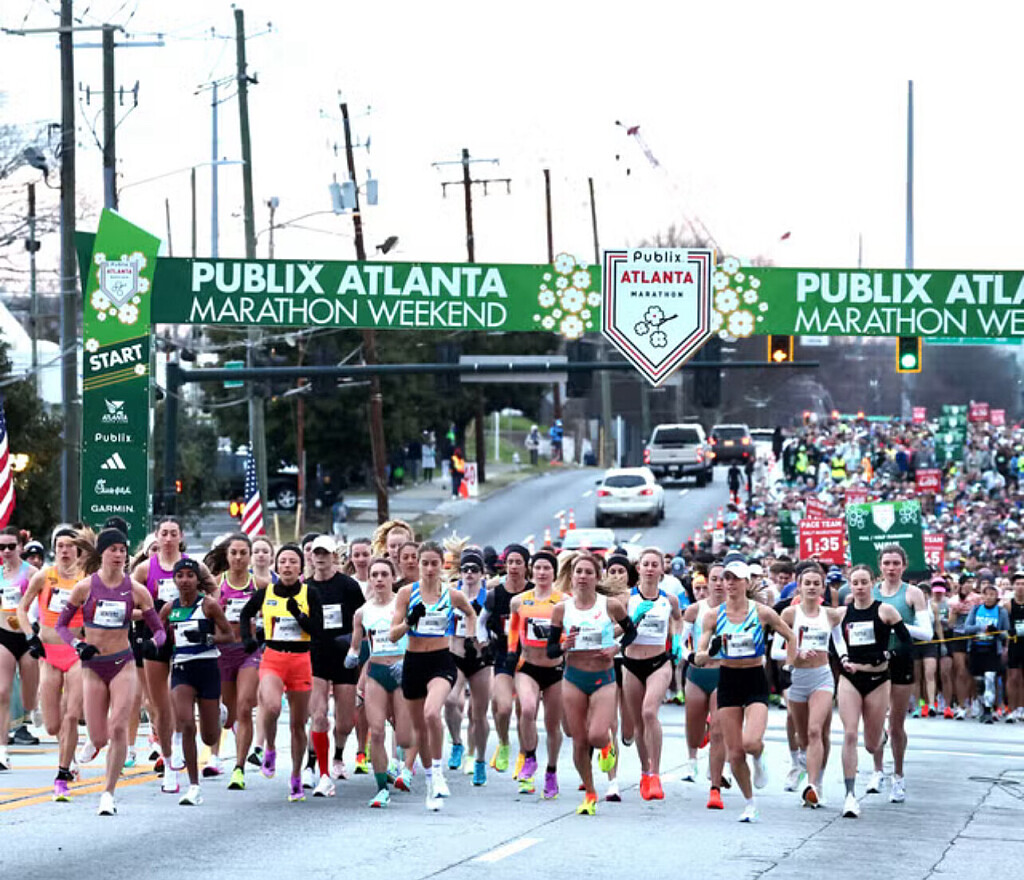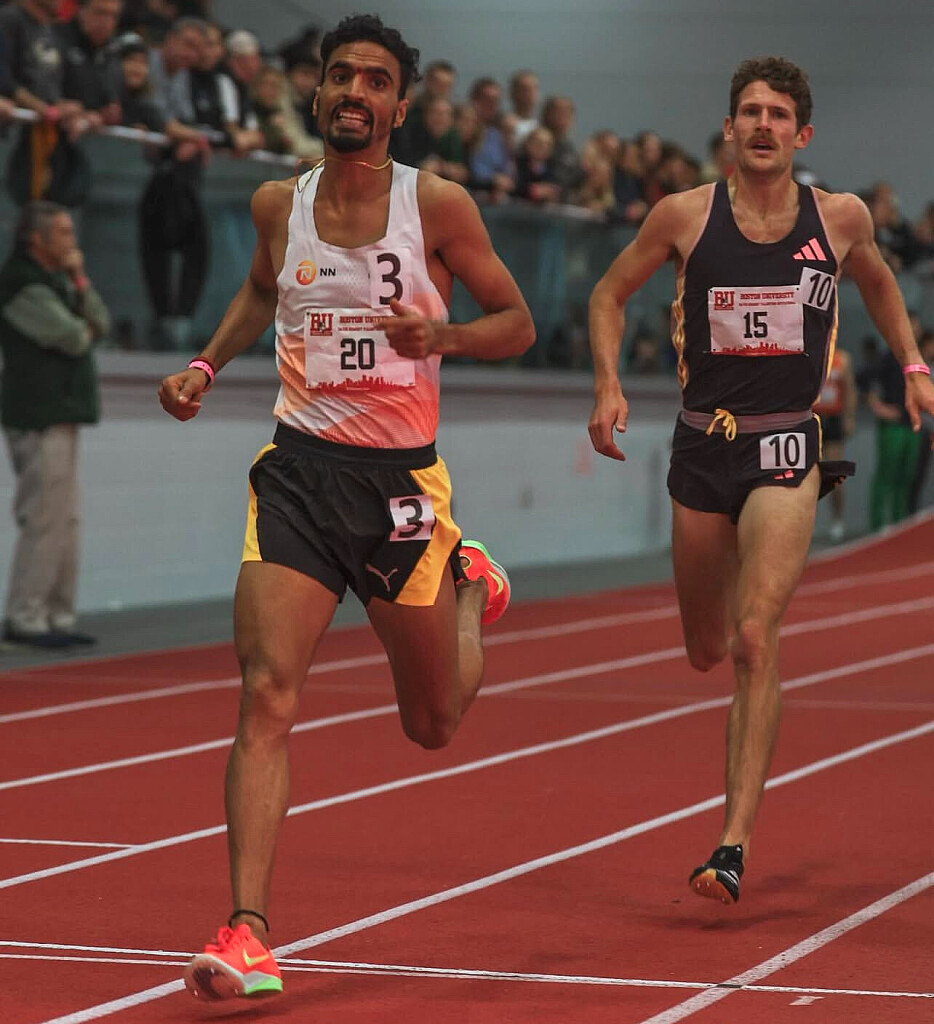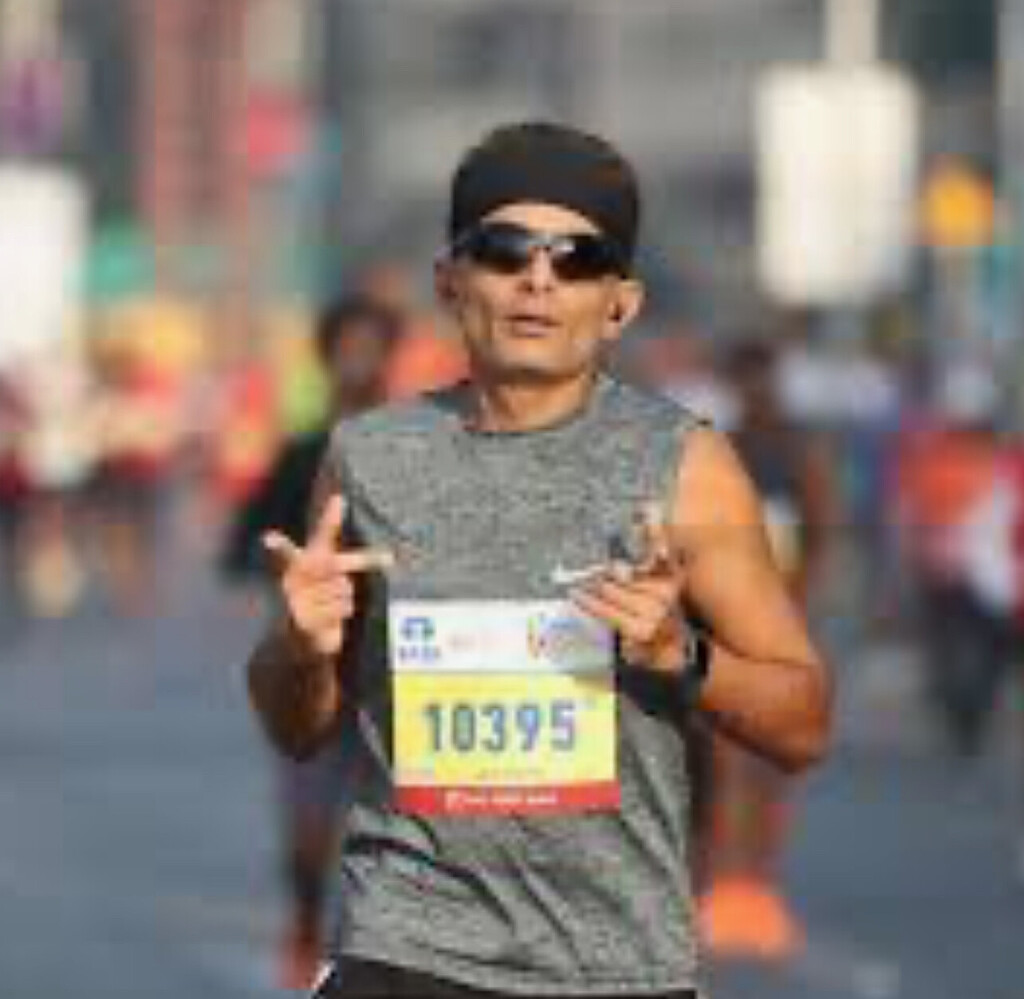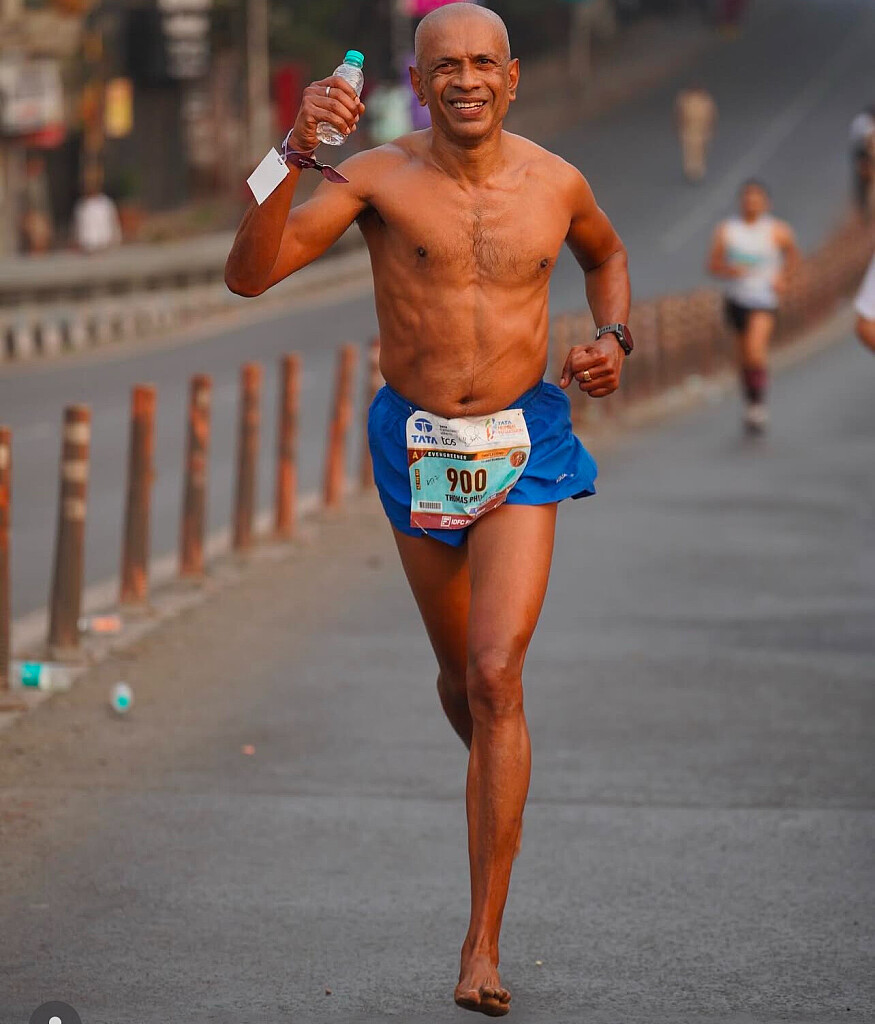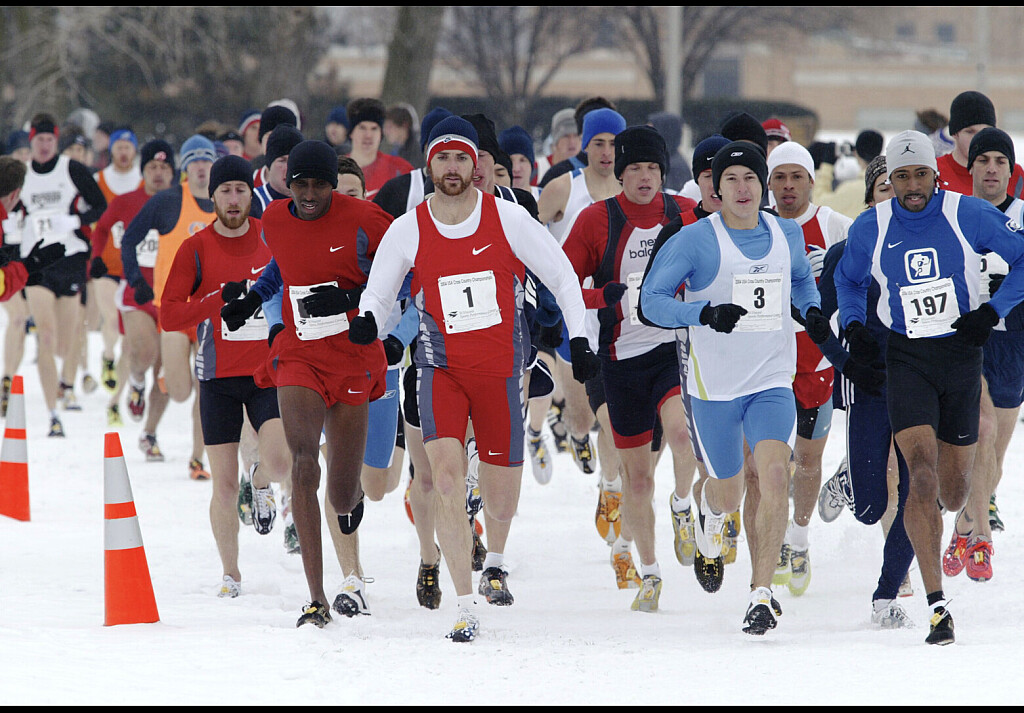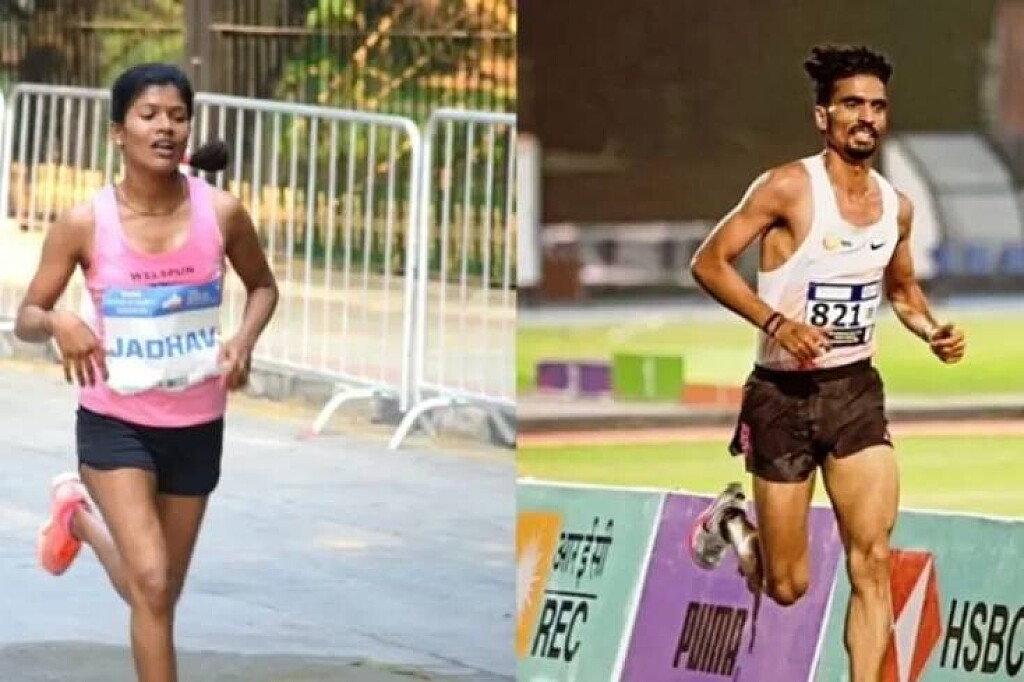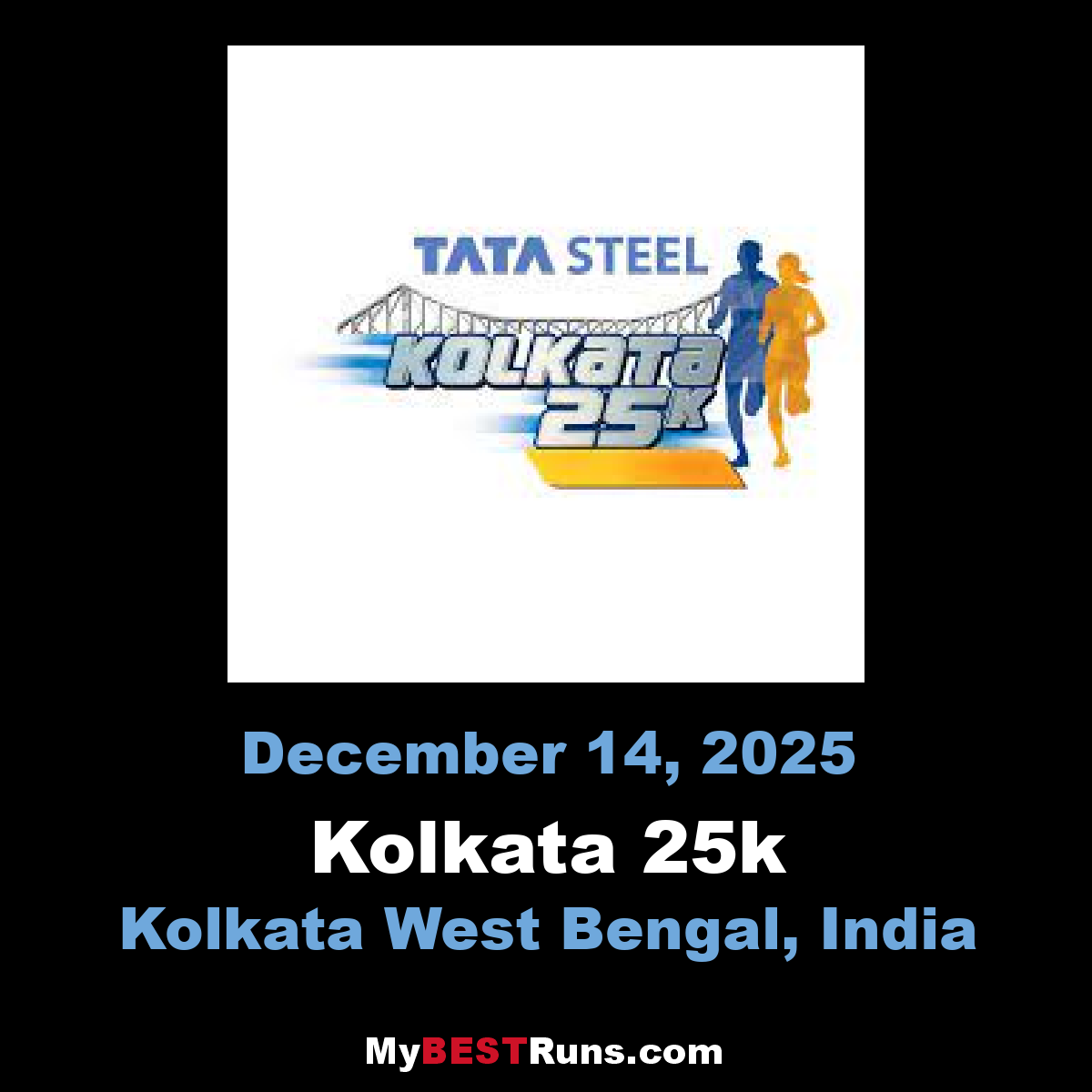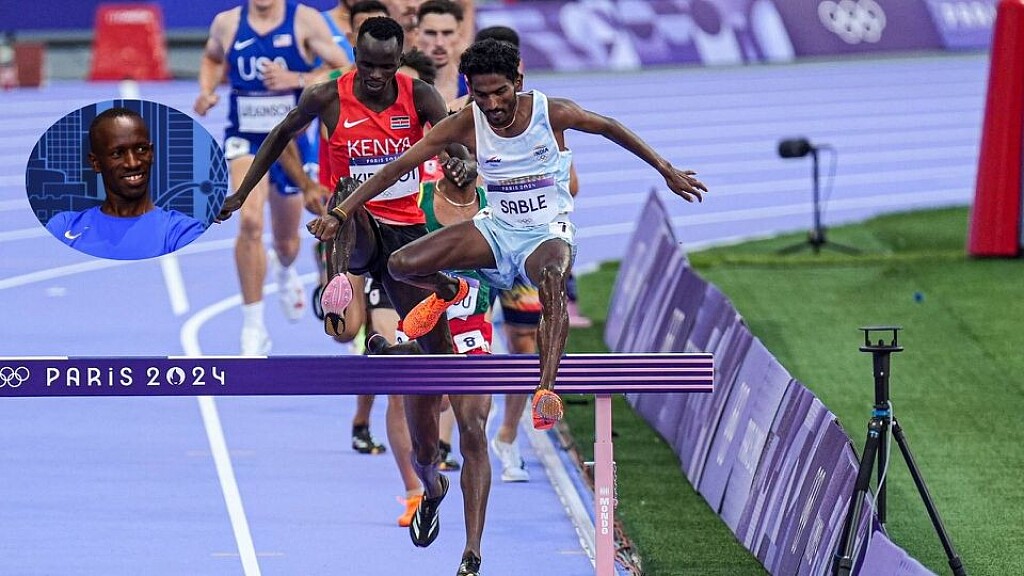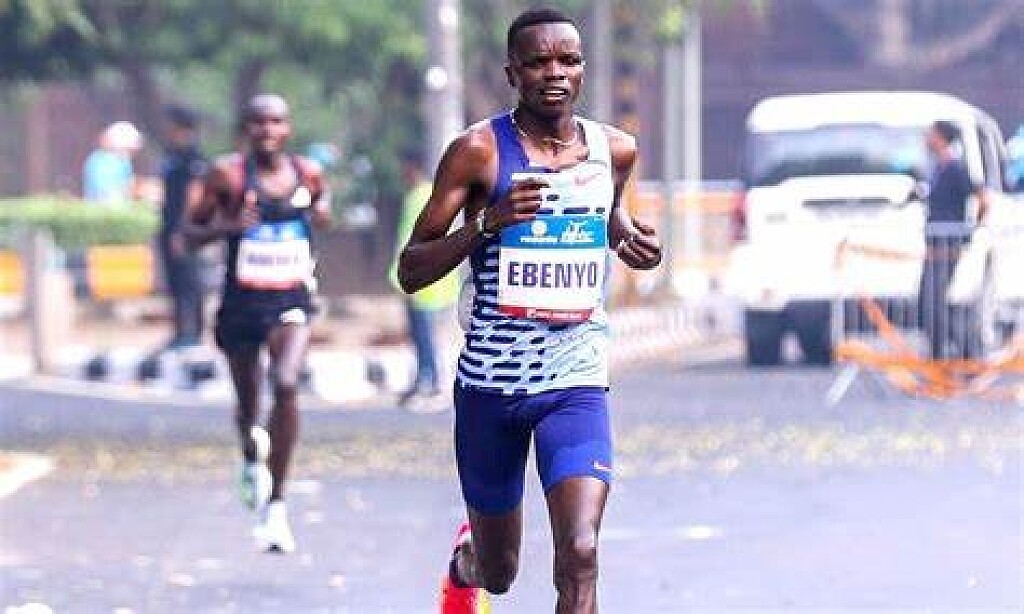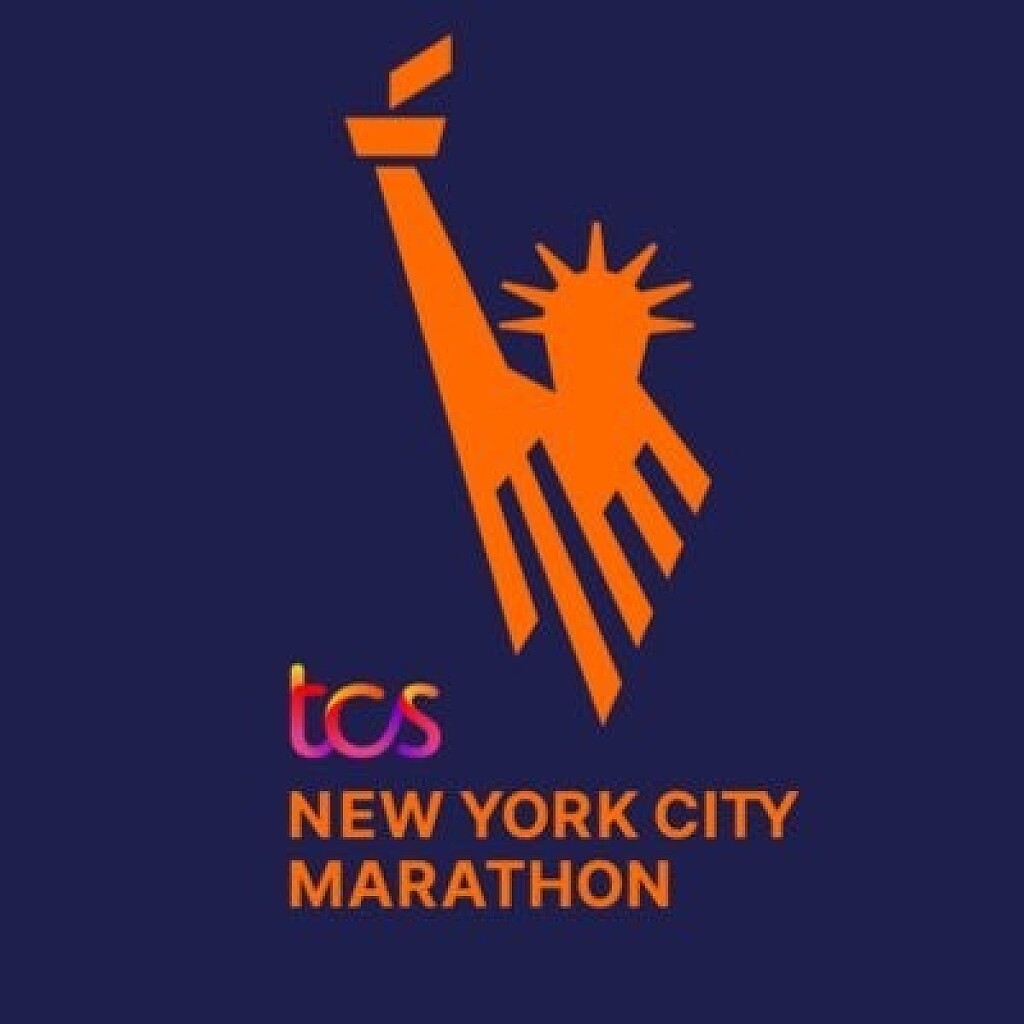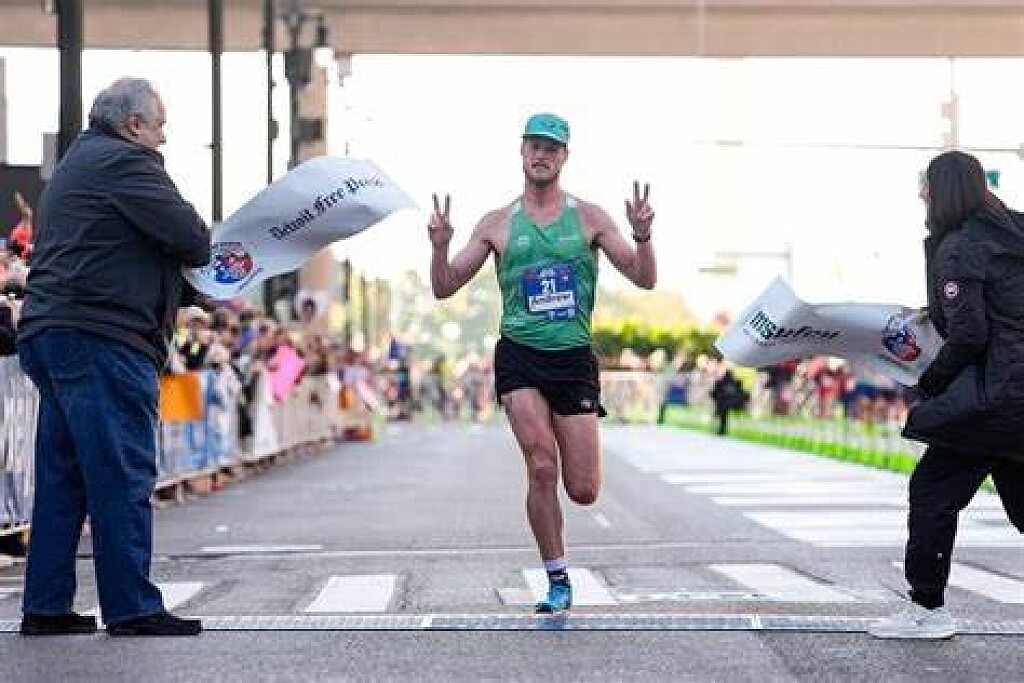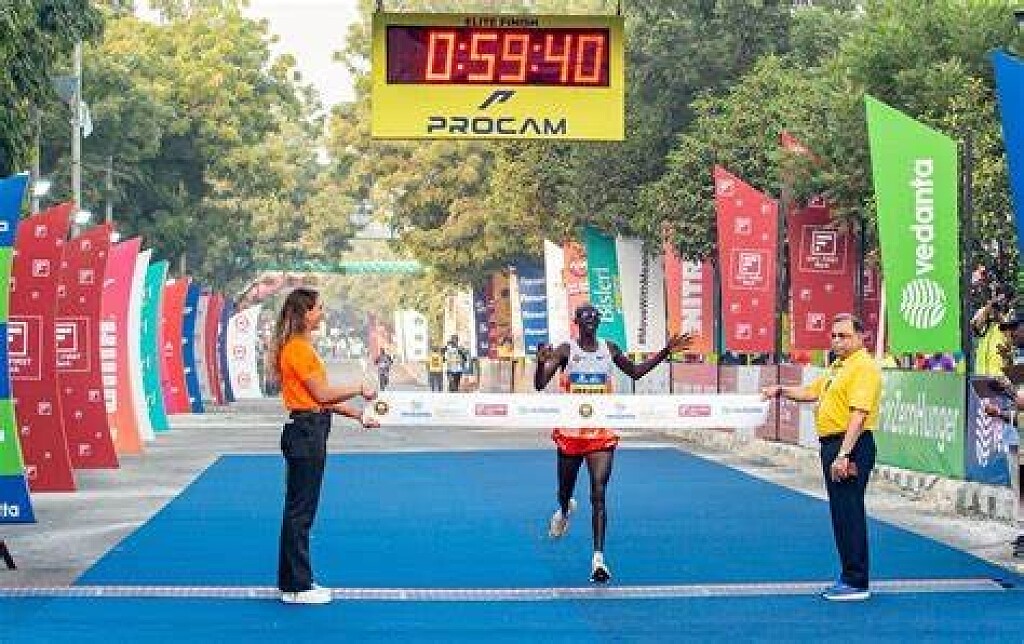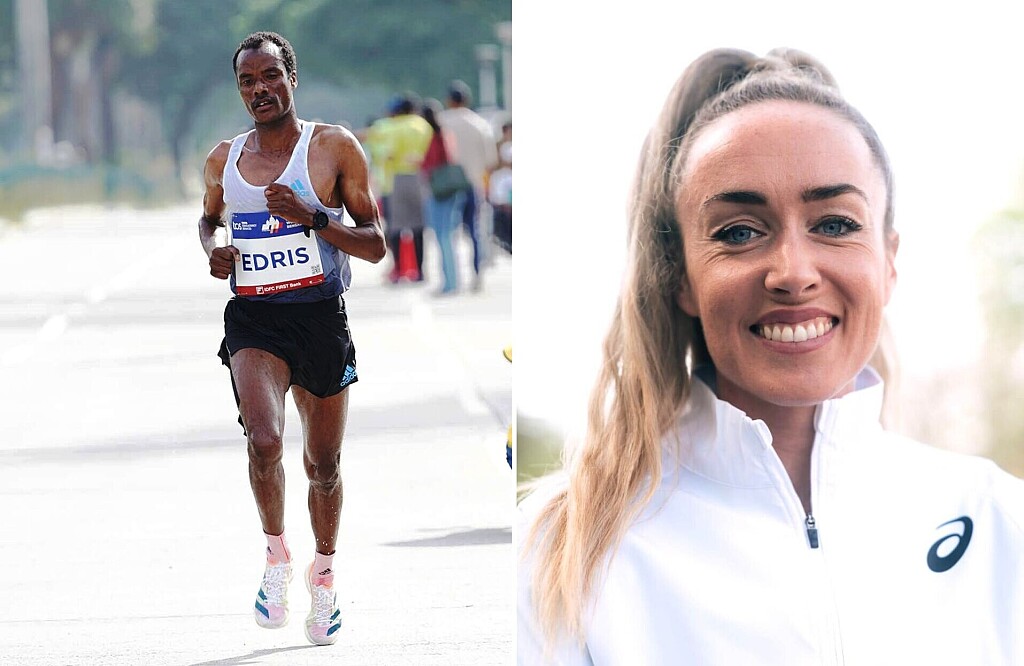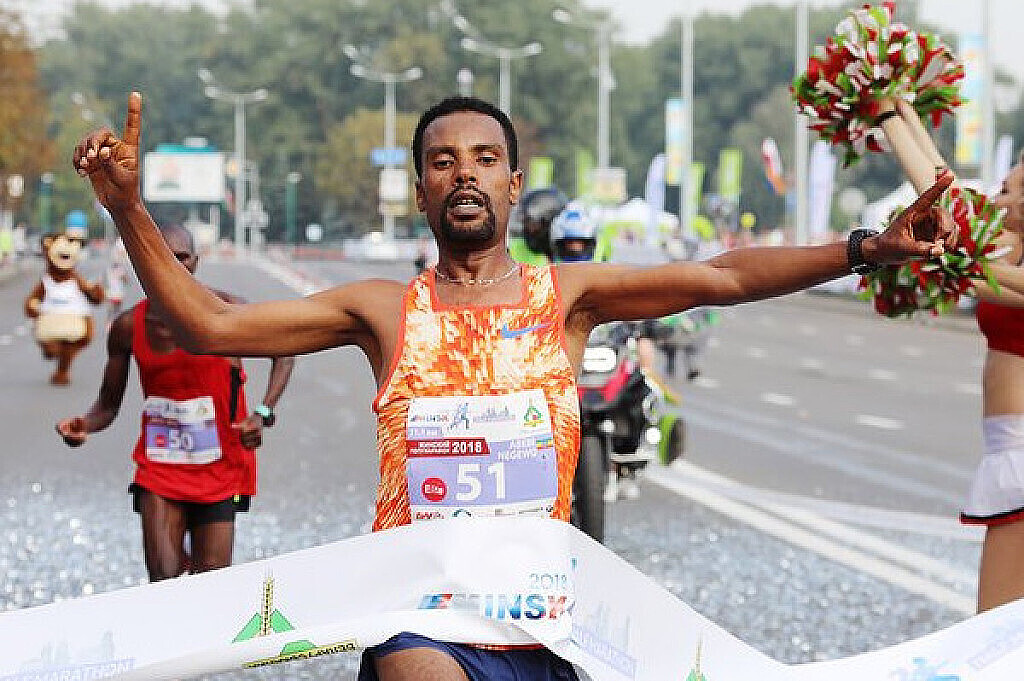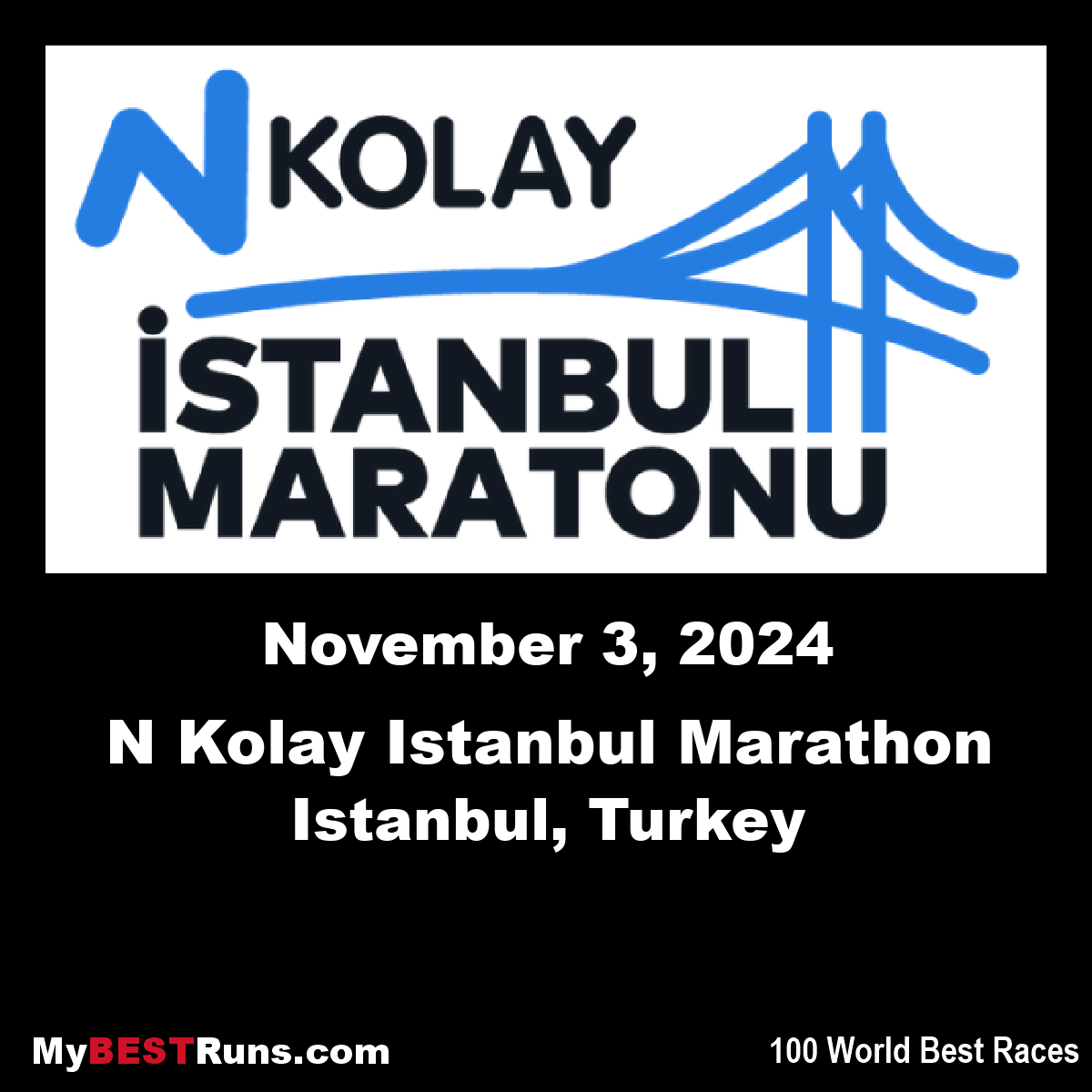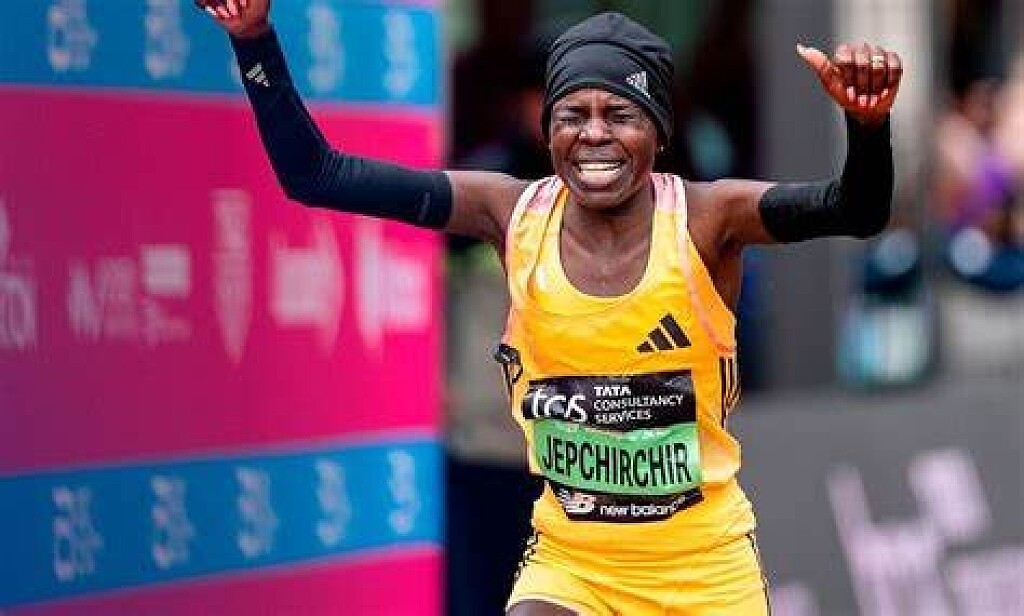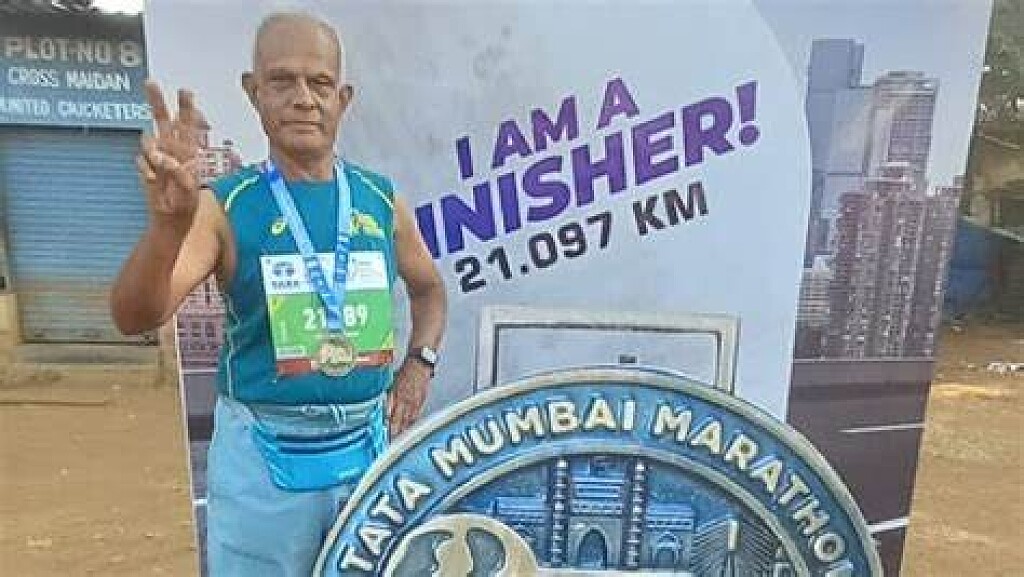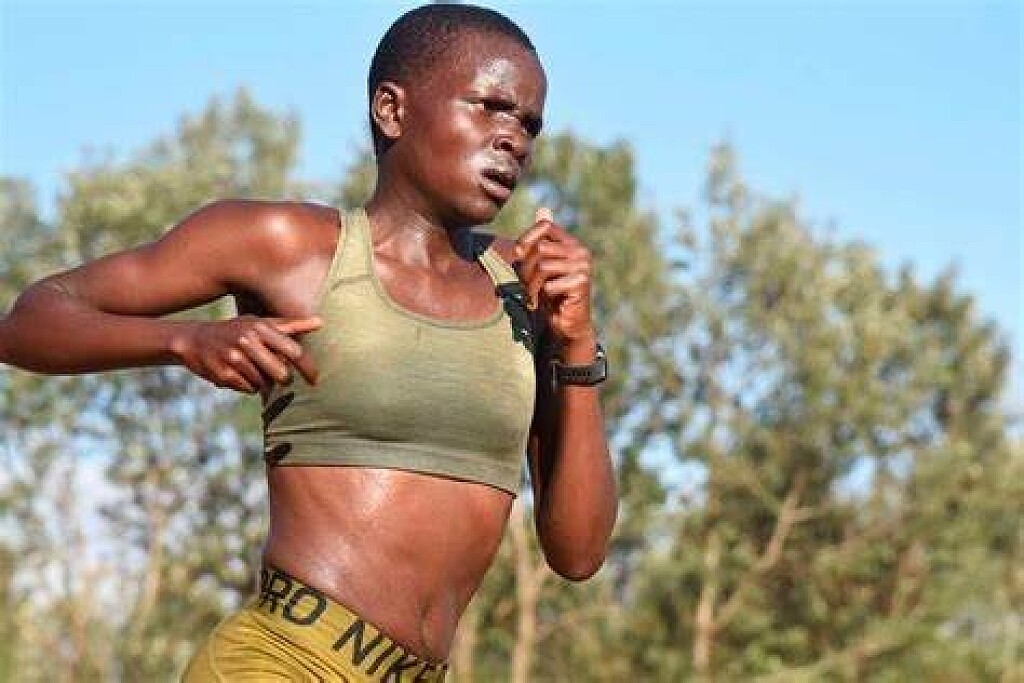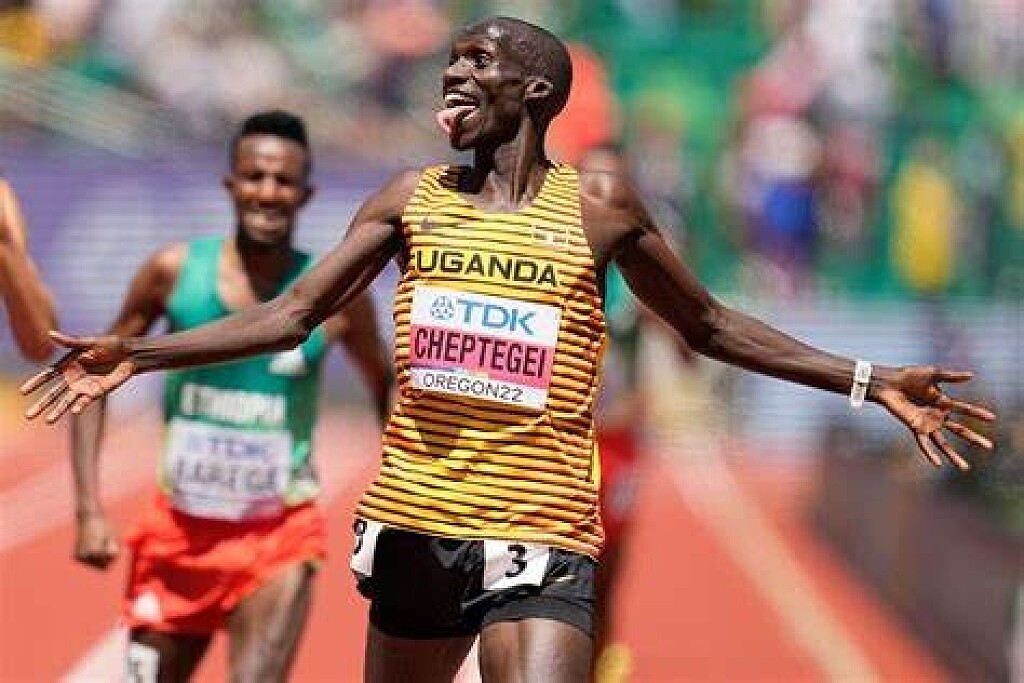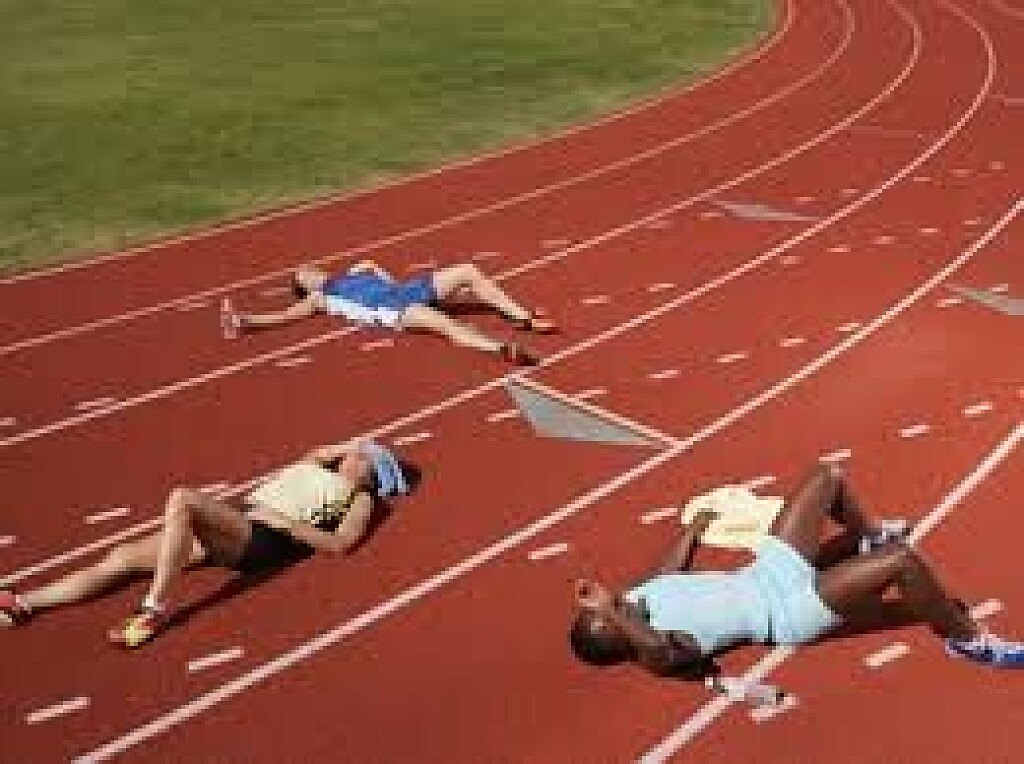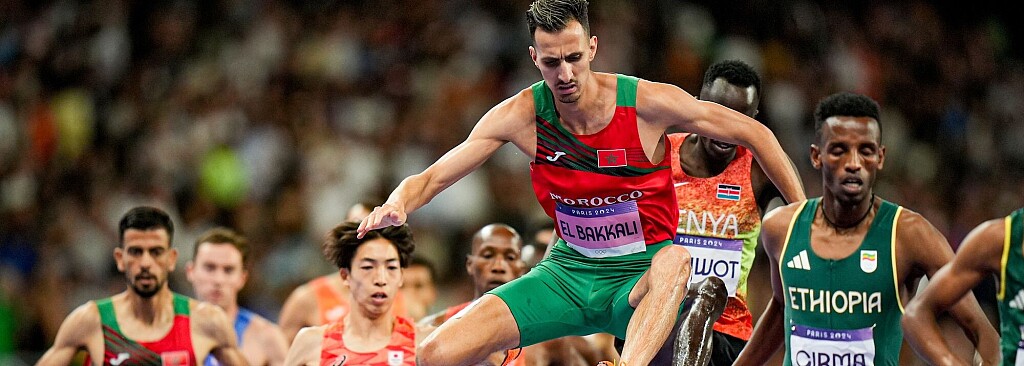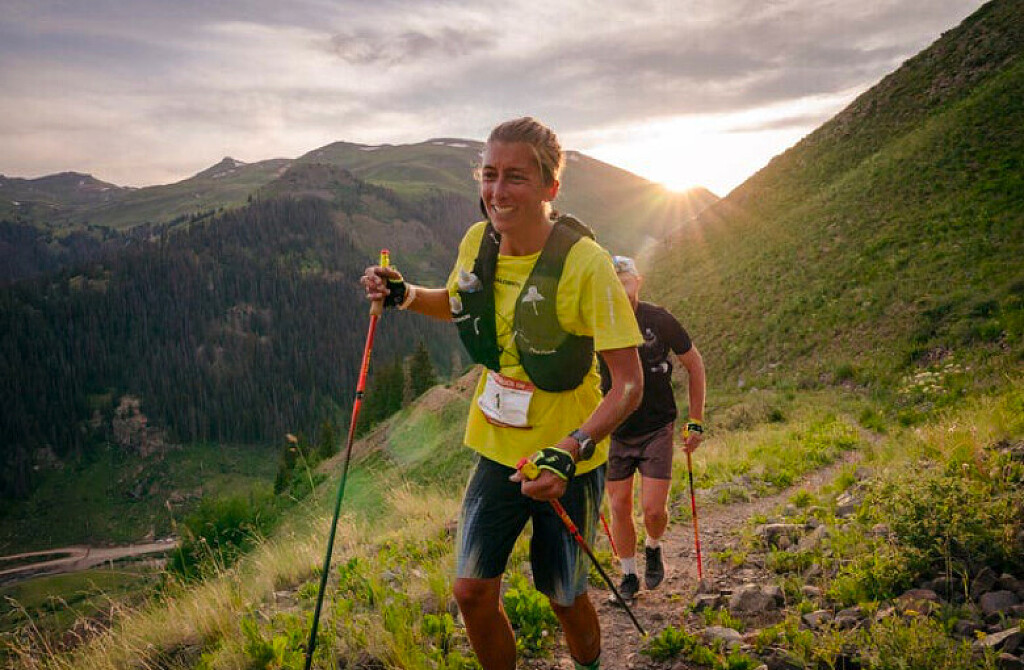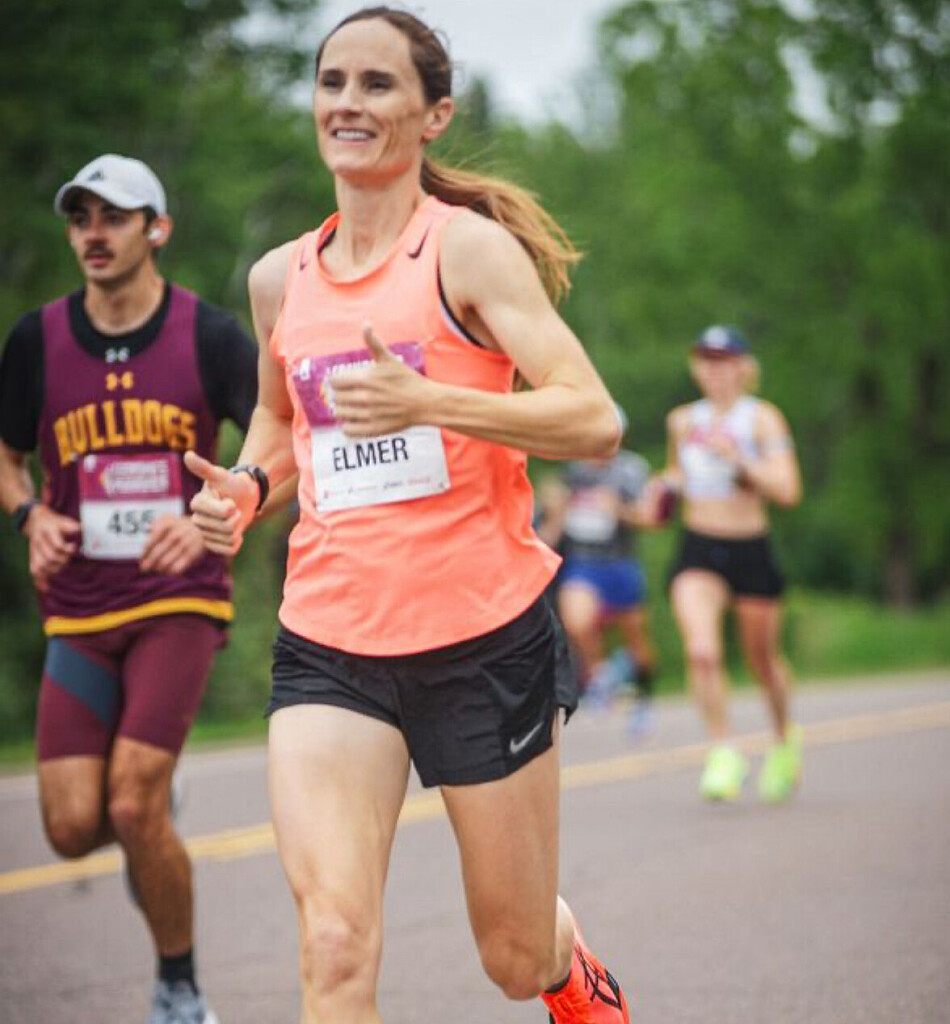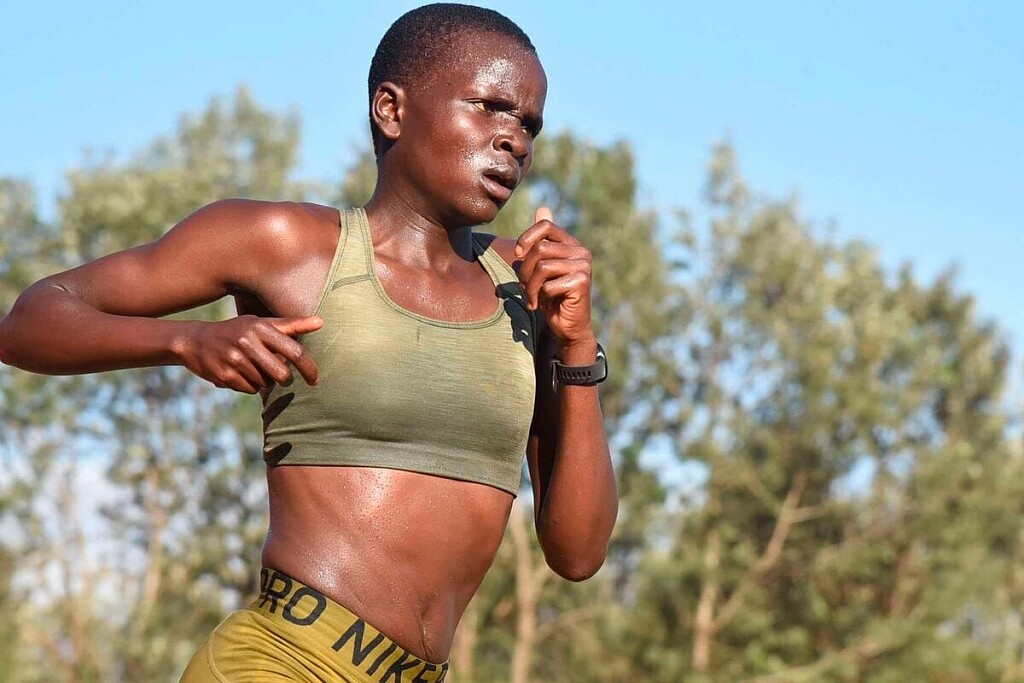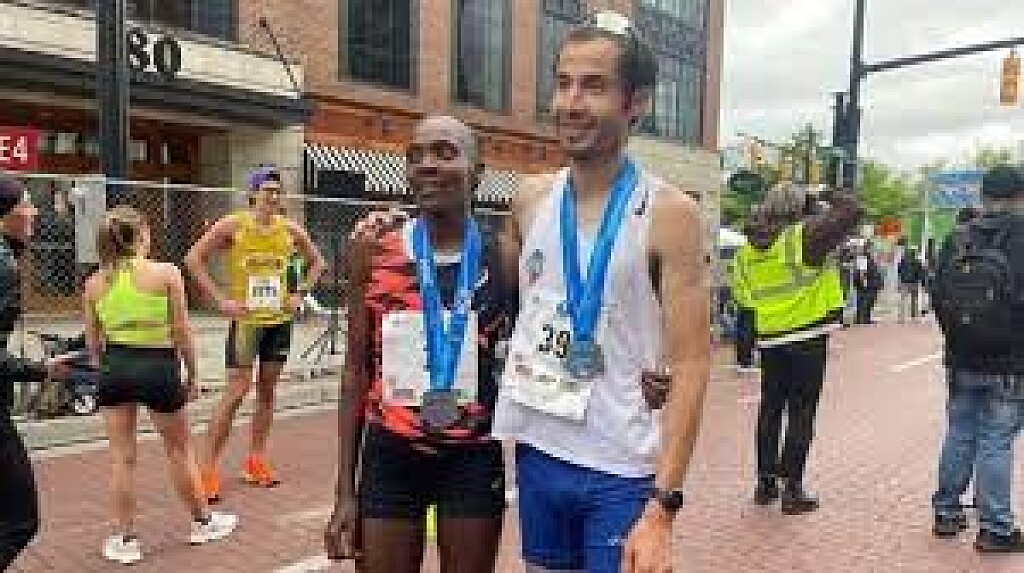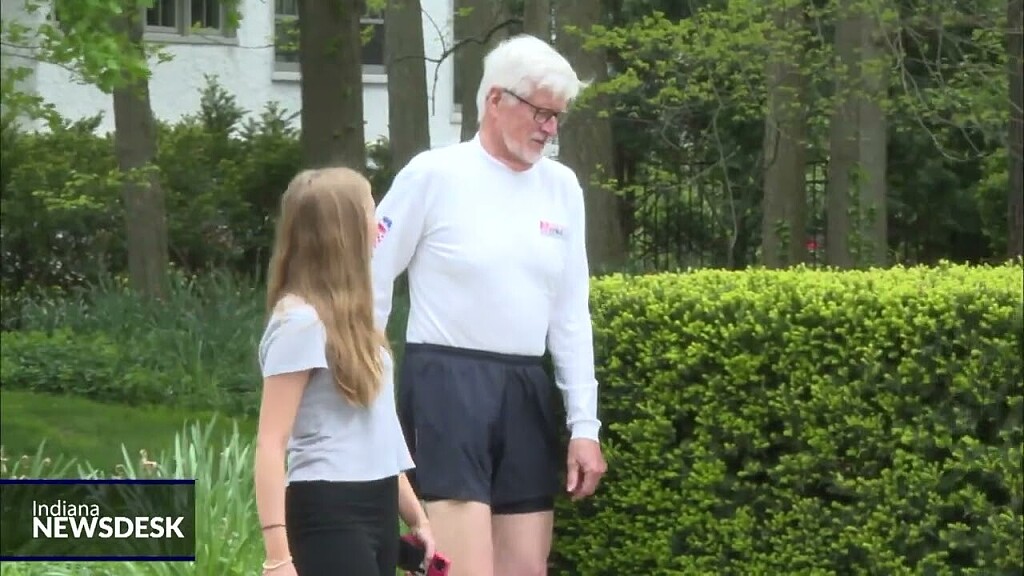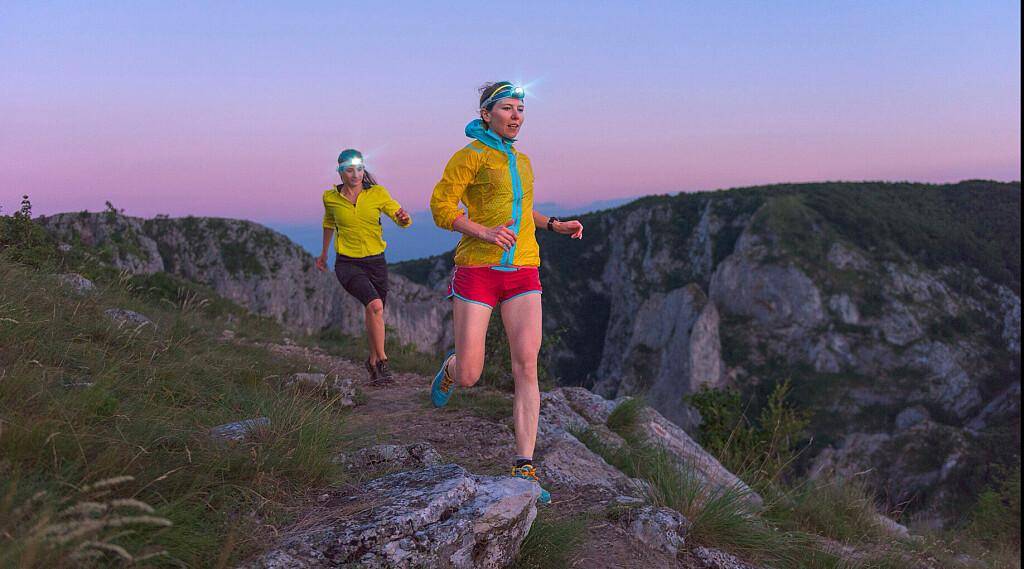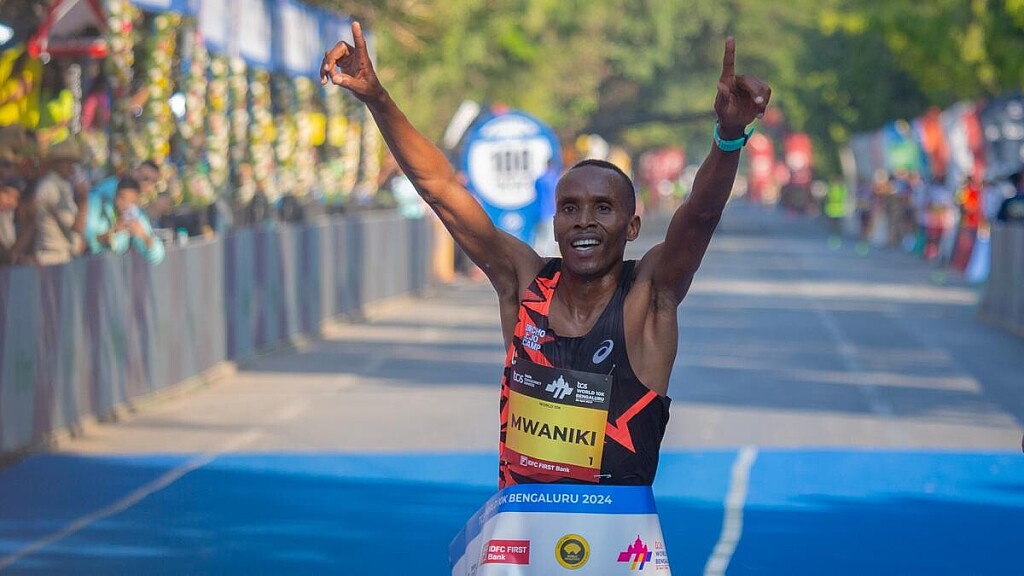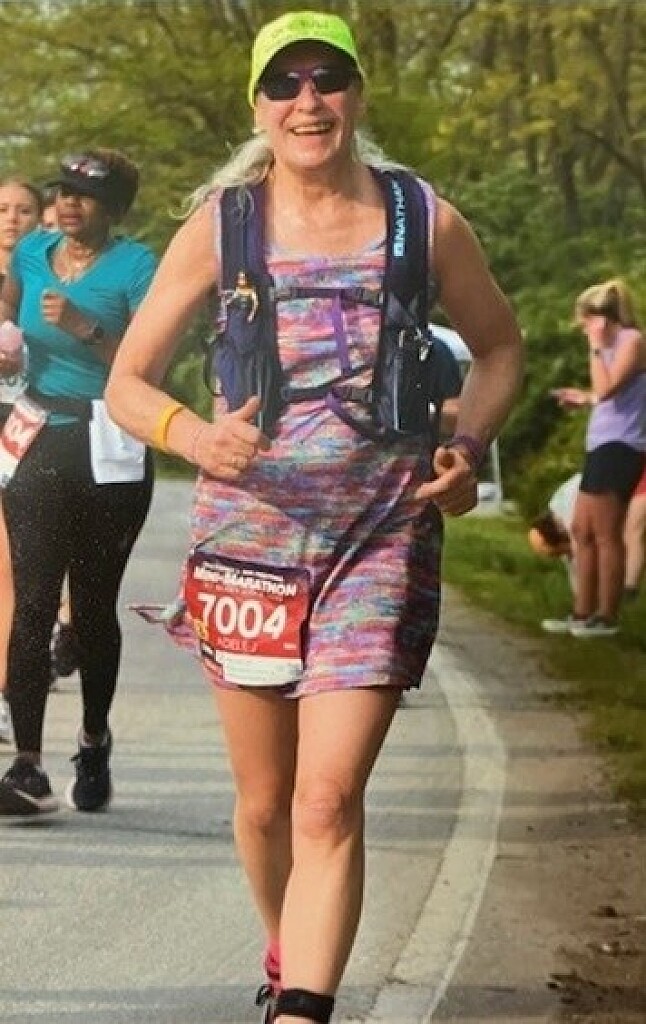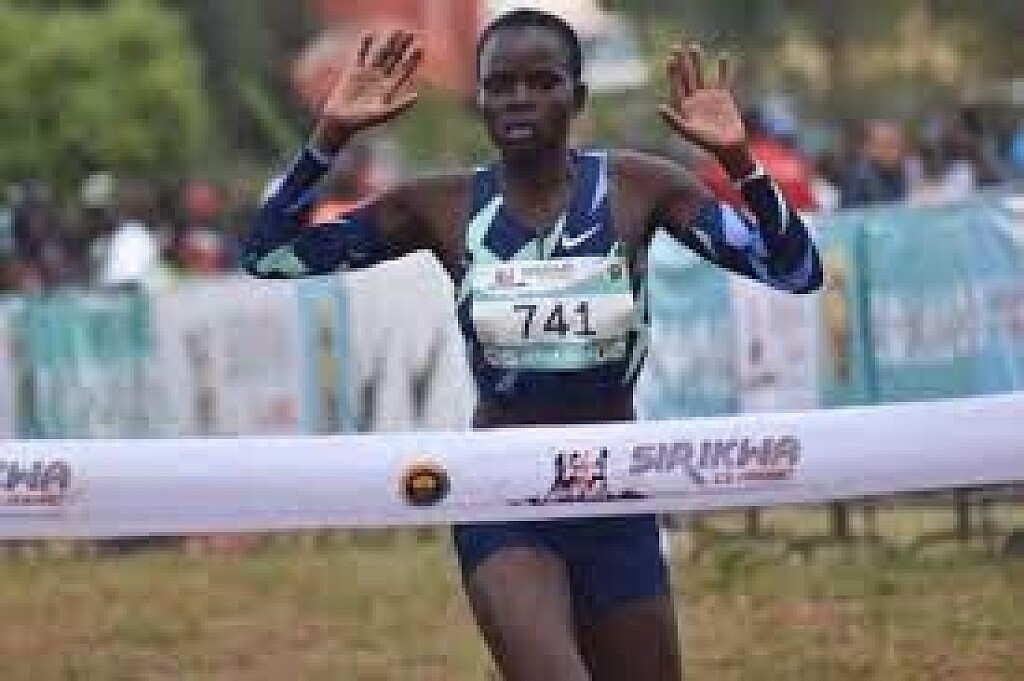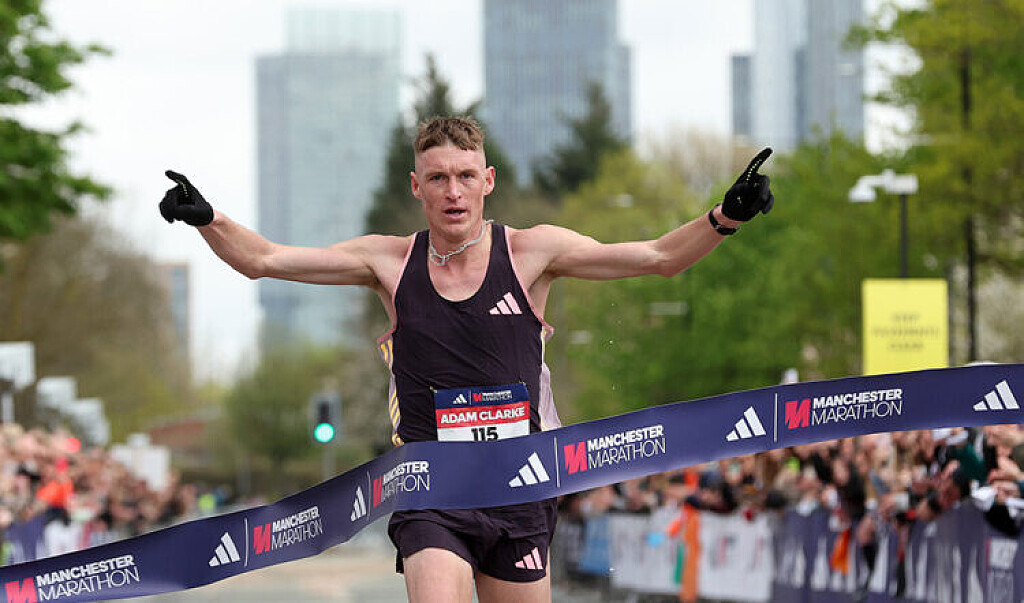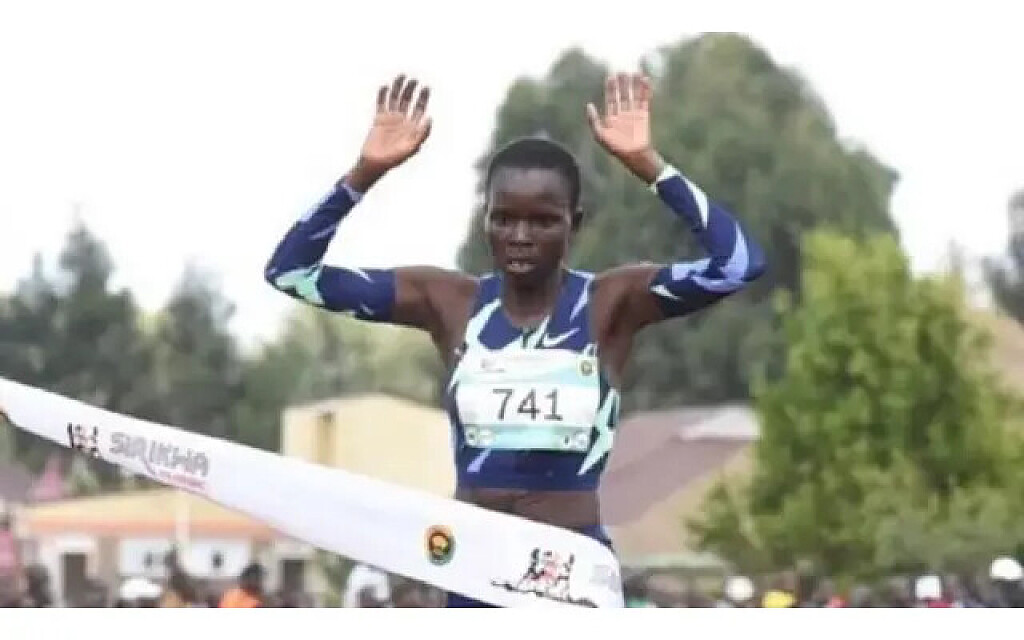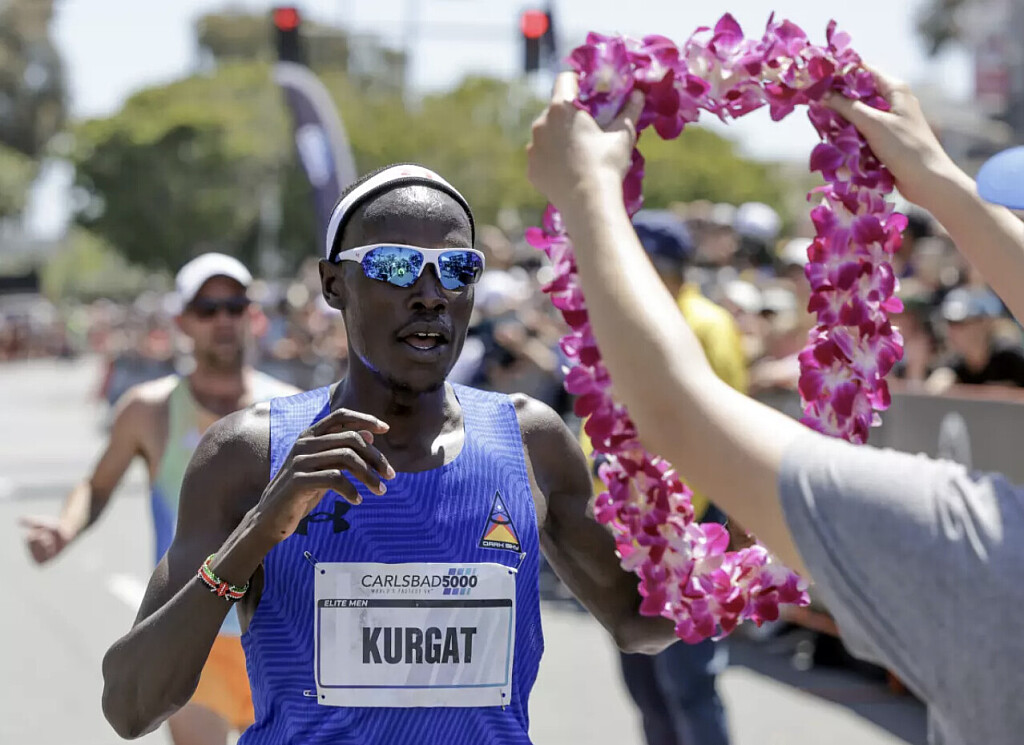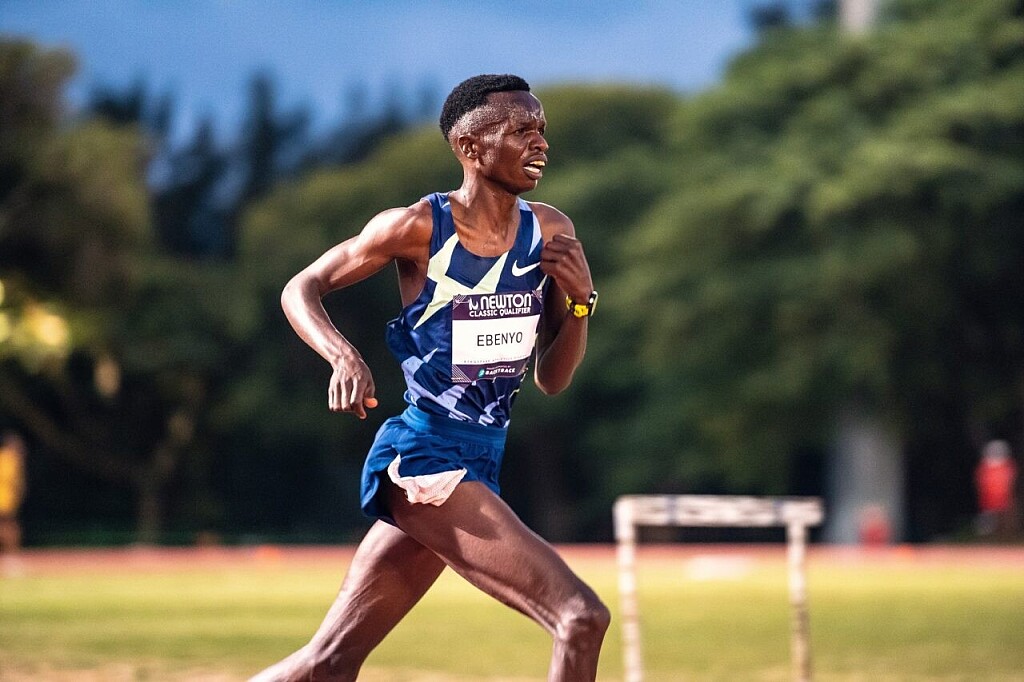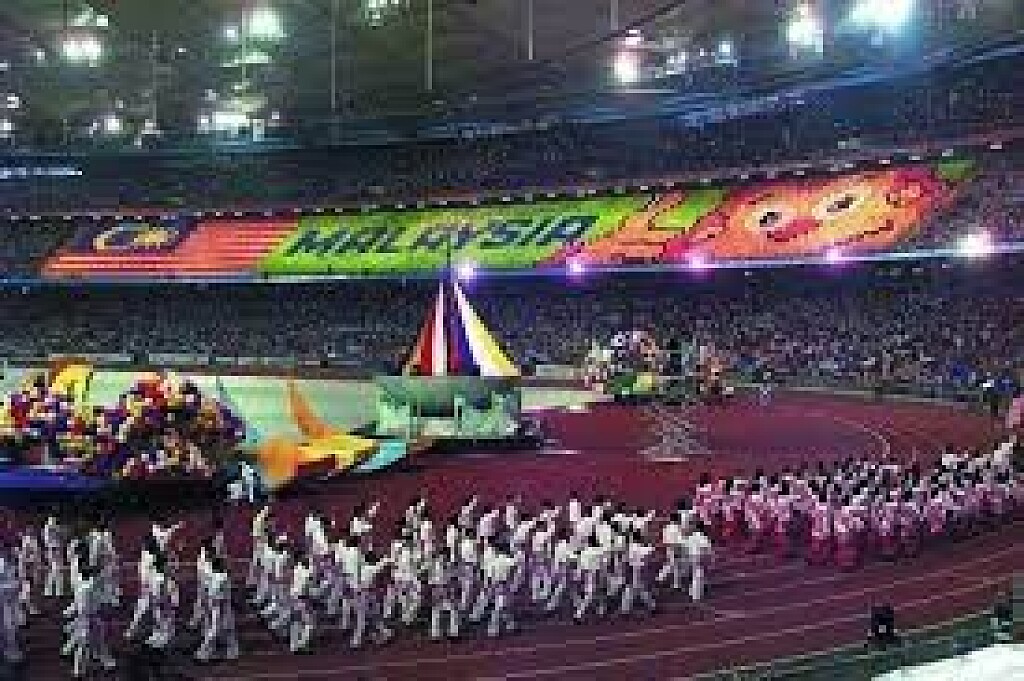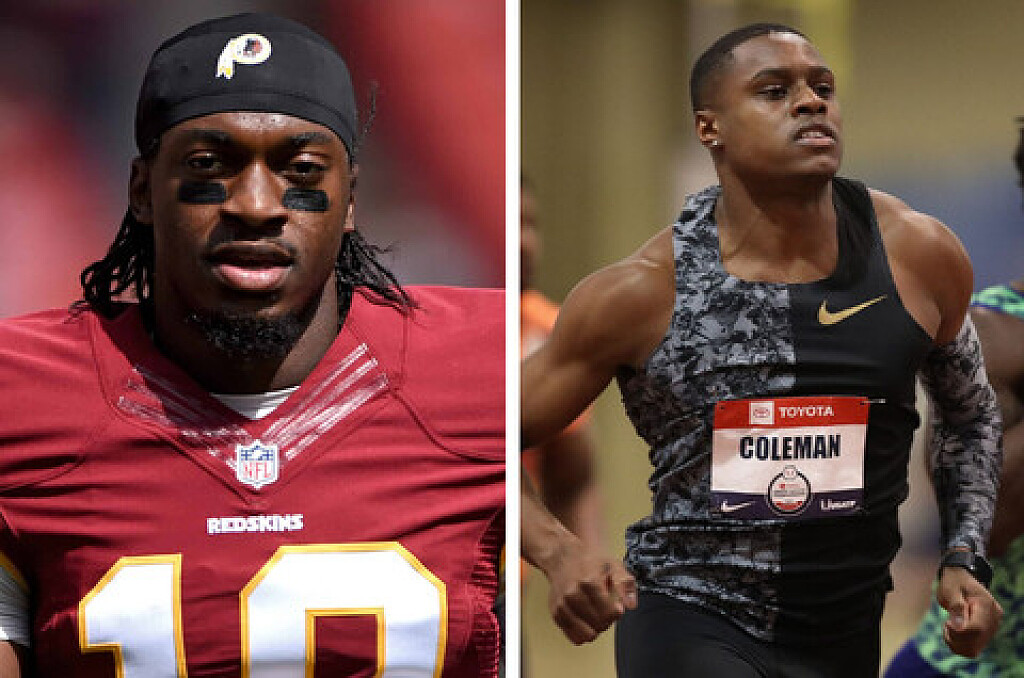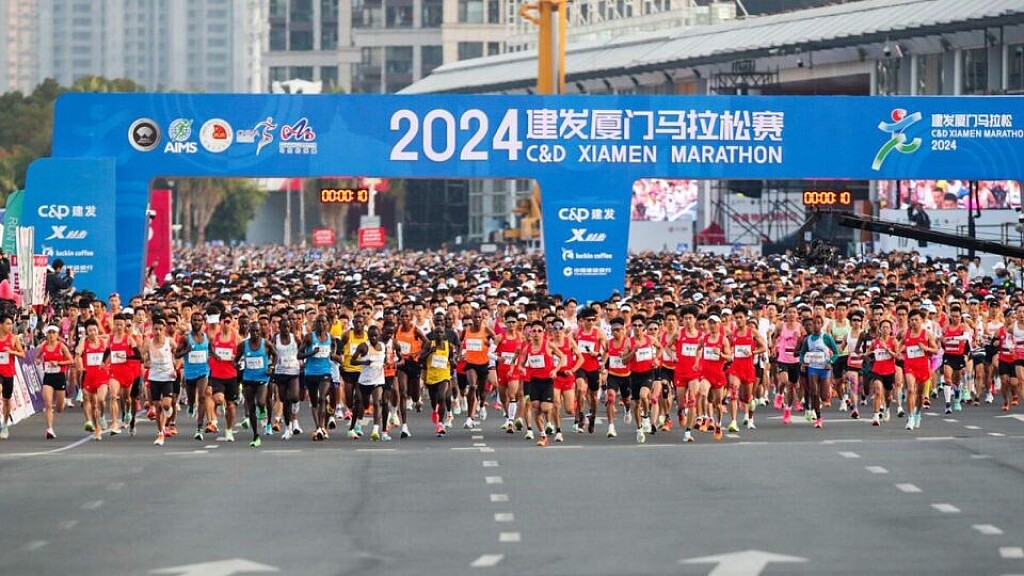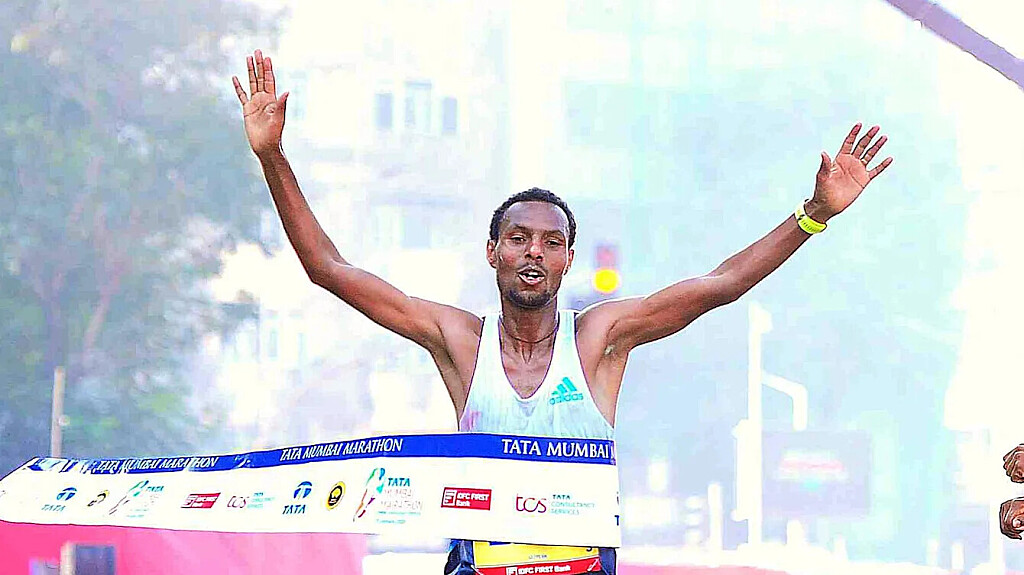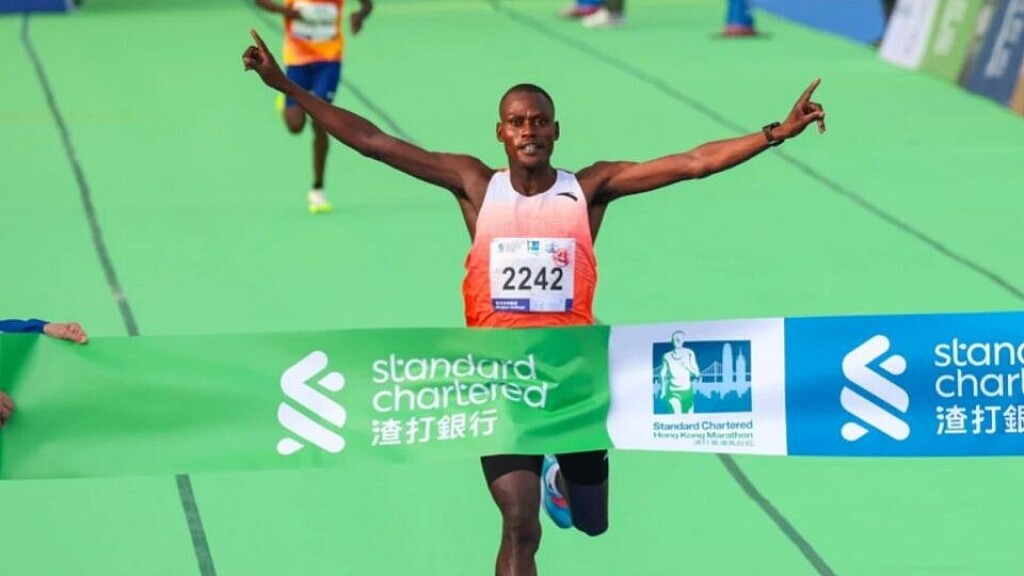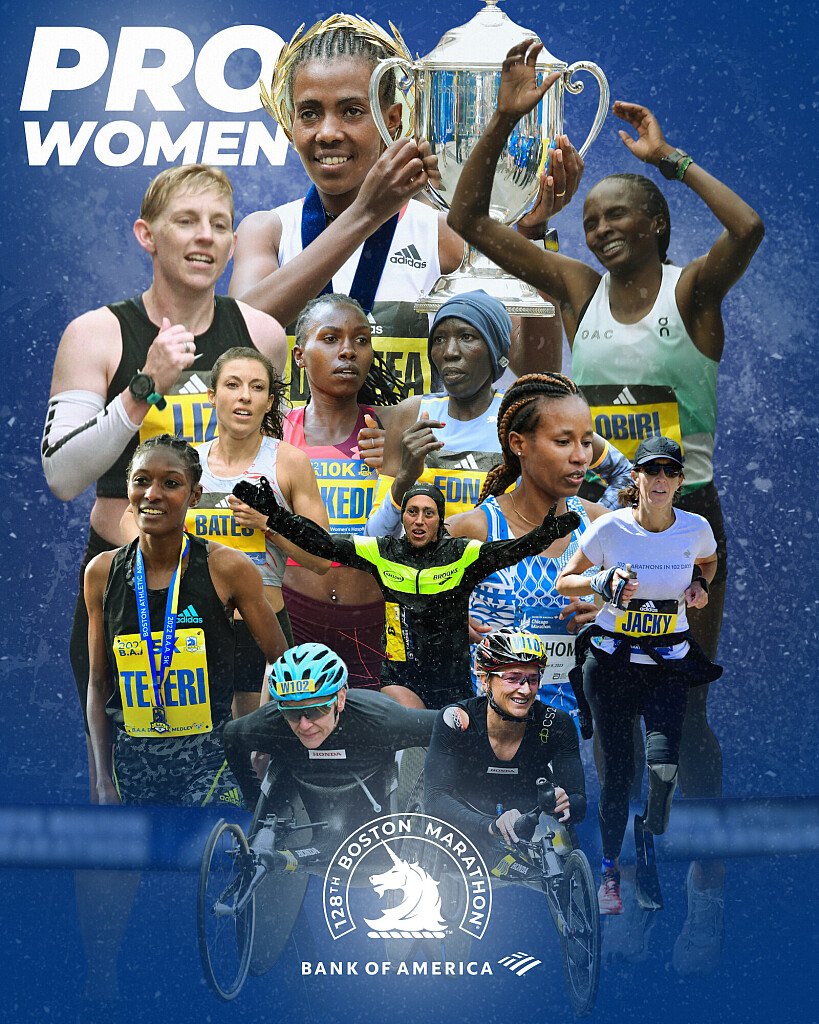Running News Daily
Running News Daily is edited by Bob Anderson. Send your news items to bob@mybestruns.com Advertising opportunities available. Train the Kenyan Way at KATA Kenya and Portugal owned and operated by Bob Anderson. Be sure to catch our movie A Long Run the movie KATA Running Camps and KATA Potato Farms - 31 now open in Kenya! https://kata.ke/
Index to Daily Posts · Sign Up For Updates · Run The World Feed
Articles tagged #India
Today's Running News
Kenyans Matata and Rengeruk Capture Titles at Vedanta Delhi Half Marathon
Abhishek Pal and Seema Yadav lead Indian runners
New Delhi, October 12, 2025 — Kenya’s Alex Nzioka Matata and Lilian Kasait Rengeruk delivered commanding performances to sweep the men’s and women’s crowns at the 20th Vedanta Delhi Half Marathon, a World Athletics Gold Label event. It marked only the second Kenyan double in race history, the first coming in 2006.
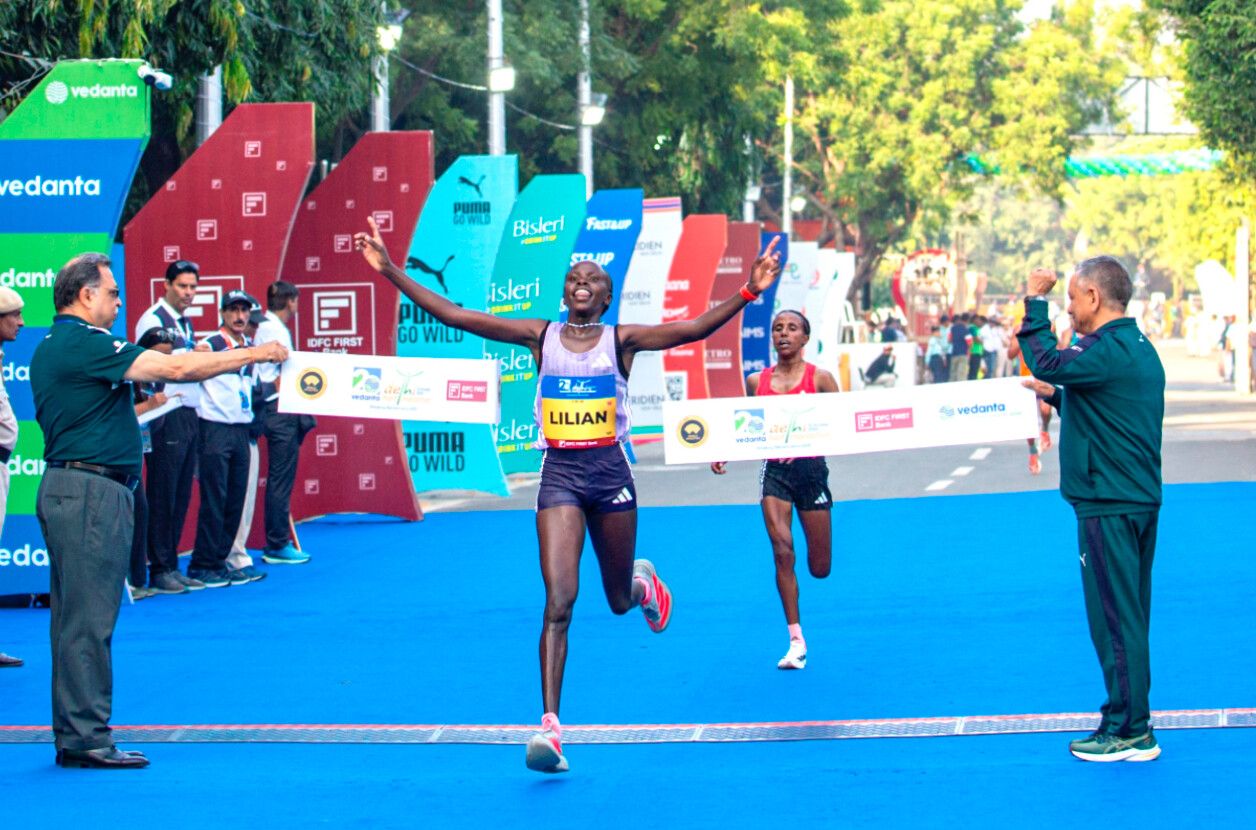
Matata, runner-up in 2024, dominated from midway, running solo to victory in 59:50, his fifth half-marathon win of the year. The RAK Half Marathon champion, who boasts a 59:20 personal best, led through 10K in 28:43 alongside compatriot Reuben Rono before breaking clear. Ethiopia’s Bayelign Teshager (1:00:22) and Kenyan James Kipkogei (1:00:25) completed the podium.
“Last year I was number two, so my goal was to do better,” Matata said. “The weather was good, I knew the course, and I ran without pressure—just to win.”
In the women’s race, Rengeruk used her experience to outkick Ethiopia’s 19-year-old Melal Biratu in a thrilling sprint, clocking 1:07:20 to win by one second. Fellow Ethiopian Mulat Tekle took third in 1:07:28. The 2023 champion Alemaddis Eyayu finished seventh (1:10:51).
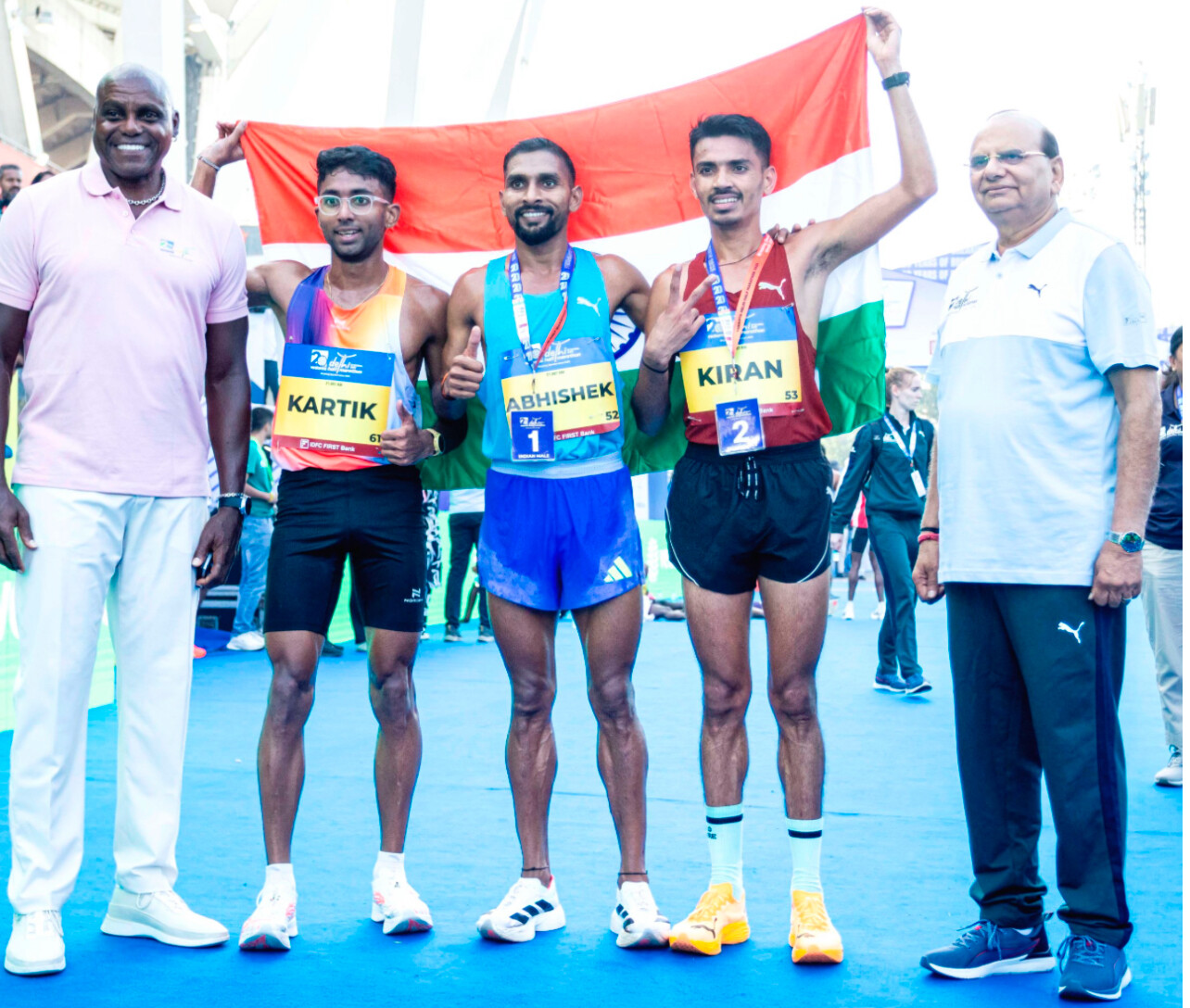
“It was tough, but I felt strong and told myself to stay patient and fight to the finish,” said Rengeruk, who recently returned from injury.
Biratu, pleased with her debut effort, added: “The humidity was higher than expected, but I’m happy with my personal best.”
Both winners earned US$27,000 from a total prize purse of US$260,000.
Login to leave a comment
Vedanta Delhi Half Marathon
The Airtel Delhi Half Marathon is a haven for runners, creating an experience, that our citizens had never envisaged. The streets of Delhi converted to a world-class running track. Clean, sanitized road for 21.09 kms, exhaustive medical support system on the route, timing chip for runners, qualified personnel to ensure smooth conduct of the event across departments. The race...
more...A guide to the World Athletics Championships in Tokyo
Thousands of the world’s best athletes will head to Japan in September for the World Athletics Championships Tokyo 25.
The 20th edition of this prestigious competition will star more than 2000 athletes from some 200 countries as they compete for medals across 49 events during nine days of action from 13-21 September.
Which events are contested at the World Athletics Championships?
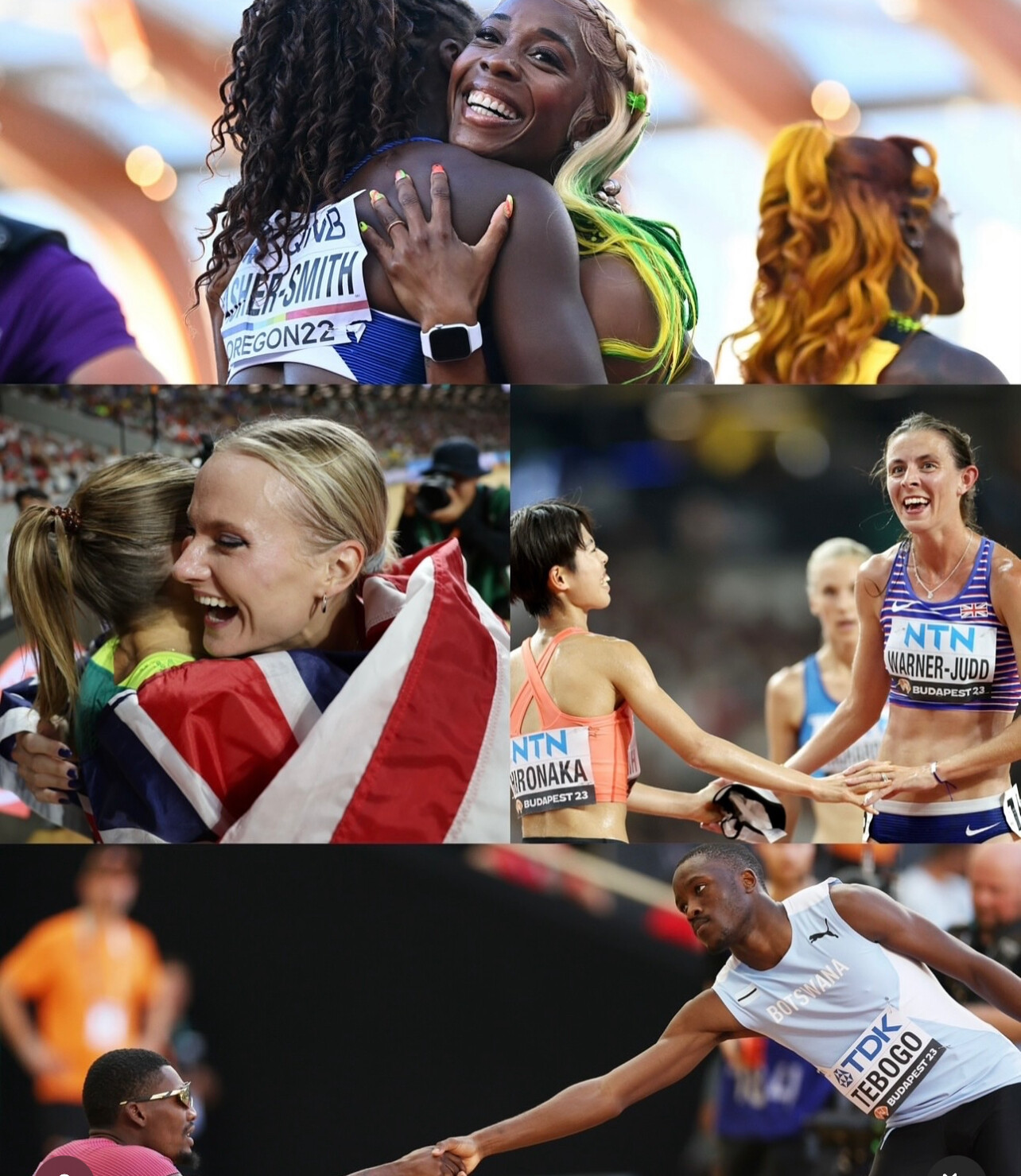
There are 49 events on the programme for the World Athletics Championships Tokyo 25, meaning 147 medals will be awarded across the nine action-packed days of competition.
There are an equal number of disciplines for women and men – 24 each and one mixed event.
The disciplines are:
• 100m – women and men• 200m – women and men• 400m – women and men• 800m – women and men• 1500m – women and men• 5000m – women and men• 10,000m – women and men• Marathon – women and men• 3000m steeplechase – women and men• 100m hurdles – women• 110m hurdles – men• 400m hurdles – women and men• heptathlon – women• decathlon – men• high jump – women and men• pole vault – women and men• long jump – women and men• triple jump – women and men• shot put – women and men• discus – women and men• hammer – women and men• javelin – women and men• 20km race walk – women and men• 35km race walk – women and men• 4x100m relay – women and men• 4x400m relay – women, men and mixed
Learn more about the various events on our dedicated disciplines page.
How do athletes qualify and gain selection for the World Athletics Championships Tokyo 25?
The qualification system is based on a combination of entry standards and world rankings. The qualifying window for the marathon was 5 November 2023 until 4 May 2025. For the 10,000m, 20km race walk, 35km race walk, combined events and relays, the window runs from 25 February 2024 to 24 August 2025. For all other events, entry standards can be achieved from 1 August 2024 to 24 August 2025.
The World Athletics Relays Guangzhou 25 was a qualifying event for the relays, with the top 14 teams in each discipline securing their place at the World Championships.
The Road to Tokyo online tool is designed to help athletes, fans and media track the qualification process. Searchable by event, country and qualification status, the tool provides a real-time view of each event over the course of the qualification period.
The tool does not, and will not, indicate which athletes have been selected for entry by their member federation. Final entries will be published nearer to the time of the World Championships.
Will athletes win prize money?
Individual athletes and relay teams will win prize money at the World Athletics Championships Tokyo 25. There is a total prize money pot of US$8,498,000.
Individuals1st US$70,0002nd US$35,0003rd US$22,0004th US$16,0005th US$11,0006th US$70007th US$60008th US$5000
Teams1st US$80,0002nd US$40,0003rd US$20,0004th US$16,0005th US$12,0006th US$80007th US$60008th US$4000
There is also a world record bonus of US$100,000.
Which athletes will be competing?
The world’s best athletes – including global champions and world record-holders – will be competing at the World Athletics Championships Tokyo 25.
The names of the athletes who will be there will not be certain until the qualifying window closes and nations select their teams.
Champions from the last edition of the World Championships in Budapest in 2023 include:
• Sweden’s world pole vault record-holder Mondo Duplantis• Kenya’s world 1500m record-holder Faith Kipyegon• USA’s double sprint champion Noah Lyles• Ukraine’s world high jump record-holder Yaroslava Mahuchikh• USA’s world shot put record-holder Ryan Crouser• Dutch Olympic and world 400m hurdles medallist Femke Bol• India’s Tokyo Olympic javelin champion Neeraj Chopra• Venezuela’s world triple jump record-holder Yulimar Rojas• Norwegian multiple world record-holder Jakob Ingebrigtsen• Japan’s Olympic javelin champion Haruka Kitaguchi
by World Athletics
Login to leave a comment
Delhi Half Marathon Returns for 20th Edition on October 12, 2025
The 2025 edition of the Delhi Half Marathon is set to light up the streets of India’s capital on October 12, with the iconic Jawaharlal Nehru Stadium serving as both the start and finish point. Celebrating its 20th anniversary, the event remains one of Asia’s premier road races, having earned World Athletics Gold Label status and certification from the Association of International Marathons and Distance Races (AIMS).
At Wednesday’s official launch, former Indian men’s hockey captain and current junior team coach PR Sreejesh, a two-time Olympic bronze medallist, helped usher in the milestone edition.
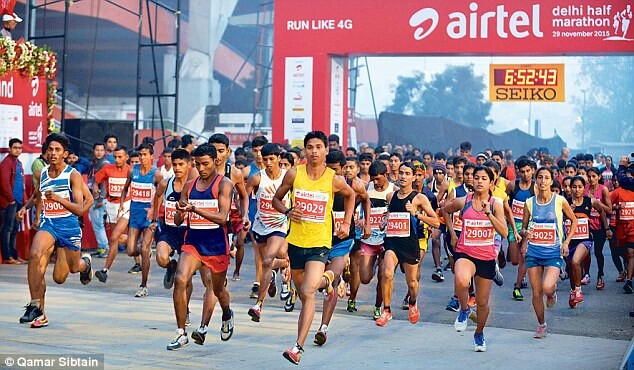
Registration opened July 17 for all race categories—including the Half Marathon, Open 10K, Great Delhi Run, Senior Citizens’ Run, and Champions with Disability—and closes on September 19.
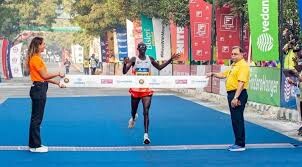
Since its inaugural running in 2005, the Delhi Half Marathon has drawn some of the world’s top distance runners. The 2024 men’s elite title was claimed by Joshua Cheptegei of Uganda, the reigning Olympic 10,000m champion, with a blistering 59:46. On the women’s side, Eilish McColgan of Great Britain took the crown. India’s top finishers were Sawan Barwal and Lili Das, who will likely return with eyes on the national podium.
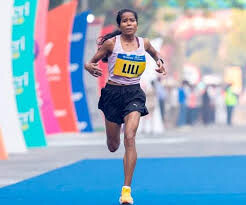
The course records still stand from a memorable 2020 edition: Amedework Walelegn of Ethiopia set the men’s mark at 58:53, while Yalemzerf Yehualaw, also from Ethiopia, holds the women’s record with 1:04:46.
Even marathon legend Eliud Kipchoge is part of the event’s rich history—he won the men’s elite race back in 2016.
With world-class athletes, enthusiastic local support, and a flat, fast course, the Delhi Half Marathon continues to be a must-run event for elites and amateurs alike.
by Boris Baron
Login to leave a comment
Vedanta Delhi Half Marathon
The Airtel Delhi Half Marathon is a haven for runners, creating an experience, that our citizens had never envisaged. The streets of Delhi converted to a world-class running track. Clean, sanitized road for 21.09 kms, exhaustive medical support system on the route, timing chip for runners, qualified personnel to ensure smooth conduct of the event across departments. The race...
more...Blind Runner, Clear Vision: Wilson Bii’s Nairobi Debut Fueled by Kenya Athletics Training Academy (KATA)
In a moving display of courage and transformation, Wilson Bii, a visually impaired Paralympian and Rio 2016 bronze medalist, made his road racing debut at the 2025 Nairobi City Marathon, taking on the half marathon along the scenic Nairobi Expressway.
For the 38-year-old Kenyan, long known for his prowess on the track, this was more than just a change in terrain — it marked a bold new chapter in a journey defined by resilience and reinvention.
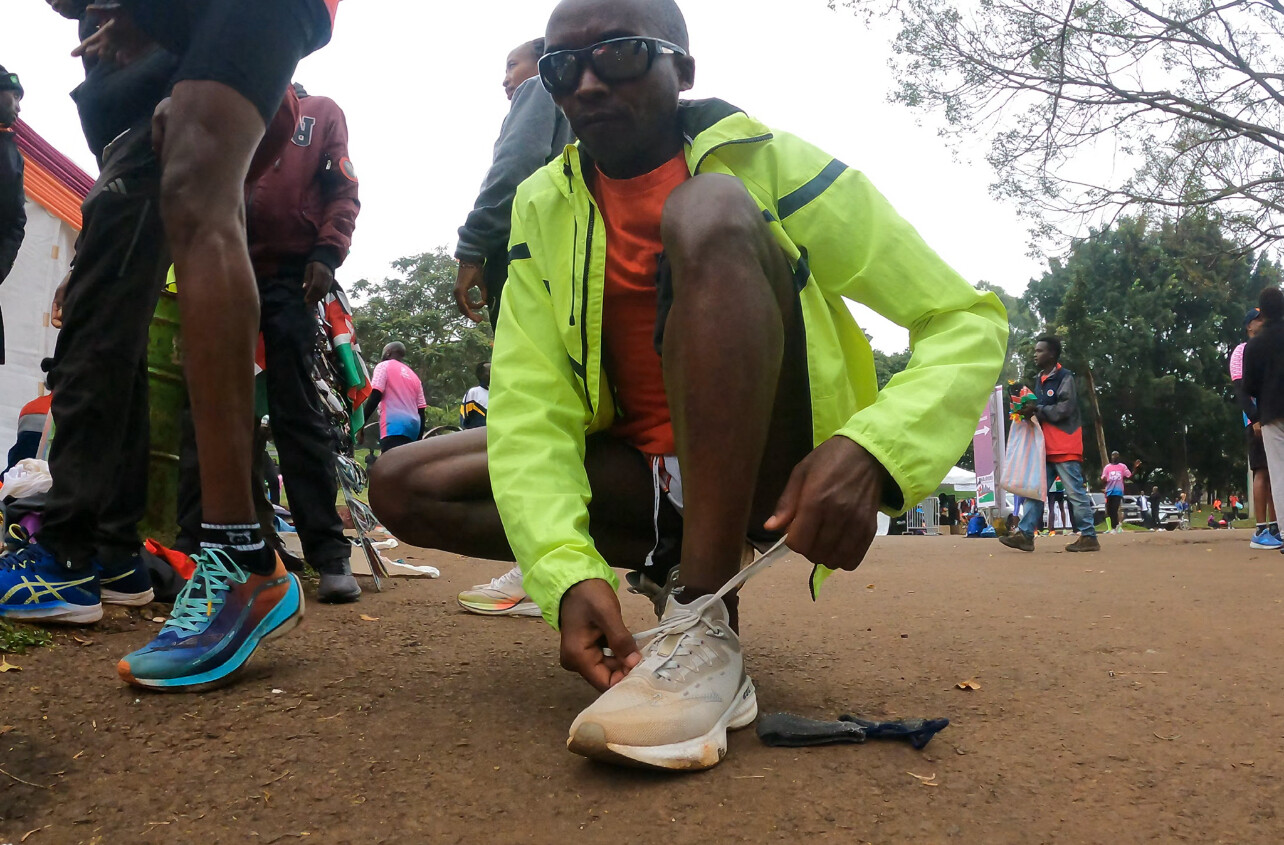
“This was my first time competing in a road race,” Bii said. “I’ve spent years on the track, but this year I decided to train for longer distances. I wanted to challenge myself in a new way, and I found purpose on the road.”
But the road that brought him here was far from easy. Bii had good eyesight until 2002, when a tragic road accident changed his life forever. Shattered glass from the crash severely damaged his eyes, ultimately leading to complete vision loss. Though devastated, Bii refused to give in. Instead, he redirected his focus — and chose to run under the Paralympic banner.
“I never gave up,” he said. “Running became my way forward.”
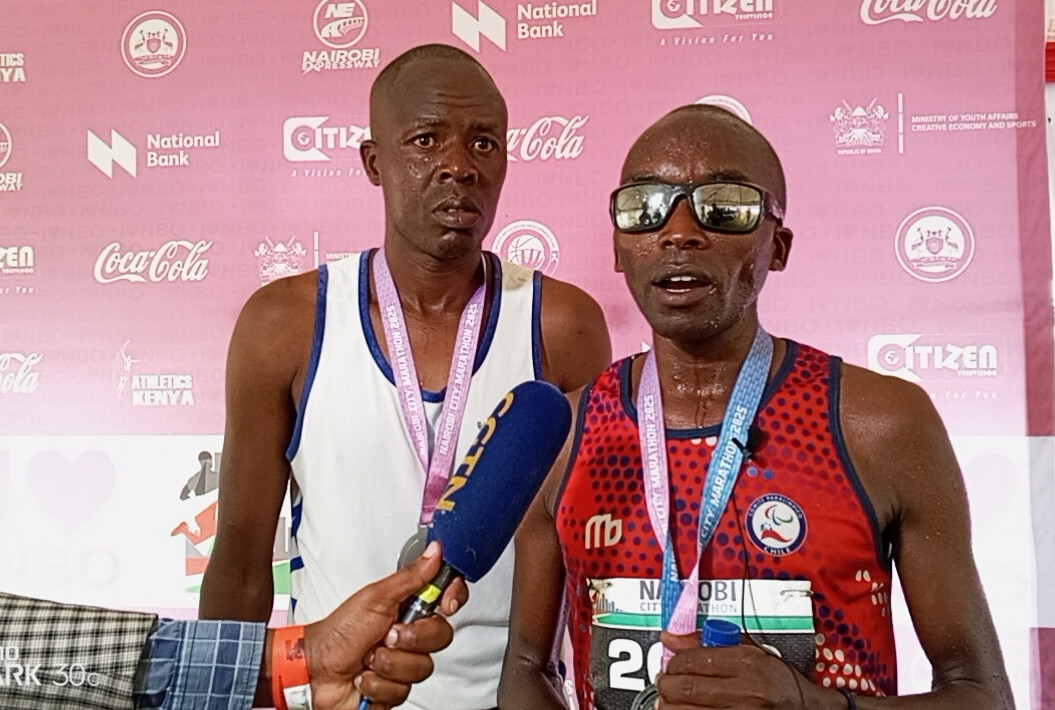
Today, Bii trains with the Kenya Athletics Training Academy (KATA), a grassroots initiative founded by Bob Anderson, the American running pioneer best known for launching Runner’s World magazine in 1966. Anderson, who helped ignite the global running boom through journalism and advocacy, now devotes his time to supporting emerging Kenyan talent.
At age 49, Anderson himself set a personal best in the half marathon (clocking 1:19:17) — an individual pursuit that reflects the very mindset he seeks to instill in others. Through KATA, he now oversees a network of 21 high-altitude training camps across Kenya, providing coaching, structure, and opportunity to athletes from underserved communities.
Bii trains at one of these camps in Sirikwa, Kuresoi North in Nakuru County — in the heart of the Rift Valley, where elevation, tradition, and grit continue to shape some of the world’s greatest endurance athletes.
Alongside his guide, Job Kiprono, Bii navigates training and racing with trust and precision.
“Kiprono has been my eyes for years. We move together, think together. We’re not just running for me — we’re running for both our families,” Bii shared.
He draws inspiration from the legacy of others. “When I saw how running changed Henry Wanyoike’s life, I knew I had to try. That’s why I came here today — to push myself and to inspire others who may feel forgotten.”
Bii now has his sights set on representing Kenya at the 2025 World Para Athletics Championships in India, after previously missing global events in Dubai and Morocco.
His guide, Kiprono, is appealing to Athletics Kenya and the National Paralympic Committee of Kenya to recognize the upcoming Belgut Road Race on July 24 as an official qualifier for para-athletes.
“If Belgut can be acknowledged, it will give athletes like Bii the opportunity we’ve waited for,” Kiprono said. “We want to earn our spot through performance, not politics.”
As Bob Anderson’s vision continues to take root across Kenya, athletes like Wilson Bii embody the mission: to empower through sport, to nurture overlooked potential, and to prove that running can restore far more than fitness — it can restore lives.
At the Nairobi City Marathon, Wilson Bii didn’t just finish a race — he reclaimed his momentum clocking 1:07:50 for the half marathon. From the wreckage of a 2002 accident to the fast-moving lanes of a 2025 half marathon, Bii now runs with a clarity of purpose. And behind him, a global legacy of running finds fertile ground in Kenya’s red soil — and in the courage of those who refuse to stop moving forward.
by Robert Kibet
Login to leave a comment
Billy Mills Turns 87 — A Running Legend Reflects on a Life of Purpose and Legacy
With wife Patricia by his side, the Olympic icon continues to inspire generations
On June 30, 2025, the legendary Billy Mills celebrated his 87th birthday, marking another chapter in a life defined by resilience, achievement, and unwavering purpose. His wife Patricia Mills, who has been his rock and closest partner for decades, shared a heartfelt message on social media:
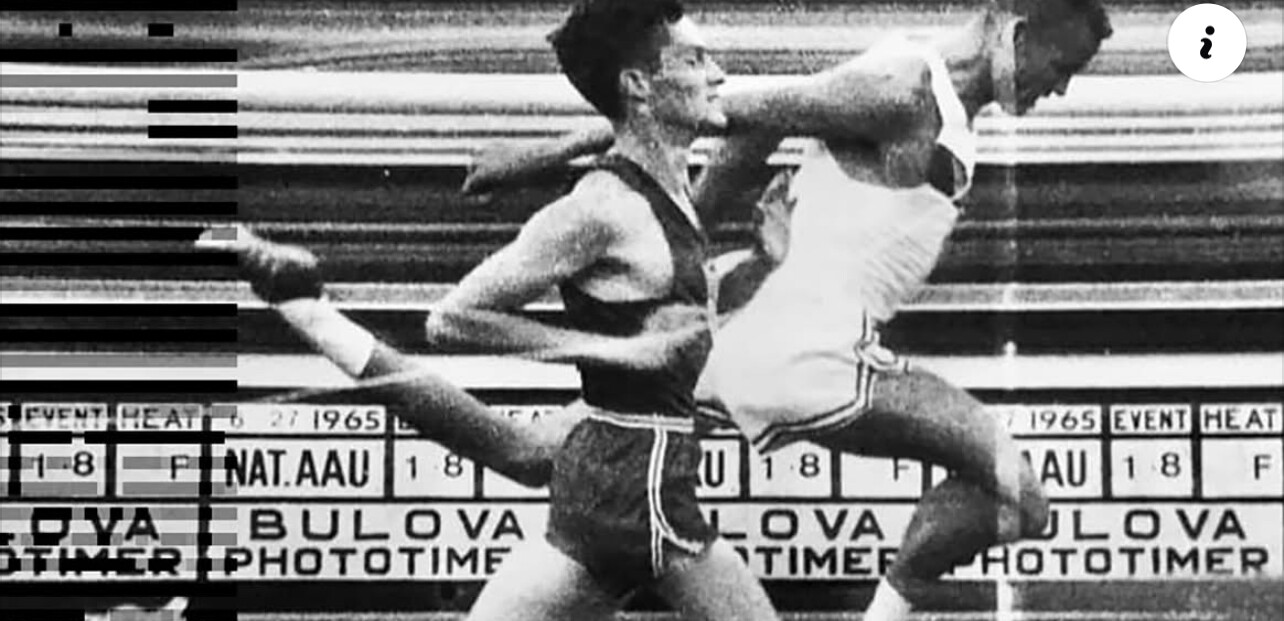
“Happy Birthday to Billy! What a journey he has had! 87 years! Thank you all for his birthday wishes.”
For the running world, Billy Mills remains one of the most powerful figures in the sport’s history. His astonishing gold medal victory in the 10,000 meters at the 1964 Tokyo Olympics is still considered one of the greatest upsets in Olympic track history. Mills, a member of the Oglala Lakota Nation, was a virtually unknown underdog when he surged past world record holders in the final stretch to win in 28:24.4—setting an Olympic record and becoming the only American man ever to win Olympic gold in the 10,000 meters.
But Mills’ legacy extends far beyond the track.
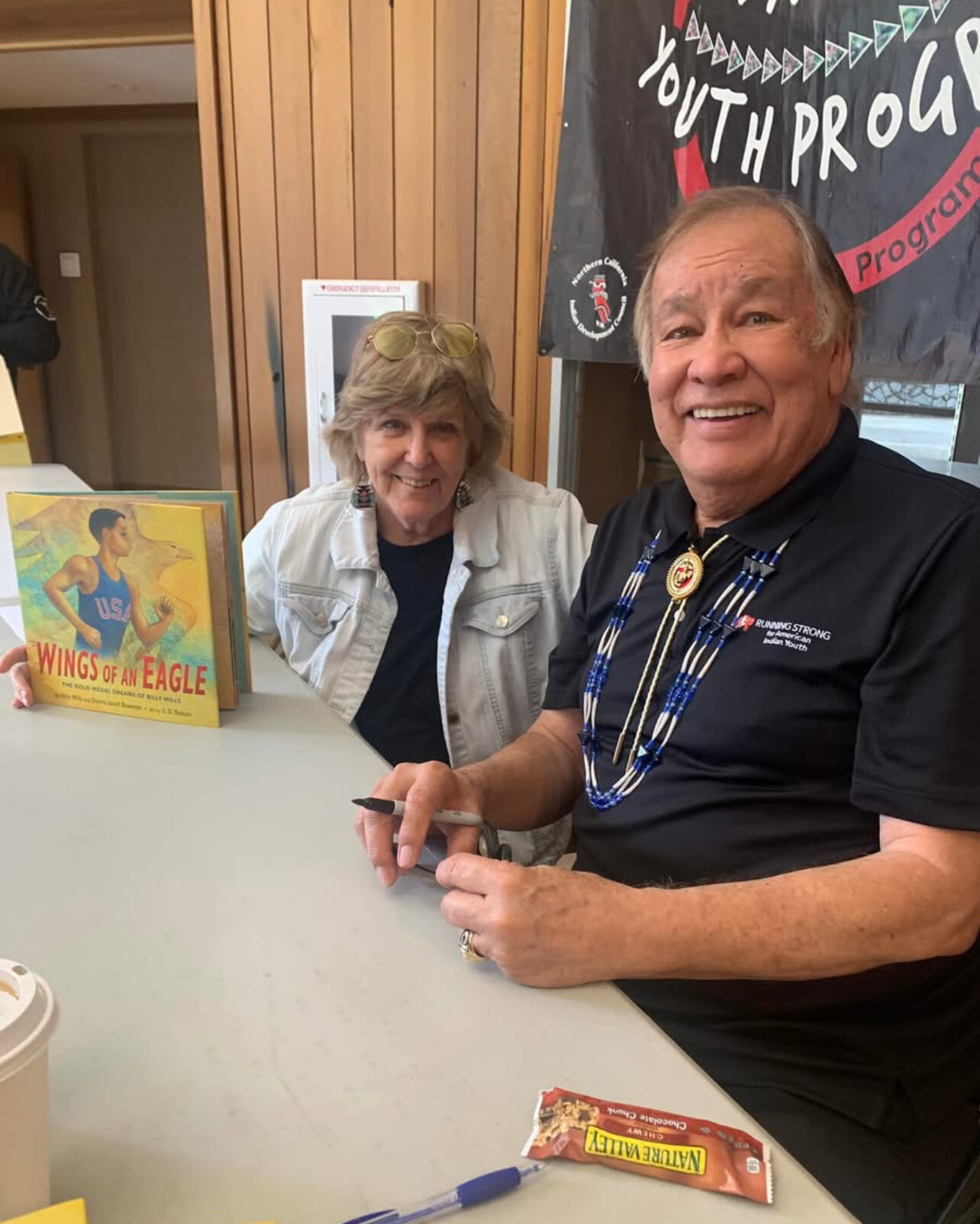
He has spent his post-competitive life as a motivational speaker, author, and advocate for Native American youth, co-founding Running Strong for American Indian Youth, an organization that supports wellness, education, and cultural preservation across the U.S.
Now at 87, Billy remains a symbol of what is possible when belief, determination, and heart align. His story has inspired generations of runners—elite and recreational alike—to push beyond what seems possible.
Still Leading in so many different ways
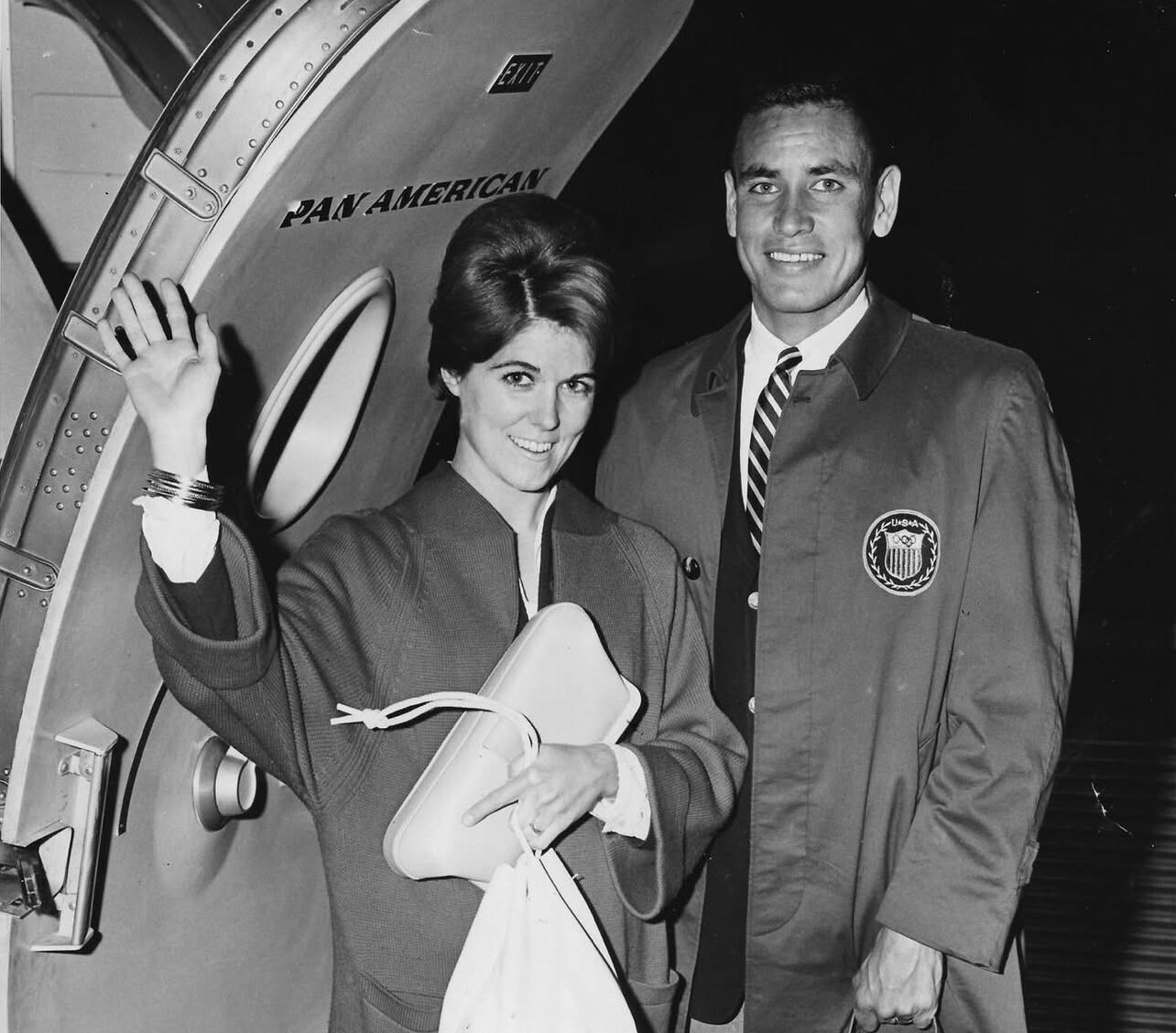
Whether through his speeches, interviews, or presence at events, Mills continues to uplift others. He and Patricia, married since 1962, have navigated decades of change together, and her love and support have always been central to Billy’s journey.
From the Olympic podium to today, Billy Mills exemplifies the spirit of the running community: perseverance, humility, and using one’s platform to make the world better.
Happy Birthday, Billy. Your stride still echoes.
by Boris Baron
Login to leave a comment
Fauja Singh: The World’s Oldest Marathoner Who Redefined Human Potential Part One
Fauja Singh, born on April 1, 1911, in Beas Pind, Punjab, British India, is widely celebrated as the world’s oldest marathon runner. His remarkable journey from a quiet farming life to global athletic acclaim has inspired millions, proving that age is no barrier to endurance, purpose, or reinvention.
From Tragedy to Triumph
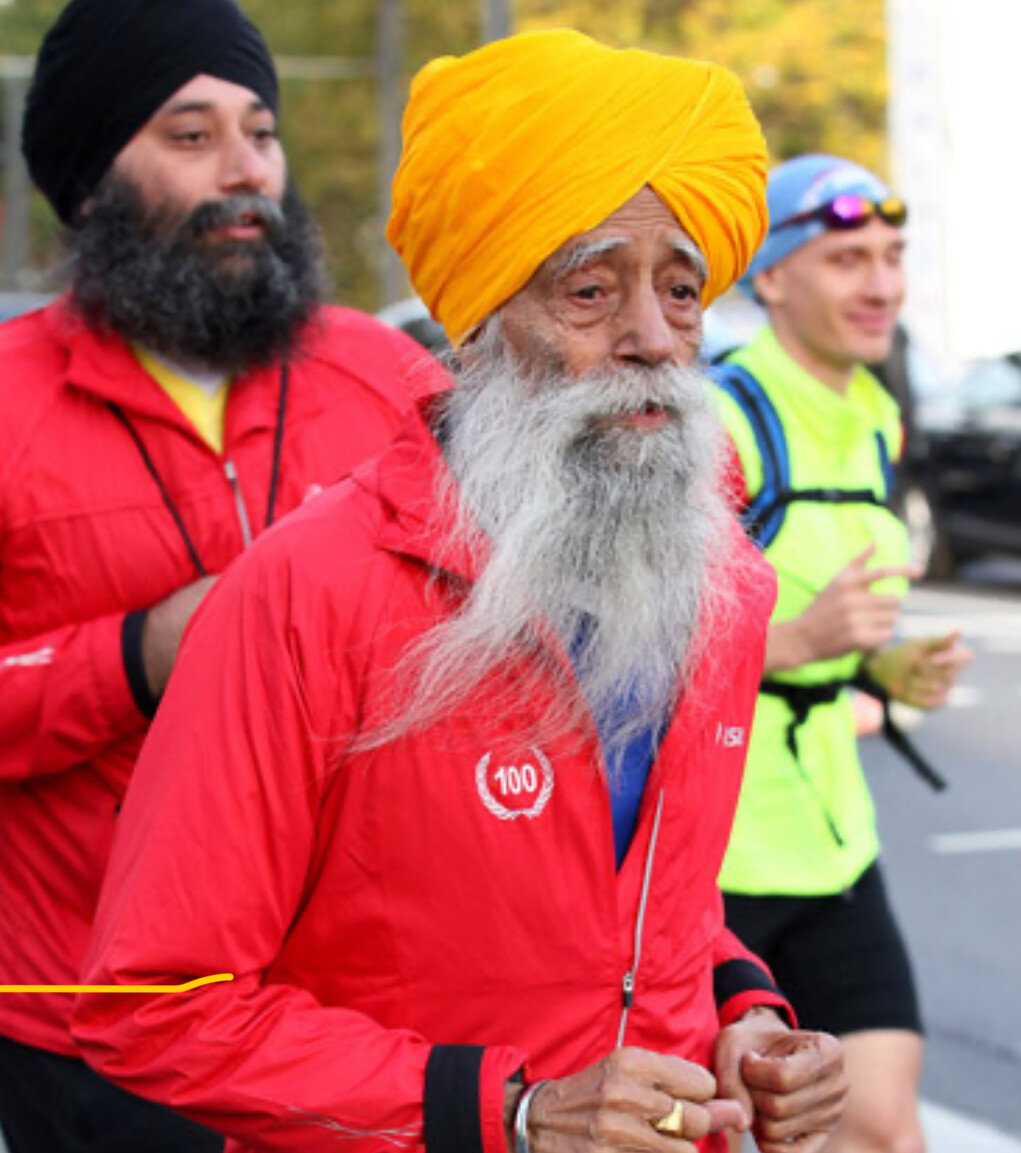
Singh’s path to running began in the wake of personal tragedy. After losing his wife in 1992 and witnessing the death of his son in 1994, he moved to London in the late 1990s. At 89, he took up running as a way to cope with grief and rediscover purpose. In 2000, he completed his first marathon in London, launching a career that would span over a decade.
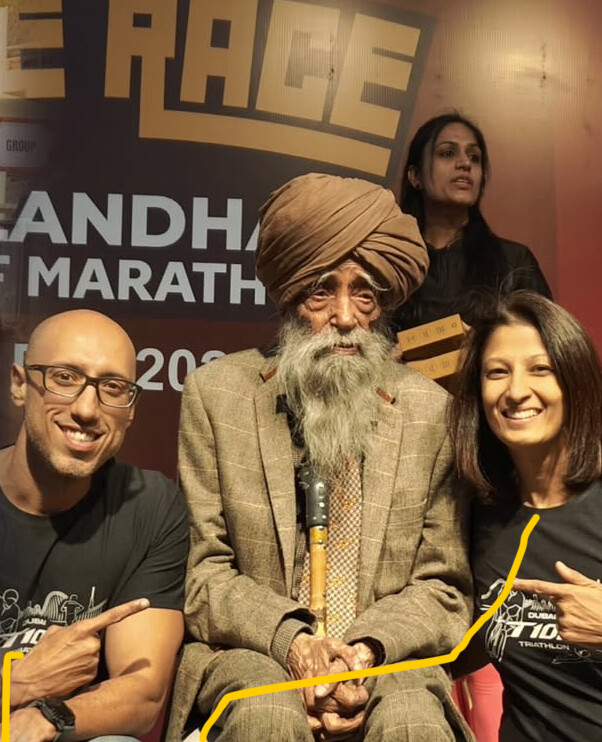
A Record-Breaking Career
Singh completed nine full marathons between 2000 and 2011, including events in London, Toronto, and New York. His personal best was 5:40 at the 2003 Toronto Waterfront Marathon, setting a world record for the 90+ age group. At 100, he became the first centenarian to complete a marathon, finishing the 2011 Toronto Waterfront Marathon in 8:11:06. Though Guinness World Records did not certify the feat due to the absence of a birth certificate, Singh’s accomplishment remains a historic milestone.
Final Race and Continued Inspiration
Singh ran his final competitive race on February 24, 2013, completing a 10km event at the Hong Kong Marathon in 1:32:28, just weeks before his 102nd birthday. Though retired from competition, he continued to jog daily and participate in community events, promoting health and fitness.
Legacy Beyond the Finish Line
Singh’s influence extends beyond his athletic achievements. He was featured in Adidas’ “Impossible is Nothing” campaign alongside icons like Muhammad Ali and David Beckham. In 2015, he was awarded the British Empire Medal for services to sport and charity. His life story has been chronicled in the biography Turbaned Tornado and the children’s book Fauja Singh Keeps Going.
A Life of Simplicity and Purpose
Singh attributes his longevity and vitality to a simple vegetarian diet, abstaining from smoking and alcohol, and maintaining a positive outlook. He once said, “The first 20 miles are not difficult. As for the last six miles, I run while talking to God.”
Fauja Singh’s journey exemplifies the boundless potential of the human spirit. His legacy continues to inspire individuals worldwide to pursue their passions, regardless of age.
by Boris Baron
Login to leave a comment
Fast Finishes in Indy as Hacker and Andrews Claim 5K Crowns
On a crisp morning in downtown Indianapolis, the 2025 USATF 5 km Championships delivered thrilling finishes and fast times, with Olin Hacker and Josette Andrews emerging as national champions.
In the men’s race, Olin Hacker of HOKA Northern Arizona Elite made a decisive move in the final kilometer, pulling away from a tightly packed lead group. His surge proved untouchable, and he crossed the finish line in 13:31.93 to claim the national title. Casey Clinger of Brooks was just a stride behind in 13:33.04, with Hacker’s teammate Ahmed Muhumed rounding out the podium in 13:36.88—completing a trio of sub-13:40 finishers.
Men’s Top 10 Finishers
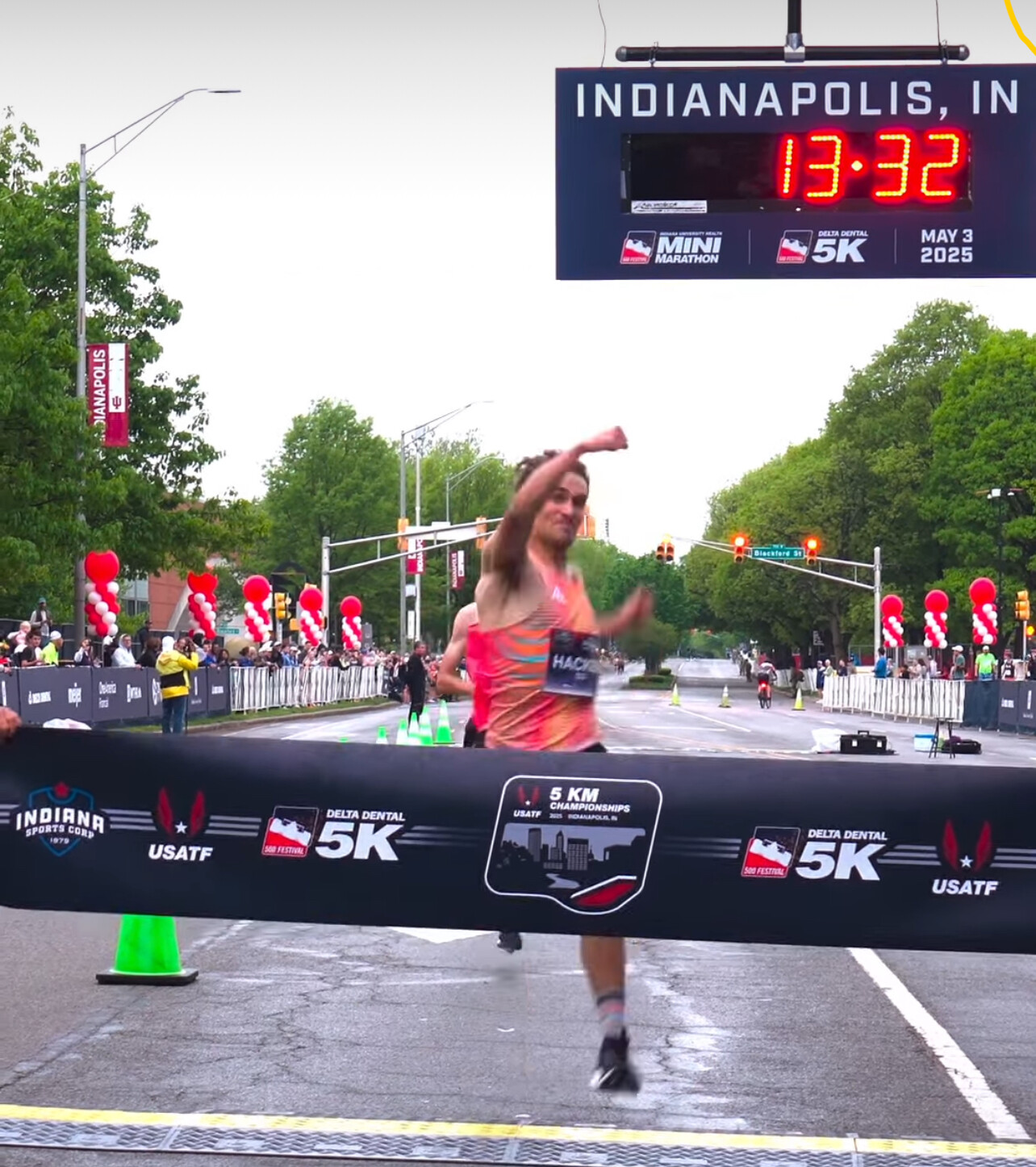
1. Olin Hacker (HOKA NAZ Elite) – 13:31.93
2. Casey Clinger (Brooks) – 13:33.04
3. Ahmed Muhumed (HOKA NAZ Elite) – 13:36.88
4. Morgan Beadlescomb (adidas) – 13:39.50
5. Graham Crawford (Reebok) – 13:42.10
6. Reed Fischer (Tinman Elite) – 13:44.75
7. Sam Chelanga (Nike) – 13:47.30
8. Ben Flanagan (On Running) – 13:49.60
9. Emmanuel Bor (U.S. Army) – 13:52.25
10. Eric Avila (HOKA) – 13:54.80
In the women’s race, Josette Andrews showed impressive strength and timing, kicking hard in the final stretch to take the win in 15:12.34. Emily Infeld of Nike followed closely in 15:14.50, and Karissa Schweizer of Bowerman Track Club secured third in 15:16.75, as the top trio pushed each other to the line.
Women’s Top 10 Finishers
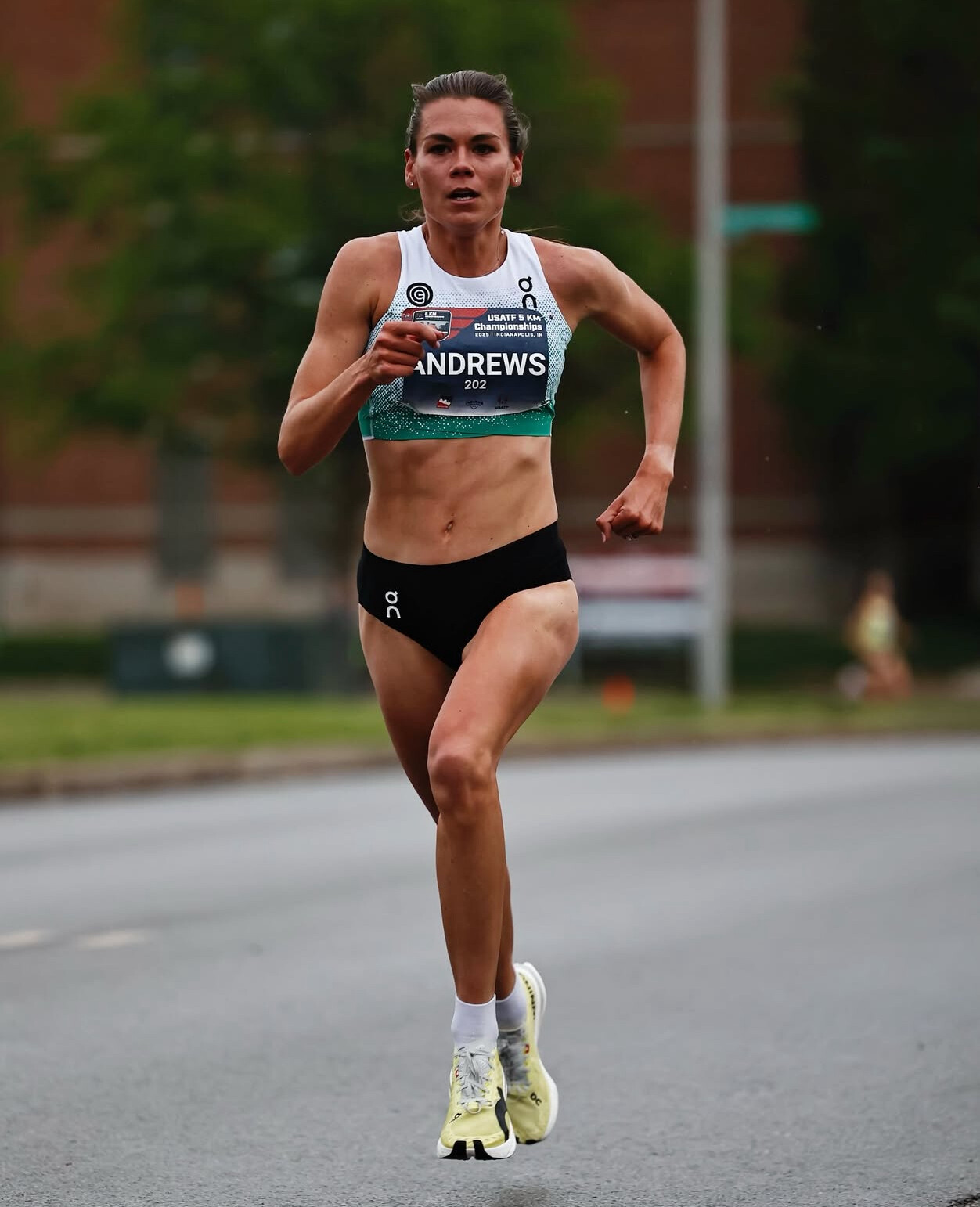
1. Josette Andrews – 15:12.34
2. Emily Infeld (Nike) – 15:14.50
3. Karissa Schweizer (Nike Bowerman TC) – 15:16.75
4. Elly Henes (adidas) – 15:19.20
5. Rachel Schneider (Under Armour) – 15:22.85
6. Abbey Cooper (New Balance) – 15:25.40
7. Molly Seidel (Saucony) – 15:28.95
8. Vanessa Fraser (Nike) – 15:31.50
9. Emily Lipari (adidas) – 15:34.05
10. Natosha Rogers (Hansons-Brooks) – 15:36.60

The performances in Indianapolis set the tone for what promises to be a fast and competitive summer racing season across the U.S. road circuit.
by Boris Baron
Login to leave a comment
OneAmerica 500 Festival Mini-Marathon
The mission of the 500 Festival is to produce life-enriching events and programs while celebrating the spirit and legacy of the Indianapolis 500 and fostering positive impact on the city of Indianapolis and state of Indiana. As an organization providing multiple events and programs, many of which are free to attend and impact over 500,000 people annually, our mission to...
more...Robert Garside: The Man Who Ran Around the World
An Epic Journey of Endurance and Determination
Robert Garside, known as “The Runningman,” holds the distinction of being the first person to run around the world—a feat recognized by Guinness World Records. His journey began on October 20, 1997, at India Gate in New Delhi, India, and concluded at the same location on June 13, 2003. Over 2,062 days, Garside traversed approximately 35,000 miles across 29 countries and six continents.
The run was fraught with challenges, including arrests, injuries, and skepticism from the running community. Despite these obstacles, Garside meticulously documented his journey, providing evidence that eventually led to official recognition.
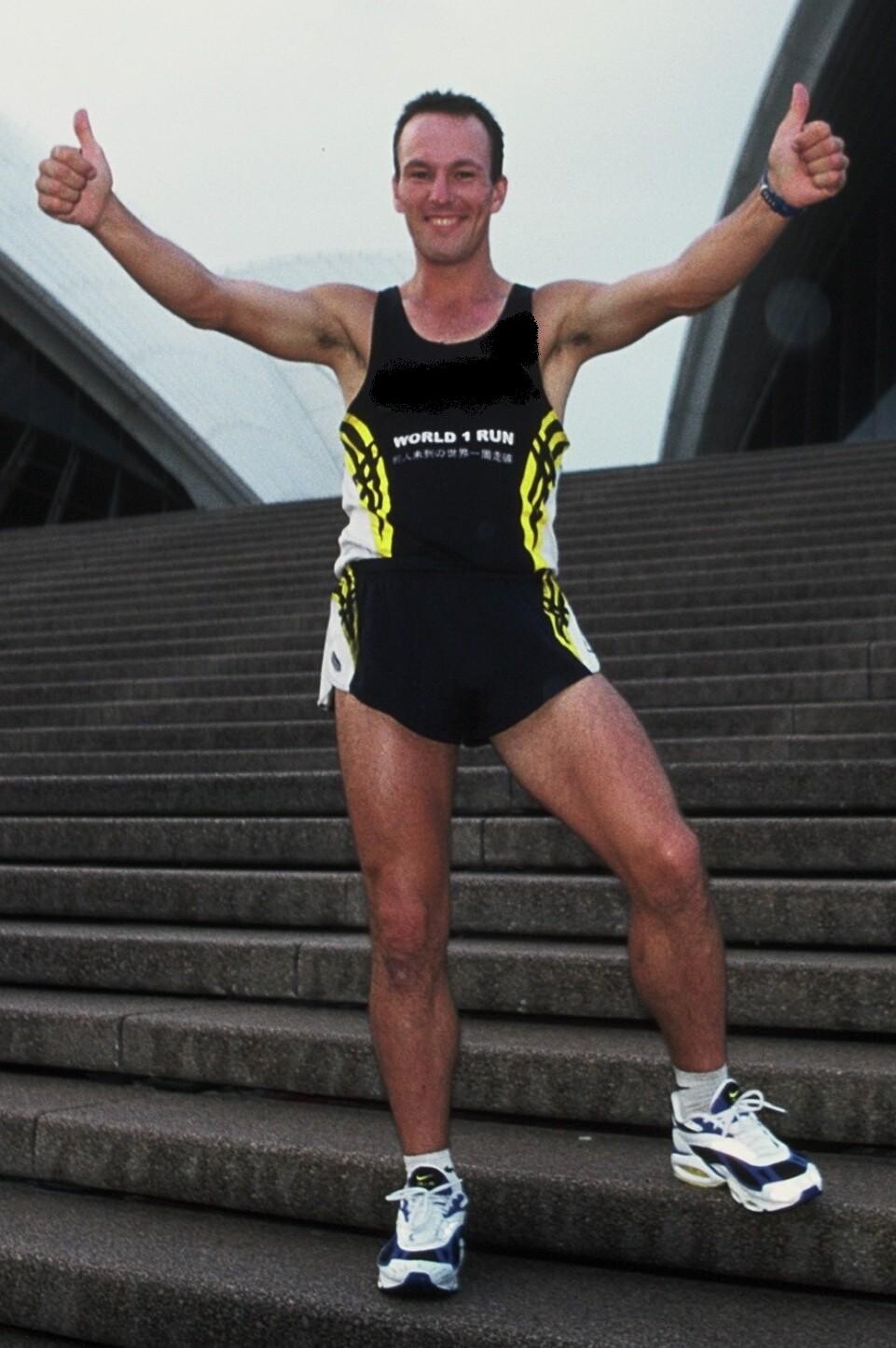
Garside's story is one of resilience and the unyielding human spirit, inspiring runners and adventurers worldwide.
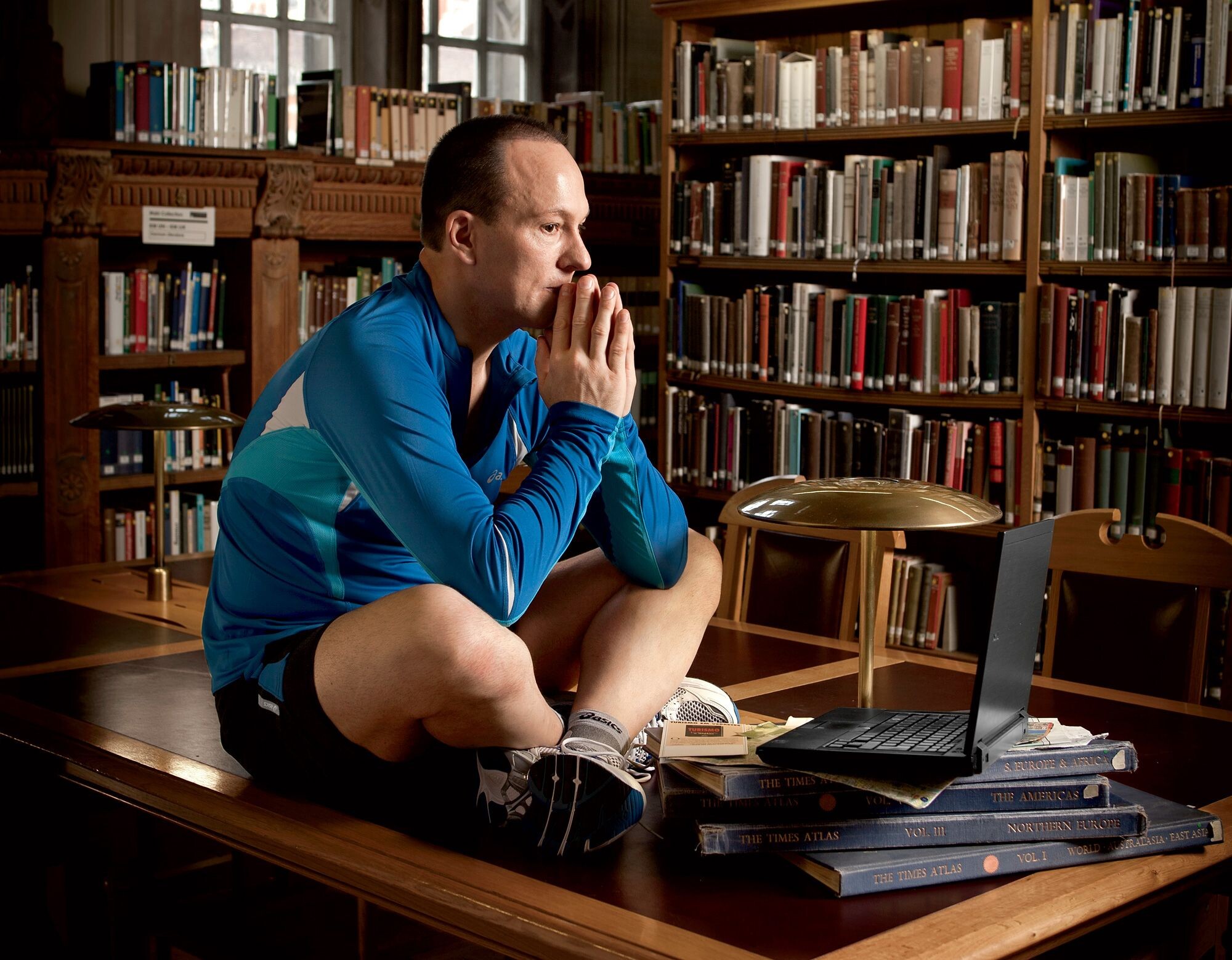
Life After the Run
Following his monumental achievement, Garside took time to recover physically and mentally from the rigors of his journey. He later transitioned into a professional career, working as a data engineer. In 2020, he shared on LinkedIn about an opportunity to join the BBC as an apprentice data analyst, indicating his involvement in the field of data analytics.
While Garside has maintained a relatively low public profile in recent years, his legacy endures. His journey continues to inspire discussions about endurance, determination, and the human capacity to overcome immense challenges.
by Boris Baron
Login to leave a comment
Hi! I landed on this account by accident as part of my (on and off!) search, over many years, for my hero whom I followed those many years ago. Please note that the bit "Life After the Run" is very unlikely to be correct - I think you (or AI!) have looked at https://www.linkedin.com/in/robert-garside-7b61b2a3/ _ I will check for completion, but I am pretty sure that this is someone else entirely. Rob Garside, "The Runningman", as far as I can tell, has not just "maintained a relatively low public profile", he has completely disappeared, probably intentionally but for reasons unknown but I can make an intelligent guess. I would personally love to meet him and find out more about his subsequent life (if he is, indeed, still alive) but would intensely respect his privacy. Please see https://www.runnersworld.com/runners-stories/a20962865/redemption-of-the-runningman/ for a more accurate summary (incidentally, from which the last photograph was taken)
If anybody has ANY information about his subsequent life, PLEASE contact me directly - Jim Newmark 7/23 2:19 am |
Joshua Cheptegei Returns to TCS World 10K Bengaluru with Eyes on Victory
Multiple global champion Joshua Cheptegei is set to take on the TCS World 10K Bengaluru this Sunday, April 27, aiming to capture the title at the prestigious World Athletics Gold Label Race.
Cheptegei, Uganda’s double Olympic and World Champion, made his international debut at this very race back in 2014, finishing second. Now 28 years old, he reflected on his journey during a pre-race media conference:
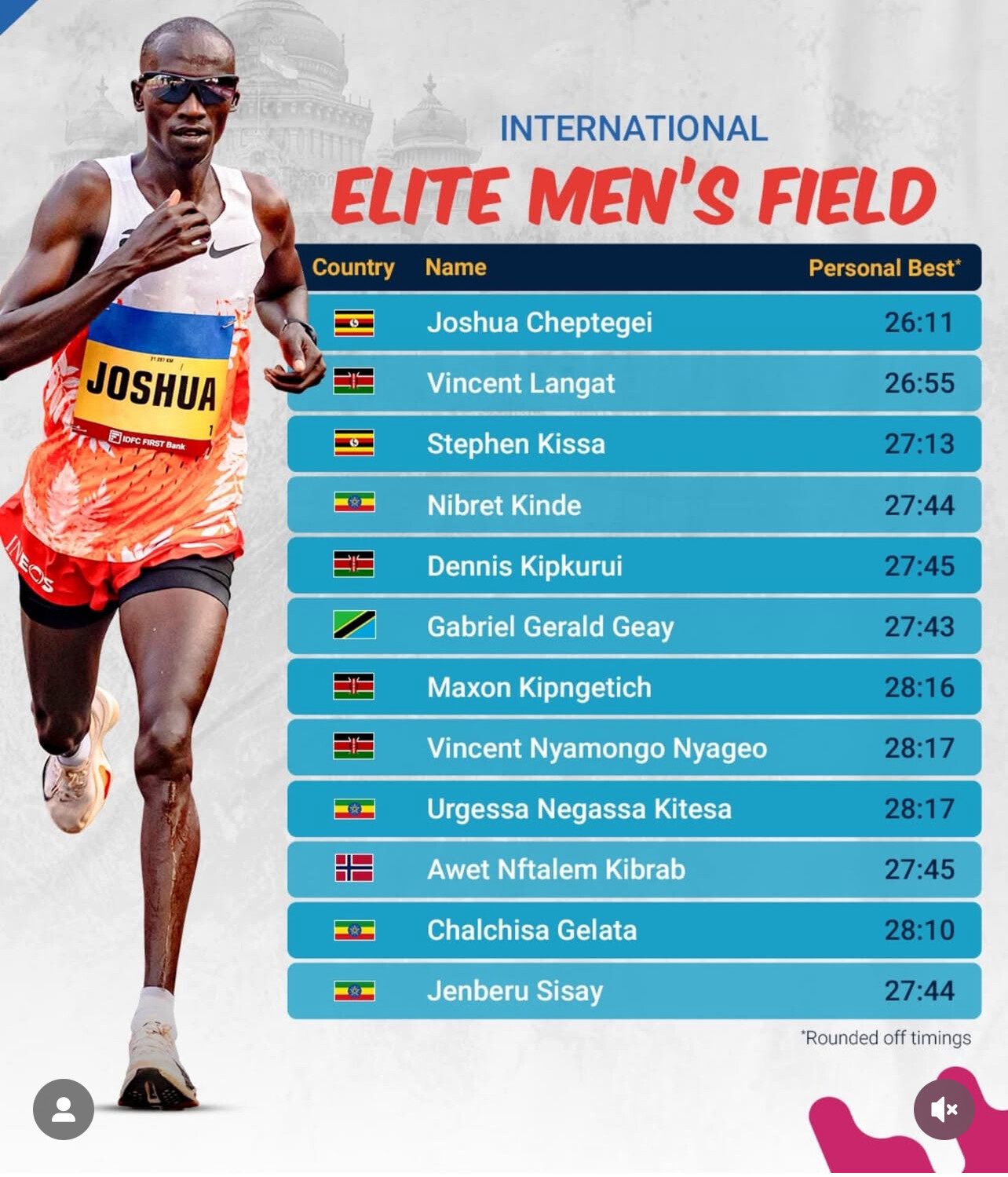
“Back in 2014, I won silver, and it was my first international race. I went on to win many international titles. India will always be the place that launched me.”
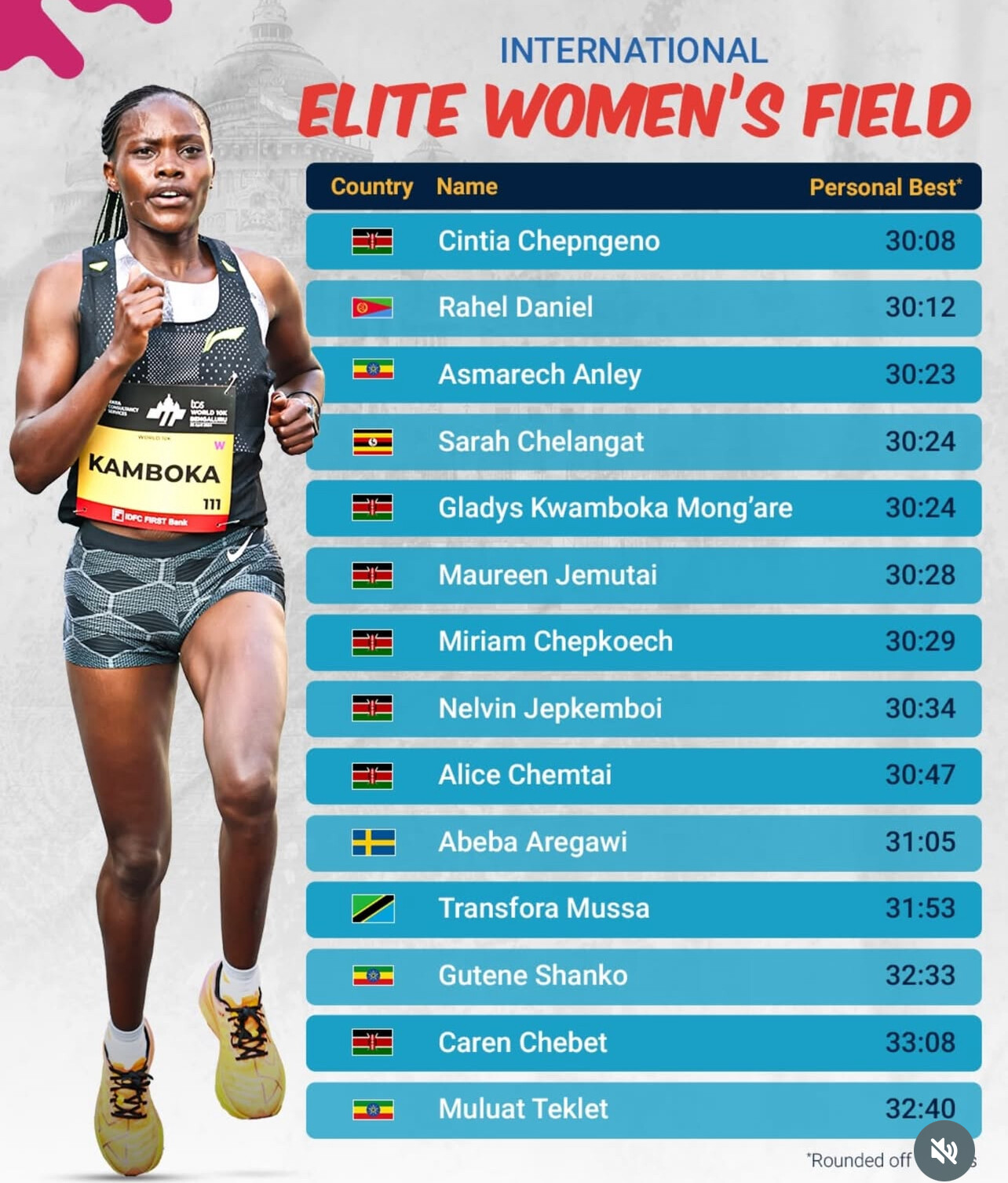
Looking ahead to this weekend, Cheptegei acknowledged the strength of the field and the race’s quick course but remained focused on the bigger goal:
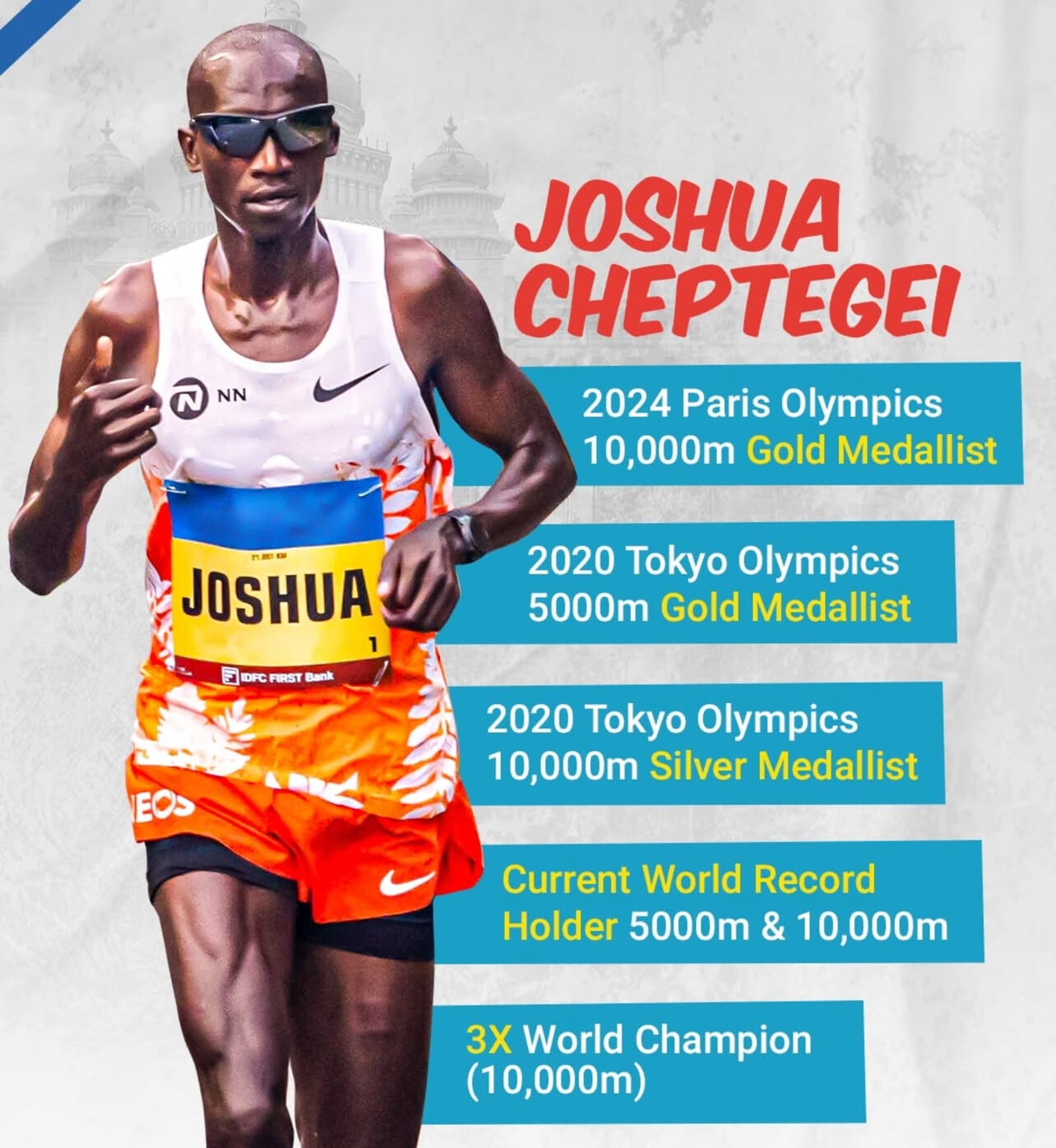
“It’s going to be a strong race, but I try not to put too much pressure on myself. Winning would be fantastic. As for the record, it’s harder now with marathon training in my legs, but the focus is on the win.”
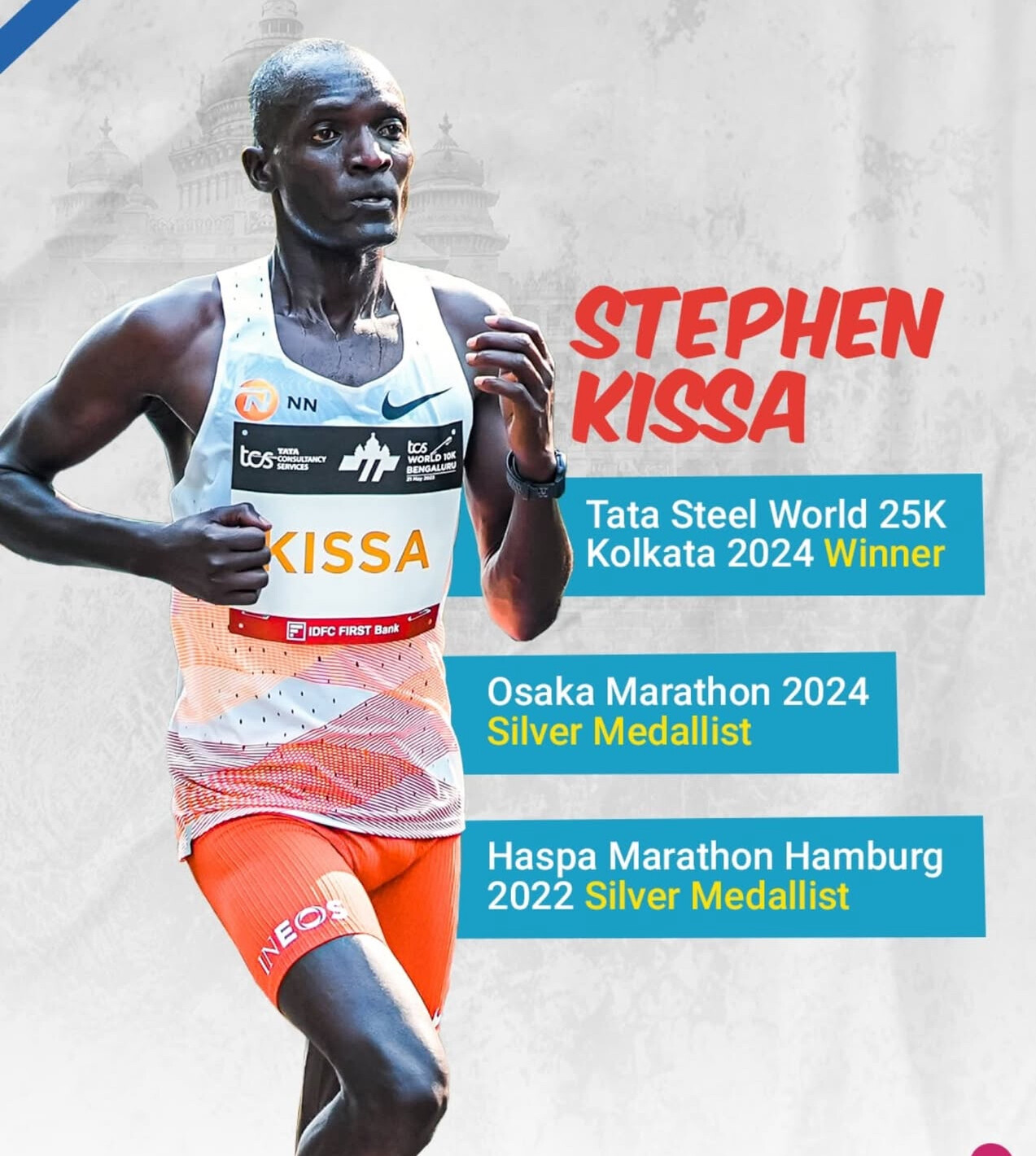
The TCS World 10K boasts a total prize purse of USD 210,000, along with additional bonuses for course record performances.
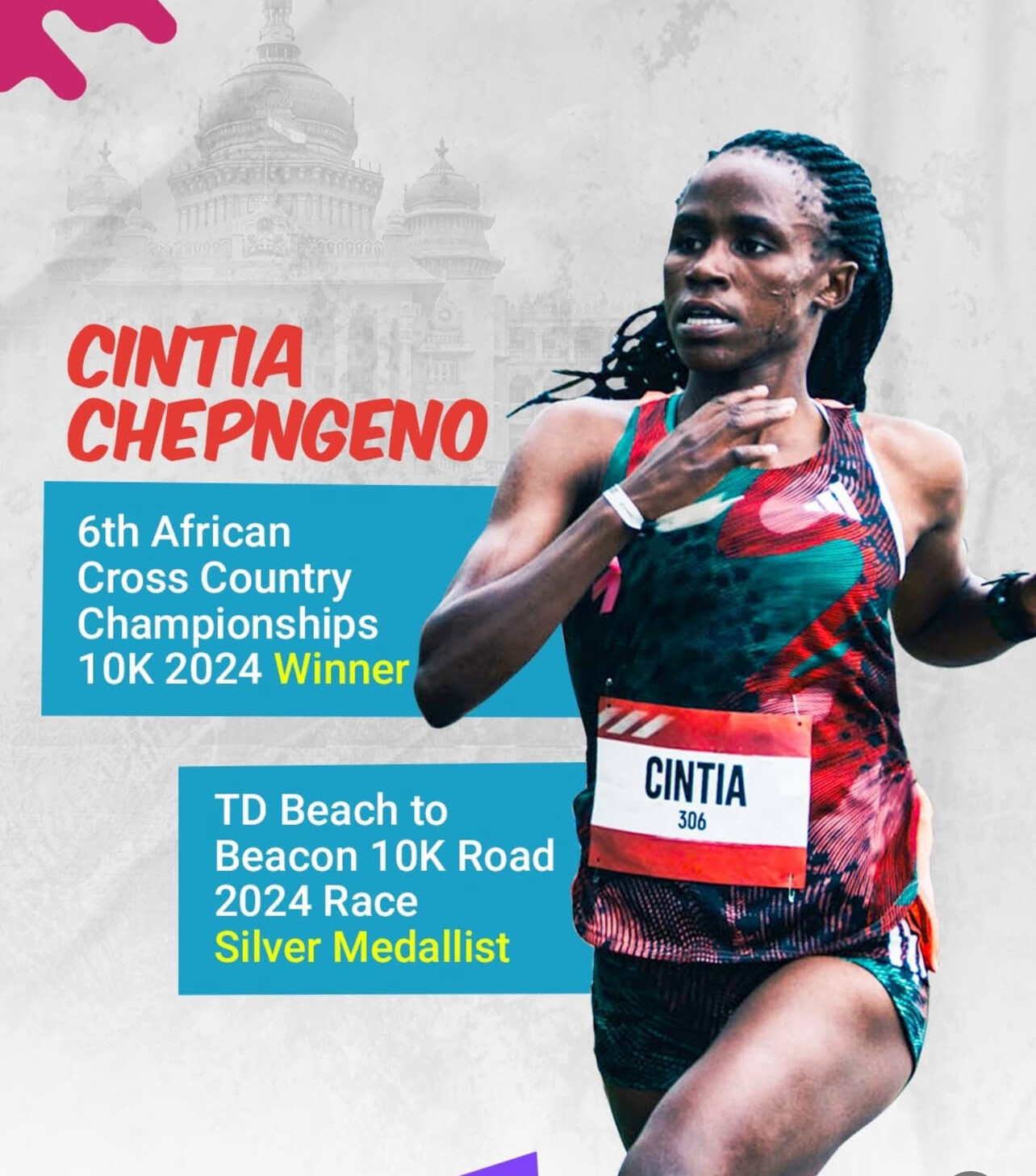
Prize Money and Bonuses
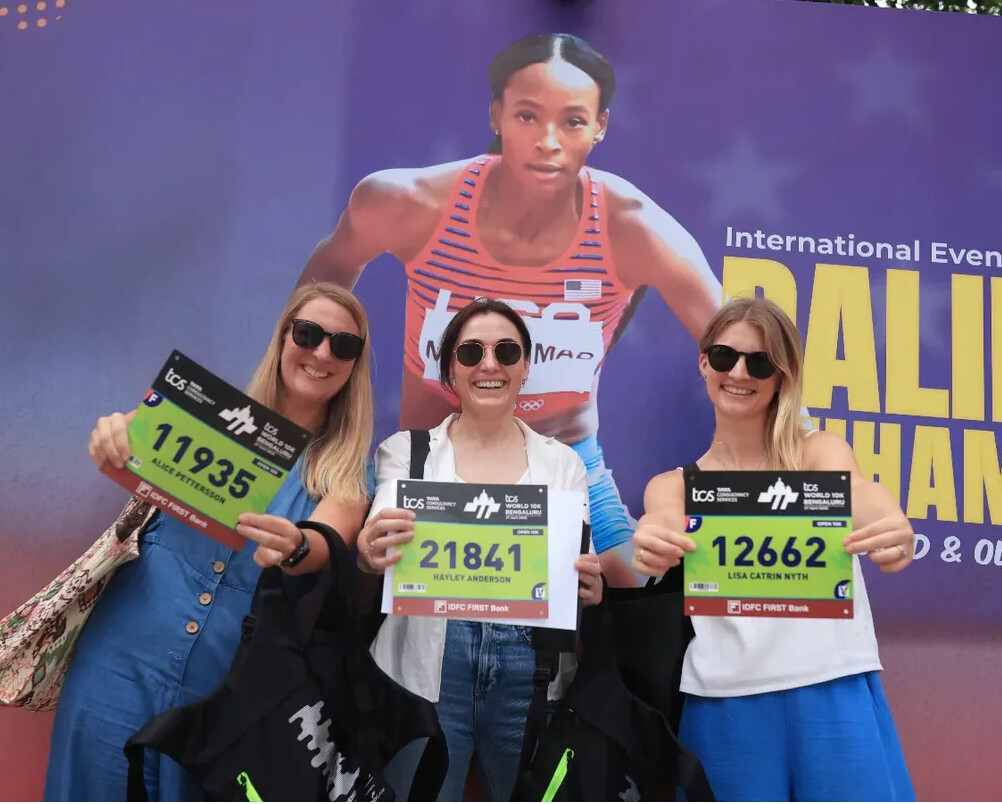
Top Overall Finishers (Men & Women):
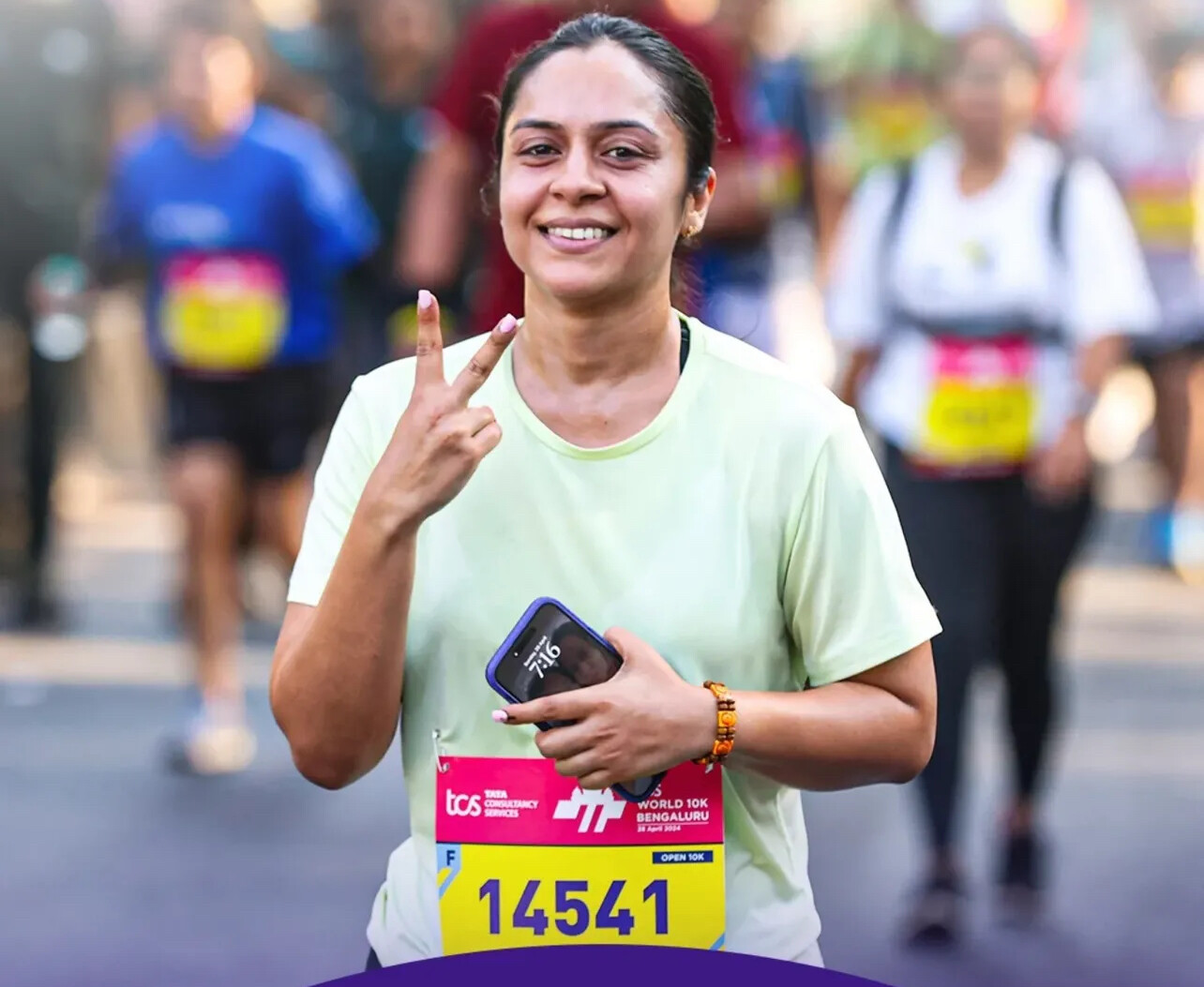
• 1st Place: USD 26,000
• 2nd Place: USD 17,000
• 3rd Place: USD 10,000
• 4th to 10th Places: Prizes ranging from USD 5,000 to USD 1,000
Top Indian Finishers (Men & Women):
• 1st Place: INR 3,00,000 (approximately USD 3,600)
• 2nd Place: INR 2,25,000 (approximately USD 2,700)
• 3rd Place: INR 1,50,000 (approximately USD 1,800)
• 4th to 10th Places: Prizes from INR 1,00,000 (USD 1,200) down to INR 30,000 (USD 360)
Bonus Incentives:
• Overall Course Record Bonus: USD 8,000 for breaking the men’s (27:38) or women’s (30:35) course records
• Indian Event Record Bonus: INR 1,00,000 (approx. USD 1,200) for setting a new Indian event record
• Indian Event Record Jackpot: INR 1,00,000 shared among top Indian finishers hitting key time standards (Men: sub-29:49; Women: sub-33:38)
Gabriel Geay Eyes Big Finish
Tanzania’s Gabriel Geay, a seventh-place finisher in the World Championship Marathon, also shared his excitement about racing in Bengaluru for the first time.
“It’s been a dream of mine to race here,” said the 28-year-old. “If the pace is quick, I believe a record is possible. My training hasn’t changed much from my marathon build-up, just a few adjustments for the 10K distance.”
Strong Women’s Field Led by Cintia Chepngeno
On the women’s side, Kenya’s Cintia Chepngeno headlines a deep field. Chepngeno, whose name is coincidentally similar to Cheptegei’s, is one of eight women in the field with personal bests faster than the course record of 30:35, set by Irene Cheptai in 2022.
Chepngeno, who placed ninth here last year, aims to move up the standings:
“I am keen on a good race with my colleagues on Sunday. My aim is to make the podium.”
She’ll face tough competition from Eritrea’s Rahel Daniel, who finished fifth in the 10,000m at the 2022 World Championships with an impressive 30:12.15, along with a host of other Kenyan contenders, including reigning African 10,000m champion Gladys Kwamboka Mong’are.
Men’s Title Wide Open
Along with Cheptegei, strong contenders in the men’s field include Uganda’s Stephen Kissa (third in Bengaluru in 2017), Kenya’s Vincent Langat, and Norway’s Awet Nftalem Kibrab.
With top runners from around the world competing and major prize incentives on the line, Sunday’s TCS World 10K Bengaluru promises thrilling competition — and possibly record-breaking performances.
by Running India News Service with Boris Baron
Login to leave a comment
TCS WORLD 10K BENGALURU
The TCS World 10k Bengaluru has always excelled in ways beyond running. It has opened new doors for people to reach out to the less privileged of the society and encourages them to do their bit. The TCS World 10K event is the world’s richest 10 Km run and has seen participation from top elite athletes in the world. ...
more...Antonio Rao, 92, Completes 30th Consecutive Rome Marathon in 6:44:16
In an inspiring display of endurance and passion, 92-year-old Italian runner Antonio Rao completed his 30th consecutive Rome Marathon on March 16, 2025. Finishing the 42.195 km course in 6 hours, 44 minutes, and 16 seconds, Rao continues to defy age-related expectations and inspire runners worldwide.
Rao’s marathon journey began in 1995, and he has not missed a single Rome Marathon since. This year’s race marked his third marathon finish in his 90s. Notably, in 2023, he set an Italian men’s 90+ age-group record with a time of 6:14:44, showcasing his remarkable consistency and dedication to the sport.
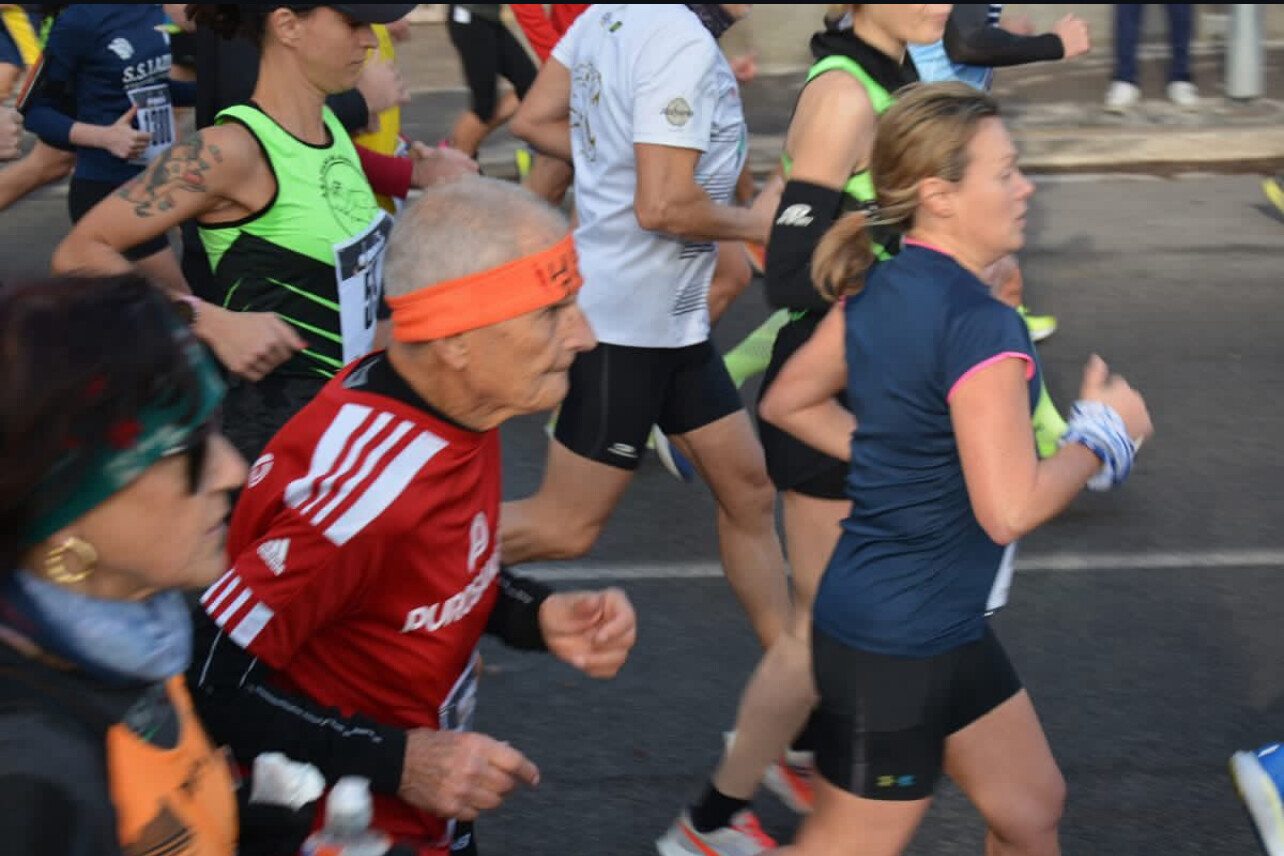
Despite facing health challenges leading up to the race, Rao expressed surprise at his performance: “I haven’t been feeling well lately, and I didn’t think I could finish it,” he admitted. “Instead, I finished with a time 10 minutes faster than last year.”
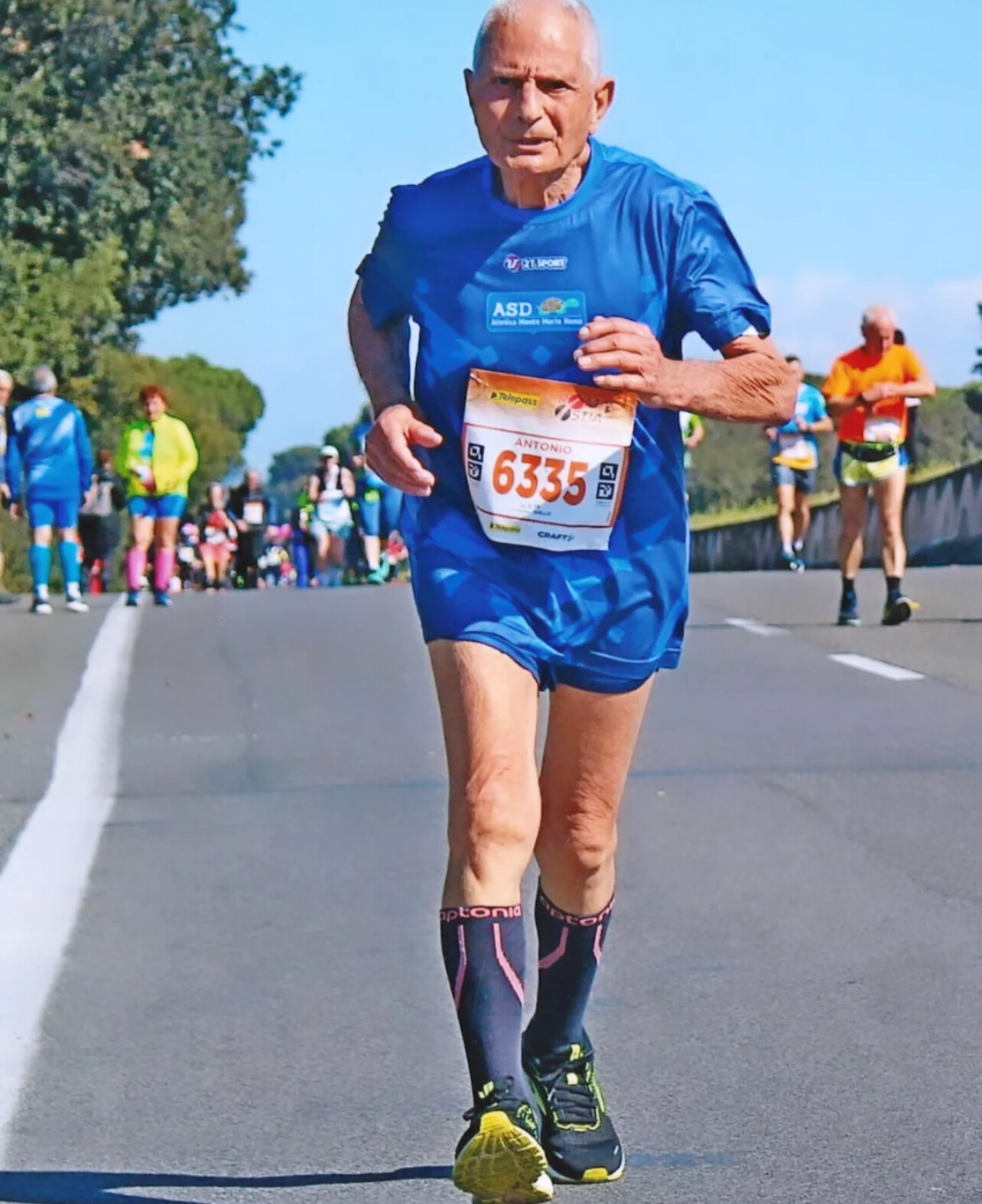
In addition to his marathon achievements, Rao also completed the Roma-Ostia Half Marathon (blue shirt) just weeks prior, finishing in 2 hours and 54 minutes, further demonstrating his unwavering commitment to running.
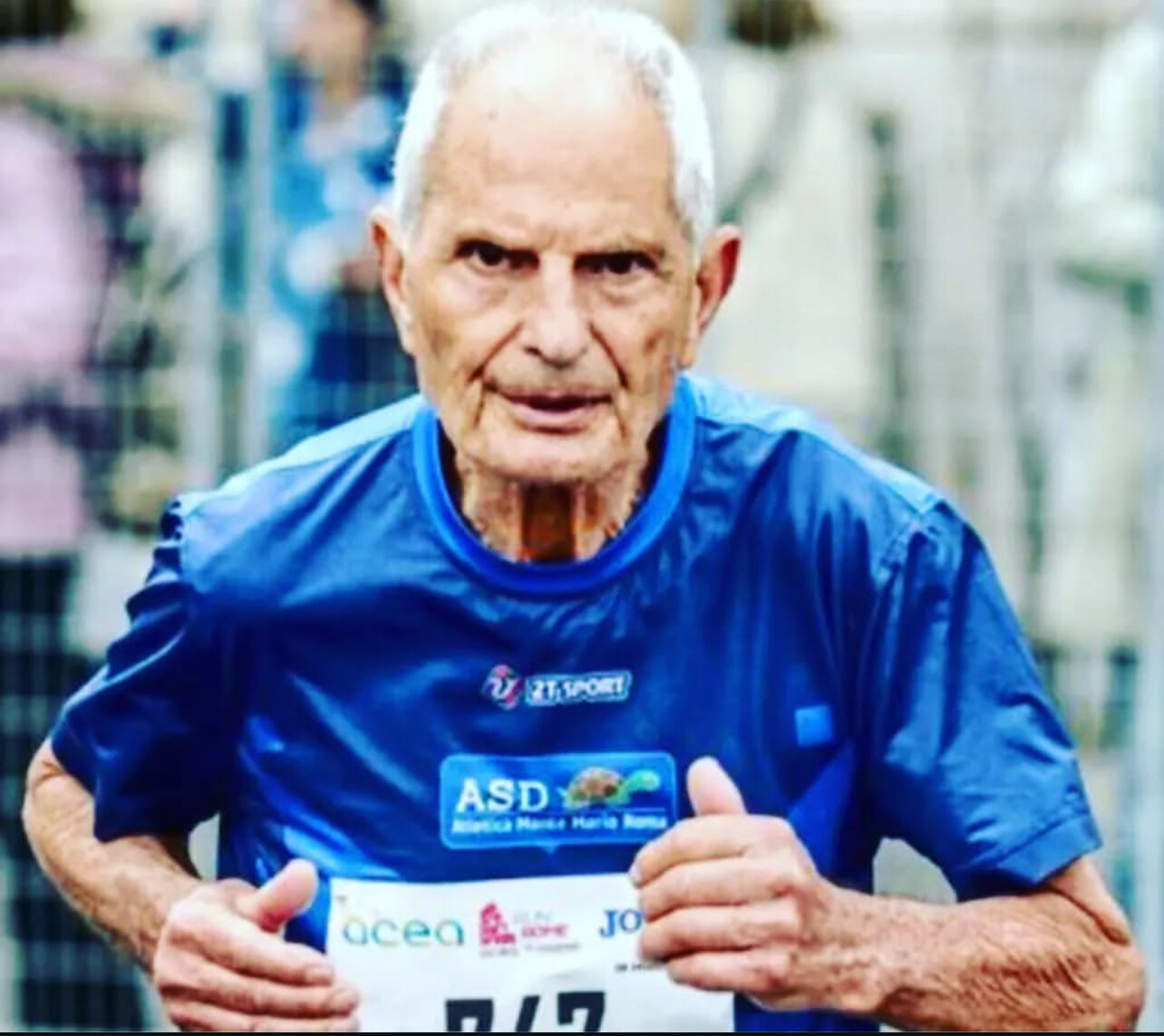
While Rao’s accomplishments are extraordinary, it’s worth noting that Fauja Singh, a British runner of Indian origin, holds the record for the fastest marathon time in the 90+ age group. At age 92, Singh completed the 2003 Toronto Waterfront Marathon in 5 hours and 40 minutes.
Antonio Rao’s dedication to running serves as a powerful reminder that age is no barrier to pursuing one’s passions. His story continues to inspire runners of all ages to stay active and embrace the joy of the sport.
by Boris Baron
Login to leave a comment
Roe and Maier Dominate USATF Half Marathon Championships
On a chilly morning in Atlanta, runners took to the streets for the USATF Half Marathon Championships on March 2, 2025, battling for national titles and a chance to represent Team USA at the World Athletics Road Running Championships in San Diego this September. With fierce competition and fast times, Taylor Roe and Alex Maier emerged as the day’s champions.
Roe Breaks Away to Claim First National Title
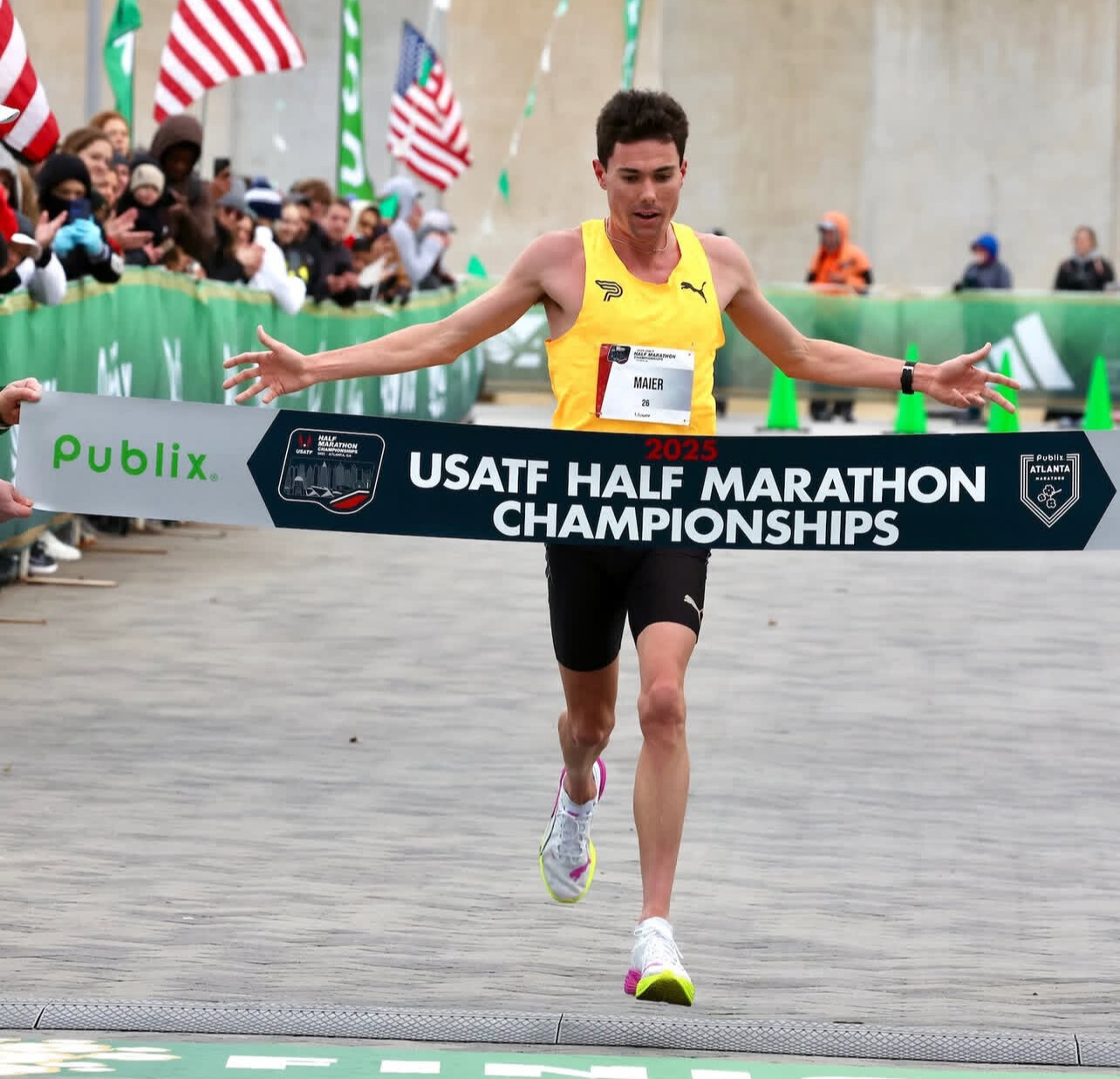
Taylor Roe made a statement in the women’s race, surging ahead in the final miles to secure victory in 1:07:22. The Durham, North Carolina, standout, representing PUMA Elite, held off a strong challenge from Emma Grace Hurley, who finished second in 1:07:35. Amanda Vestri of Blowing Rock, North Carolina, rounded out the podium with a solid 1:08:17.
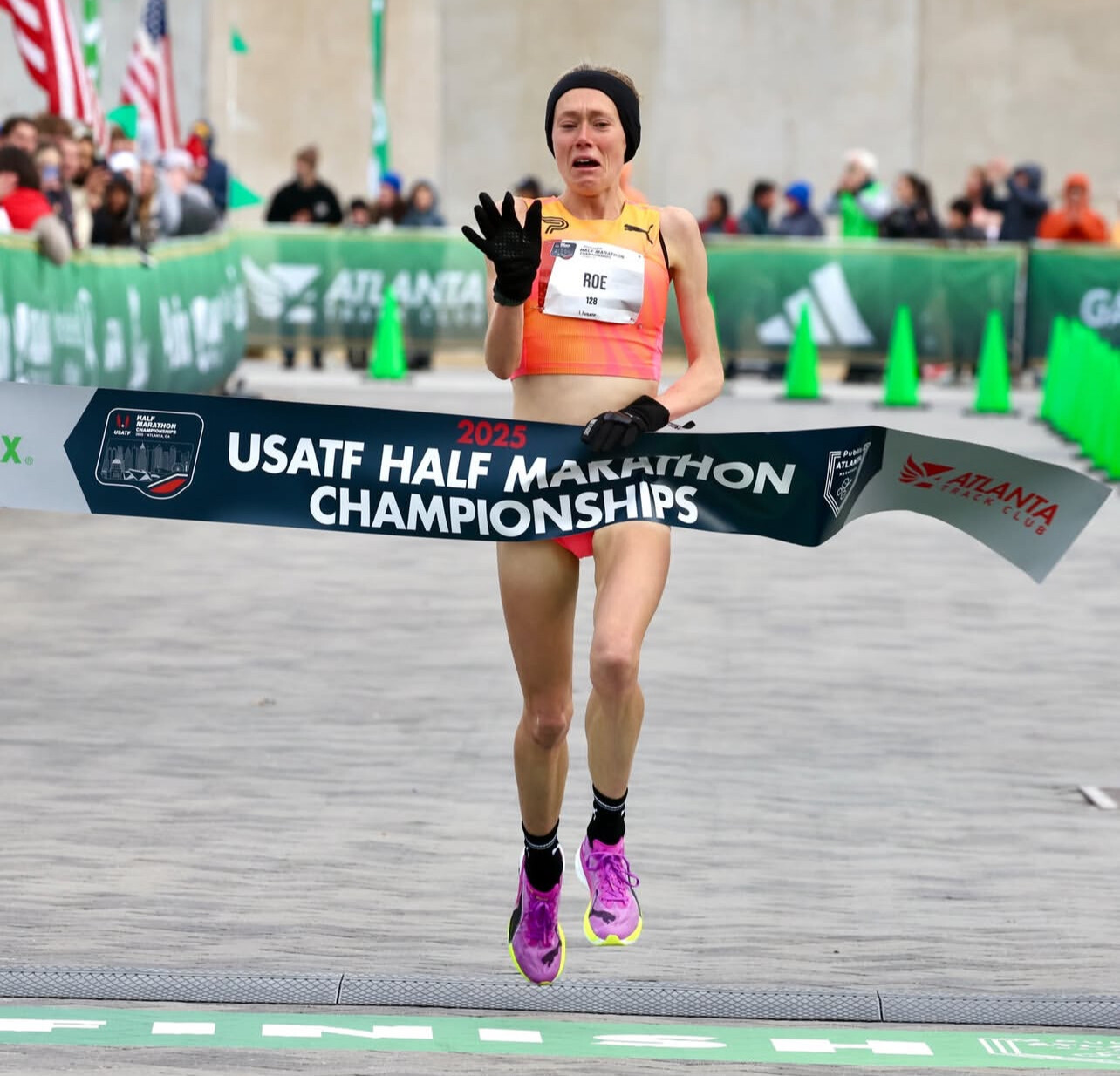
With their top-three finishes, Roe, Hurley, and Vestri secured their spots on Team USA for the World Championships in San Diego.
Top Five Women:
1. Taylor Roe (Durham, NC) – 1:07:22
2. Emma Grace Hurley (Indianapolis, IN) – 1:07:35
3. Amanda Vestri (Blowing Rock, NC) – 1:08:17
4. Jessica McClain (Phoenix, AZ) – 1:08:37
5. Emily Venters (Salt Lake City, UT) – 1:09:03
Maier Holds Off Late Challenge to Take the Men’s Crown
In the men’s race, Alex Maier delivered a strong performance, crossing the finish line in 1:00:48 to claim his first USATF Half Marathon title. The Chapel Hill runner, also representing PUMA Elite, stayed composed as Shadrack Kipchirchir of Colorado Springs pushed hard in the final stretch, finishing just 10 seconds back in 1:00:58. Hillary Bor made it a tight battle for second and third, clocking 1:00:59.
Maier, Kipchirchir, and Bor will now represent Team USA at the World Championships, where they’ll take on some of the world’s best in San Diego.
Top Five Men:
1. Alex Maier (Chapel Hill, NC) – 1:00:48
2. Shadrack Kipchirchir (Colorado Springs, CO) – 1:00:58
3. Hillary Bor (Colorado Springs, CO) – 1:00:59
4. Ahmed Muhumed (Flagstaff, AZ) – 1:01:03
5. Andrew Colley (Blowing Rock, NC) – 1:01:09
All Eyes on San Diego
With the USATF Half Marathon Championships in the books, the focus now shifts to the World Athletics Road Running Championships in San Diego this September. The newly crowned national champions, along with the other top finishers, will have the opportunity to take on the best distance runners from around the globe. If their performances in Atlanta are any indication, Team USA will be ready to make an impact on the international stage.
Login to leave a comment
Gulveer Singh Breaks 13-Minute Barrier in the 5000m, Making History for India
Gulveer Singh has made history, becoming the first Indian to run the 5000 meters in under 13 minutes. At the Boston University Terrier DMR Challenge on February 21, he clocked 12:59.77, finishing fourth and securing qualification for the World Championships. This performance shattered the national record and set a new Asian benchmark in the event, cementing his place among the continent’s top distance runners.
Singh’s achievement comes on the heels of another record-breaking run. Just a week prior, he had rewritten India’s indoor 3000m record, running 7:38.26 to erase a 16-year-old mark. These performances mark a breakthrough for Indian distance running, demonstrating that athletes from the country can compete at the highest level on the global stage.
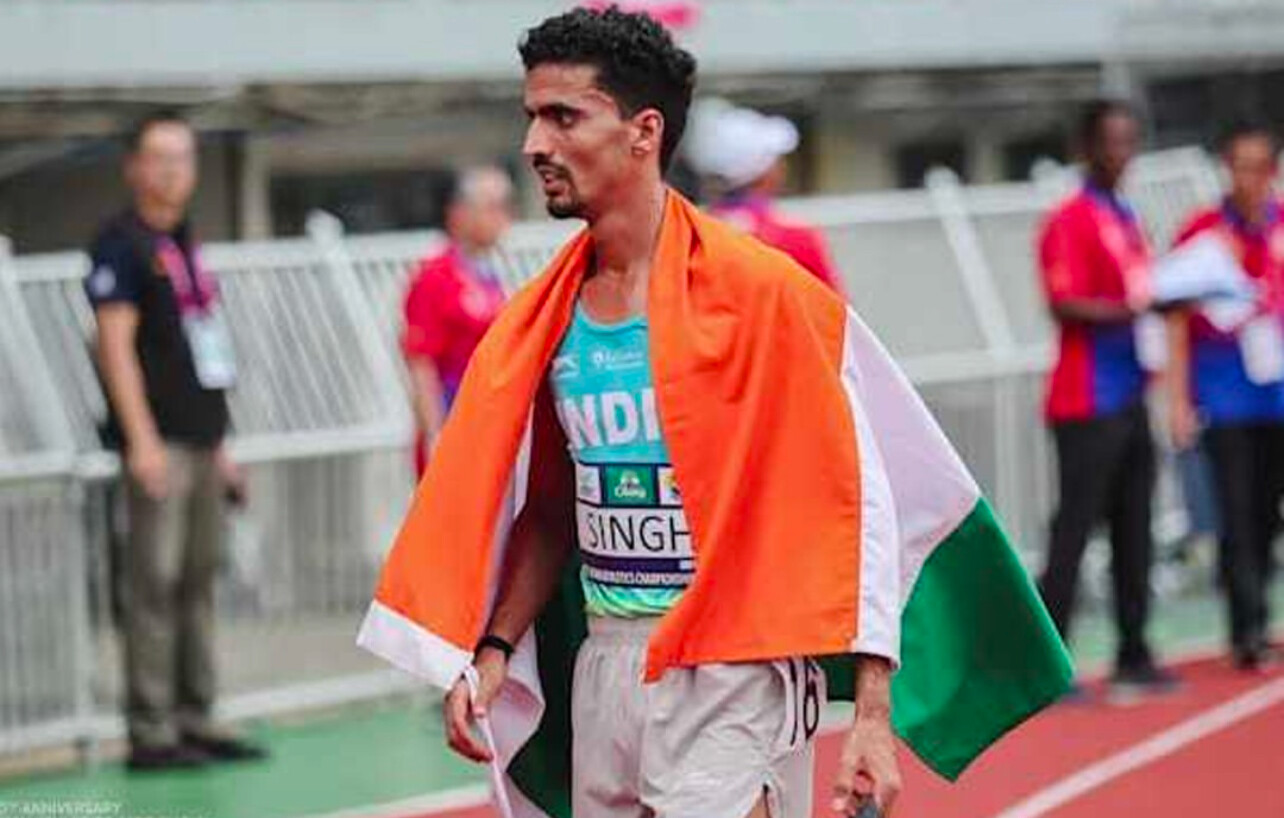
Born on June 1, 1998, in Sirsa village, Atrauli tehsil of Aligarh district in Uttar Pradesh, Singh grew up in a farming family. At 17, he joined the Indian Army through the sports quota and became part of the Grenadiers Regiment, training at the regimental center in Jabalpur. His military career provided him with the discipline and structure to develop as an elite runner, and he quickly emerged as one of India’s top distance talents.
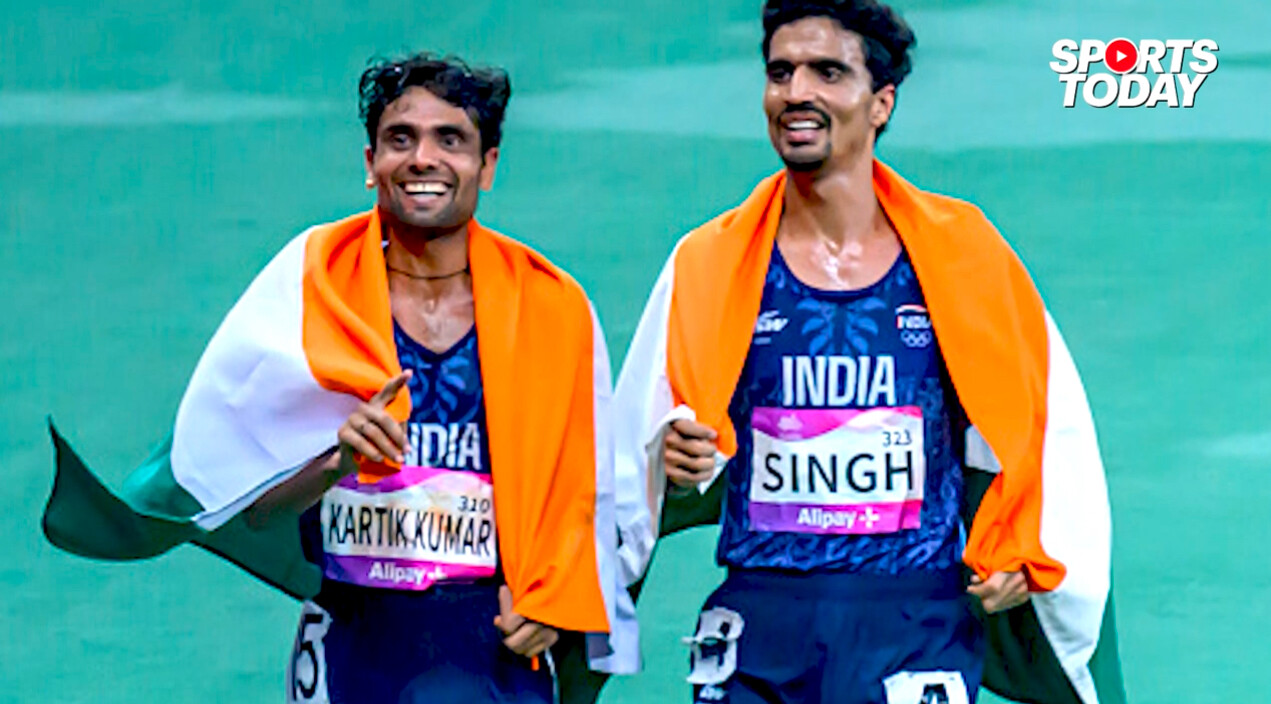
Singh first gained international recognition in 2023 when he won bronze in the 10,000 meters at the Asian Athletics Championships in Bangkok. Later that year, he added another bronze at the Asian Games in Hangzhou, China, solidifying his reputation as a rising force in long-distance racing.
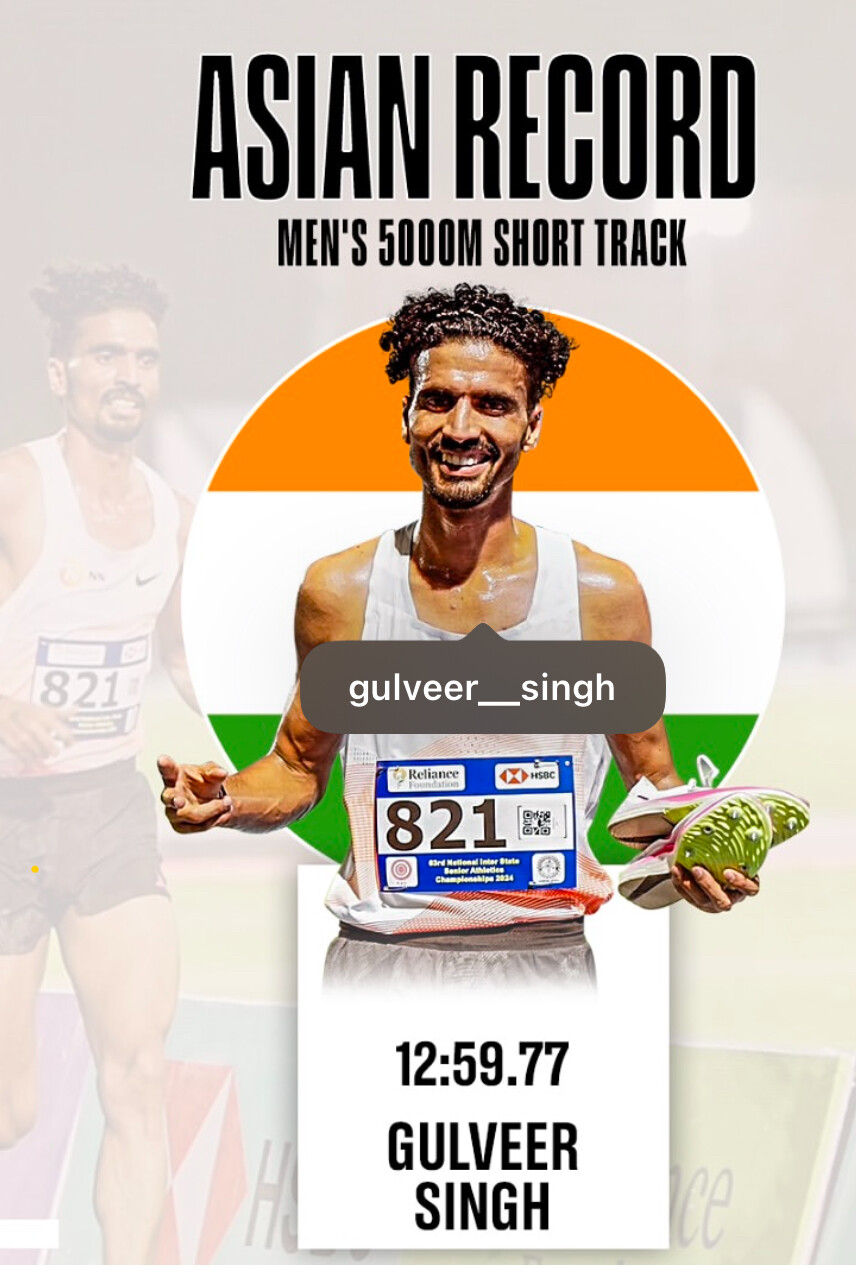
His latest performances have been fueled by high-altitude training in Colorado Springs, where he and other Indian athletes underwent a 10-week program in 2023. That preparation has clearly paid off, as Singh has now placed himself in the rarefied air of sub-13-minute 5000m runners—a feat that only a handful of athletes worldwide have achieved.
Breaking the 13-minute barrier is not just a personal milestone; it represents a major shift for Indian distance running. Singh’s success could open doors for more Indian athletes to aim for world-class times, proving that with the right training and opportunities, they can compete with the best.
With his qualification for the World Championships secured, Singh’s focus now shifts to competing on an even bigger stage. His record-breaking run in Boston signals that he is ready to challenge the world’s best, and as his trajectory continues upward, Indian athletics may have found its next great distance star.
by Boris Baron
Login to leave a comment
From Boardroom to Finish Line: Anuj Sonpal’s Marathon Journey and Corporate Success
Anuj Sonpal, the dynamic CEO of Valorem Advisors, is a man of many pursuits. For nearly two decades, he has been at the helm of one of India’s leading investor relations firms, guiding companies through the complexities of financial communication and strategic market positioning. But beyond boardrooms and balance sheets, Sonpal has discovered a new passion that challenges his endurance in an entirely different way—marathon running.
Balancing corporate leadership and fitness is no small feat, yet Sonpal has managed to merge the two seamlessly. His transformation from a high-powered executive navigating the fast-paced world of finance to a dedicated long-distance runner is a testament to discipline, resilience, and the power of goal setting.
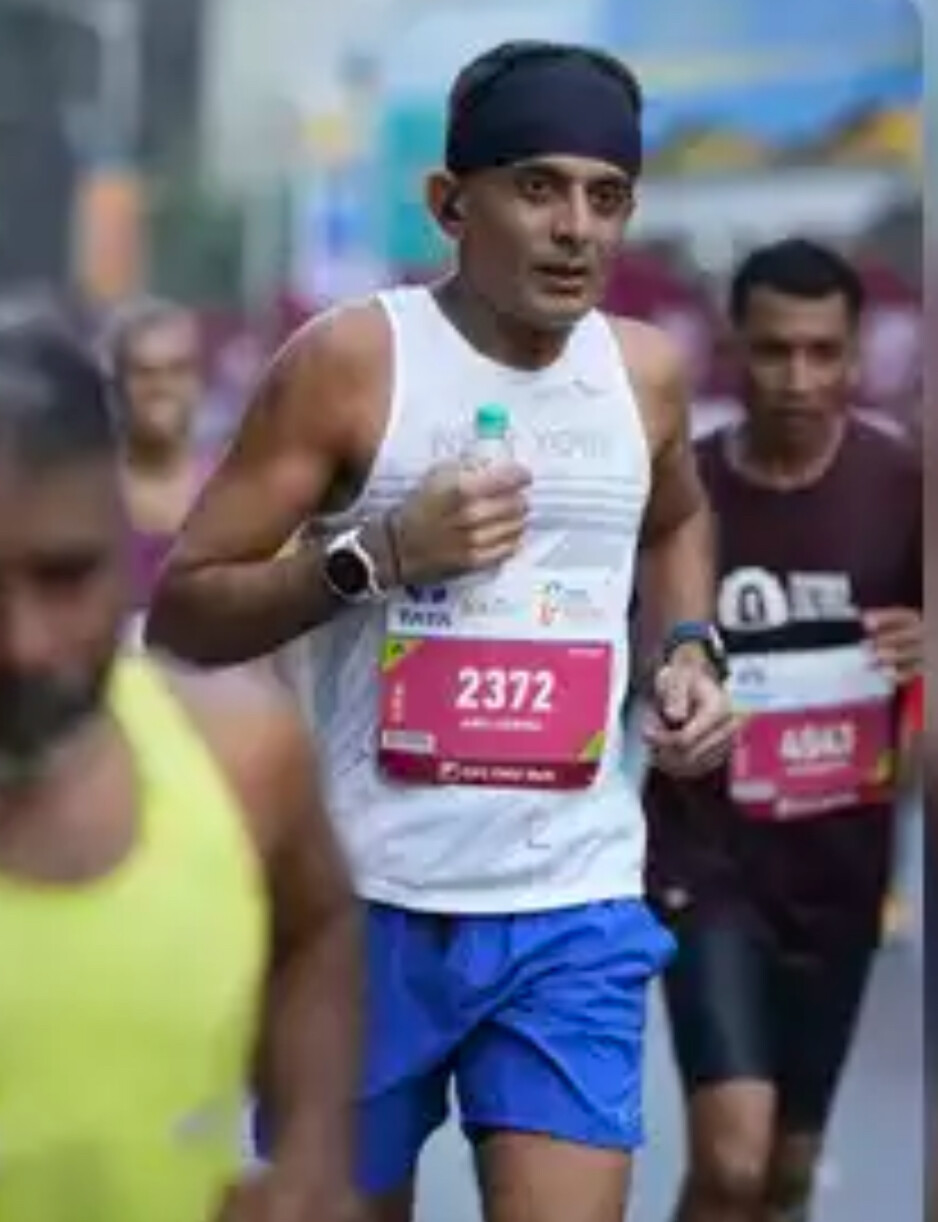
The Man Behind Valorem Advisors
Founded in 2010, Valorem Advisors has carved a niche for itself in India’s financial ecosystem. The firm specializes in investor relations, capital markets advisory, and strategic corporate communications, helping publicly traded companies enhance their visibility among institutional investors. With a strong focus on transparency and market intelligence, Valorem has played a crucial role in shaping the way businesses communicate with shareholders and financial stakeholders.
Sonpal’s leadership style is rooted in strategic foresight, much like his approach to marathon running. He understands that both require meticulous planning, consistency, and an ability to adapt to ever-changing conditions. His ability to balance the pressures of corporate decision-making with a commitment to fitness is an inspiring example of how professionals can excel in both their careers and personal aspirations.
Marathon Running: A Newfound Passion
While Sonpal always had an appreciation for fitness, marathon running wasn’t initially on his radar. Like many professionals caught up in the demands of work, he found himself prioritizing business over personal health. However, a growing awareness of the impact of stress and a desire for a challenge beyond the boardroom led him to lace up his running shoes.
What began as casual morning jogs soon turned into structured training, and before long, he was preparing for his first official race. His dedication and methodical approach—much like his business strategies—helped him progress rapidly in the sport.
In 2024, he ran his third full Tata Mumbai Marathon, an event that holds special significance for Indian runners. He had set a personal goal to finish under four hours while maintaining a steady, progressive pace throughout.
Later that year, Sonpal achieved a milestone that would solidify his place in the marathon-running community—completing the Berlin Marathon in 3 hours and 23 minutes, his personal best. Running among over 50,000 participants, in near-perfect weather conditions, and with thousands of spectators cheering him on, Sonpal described the experience as “electrifying.”
Pushing Boundaries: The Road to World Marathon Majors
With Berlin checked off his list, Sonpal has now set his sights on a much bigger dream—completing all six of the World Marathon Majors: Berlin, London, Chicago, Boston, Tokyo, and New York City.
Next on his calendar is the Delhi Marathon in February 2025, followed by his third Tata Mumbai Marathon. But the most anticipated race on his schedule is the London Marathon in April 2025, where he aims to build on his Berlin success and push his limits further.
“Marathon running is much like running a business,” Sonpal shares. “It requires patience, consistency, and the ability to push through challenges. There are good days and bad days, but the key is to stay focused and keep moving forward.”
The Intersection of Fitness and Leadership
Running long distances has not only improved Sonpal’s physical fitness but has also reshaped his approach to leadership. The mental endurance required to push through the final miles of a marathon mirrors the resilience needed to steer a company through challenges. The meditative rhythm of long-distance running has become a space for clarity, allowing him to generate new ideas and refine strategies for Valorem Advisors.
Moreover, Sonpal has become an advocate for work-life balance, encouraging his colleagues and peers in the corporate world to prioritize health and fitness. He believes that maintaining an active lifestyle leads to greater energy levels, sharper decision-making, and improved overall well-being—qualities essential for any leader.
A Future Fueled by Passion and Determination
With his continued focus on growing Valorem Advisors and his ambition to complete the World Marathon Majors, Anuj Sonpal exemplifies the power of dedication and perseverance. He is living proof that career success and personal fitness are not mutually exclusive but can complement and enhance one another.
His journey serves as an inspiration to professionals everywhere—showing that with the right mindset, commitment, and strategic planning, anyone can go the distance, whether in business or on the marathon course.
by Boris Baron
Login to leave a comment
The Indian Running Sensation Making Strides Without Shoes
If you have not heard of Barefoot Bobby yet, it's time to take notice. The 58-year-old runner from Bangalore, India, has captured the imagination of the running world with his unconventional yet inspiring approach to the sport of running entirely barefoot. Bobby's remarkable journey reached a new milestone last Sunday at the 2024 Mumbai Marathon, where he clocked one of the fastest times of his career, finishing in 3:11:47. His incredible performance earned him third place in the competitive men's 55-59 age group.
Bobby, whose real name is Ramesh Patel, began running barefoot nearly 30 years ago, initially as a practical choice due to a lack of access to proper running shoes. Over time, what started as a necessity became his signature style. Running without shoes, Bobby says, keeps him connected to the ground and allows him to feel every stride more naturally.
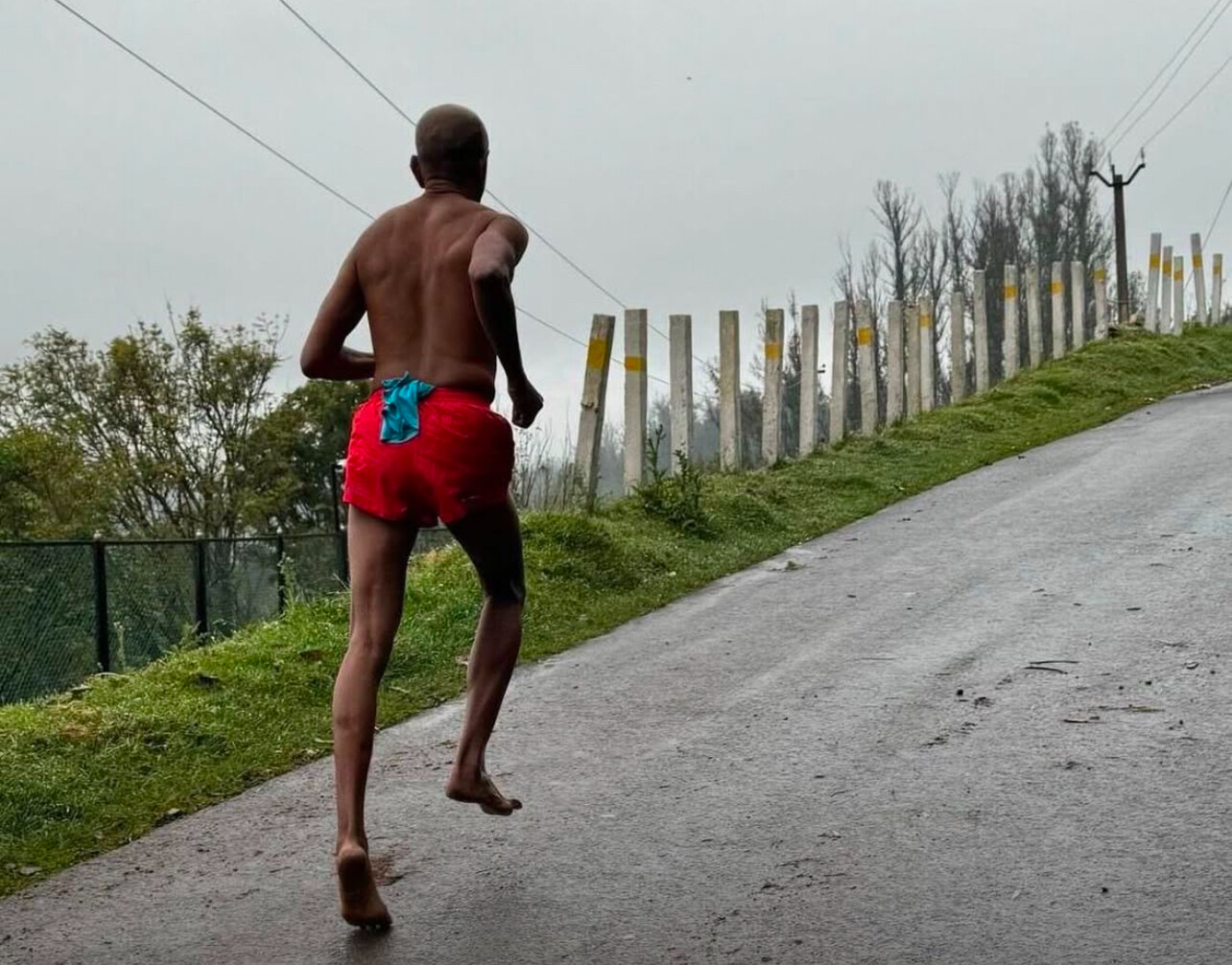
At the Mumbai Marathon, Bobby's effortless stride and unyielding pace drew cheers from spectators along the route. His 3:11:47 finish wasn’t just a personal achievement; it was a testament to his resilience and the strength of his training, which includes long runs on Bangalore's rugged trails.
"I've always believed that running barefoot is a way to honor the simplicity of the sport," Bobby shared after the race. "The road doesn't care if you wear the latest gear or go barefoot. What matters is your passion and dedication."
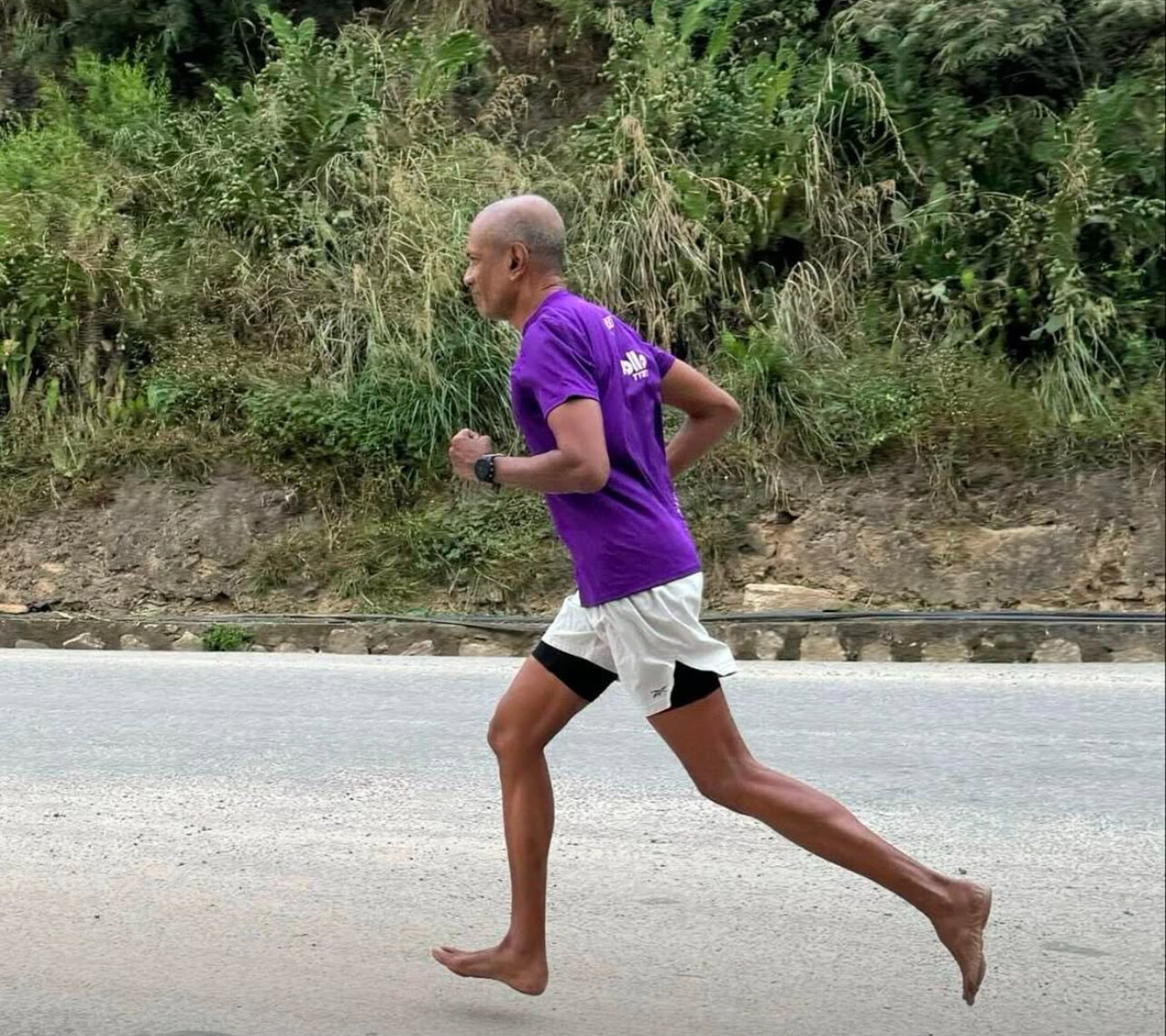
Bobby's story has inspired runners worldwide, proving that innovation and tradition can coexist on the marathon course. At 58, he shows no signs of slowing down, and his sights are set on breaking the 3-hour barrier in the coming years.
Barefoot Bobby's journey reminds us all that running is about more than just physical performance is about heart, determination, and embracing your unique path.
by Boris Baron
Login to leave a comment
You Should Stop Showering Between Runs—and My 7 Other Running Rules for 2025
If you’ve been on social media lately, you might have seen your friends making in-and-out lists. It’s been a thing for a few years—maybe less-so now—but the idea is to come up with some trends that you think will be popular and unpopular.
The best ones are fun and off the top of the head. Some of the thought-out ones about culture are kind of annoying. (Yeah, everyone agrees that “being mean” is out in 2025.)
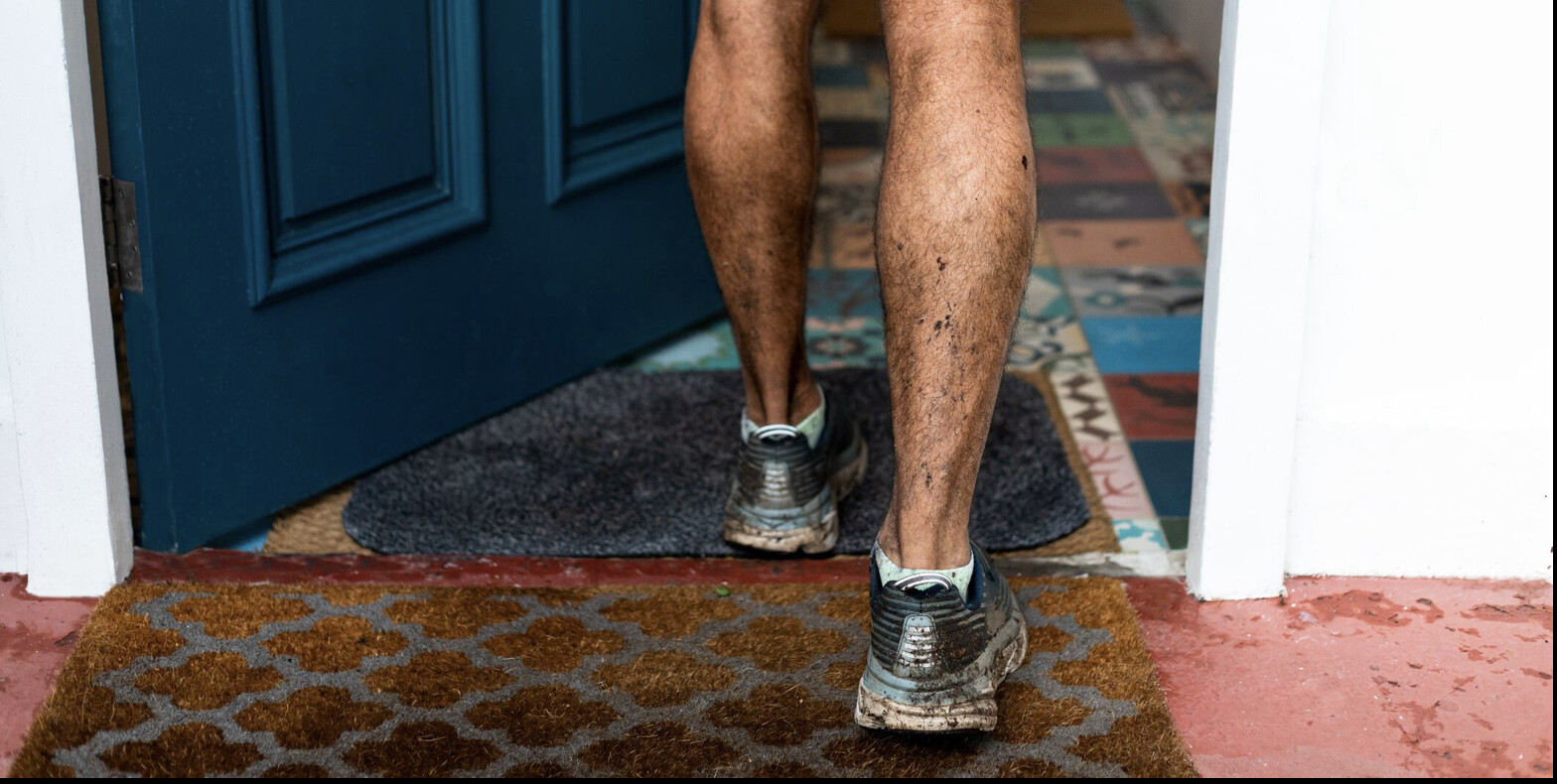
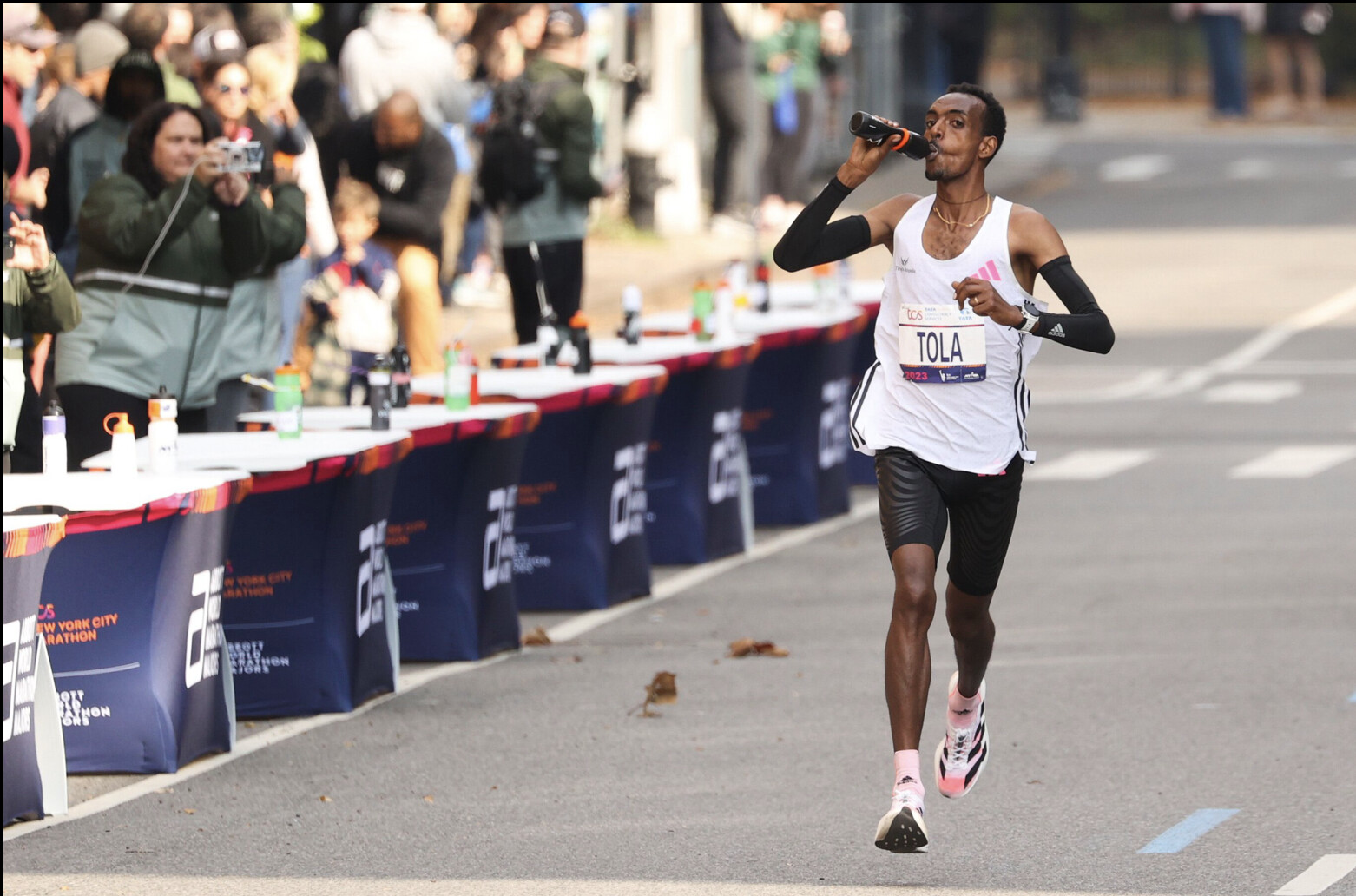
So I took the idea and applied it to my own running. Remember, these are specific to my experience. They’re not mandates or absolutes or even advice.
And at the end of the year, feel free to call me out if I was wrong. I probably was.
Out: Showering between runs
In a normal training week, I run twice a day on Wednesday and Thursday. Those are my recovery days, and I use them as a chance to get ahead on my weekly mileage. Usually, I run between 60 and 85 miles a week during marathon training, so to break it up, I’ll run once before work and then again during lunch or after work. Also known as “doubling.”
But that laundry piles up fast.
So on days when I work from home, sometimes I’ll put off my shower and stay in my workout clothes until my next run or weightlifting session. I live alone, so there’s no one to complain about my odor. (If you live with a roommate, partner, or family, use this strategy at your own risk.)
In: Wearing ugly race T-shirts
Remember the race T-shirts of the 2000s? The ones that looked like they were designed by a middle schooler and had no fewer than 1,000 ads on the back? I’ve gotten so many over the years, and most have gone straight to Goodwill or I’ve used them for yard work. But this year, I’d like to use my race T-shirts for their purpose—and run in them. There’s something fun about wearing an ill-fitting cotton tee with an ad for Jimbo’s Ford Dealership on the back.
Some races are pivoting away from shirts in favor of more environmentally friendly alternatives, but don’t expect them to completely disappear. According to Running USA, 58 percent of participants who took the 2024 Global Running Survey said that commemorative T-shirts are important to their race experience.
Out: Long runs
I’m planning on running Grandma’s Marathon in June, which means I’m building up my mileage now. But I’ve found that long runs are kind of overrated. Hear me out.
During my last marathon training block, I never ran more than 18 miles for my long run. Many programs call for 20 to 23-mile long runs, but my coach and I decided that 18-milers would get the job done. I’ve been running high mileage for close to a decade now, so I have a large aerobic base. The strategy worked, and I ran 2:27:07, hitting my goal of sub-2:28.
Right now, as I build, my coach and I are experimenting with the idea of downplaying the long run. Instead of using it as a key workout (for example, 10+ miles at marathon pace during the run), we’re focusing more on high-volume workouts twice a week, then using the long run just to get time on my feet. Similar to how Jakob Ingebrigtsen, who never runs more than 12.5 miles, trains.
A hard long run takes a large emotional and physical toll on my body, so I’ve found that I respond well when I keep the long run easy and focus on high-volume threshold sessions during the week. Of course, running on tired legs is key to running a good marathon. As I get closer to June, I’m sure there will be weeks where I use long runs as key workouts. But sometimes I need to remind myself that the other six days of the week are just as important.
In: Wearing a T-shirt over a long sleeve
For the past year, I’ve been mulling over buying a running vest. They look cool, but I keep telling myself that I don’t need to buy something that I’d probably only wear on a few runs each year. I live in eastern Pennsylvania, so I’m usually wearing something light in the fall or a full jacket in the winter. Enter, the working man’s vest: the T-shirt over the long sleeve shirt.
The sleeves keeps your arms warm while the T-shirt acts as a protectorate for your torso, insulating (not suffocating) you from the wind. Cooper Teare is a big fan.
Bonus points if you pair the look with an ugly race T-shirt. And double bonus points if you rock the look in a snowy race, like seemingly everyone did at the 2004 USATF Cross-Country Championships in Indianapolis.
In: Sunscreen
Man, I’m bad at this. If I’m preparing to sit out at the beach or pool, I lather up thoroughly. But if I’m heading out for a 90-minute run, I rarely put on sunscreen, justifying to myself that the route is shady or 90 minutes isn’t that long in the sun.
I’ve gotten better at sun protection—I almost always wear a hat and sunglasses year-round now—but I need to get better at lathering up on a regular basis. If you see me jogging this summer, ask me if I have sunscreen on and, if I don’t, shame me until I turn around and go home.
Out: Marathon bottle service
In my debut marathon at Indianapolis in November, I was lucky enough to qualify for the elite field, meaning I got perks like reserved restrooms, a separate warm-up area, and bottle service. For those unfamiliar, bottle service at a marathon is different from bottle service at a Las Vegas nightclub. Instead of access to marked-up Patrón, you get reserved spots on the course where you can stash your race fluid bottles.
Because there’s limited space, bottle stations are typically reserved for the fastest runners at a marathon. Instead of fumbling with the water or electrolyte-drink cups that the masses use, elites can consume whatever they trained with. In most cases, it’s some kind of carbohydrate mix.
At Indianapolis, there were three bottle stations: at miles 8, 14, and 20. I filled mine up with Maurten 160, but honestly, I didn’t feel like the perk was that necessary. I carried eight gels with me, taking them every 15 to 20 minutes, which was plenty. The bottles felt like more of a bonus or palate cleanser. They were cumbersome to hold and drink at race speed, and I found myself only taking a few sips then discarding them. Plus I had to pee the entire race, so I didn’t want to make the situation more dire.
Previously, I thought bottle service was non-negotiable to running a fast 26.2. But my mind has changed. If you envy the pros for their bottle access, don’t worry, you’re not missing out. Gels get the job done.
In: Off-distance races
I’m stealing this one from my 2024 in-and-out list. Off-distance races are events that diverge from traditional race distances (like the 5K, 10K, and marathon). Popular examples include the Bix 7 Road Race in Iowa (a 7-miler), the Boilermaker 15K in New York, and the Manchester Road Race in Connecticut (4.737 miles).
My favorite off-distance event is the Run for the Diamonds in Berwick, Pennsylvania. It’s a Thanksgiving day 9-miler that’s been going strong since 1908. The whole town comes out and cheers the runners up and down the massive hill that’s sandwiched in the middle of the route. Plus, the top seven men and women get real diamonds!
In: Short trail races
Speaking of race distances, let’s make short trail races a thing in 2025. Ultramarathons get most of the attention, but they’re not for everyone. At risk of contradicting myself against my previous “in,” there are plenty of trail options at the 5K, 10K, and half-marathon distance. Local state parks may host them, or sometimes there are running races tied in with mountain bike or cyclocross races. (Fifth Street ‘Cross in Pennsylvania does a great job of putting on both.)
I’d love to jump in a trail half marathon this summer between my two marathon training blocks. There won’t be any pressure to run a certain time, and let’s be real, running on the roads gets boring sometimes.
Login to leave a comment
Gulveer Singh, Sanjeevani Jadhav headline Indian elite field at World 25K Kolkata
With World 25K Kolkata becoming the world’s first Athletic Gold Label race at this distance, the Indian elite field has swelled with 27 men and 13 women vying for the honours along the picturesque setting of the Red Road on December 15.
The USD 142,214 prize money race will witness some of India’s best athletes take centerstage. With equal prize money for the Indian elite men and women winners, the first three in each race stand to win Rs 3,00,000, 2,50,000, and Rs 2,00,000 respectively. The Indian elite men and women runners will also be further incentivised by an event record bonus of Rs 1,00,000 each.
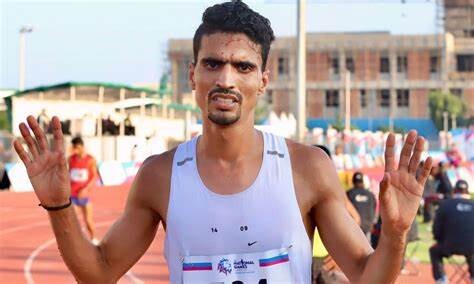
Avinash Sable holds the current event record in the Indian elite men’s category, with a time of 1:15:17, and L Suriya holds the women’s record, with a time of 1:26:53.
The well-stocked men’s field will be led by the current sensation Gulveer Singh, who is in the midst of a purple patch. He is the current 5000 m (13:11:82) and 10,000 m (27:14:88) national record holder, and has also won a gold medal at the 17th Asian Cross-Country Championship 2024 held in Hong Kong recently. He is also the Asian Games 2022 bronze medallist in the 10,000 m.
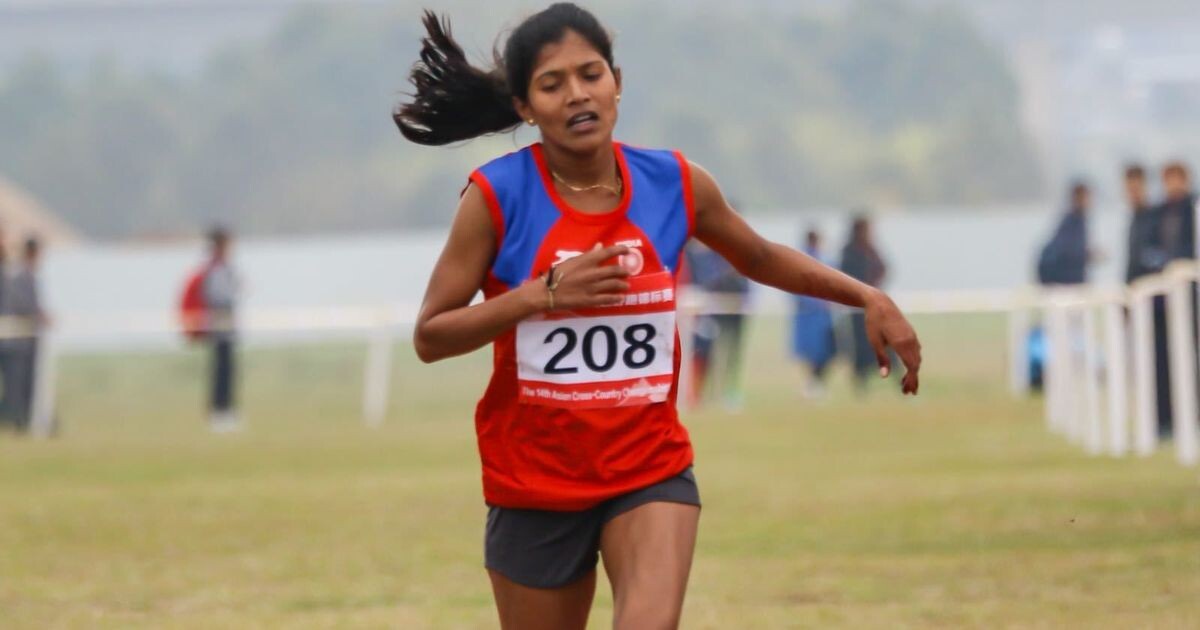
Sawan Barwal, the defending champion (1:17:49), returns to Kolkata after winning Delhi Half Marathon 2024 along with Abhishek Pal, the winner of the 2022 edition of TSK 25K. He also won a silver medal at the recently concluded Asian Cross-Country Championship and DHM 2023. The men’s challenge will also see Kiran Matre looking to be a dark horse with a top-of-the-podium finish in World 10K Bengaluru 2024 with a new Indian Course Record. He came third at DHM 2024.
While recounting his recent exploits Gulveer Singh said, “The 2024 session was very good for me. I set four national records in this session, and I’m so motivated. International standards are very high as compared to India. We got a pacer there to do our best. This is my first time in World 25K and I will try to finish in the top three.”
Sanjeevani Jadhav will be the pre-race favourite in the women’s field. She recently won the World 10K Bengaluru 2024 and also earned a silver medal at the Asian Cross-Country Championship. She was also the winner of the 2022 edition (1:34:23) of TSK 25K. She is in red hot form, but she will get tough competition from Lilli Das, who won the DHM 2024. Kavita Yadav, winner of DHM 2023 and second at DHM 2024, will be no pushover either.
“I am well prepared for the World 25K Race. The 2024 year was good for me individually, but I am more focused on 2025 because I am preparing for the Asian and World Championships, and I want to do my best in these championships.
“TSW 25K is more important because we get a chance to compete with the world’s best athletes, and it’s a great opportunity to give our best performance individually and do my personal best in the race. This year, I will try to break the course record my senior colleague L Suriya made earlier,” Sanjeevani said.
With a bright line-up of athletes only one can imagine the competition in store when the flag waves on Sunday.
by Statesman News Service
Login to leave a comment
Kolkata 25k
In Kolkata, a city rich in history, culture and custom, the third Sunday in December is a date that is eagerly anticipated. The Tata Steel Kolkata 25K (TSK 25K) has become synonymous with running in eastern India since it began in 2014. India’s first AIMS-certified race in the unique 25 km distance, the TSK 25K went global in its fourth...
more...Ezekiel Kemboi offers advice to India’s Avinash Sable on becoming a world-class steeplechaser
The four-time world champion has encouraged India’s Avinash Sable to adopt strategic methods to elevate his steeplechase career.
Legendary Kenyan steeplechaser Ezekiel Kemboi has extended a golden piece of advice to India’s rising star Avinash Sable.
The two-time Olympic champion and four-time world champion emphasized the importance of high-altitude training to build strength, endurance, and resilience.
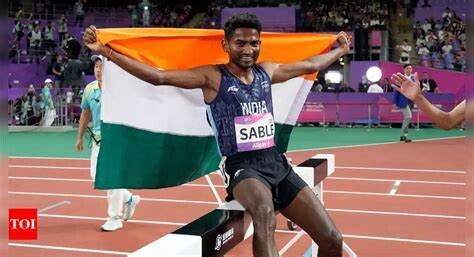
During his visit to India, Kemboi shared his insights on what it takes to excel in the grueling 3000m steeplechase event.
“I think the Indian guy Sable, the steeplechaser, the boy is still young. He still has a lot of time. What I want him to do is to have some motivation for himself. To have a vision, to have a target. To target what comes in a year, like world championship, Olympics," he said.
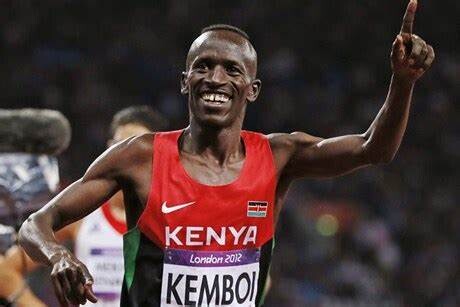
Sable, who recently represented India in the men’s 3000m steeplechase at the Paris Olympics but finished 11th, has been touted as a promising athlete on the global stage.
The 30-year-old has already made history for India, clinching a silver medal at the 2019 Asian Championships, another silver at the Commonwealth Games, and a gold and silver at the 2023 Asian Games in Hangzhou.
However, Kemboi believes that Sable has the potential to achieve even greater success if he embraces a more tailored training regimen.
Kemboi, widely regarded as one of the greatest steeplechasers in history, suggested that Sable train in the high-altitude regions of Kenya or Ethiopia, known for producing world-class distance runners.
“I also want to request if it could be possible for him to go to Africa… Kenya or in Addis Ababa, Ethiopia for some intense training which will focus on building up his endurance so that he gets more power while running,” Kemboi advised.
The Kenyan legend stressed the role of high-altitude training in preparing the body for the physical demands of steeplechase, a race that combines speed, stamina, and technical skill over water jumps and barriers.
“Just go for high-altitude training... because we have the best altitude for training in the regions of Kenya and Ethiopia for his body system to adapt to endurance,” he added.
Kemboi, who dominated the water-and-barrier race for more than a decade, has an unmatched legacy in the sport.
He is one of the few athletes to win two Olympic gold medals in steeplechase (2004 Athens and 2012 London) and four World Championship titles (2009, 2011, 2013, and 2015).
His illustrious career also includes three silver medals at the World Championships and a silver medal at the 2010 Commonwealth Games in New Delhi.
Reflecting on his experience, Kemboi highlighted the significance of setting clear goals and following a structured approach to training.
“What I want him to do is to have some motivation for himself. To have a vision, to have a target,” Kemboi reiterated, encouraging Sable to aim for success at future World Championships and Olympics.
Sable’s journey from modest beginnings to becoming a national icon has already inspired countless young athletes in India.
Kemboi also acknowledged Sable’s youth and determination as assets that could help him achieve a breakthrough on the international stage.
The Kenyan champion invited Sable to join him for training at his base offering a golden opportunity to learn from one of the sport’s finest.
by Festus Chuma
Login to leave a comment
Daniel Ebenyo, Benson Kipruto confirmed for high-profile race in India
Daniel Ebenyo and Benson Kipruto are among top runners scheduled to compete in India this weekend.
If you think athletes are taking a break from running since the festive season is here, maybe you should fasten up your seat belt because things are just getting started.
The track season is now over and the runners have shifted focus to the road races to continue chasing the bag and staying in the loop as far as fitness is concerned. Top athletes have since been confirmed for the Tata Steel World 25K Kolkata, the World’s 1st Gold Label 25K scheduled for December 15.
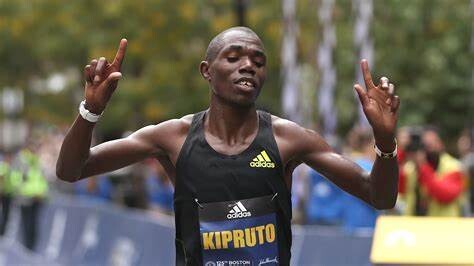
Daniel Ebenyo is not resting on his laurels and he is just fresh from racing in the senior men’s race at the Athletics Kenya cross-country leg in Bomet. Ebenyo has had a mixed season and he was just taking some time off before coming back into the grind, ready to show the world what they have missing out on.
He was hoping to make his Olympic debut in Paris, France but a tragic fall during the 10,000m trials at the Prefontaine Classic saw him miss out on a podium finish, something that still haunts him to date. Daniel Ebenyo insisted that he was in the form of his life and would have won Kenya a medal.
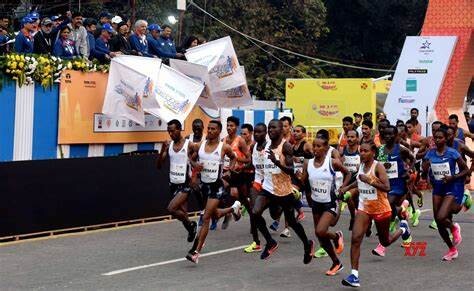
The world 10,000m silver medallist made a huge milestone later in the season, making his full marathon debut at the Chicago Marathon where he placed fifth. He returns to a familiar course where he threatened the 25km world best last year with his dominant win. He won the race in a new course record time of 1:11:13.
“The Kolkata roads are fast, and conditions are ideal; it is a perfect opportunity for me to defend my title and better my timing,” the reigning champion Daniel Ebenyo revealed.
He will be challenged by Benson Kipruto, a master in road running who will be out to continue his dominant form in India. Kipruto won the Tokyo Marathon earlier this year, beating Eliud Kipchoge and then proceeded to claim the bronze medal at the Paris Olympic Games.
Meanwhile, the women’s defending champion, Sutume Kebede also returns after winning last year’s race dominantly in 1:18:47. Kebede has been impressive this season, improving her personal best times in the half marathon (1:04:37) and marathon (2:15:55) to take initial world leads in both events this season.
US $142,214 prize money has been set aside for the top finishers. The top three finishers will win $15000, $10000, and $7000, respectively.
by Abigael Wafula
Login to leave a comment
Kolkata 25k
In Kolkata, a city rich in history, culture and custom, the third Sunday in December is a date that is eagerly anticipated. The Tata Steel Kolkata 25K (TSK 25K) has become synonymous with running in eastern India since it began in 2014. India’s first AIMS-certified race in the unique 25 km distance, the TSK 25K went global in its fourth...
more...Former pro runner arrested for relationship with high-school student
Charlotte, N.C., high school running coach and former elite runner Matthew Elliott was arrested on Wednesday and charged with two counts of “indecent liberties” with a student. Last Friday, the victim, who is now an adult, came forward to the local police department, reporting the inappropriate relationship she had with Elliott, who was her cross-country coach while she was enrolled at the school, Charlotte Country Day.
Reportedly, the victim told officers that Elliott flirted with her and made “numerous advances,” and that they had an inappropriate relationship.
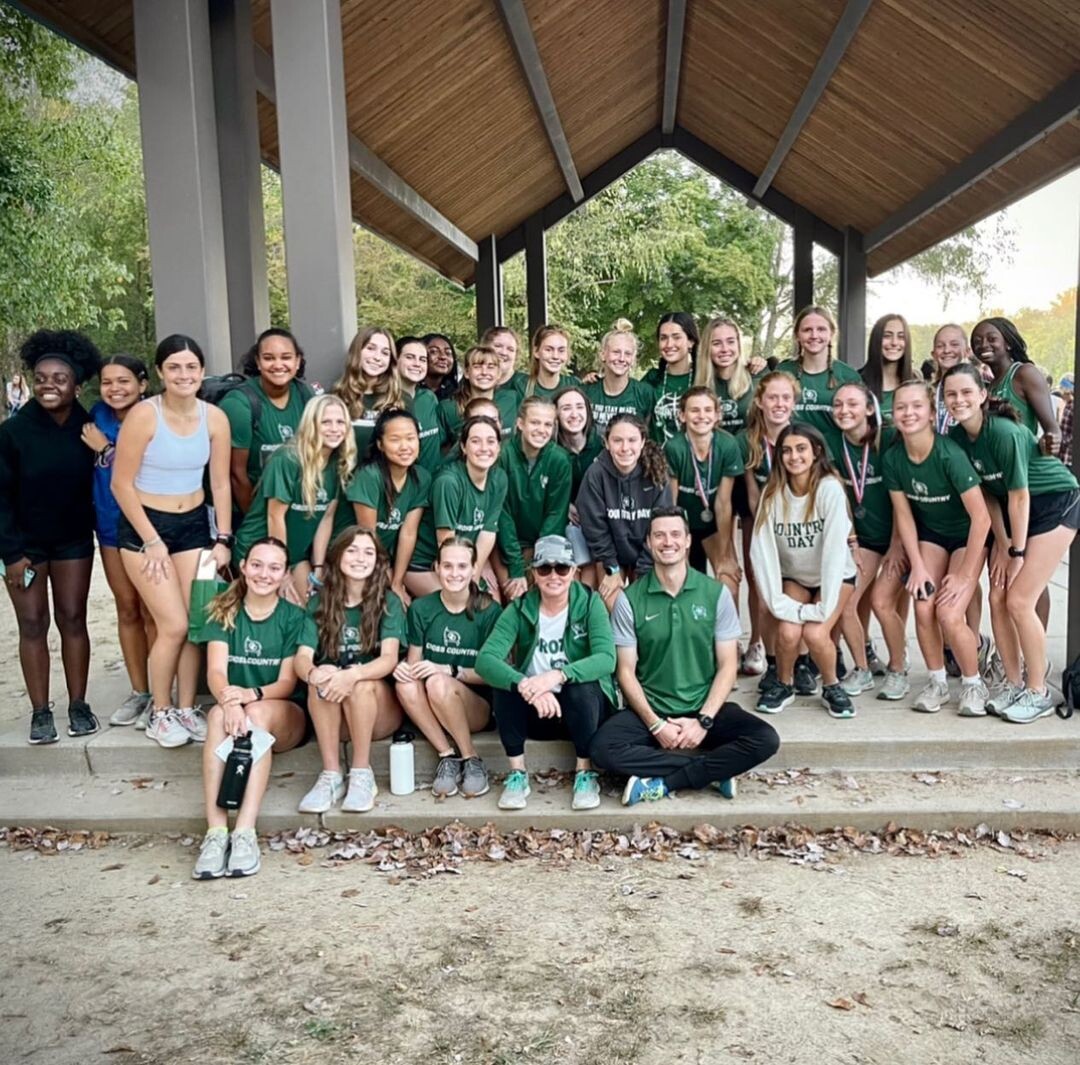
Elliott, 39, had been a coach and a substitute teacher at the high school since 2015. After the allegations emerged, the school terminated Elliott’s employment, barred him from their campuses and informed families and alumni of the misconduct. The statement revealed that the victim attended the school within the past few years.
“America’s fastest kindergarten teacher”
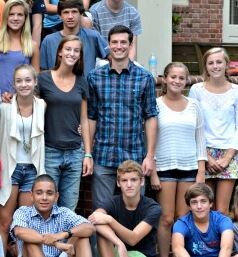
The development comes years after Elliott rose to fame in 2013 after placing fourth in the 1,500m at the U.S. Track and Field Championships, beating elite runners while teaching full-time. An emotional post-race interview with Elliott went viral; the athlete even received autograph requests in the mail. That year, he was referred to as “America’s Fastest Kindergarten Teacher,” and was a cover model for both Runner’s World and Running Times magazines.
Elliott was a kindergarten through third-grade teacher for children with special needs at the Palmetto School in Rock Hill, S.C. The magazine story revealed that the teaching job required Elliott to act as a bus driver as well; he drove the kids to and from their homes before and after school.
During his career, Elliott was coached by American Distance Project coach Scott Simmons and joined the Team Indiana Elite running group alongside athletes such as William Leer. He broke the four minute barrier on multiple occasions and became a Brooks-sponsored athlete.
He set his sights on making the 2016 U.S. Olympic team, and gave inspirational talks to cross-country teams about his journey. In 2021, Elliott was featured in a podcast for The Unearthing Project, where he shared his running and coaching stories. Elliott hasn’t competed since 2019, according to his World Athletics profile.
None of the recent allegations against Elliott have been proven in court. News sources report the former coach was held on a USD $10,000 bond and was released on Thursday morning, but was set to face a judge that afternoon.
by Cameron Ormond
Login to leave a comment
How an Indian tech company built a $19 billion brand by sponsoring the New York City marathon
Typically, when a company decides to sponsor a major event, it is looking to build awareness throughout a broad cross section of consumers for its products. So when TCS, the tech services unit of Tata Group, a large Indian conglomerate that is hardly a household name in the U.S., first announced it would be the title sponsor of the New York City marathon in 2013, it was a bit of a head-scratcher.
After all, TCS sells its services to businesses, not individual consumers, nor is it in the running business. But on the eve of the 10th anniversary of the first race in that sponsorship, which has since been renewed through 2029, TCS chief marketing officer (second photo) Abhinav Kumar says it has been a massive success. “It’s a phenomenal, phenomenal event for engagement,” Kumar tells Fortune in an interview over Zoom, speaking from his office in Brussels. Kumar cites a statistic from an outfit called Brand Finance, saying that the TCS brand is now worth $19.2 billion, up almost ninefold from 2010, thanks in large part to growing awareness of the name.

When TCS announced the sponsorship with the New York City marathon organizer, New York Road Runners, it was already the sponsor of a race in Mumbai, where it is headquartered, and the Amsterdam marathon. But it was also sponsoring events in other sports like cricket, and TCS realized it would be better off concentrating its efforts in one sport. (It still sponsors a Formula E event, but otherwise it’s focused on running.)
Since landing New York’s marathon, TCS, which spends $40 million a year on sports sponsorships, has picked up the London and Toronto marathons, with the recent addition of Sydney, Australia. In all, TCS sponsors 15 road races around the world, all but two of them marathons. (It is the title sponsor for most of those races, but for the Chicago and Boston marathons it is the technology sponsor only, not the title sponsor.)
Consolidating its sports sponsorship dollars into one sport is allowing TCS to get more marketing bang for its buck by creating visibility more regularly throughout the year, rather than diffusely at unrelated events, Kumar adds. So while this sponsorship is unusual in that it is not by a brand like New Balance, Brooks, or Nike looking to sell to consumers, it raises TCS’s visibility very strategically, reaching as many people as possible through a relatively small number of major events. The New York City marathon is the biggest in the world with more than 50,000 finishers and hundreds of thousands of spectators lining the 26.2-mile run through the city’s five boroughs.
“Our industry, our product is invisible,” says Kumar. So the focus on running allows TCS, which is part of the massive Tata Group, crucially to get in front of a lot of executives given running’s deep reach into the professional class. “We are engaging with 4,000 business executives with our running platform. But we also see a rise in the sport, and the corporate sector is taking up fitness in a big way,” he says.
TCS’s sponsorship work with the big marathons goes beyond just slapping its name on the race. For the 2014 New York marathon, TCS built an app for both athletes and spectators. (TCS’ predecessor as the New York marathon sponsor was Dutch bank ING, which had planned on using the sponsorship to develop a larger retail banking presence in the U.S., a business from which it has since withdrawn.)
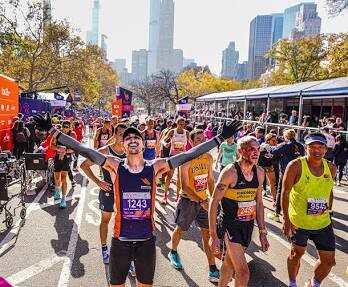
Over the years, the New York City marathon app has grown more sophisticated with a view to making the race what Kumar calls “the most technologically advanced marathon.” For years, the app offered athlete tracking. And then two years ago, TCS added live broadcast capabilities, enabling the race to be seen in 150 countries, bringing the event to new audiences.
Now TCS is tinkering with augmented reality and last year created what it calls the first digital heart of a professional runner, namely prominent female marathoner Des Linden, meaning it helped build a digital twin that allowed her to measure her health and performance and transform her training. Kumar says he hopes the tech can eventually help a runner finally break the two-hour marathon barrier. But perhaps more crucially, this aspect of the sponsorship allows TCS to showcase its tech in a way that could garner interest from clients like health care providers and medical device makers.
“It’s an opportunity for us to get our brand engaged with a larger set of people in an experiential manner,” says Kumar. Still, don’t expect TCS to go around snapping up all that many more races, given the costs of sponsorship. The marathons TCS wants to sponsor are typically large events in gateway cities and where it has a large business presence.
There’s a personal side to this story, too, Kumar says. TCS’s former CEO N. Chandrasekaran took up running for health reasons. To spread the word about the value of running for health and wellness, he created a health app for employees years ago. Now, of the 600,000 TCS employees, some 200,000 are runners at a variety of distances, says Kumar, who despite his nickname as TCS’s “chief marathon officer,” a play on the CMO title, does not himself run.
“It’s become part of the identity of our company, and it’s unleashed this revolution of wellness inside our company,” says Kumar.
by Phil Wahwa (Fortune)
Login to leave a comment
Andrew Bowman wins Detroit Free Press Marathon men's race; then greets his triumphant wife
Andrew Bowman said it was all part of the master plan.
The 30-year-old from Ferndale held up his end of the deal when he captured the men’s title with a time of 2 hours, 17 minutes and 47 seconds in Sunday’s 47th Detroit Free Press Marathon presented by MSU Federal Credit Union.
And just 25 minutes later, he was waiting at the finish line with a big hug and embrace of his wife, Sydney Devore-Bowman, who captured the women’s title with a 26.2-mile clocking of 2:42:46.
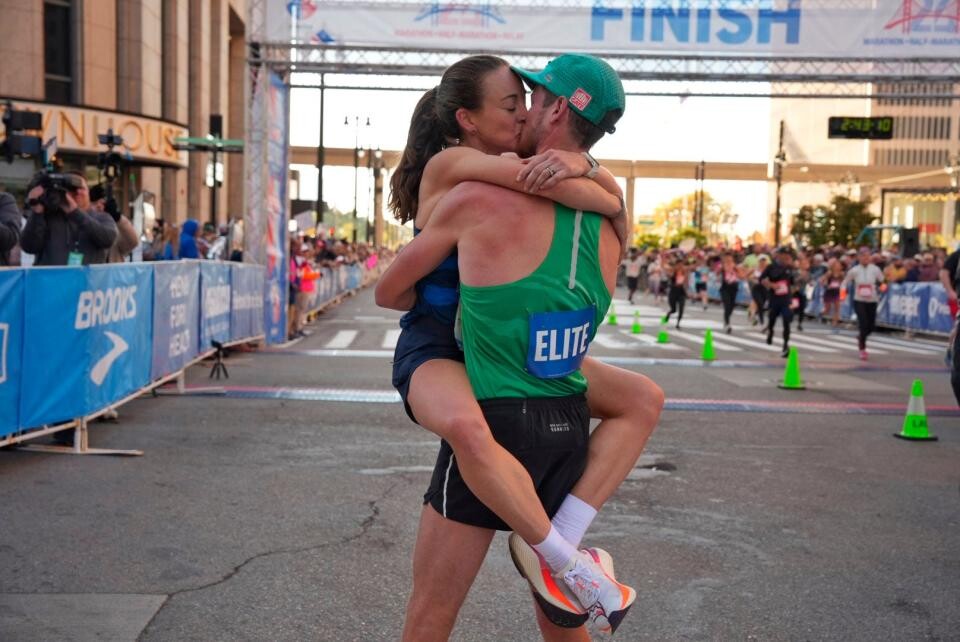
Both had previously won marathons at Pittsburgh, Sydney in 2018 and Andrew on May 5 of this year, but this was a first time to celebrate together in their burgeoning long-distance running careers.
Good weather, but unwelcome wind at the end
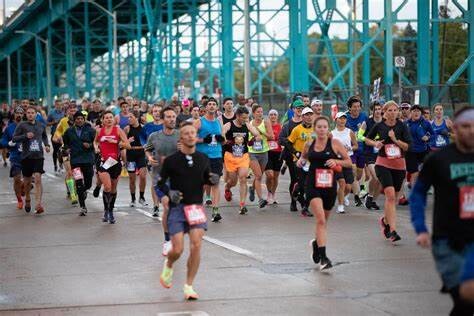
“The motivation with Pitt is where she had won it,” said Andrew, a running coach and personal trainer. “That’s where her marathon career took off and she’s the one that got me into marathon running. And she was like, ‘This could be a shared moment for us.’ And I’m so grateful for that. It’s another moment to share in this thing that we’re passionate about — all the highs and the lows. And it’s just a good reminder, we have this common interest, but even coming into this with all the nerves, we just kept looking at each other and we’re like, ‘Even if we don’t pull it off, I still love you and I’m still grateful to be on this journey with you and to enjoy this moment.’ ”
The race was run under nearly ideal conditions, low 40s at the start and winds up to 11 mph on the international course that crossed both the Ambassador Bridge and Detroit-Windsor Tunnel. The route also featured Detroit neighborhoods, including Woodbridge and Indian Village, passing through the Eastern Market and along the Dequindre Cut before ending at Campus Martius.
“The wind was a factor,” Bowman said. “It got a little bit breezy, especially coming towards the finish. Especially when that starts to happen and you are at the end of your rope. It’s that much more difficult to stay motivated to keep pushing.”
Bowman, a 2024 U.S. Olympic Marathon Trials qualifier with a personal best 2:15:54, pulled away from South Haven’s William Cadwell (2:21:06) and Lansing’s Zacchaeus Widner (2:21:22) over the final 6.2 miles of the race, but it wasn’t easy.
Bowman, posting an average pace of 5:24 per mile, felt like he was cruising during the early portions of the race, but it got much harder later on.
Impressing their Ferndale friends
“I kept telling myself, ‘Keep it easy, keep it easy.’ By my 10K it’s like 5:02 or 5:03 (minutes per mile) and it feels terrific and fairly easy, but then I started doing 5:13, there was a 5:20 in there,” Bowman said. “You just feel like a snail and all you can think about is, ‘Oh, goodness, I hope nobody is coming up behind me.’ All you’re trying to do is smile at the people, keep yourself in it, stay excited. And it’s the toughest spot ever because it’s you against that voice that keeps saying, ‘You’re not going to make it, you’re not going to make it. You’re in a bonk, you’re going to start walking.’ And, so if you can overcome that … I think that’s the biggest feeling of relief right now. I saw the banner for 26 (miles), I knew where I was, I made turn, ‘Just get there. You’ve got this.’ ”
Just getting the finish line proved to be challenge.
“You’re depleted by that point to have the will to be able to keep going forward," Bowman said. "It’s extraordinarily difficult no matter how many times I do this. Whether it was Pitt, Ottawa, the (Olympic) Trials, you’ve got to stay in it. Couldn’t be more grateful and adjusting my body to be able to do this.”
Bowman hails from the small farm town of Marlette, where he led his high school cross-country team to a runner-up finish in the Division 3 state meet. He went on to run for coach Paul Rice at Oakland University.
Following his wife’s win, Andrew was looking forward to celebrating the victories later on in the day with their Ferndale friends.
“We have a running group that we with meet with every Thursday. And so, to do this in front of them — and like I have athletes that I coach here — to show them what’s possible ... it means a lot. I’m just happy to be in this position to be able to show them like, 'Here’s what you can do if you really like stay consistent and just love what you do.’ It’s my second win in the marathon and to do it here is special, too.”
For the first time, the Detroit Free Press Marathon included an Elite field, featuring more than 80 top runners from Michigan, Canada and North America. Winners of the men's and women's division each win $3,000; the handcycle winner takes home $600.
The record for male runners was set by Greg Meyer, who needed just 2:13:07 to cover the 26.2-mile course in 1980. Doug Kurtis holds the record for Detroit marathon victories with six (1987-92), with Christopher Chipsiya (2018-19), Zachary Ornelas (2013, 2015) and Ryan Corby (2021-22) also claiming repeat titles.
by Brad Emons
Login to leave a comment
Detroit Free Press Marathon
Our marathon course offers international appeal, traversing both downtown Detroit and Windsor, Ontario, crossing the border at both the Ambassador Bridge and Detroit-Windsor Tunnel. You will run through historic neighborhoods, around beautiful Belle Isle, and along the spectacular RiverWalk. ...
more...Vedanta Delhi Half Marathon: Joshua Cheptegei wins men's title; Alemaddis Eyayu bags women's crown
Olympian Joshua Cheptegei lived up to his billing to take home the men’s crown, while Alemaddis Eyayu pushed pre-race favourite Cynthia Limo behind for a surprise win in the women’s race in today’s Vedanta Delhi Half Marathon, a World Athletics Gold Label Road Race, at the Indian capital.
Kenya’s Alex Matata (27) led a major part of the race with his teammate Nicholas Kipkorir, who ran his maiden half marathon internationally. Kipkorir was a bronze medalist in the 5 km World Championships last year.
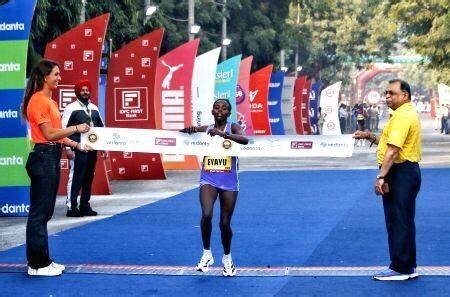
Matata was unbeaten in all three races he took part in in Europe earlier this year, with two sub-60 minutes clocking in two of them. That made the race exciting, and everyone was looking for a fast finish timing from the men’s winner. Matata keeps the lead until the runners turn toward the finish line in the Jawahar Lal Nehru Stadium, where the race commenced less than an hour earlier to decide the 2024 title.
Cheptegei, running seconds behind the Kenyan, realized the now-or-never situation and came from behind to snatch the lead from Matata to win in 59 minutes 46 seconds. Matata (59:53) and Kipkorir (59:59) complete the podium with the Ugandan.
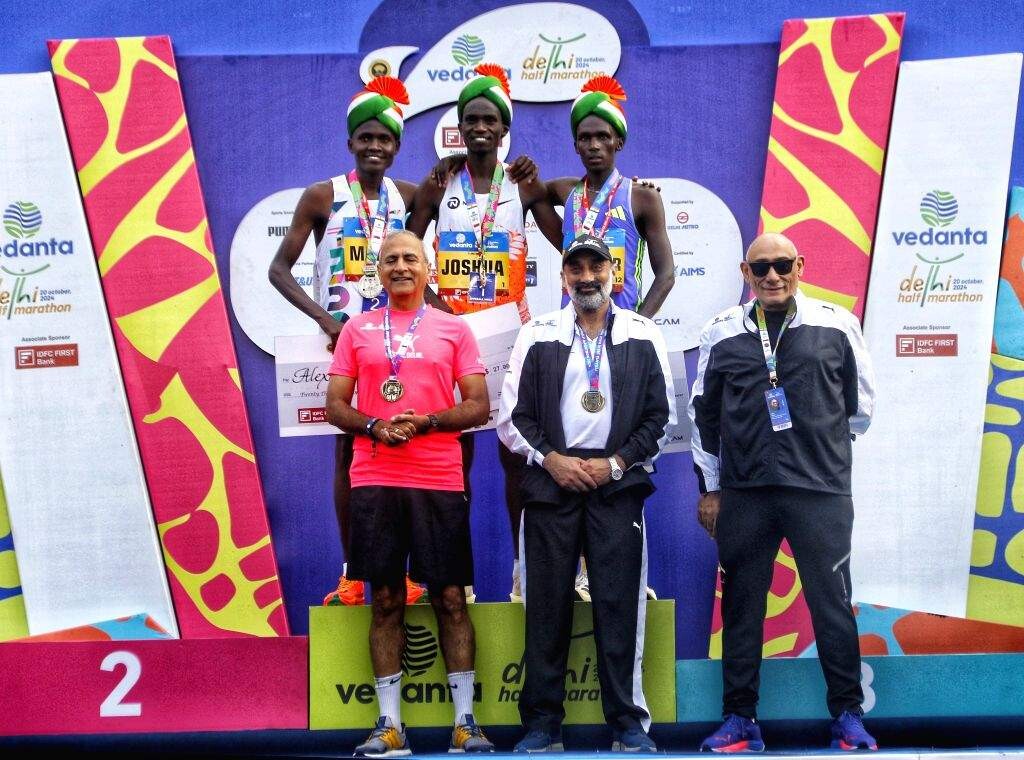
Incidentally, the Vedanta Delhi half marathon was one of the fastest races in the World and usually saw incredible timings by the participants. Ethiopian Deriba Merga was the first to post a sub-60-minute winning time in 2008 when all the podium finishers dipped under 1 hour. This action was repeated several times in some of the subsequent editions at Delhi, wherein 2014 witnessed a record number of nine runners finishing within 60 minutes.
Former world champion Muktar Edris from Ethiopia, another pre-race favourite, finished fifth (60:52), while Tanzania’s Alphonce Simbu (60:40) got the fourth place.
Cheptegei, with multiple world titles on his cap, said that “this win in Delhi was special to me because it is my first-ever victory in a Half Marathon. India has been important for my career, and this country now means a lot to me. I felt good throughout the race despite the slow start. My first aim was to catch up with Nicholas (Kipkorir) and then Alex (Matata) in the final few kilometres of the race. I am delighted with my performance and hope to continue in the same manner in the future races”.
Thank you, Vedanta Delhi Half, for a wonderful race. This has been a special race that tested my mind. Initially, I felt some problems in my feet around 16-17 km, but I decided to push and catch up with Nicholas, and then for about two kilometers, we pushed each other. I took it slow because I didn’t want to burn out, and I wanted to finish strong. Now I go back home with a feeling to conquer the roads”, he further revealed.
Eyayu beats favourite Limo to win the women’s title:Alemaddis Eyayu extended the Ethiopian winning streak in Delhi. Kenya’s Cynthia Limo, the pre-race favourite, led the field right from the beginning while Scotland’s Commonwealth Champion Eilish McColgan trailed behind all the time. McColgan had the fastest and only sub-66 minute timing among the elite women who took the starting lineup today. However, two Ethiopians, Eyayu and Tiruye Mesfin, stuck with Limo for the entire part.
Cynthia Limo, who won the women’s title here in 2015, had returned to Delhi after nine years. Following her victory in the Indian capital, the Kenyan runner secured a silver medal in Cardiff's 2016 World Half Marathon championships.Eyayu and Limo passed the 10K mark together and remained the sole leaders in the women’s race. However, the Ethiopian runner pulled ahead in the second phase of the race, leaving Limo 10-15 seconds behind. It was a crucial deciding factor at the end as Eyayu crossed the finish line 68:17 for the top spot, while Limo did so 10 seconds later. Mesfin clocked 69:42 for third and McColgan 69:55 to finish fourth and outside the podium.
“I had a good race, tried to keep my pace and aimed to finish well. I am happy to have achieved it” Eyayu said during the post-event press conference.
Limo said she was happy to join the Delhi podium after nine years. “Securing second place is incredible, one that fills me with pride. The atmosphere was electric, with people lining the streets and cheering us. It’s heartwarming to see how the city comes together. This experience has been truly special; the support from the spectators, their enthusiasm, and the overall energy of the event have made this return to Delhi unforgettable,” was Limo’s reaction to the race.
The total prize purse for the Vedanta Delhi Half Marathon is USD 260,000. The podium finishers both men and women will take home USD 27,000, USD 20,000 & USD 13,000 respectively.
Sawan Barwal betters previous performance
Sawan Barwal will go home with the gold medal this time around after finishing on the podium of the Vedanta Delhi Half Marathon for a second straight edition. With a timing of 1:02:46, Barwal finished ahead of Puneet Yadav, bettering his personal best in the process. Kiran Matre grabbed the third spot to complete the podium for the Indian Elite Men's event.
Barwal, who won bronze in 2023, was behind Puneet at the 10-kilometer mark, but left his best for the final stretch of the race. Taking advantage of an opening, he pushed himself in the final quarter and eventually secured the top spot with a difference of almost 1 minute and 9 seconds.
After the race, an emotional Sawan was ecstatic about turning the bronze to gold as he shed some light on his performance, saying, "It has been a great ride from the last Vedanta Delhi Half Marathon to the current edition. We are nearing the end of the season, and I was happy with the preparations throughout the season, and I used that to my advantage this time around. I did not enter thinking about finishing in 62 minutes, but the way I started and when I settled into the race, I knew I could go all the way."
Lili Das has dream debut
In the Indian Elite Women's category, Lili Das was miles ahead of her competitors, securing the gold with a timing of 1:18:12. Coming in second was last year's winner Kavita Yadav, who clocked 1:19:44 as she finished in the top 3 for a second straight edition of the Vedanta Delhi Half Marathon. In third place was 2022 Asian Games bronze medallist Priti Lamba, who crossed the finish line at the 1:20:21 mark.
In the 9th position at the 10-kilometer mark, Lili upped the ante to reach the top spot at the 15th kilometer. She maintained the lead with a massive effort and went on to win the gold by a massive difference of 1 minute and 32 seconds ahead of Kavita.
Lili, who fought cramps on the way to her gold, spoke about the experience of landing on the podium in her very first Vedanta Delhi Half Marathon, "It is a very good feeling to win the Vedanta Delhi Half Marathon in my very first attempt. I felt a little bit of dehydration during the race which I was worried about, but I am glad that I was able to finish the race. I cramped up around the 19th kilometer and it was a scary moment, but I fought it and worked very hard to finish the final 2 kilometers. After doing well in track and field events, winning gold in a half marathon feels great."
The people of Delhi came together once again to showcase the spirit of their city and promote healthy lifestyles at the Vedanta Delhi Half Marathon. Thousands of runners, from seasoned athletes to enthusiastic amateurs, took to the streets, turning the event into a vibrant celebration of fitness and community. The race not only highlighted the city's commitment to well-being but also raised awareness for various charitable causes, embodying the essence of unity and social responsibility that Delhi is known for.
by Republic World
Login to leave a comment
Vedanta Delhi Half Marathon
The Airtel Delhi Half Marathon is a haven for runners, creating an experience, that our citizens had never envisaged. The streets of Delhi converted to a world-class running track. Clean, sanitized road for 21.09 kms, exhaustive medical support system on the route, timing chip for runners, qualified personnel to ensure smooth conduct of the event across departments. The race...
more...Vedanta Delhi Half Marathon 2024: Muktar Edris, Eilish McColgan lead field
The Vedanta Delhi Half Marathon 2024, a World Athletics Gold Label Road Race, is set to witness a world-class international roster headlined by Two-time Olympic gold medalist Joshua Cheptegei. He will be joined by the two-time 5000m World Champion Muktar Edris, which increases expectations for a course record in the men’s race.
The women’s field includes the 2022 Commonwealth Games champion in the 10,000m, Eilish McColgan. This prestigious event will take place in the heart of India’s National Capital on Sunday, October 20, 2024.
Fresh from his victory in the 10,000m at the Paris 2024 Olympics, Uganda’s Cheptegei is poised to make his debut in the Vedanta Delhi Half Marathon and has been a three-time World Champion in the 10,000m and boasts a personal best of 59:21 in the Half Marathon. His stellar career also includes a 5,000m gold and 10,000m silver at the Tokyo 2020 Olympics.
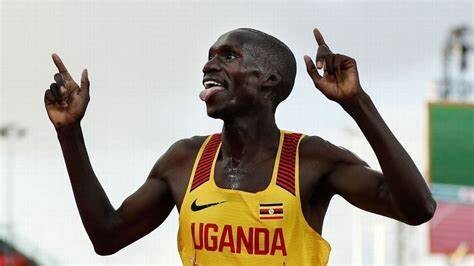
Ahead of the race, Cheptegei expressed: “I’m incredibly excited to debut at the Vedanta Delhi Half Marathon. This race is known for its energetic atmosphere, fast course, and unmatched Hospitality. I can’t wait to soak it all in and push myself to deliver a memorable performance. With such a competitive line-up, it will be an exciting challenge, and I’m aiming for nothing less than the top spot.”
Cheptegei will face formidable opposition from Ethiopia’s Muktar Edris, who will be returning to the Vedanta Delhi Half Marathon after 2022. A star of the sport at the junior level, Edris finished fourth on debut in the Delhi Half Marathon in 2020 with an impressive run of 59:04. Before that, he won two world championship titles in the 5,000m during 2017 and 2019.

Eilish McColgan leading women’s line-up
Eilish won gold in the 10,000m at the 2022 Commonwealth Games in Birmingham, setting a new Games record, and settled for silver in the 5000m.
McColgan holds the European record for the 10 km road race and British records for multiple distances. She has also represented Great Britain in four Olympic Games (2012-2024) and Scotland in three Commonwealth Games (2014-2022). She holds Scottish records in multiple events and has claimed seven national championships, cementing her status as one of Scotland’s most accomplished runners. Last year, she won the Berlin half-marathon with a personal best 65:43.
Several top athletes, including Kenya’s Cynthia Limo (66:04), Ethiopia’s Yalemget Yaregal (66:27) and Tiruye Mesfin (66:31), and Tanzania’s Magdalena Shauri (66:37), are joining McColgan in the women’s race. With five women having clocked times under 67 minutes, the competition promises to be thrilling and fast-paced.
Ethiopians Amdework Walelegn (58:53) and Yalemzerf Yehualaw (64:46) have held the Course Records in the Vedanta Delhi Half Marathon since 2020.
The Vedanta Delhi Half Marathon, with a prize pool of USD 260,000, will begin at the iconic Jawaharlal Nehru Stadium, where elite athletes will be joined by India’s top runners and passionate amateurs, united in the spirit of #AaRangDeDilli.
by Khel Now
Login to leave a comment
Vedanta Delhi Half Marathon
The Airtel Delhi Half Marathon is a haven for runners, creating an experience, that our citizens had never envisaged. The streets of Delhi converted to a world-class running track. Clean, sanitized road for 21.09 kms, exhaustive medical support system on the route, timing chip for runners, qualified personnel to ensure smooth conduct of the event across departments. The race...
more...Cherop, Negewo and Kipkemoi are set to challenge for victory in Istanbul
A mix of highly experienced marathon runners with strong personal records and younger challengers could produce some fascinating races at the 46th Türkiye Is Bankasi Istanbul Marathon on November 3rd.
Ethiopia’s Abebe Negewo and Kenneth Kipkemoi of Kenya head the current start list with personal bests of sub 2:05:00. Kenya’s former World Championships’ marathon bronze medalist Sharon Cherop is the fastest woman on the list with 2:22:28. Cherop, Negewo and Kipkemoi have all turned 40 this year, but they are still going very strong. They will have to hit top form if they want to challenge for victory in Istanbul. Ethiopians Kelkile Gezahegn and Sentayehu Lewetegn will be among their rivals while 24 year-old debutante Betty Kibet of Kenya could produce a surprise.
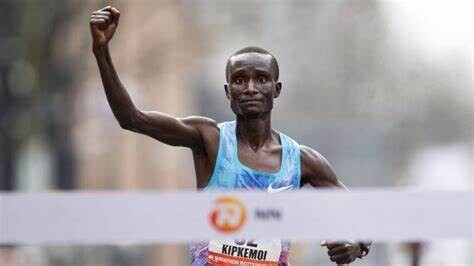
A total of 42,500 runners have entered the race that leads the athletes from the Asian side of the city onto the July 15 Martyrs Bridge and then into the European part of Istanbul. 7,500 of them will run the classic distance on 3rd November. The event is a World Athletics Gold Label Road Race, which guarantees high standards in every aspect. Entries will still be accepted until next Monday (October 14th) at: https://maraton.istanbul
“No marathon is run in a city that bears the traces of three great empires that have left a significant mark on world history. No marathon passes over a bridge that connects continents above a magnificent strait. Thanks to this unique feature, we believe that the Türkiye Is Bankasi Istanbul Marathon is the best thematic marathon in the world,” said Race Director Renay Onur.
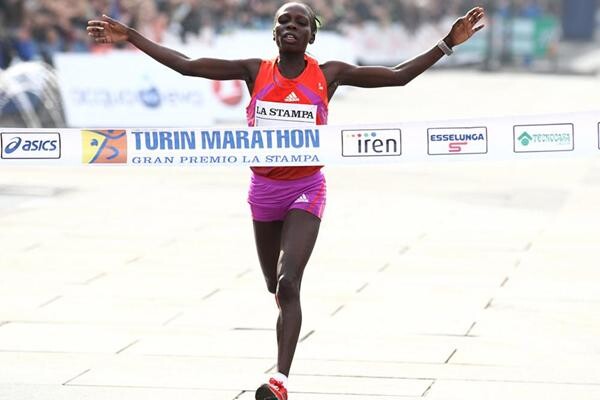
There are now many examples of runners who have turned 40 and still going strong: Kenenisa Bekele, Tadesse Abraham or Edna Kiplagat are among them. With a personal best of 2:04:51 Abebe Negewo is the runner with the fastest PB in the Istanbul field. He ran this time in Valencia in 2019 when he was fourth. While Negewo, who is also known as Abebe Degefa, has not raced as often as during his early career he produced one excellent marathon in each year: 2:05:27 in Valencia in 2021, 2:06:05 in Hamburg in 2022 and 2:08:12 in Rotterdam last year. Negewo has not competed yet this year, so if he wants to continue this streak of strong results Istanbul will be his best chance.
Kenneth Kipkemoi is the other top-class marathon runner in Istanbul’s men’s field who turned 40 this year. The Kenyan’s last three marathons were consistently fast: Kipkemoi ran 2:08:15 in Rotterdam in 2023 and then won the Eindhoven Marathon in the autumn with a personal best of 2:04:52. This year he returned to Rotterdam where he was fourth with 2:05:43.
Two Ethiopians who are more than ten years younger will be among the favourites as well. 28 year-old Kelkile Gezahegn, who has a PB of 2:05:56, is a runner who focusses fully on the classic distance. Since the start of his international career in 2016 he competed only in city marathons. He managed to win all his first four marathons in the year 2016, all in China. “The marathon is my distance,“ said Kellie Gezahegn when he won the Frankfurt Marathon in 2018. Dejene Debela is 29 years old and ran his personal best of 2:05:46 when he was runner-up in Chicago in 2019. After a two year-break, which seems to have been injury related, he came back this year with 2:09:33 in Taiyuan, China.
Sharon Cherop is the most prominent athlete in the elite field of the Türkiye Is Bankasi Istanbul Marathon. The 40 year-old Kenyan took the bronze medal in the marathon at the World Championships in Daegu, South Korea, in 2011. A year later Cherop won the prestigious Boston Marathon and in 2013 she clocked her PB of 2:22:28 when she was runner-up in Berlin. This PB makes her the fastest woman on the start list in Istanbul. Sharon Cherop is still going strong. Last year she won the Milan Marathon and this spring she was second in Hannover with 2:24:41. “I think I can run for a couple of more years,“ she said after the race in Germany.
Sentayehu Lewetegn will be among Sharon Cherop’s challengers. The Ethiopian ran a strong debut in Frankfurt in 2018 with 2:22:45 for sixth place. The 28 year-old could not improve this PB yet, but she came close in Ljubljana: Two years ago she was second there with 2:22:36.
Betty Kibet is an athlete who could have an immediate impact in the marathon. The 24 year-old Kenyan will run her debut over the classic distance in Istanbul. While she has a promising 66:37 half marathon PB she ran the Türkiye Is Bankasi Istanbul Half Marathon this April and finished sixth with a fine 68:39. Betty Kibet, who was a world-class junior athlete in her early career, has a strong 10k PB of 31:08 and ran 1:21:43 in Kolkata, India, for 25k in December last year.
by AIMS
Login to leave a comment
N Kolay Istanbul Marathon
At the beginning, the main intention was simply to organise a marathon event. Being a unique city in terms of history and geography, Istanbul deserved a unique marathon. Despite the financial and logistical problems, an initial project was set up for the Eurasia Marathon. In 1978, the officials were informed that a group of German tourists would visit Istanbul the...
more...Peres Jepchirchir reveals her next stop following dissapointing Paris 2024 Olympics showdown
Peres Jepchirchir has revealed her next step as she eyes redemption following her dissapointing 15th-place finish at the Paris Olympic Games.
Former Olympic marathon champion Peres Jepchirchir is targeting the world half-marathon record as she heads to the Vedanta Delhi Half Marathon, a World Athletics Gold Label event, scheduled for Sunday, October 20.
Jepchirchir, the reigning London Marathon champion, has not raced since her exit from the Paris Olympic Games where she faded to 15th place in a time of 2:26:51. The Kenyan long-distance running ace will be looking to bounce back in a commanding way with a world record.
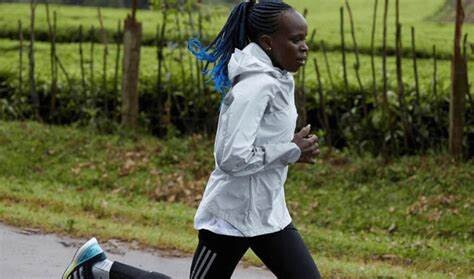
The women’s world record currently stands at 1:02:52 and was set by Letesenbet Gidey on October 24, 2021, at the Valencia Half Marathon and Peres Jepchirchir has plans to obliterate it and take back her crown when she steps on the track. A huge prize purse also awaits her as she seeks to make history in the Indian city.
The men’s race will be headlined by Joshua Cheptegei, the current world record holder in the 5000m and 10,000m. The reigning Olympic 10,000m champion will also be out to attack the world record and make an impact as he continues enriching his decorated athletics resume.
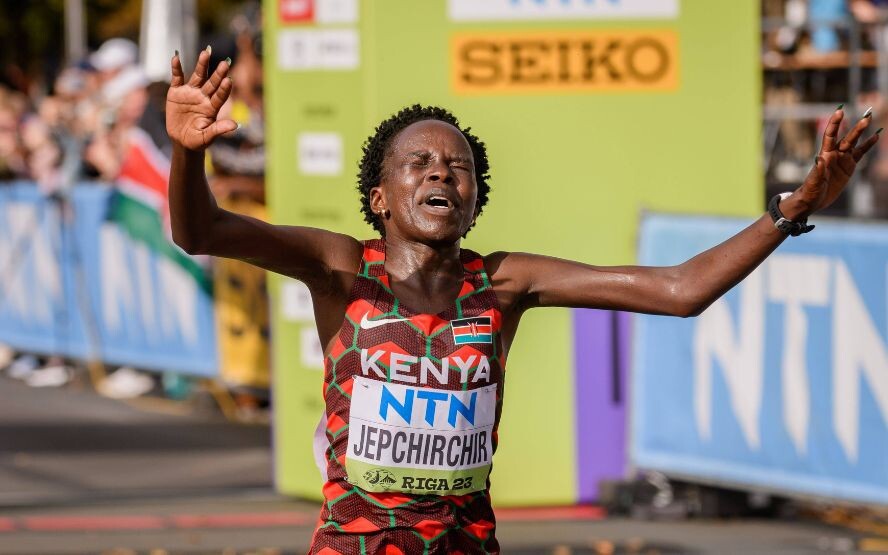
“This country holds a special place in my heart, as it’s where I made my international debut in 2014. It’s been a good season for me, and I am certainly looking at a course-record timing at the Vedanta Delhi Half Marathon. The energy and passion of the Indian running community are truly inspiring, and I’m excited to be part of this prestigious event,” Cheptegei said ahead of his return to the streets of the Indian city.
Meanwhile, a total amount of $260,000 prize money has been set aside for top finishers with the winners set to walk away with $27,000. In addition to this, there is an Event Record Bonus of $12,000.
by Abigael Wafula
Login to leave a comment
75-Year-Old Gopinath Mohan Running in Vedanta Delhi Half Marathon Proves Age is no Barrier
At 75, while many are content to observe life from the sidelines, Gopinath Mohan is actively moving forward-quite literally. A retired defense finance official, he has spent the last decade embracing running, proving that it's never too late to begin a new chapter.
His unexpected journey into running started at the age of 65. "In September 2014, I just ran in Mysore," he recalls. "I finished a 5K in 40 minutes. Even without prior experience, I felt I had something within me. I started running and never stopped. For the past 11 years, I've run daily."Since then, Gopinath has taken part in numerous events across India, including the renowned Vedanta Delhi Half Marathon. Although he hasn't participated in person, his excitement for the event is clear.
"Excellent, very nice," he says about the marathon. "Though I haven't done it in person, I've been participating virtually for the past five years. Whenever I run, even virtually, it feels like I'm with the crowd."
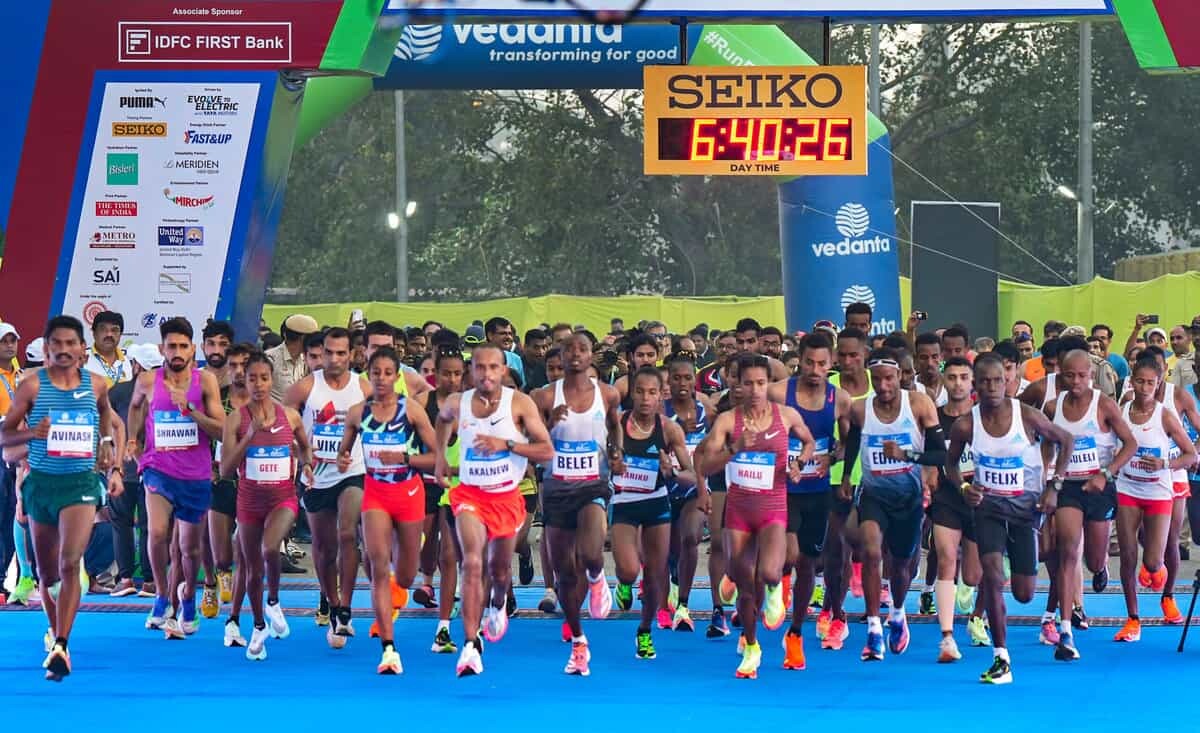
Thanks to technology, the Vedanta Delhi Half Marathon offers an immersive virtual experience for runners like Gopinath. "The app is fantastic," he says. "It announces the start, tracks your distance, and even alerts you about water stations. Even though I'm in Mysore, it feels like I'm in Delhi."
This virtual participation has brought joy and motivation to Gopinath, illustrating how technology can create connections and foster a sense of community among runners, no matter where they are. Gopinath's dedication is extraordinary.
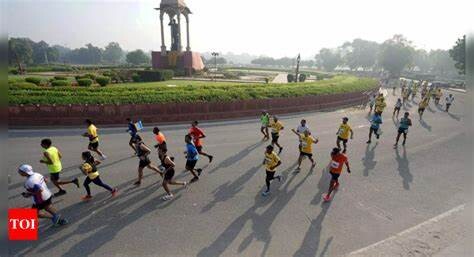
Over the last 11 years, he's run an incredible 57,412 kilometers. His achievements include around 380 medals and nearly 50 trophies, with an average of 25 to 30 events each year, including multiple half marathons.
But for Gopinath, running is more than just a way to collect medals. It's a lifestyle, a key to health and happiness. "Keep running, stay healthy," he advises. "Make running a part of your daily life, no matter your age or where you live. It allows you to fully enjoy your later years."
His daily commitment is unwavering-rain or shine, Gopinath runs 15 to 18 kilometers every morning. Even when traveling, he makes time for his run, adjusting the distance as needed.
Gopinath's message for those hesitant to start running is simple: "Don't be afraid to take that first step. Every journey begins with one step, and you'll be surprised by how far you can go."
As Gopinath continues to inspire others with his determination, his story is a powerful reminder that age is just a number. His participation in events like the Vedanta Delhi Half Marathon, even virtually, highlights the inclusive and unifying nature of running.
by Mykhel Staff
Login to leave a comment
Vedanta Delhi Half Marathon
The Airtel Delhi Half Marathon is a haven for runners, creating an experience, that our citizens had never envisaged. The streets of Delhi converted to a world-class running track. Clean, sanitized road for 21.09 kms, exhaustive medical support system on the route, timing chip for runners, qualified personnel to ensure smooth conduct of the event across departments. The race...
more...Emmaculate Anyango faces four-year ban following provisional suspension over doping
Kenya’s long-distance runner Emmaculate Anyango faces the prospect of a four-year ban after being handed a provisional suspension for doping as the net nabs another big fish.
Kenya’s long-distance prodigy Emmaculate Anyango has joined the list of shame following her provisional suspension for a doping violation.
The Athletics Integrity Unit (AIU) announced Anyango’s provisional suspension on Friday for the presence/use of a prohibited substance (Testosterone and EPO).
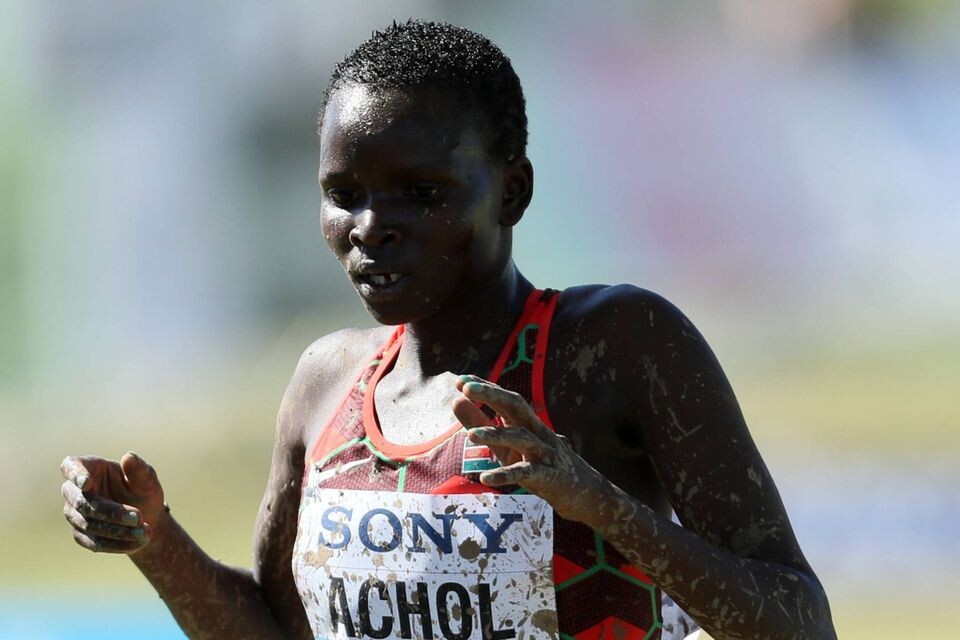
It means Anyango will remain suspended until her case is heard and determined and she faces a minimum of a four-year ban if she is found culpable.
It is a blow to the 24-year-old who was already making waves having been one of the standout athletes in the early months of the 2024 season.
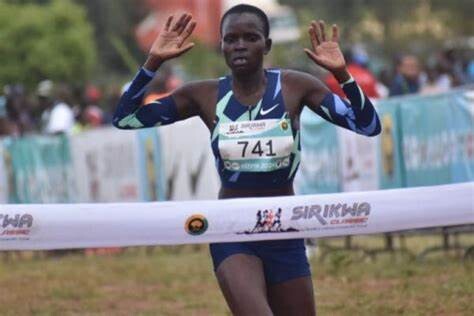
The Sirikwa Classic Cross-country champion was awarded the Sports Personality of the Month award for February by the Sports Journalists Association of Kenya (SJAK) after coming close to breaking the world 10km world record in February.
Anyango recorded the second fastest 10km time in history when she clocked 28:47 in Valencia, Spain, improving Ethiopian Yalemzerf Yehualaw’s world record (29.14) but unfortunately for her, compatriot Agnes Ngetich won the race in a better time of 28.46.
She would go on to finish fourth at the World Cross-Country Championships in Serbia followed by second place at the BAA 5k Road Run in Boston and in 10km Road in Bengaluru, India.
She, however, missed a place in team Kenya to the Paris Olympics after finishing sixth in the 10,000m trials which was held at the Prefontaine Classic, the Eugene Diamond League in May.
Back-to-back second places finishes would follow in 10km in Atlanta and in 15km in New York in July.
by Joel Omotto
Login to leave a comment
Delhi Half Marathon: Joshua Cheptegei to headline elite field
The Vedanta Delhi Half Marathon, which is part of the World Athletics Gold Label Road Races, will be flagged off from Jawaharlal Nehru Stadium on Sunday, October 20.
Ugandan sensation Joshua Cheptegei and Kenya’s former Half-Marathon World record holder Peres Jepchirchir are all set to light up the streets of Delhi!
Joshua is the current world record holder for both the 5000 meters and 10,000 meters and holds the world’s best time over the 15-kilometer distance. He is the reigning Olympic champion in the 10,000 meters and won the gold with a new Olympic record of 26:43.14.
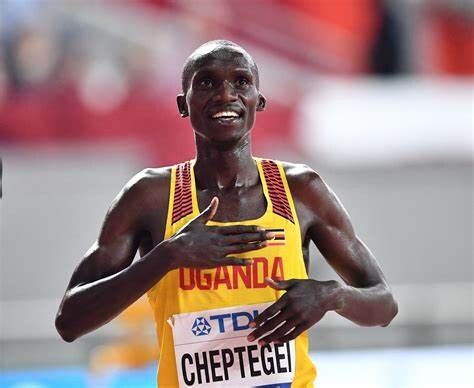
Joshua is also a three-time World champion in the 10,000 meters and claimed gold in both the 5000 meters and 10,000 meters at the 2018 Commonwealth Games and the 2019 IAAF World Cross Country Championships. Notably, Cheptegei is only the tenth man in history to simultaneously hold the 5000-meter and 10,000-meter world records, both of which he set in 2020.
Interestingly, Cheptegei made his international debut in India at the TCS World 10K Bengaluru 2014, finishing second. His return to India for the Vedanta Delhi Half Marathon promises to be a highlight of this year’s race.
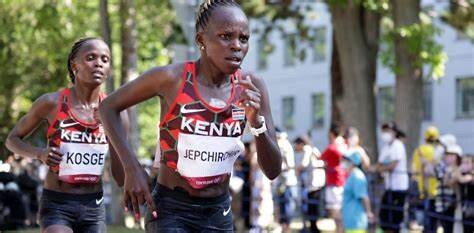
Speaking about his return to India Joshua said, “This country holds a special place in my heart, as it’s where I made my international debut in 2014. It’s been a good season for me, and I am certainly looking at a course-record timing at the Vedanta Delhi Half Marathon. The energy and passion of the Indian running community are truly inspiring, and I’m excited to be part of this prestigious event.”
Kenya’s former Half-Marathon World record holder and three-time world half-marathon winner Peres Jepchirchir will lead the women’s contingent. Peres won the London Marathon 2024 with a time of 2:16:16 secs, breaking the women’s only Marathon world record. She also won the 2021 New York City and 2022 Boston Marathons.
Among the other notable participants, Asian Championship Bronze Medalist Sanjivani Jadhav stands out in the women’s category. Sanjivani, who won the 10,000-meter Portland Track Festival in the USA with a personal best of 32:22:77, recently claimed a silver medal at the 5000-meter event at the National Open Athletics Championships in Bangalore.
She has previously won gold at the Vedanta Delhi Half Marathon in 2018 and 2022 and took silver in 2016 and 2020. Defending champion Kavita Yadav will provide Sanjivani with tough competition in pursuing the title.
“This will be my third Vedanta Delhi Half Marathon, and my aim will be to win this race once again. I have been training hard and I will try my best to break and create as many records as I can,” said Sanjivani Jadhav.
In the men’s category, Defending Champion and talented youngster Abhishek Pal, who recently won the 10,000-meter title in the National Open Athletics Championships 2024 in Bangalore, will take the lead. He will face tough competition from another youngster, Asian Games 2023 silver medalist in the 10,000 meters, Kartik Kumar.
He recently triumphed at the 10,000-meter USA Championship Track Fest 2024 with a remarkable time of 28:07:66. Kartik is also the VDHM 2022 and 2023 editions silver medalist.
“I am aiming to break the national record in what will be my fifth Vedanta Delhi Half Marathon. I have won the competition, but while I am once again, my mind is set on breaking the national record and going under 60 minutes,” said the defending champion Abhishek Pal.
Login to leave a comment
Vedanta Delhi Half Marathon
The Airtel Delhi Half Marathon is a haven for runners, creating an experience, that our citizens had never envisaged. The streets of Delhi converted to a world-class running track. Clean, sanitized road for 21.09 kms, exhaustive medical support system on the route, timing chip for runners, qualified personnel to ensure smooth conduct of the event across departments. The race...
more...7 Marathons in 7 Days on 7 Continents: Is There Such a Thing as Racing Too Much?
Don’t let your bucket list lead to burnout.
Setting running goals is typically a good thing. Goals keep you engaged and on track. They shape your training with purpose, structure, and accountability. However, sometimes an endless list of goals can backfire. More races. More consecutive events. More miles. It leaves us wondering: How much racing is too much racing?
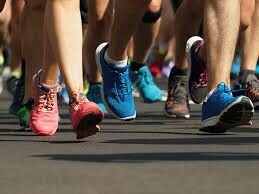
It’s healthy to test your limits and perceived boundaries, but running half marathons and marathons takes a toll—physically, mentally, emotionally, socially, and financially. Finding the sweet spot between your comfort zone and the danger zone is tricky.
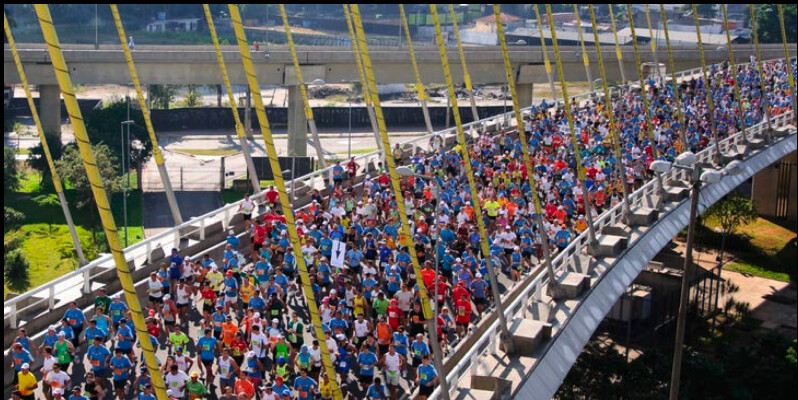
So, we chatted with a few experts on setting values-driven goals, being ambitious but realistic, and using social media for support (beyond that quick hit of dopamine). Before you tackle your racing bucket list, read on.
How much racing is too much racing?
According to the experts, there’s no definitive answer to the “too much racing” question. “It depends on the person and what your short and long-term goals are and your current fitness conditions,” Raj Hathiramani, certified running coach at Mile High Run Club in New York City, tells Runner’s World. Even a series like the World Marathon Challenge, in which participants jet between all seven continents, completing a different marathon every day for one week straight, is doable if you’re prepared.
That said, training for an aggressive racing schedule requires time (for both running and recovery) and resources, like coaching, gym access, and funding to cover travel, race fees, childcare, and other family and household-related support.
“This is where I think a lot of people get it wrong,” Todd Buckingham, Ph.D., exercise physiologist at PTSportsPRO in Grand Rapids, Michigan tells Runner’s World. “They want to do a marathon or an Ironman, but they only have, say, three hours a week to train. That’s not going to be feasible.”
Buckingham points out that your training and race schedule needs to fit into the reality of your life and not the other way around. Otherwise, you risk overextending yourself and heading into events undertrained, which can lead to disappointment and injury.
How do you determine how much to race?
1. Start with your why
Before you start registering for races and scheduling training runs, ask yourself this question: “Why am I doing this?” There’s no right or wrong answer, but if you’re drawing a blank, or the big pay-off is external validation (are you already mentally editing your highlight reel?), you may need to re-evaluate your goals.
That’s because healthy, worthwhile goals should align with your personal values, according to Mike Gross, Psy.D., head of sport psychology services at Princeton University in Princeton, New Jersey. “Let’s get a sense of your ‘why’ and be really clear on that,” he tells Runner’s World. “Why in your heart do you want to do this?” he asks, noting that your why can serve as a compass that guides your actions and keeps you focused and on course in the face of obstacles.
If you don’t understand your reasons for doing something, you’re more likely to give up or follow through just for the sake of getting it done. “That’s when you’re just kind of white-knuckling it through the process. You’re starting to notice there’s no enjoyment in it, and that’s when some of the burnout symptoms start to arise,” Gross says.
For Hathiramani, the motivation to achieve his own “big” goal of running 50 marathons in 50 states was multi-pronged. Before formalizing the goal, he’d organically completed races in 10 states just by registering for events that appealed to him. He realized that participating in a race in each state would allow him to further connect with members of his running community, many of whom shared the same ambition.
Running in different states also gave Hathiramani an opportunity to access and explore parts of the country through the sport that he loves. “I thought it would be a really neat way to see the U.S., run some smaller races, some bigger races, and visit parts of the U.S. I’d never thought I’d be able to, whether it was the Shiprock Indian Reservation in New Mexico or a Christian camp in South Dakota,” he explains.
Keep in mind that not every challenging goal is defined by mileage. One of Hathiramani’s most meaningful goals was committing to strength training for at least 10 minutes twice a week. “That really helped my running, especially as I was getting older and running faster, longer distances. I felt that I needed more muscular endurance,” he says.
Buckingham encourages long-distance-oriented runners seeking a challenge to consider shorter, faster races. “A marathon, from a cardiovascular standpoint, is easy compared to a 5K or 10K,” he says.
2. Don’t race every race
Depending on the number of races you want to do and other personal variables, such as your racing experience and fitness level, you could aim to PR some events and simply finish others, as racing is more demanding and necessitates more recovery.
To that end, Buckingham recommends pursuing no more than two “goal races” a year—one in the fall and one in the spring—particularly if they’re longer, like a half or full marathon. “You want to give yourself several months in between to recover from the last marathon and get ready for the next,” he says, noting that attempting to “carry over” fitness in back-to-back events can backfire with injuries and other symptoms of overtraining.
For runners doing races in quicker succession, it’s key to incorporate recovery strategies in the days (or hours) between.“You can race hard for seven days in a row as long as you are adequately trained for that and adequately recover from it,” Hathiramani says. For example, he has done back-to-back marathons several times, but puts a specific focus on recovery between those finish and starting lines. This includes intentional practices like foam rolling, proper fueling, and quality sleep.
3. Take your time
The experts caution that imposing strict time constraints on your goals can increase your risk of injury, add unnecessary pressure, and take away from your overall enjoyment and satisfaction.
For example, Hathiramani embarked on his 50-marathon goal in 2010 when he was in his mid-20s, knowing that he wanted to finish by the time he was 40 years old. He finished “on time” in early 2024. This realistic timeframe allowed him to relish the experience and navigate unexpected obstacles, like COVID-related race cancellations.
“It was never about trying to achieve that type of goal in a certain amount of time. It was more about enjoying the process of falling in love with running,” Hathiramani says.
4. Be mindful with social media
It’s nearly impossible to escape the influence of the digital platforms that are now integrated into our everyday lives, but thinking about what you might do if you couldn’t share your goals with a wider audience is a useful thought exercise. That’s because it’s not exactly smart to set goals just so you can post about them.
However, social media is part of most runners’ lives, and there are positive aspects to online engagement. “If you put your goals out there by telling your family or friends or working with a coach, you get someone else that can help keep you accountable,” Hathiramini says, noting that the support of his community was instrumental in keeping him motivated to achieve a goal that spanned more than a decade. They not only celebrated his wins but also offered support when he needed it most. “They’re also there to help pick you up from any setbacks, too.”
Finally, with all of this in mind, don’t shy away from a big goal. “I think the mind and the body—the mind, more so—is pretty incredible in that it can expand its limits to what you desire to achieve,” says Hathiramani.
by Runner’s World
Login to leave a comment
El Bakkali retains Olympic steeplechase title in Paris
Soufiane El Bakkali successfully defended his title in the men's 3000m steeplechase at the Paris 2024 Olympic Games, winning his fourth successive global title in the event.
The Moroccan, competing in just his second competition of the year, emerged from the pack on a frantic final lap to win in 8:06.05.
USA's Kenneth Rooks, who burst into the lead at the bell and led up until the home straight, took a surprise silver in a big PB or 8:06.41, finishing 06 ahead of Kenya's Abraham Kibiwot, earning another bronze following his third-place finish at the World Championships last year.
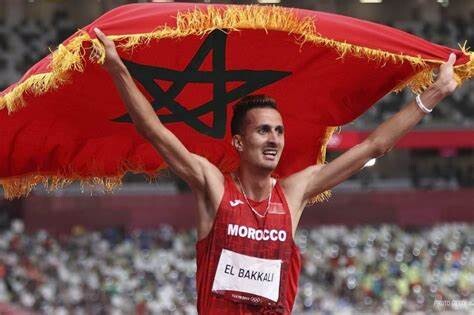
World record-holder Lamecha Girma was part of the pack when the kicking started on the final lap, but the Ethiopian had fell hard with 200 metres to go and was a non-finisher, eventually having to be carried off the track on a stretcher.
The opening pace was fast as India’s Avinash Sable took an early lead, closely followed by a trio of Ethiopians: Getnet Wale, Samuel Firewu and Girma. El Bakkali was positioned close behind.
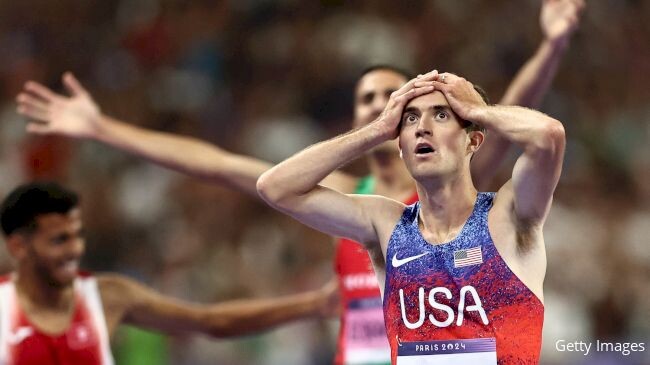
Wale and Firewu then took brief spells at the front with the first 1000m being covered in 2:40.53, putting them on course to break the Olympic record.
The pace settled down during the middle of the race as Sable drifted back through the pack, leaving the three Ethiopians at the front with Firewu doing most of the leading. Uganda’s Leonard Chemutai briefly moved up through the pack, prompting Firewu to increase the pace.
Kenya’s Simon Koech then hit the front and led the field through 2000m in 5:29.8 as the pack started to bunch up. With two laps to go, El Bakkali’s teammate Mohamed Tindouft moved through the field and into second place, but the real drama started on the final lap.
As soon as the bell rang, Rooks darted into the lead and immediately opened up a gap of two metres on the rest of the field. El Bakkali was navigating his way through a field that included Girma, Firewu and Kibiwot.
Among all the chaos, Girma tripped and fell hard, lying motionless on the track. The rest of the field charged forward with El Bakkali moving onto Rooks’ shoulder coming off the bend.
The Moroccan then strode into the lead and sprinted hard off the final barrier, winning in 8:06.05. Rooks crossed the line 0.36 later with Kibiwot claiming the bronze medal in 8:06.47.
Tunisian duo Mohamed Amin Jhinaoui and Ahmed Jaziri finished fourth and fifth. Jhinaoui set a national record of 8:07.73 and Jaziri was rewarded with a PB of 8:08.02, also inside the previous national record.
by World athletics
Login to leave a comment
Paris 2024 Olympic Games
For this historic event, the City of Light is thinking big! Visitors will be able to watch events at top sporting venues in Paris and the Paris region, as well as at emblematic monuments in the capital visited by several millions of tourists each year. The promise of exceptional moments to experience in an exceptional setting! A great way to...
more...Ludovic Pommeret Wins Hardrock 100 in Course-Record Time Courtney Dauwalter is on course-record pace, trying to win the race for a third consecutive year
This is an ongoing story that will continue to be updated as more runners reach the finish line in Silverton, Colorado.]
Maybe you forgot that Ludovic Pommeret was the 2016 Ultra-Trail du Mont-Blanc champion. Or that he was the fifth-place finisher in Chamonix, France, just last year. Or maybe you thought the 49-year-old Frenchman was past his prime. Either way, he reminded us all he’s at the top of not only his game, but the game at the 2024 Hardrock 100.
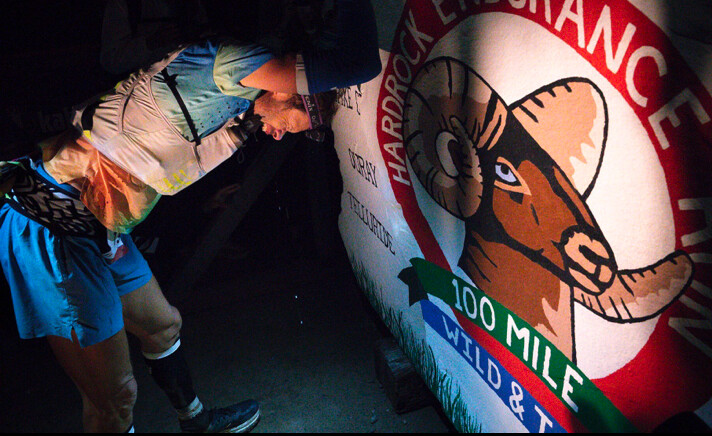
The Hoka-sponsored runner from Prevessin, France, took the lead less than a third of the way into the rugged 100.5-mile clockwise-edition of the course after separating from countryman François D’Haene, the 2021 Hardrock champion and 2022 runner-up, and never looked back. Pommeret progressively chipped away at the course record splits—a course record, mind you, set by none other than Kilian Jornet in 2022—to win this year’s event in 21:33:12, the fastest time in the race’s 33-year history. Jornet set the previous overall course record of 21:36:24, also in this clockwise direction in 2022.
(Pommeret kissed the rock in to complete the course in 21:33:07 at 4:33 A.M. local time, but race officials credited him with the slightly slower official time.)
“It was my dream (to win it),” Pommert told a small collection of fans and media after winning the race at 3:33 A.M. local time. “I was just asking ‘when will there be a nightmare?’ But finally, there was no nightmare. Thanks to my crew. They were amazing. And thanks to all of you. This race is, uh, no word, just so cool and wild and tough.”
On Friday, July 12, 146 lucky runners embarked on the 2024 Hardrock 100. Run in the clockwise direction this year, it was the “easy” way for the course with a staggering 33,000 feet of climbing and an average elevation over 11,000 feet thanks to the steep climbs and more tempered, runnable descents.
Combined with relatively cooperative weather (hot during the day on Friday, but no storms) and a star-studded front of the pack headlined by Courtney Dauwalter and D’Haene, the tight-knit Hardrock 100 community was on course record watch.
And the event delivered—along with a whole lot more.
On the men’s side, the front of the race took a blow before the gun even went off when Zach Miller, last year’s Ultra-Trail du Mont Blanc runner-up, was denied entry after undergoing an emergency appendectomy the weekend before.
Despite the heartbreak of being forced to wait another year to participate in this hallowed event, Miller was very much a presence in the race, most notably for slinging fastnachts (Amish donuts) from his van in Ouray for race supporters and fans.
Such is the spirit of this event, deemed equally as much a run as a race.
The men’s race was further upended when D’Haene, in tears surrounded by his wife, three children, and friends, dropped from the race at the remote Animas Forks aid station (mile 58). An illness from two weeks before proved insurmountable for the challenge ahead. That blew the door wide open for the hard-charging leaders ahead.
Pommeret had built a 45-minute lead over Jason Schlarb, an American runner who lives locally in Durango, and Swiss runner Diego Pazosby, the time he had left the 43.9-mile Ouray aid station amid 85-degree temperatures. His split climbing up and over 12,800-foot Engineer Pass (mile 51.8) extended his lead to more than an hour over Schlarb and nearly 90-minutes at the Animas Forks aid station.
“I thought it was great. To run off the front like he did, and then just hold that all day and get the overall course record is pretty awesome,” Miller said. “When Killian did it, two years ago, it was a, it was a track race between him, Dakota, and François, after they got some separation from Dakota, it was Kilian and and François, all the way to Cunningham Gulch (the mile 91 aid station) and then Kilian just torched it on the way in. So yeah, it was super, super impressive for Ludo to do that. That’s a very impressive effort.”
The sleepy historic mining town of Silverton, Colorado was unusually hectic at 6 A.M. on Friday. In the blue hour before the sun poked over the San Juan Mountains looming above, 146 runners toed the start line of the Hardrock 100, marked by flags from the countries represented by competitors on either side of the dirt road.
With the sound of the gun, runners jogged off the start line—their caution a tacit sign of respect for the monumental challenge of what was to come. As the runners passed through town to the singletrack wending its way up to Miner’s Shrine, group of men headlined by D’Haene, Ludovic Pommeret, Diego Pazos, and Jason Schlarb quickly took command of the front, the bright yellow t-shirt of Courtney Dauwalter was easy to spot just behind, along with Katharina Hartmuth and Camille Bruyas.
If they weren’t awake already, runners certainly were after crossing the ice-cold Mineral Creek two miles into their journey before starting the grunt up to Putnam Basin. At the top of a sunny, grassy Putnam Ridge (mile 7) 1:34 into the race, the lead pack of men remained, while Dauwalter had made a statement solo just three minutes back from the men and four minutes up on Hartmuth.
Dauwalter was smiling and chatty when she reached the KT aid station at mile 11.5, in 2:24 elapsed. By Chapman (mile 18.4), four hours in and 10 minutes under her own course record pace, she was pouring water on her head under the blazing sun. Things were heating up—in more ways than one.
When Pommeret galloped into Telluride (mile 27.7) after 5:37 of elapsed time in the lead, he was right on Jornet’s course record pace. One minute, some fluids and restocking later, and he was gone.
But wait, it was still a close race! D’Haene charged into Telluride just two minutes later and hardly stopped before continuing on through downtown before busting out the poles and starting the steep, steep 5,000-foot climb up Virginius Pass to the iconic Kroger’s Canteen aid station nestled into a notch of rock at the top at 13,000 feet.
Not to be outdone, the women’s race proved equally thrilling coming into Telluride. Bruyas bridged the gap up to Dauwalter, and the two ran into town together in 6:25 elapsed. Both took three minutes in the aid station, although that must have been enough social time for Dauwalter, as she pulled ahead marching up the climb, poles out and head down. A bouncy Bruyas alternated between hiking and jogging just behind.
But time again again, Dauwalter’s long, powerful stride simply proved unparalleled. By Kroger’s (mile 32.7) Dauwalter had reestablished her lead by five minutes over Bruyas and 17 ahead of Hartmuth in third. She’d built that gap to 10 minutes in Ouray at mile 43.9, but she left that aid station in less than two minutes with a stern, serious look on her face. But as she crested Engineer Pass at the golden hour, wildflowers blanketing the vibrant green hillsides basking in the setting sun, she enjoyed a 30-minute lead in the women’s race and was knocking at the door of the men’s podium.
While Dauwalter forged ahead with her unforgiving campaign for a third straight win, the men’s race started to rumble. Like Dauwalter, Pommeret continued to blaze the lead looking strong as he trotted down Engineer to the Animas Forks aid station at mile 57.9 in 11:39 elapsed. He hardly stopped before continuing on to Handies Peak, which at 14,058 feet marks the high point of the race. He had blown the race wide open.
An hour and 15 minutes later, Schlarb, looking a bit more beleaguered, ran into Animas Forks with his pacer, where he sat down and changed his shirt while receiving a pep talk from his partner and son. But he made quick work of the time off feet nonetheless, and three minutes later he was back at it, seven minutes before Pazos appeared.
While D’Haene arrived just 10 minutes later, he did so in tears, holding the hand of his youngest son. After a considerable amount of time sitting in the aid station, surrounded by his family and crew, he called it quits. The lingering effects of an illness from just 10 days before proved too much to overcome as the hardest miles of the race loomed ahead.
While D’Haene pondered his fate, Dauwalter blitzed into Animas Forks in 13:26 with that same look of determination, 16 minutes ahead of course-record pace. She briefly stopped to prepare for the impending night, picking up her good friend and pacer Mike Ambrose to leave the aid station in fourth overall. Bruyas maintained her second place position 30 minutes back, with Hartmuth in third about 20 minutes behind her.
Pommeret continued charging ahead solo, increasing over Schlarb and Pazzos by more than two hours late in the race. When Pommeret passed through the 80.8-mile Pole Creek aid station at 10:44 P.M., it shocked the small group of race officials, media and fans watching the online tracker from the race headquarters in Silverton. Based on that split, it was originally calculated that Pommert could arrive as early as 2:34 A.M.—which would have been a finishing time of 20:34—but he didn’t run the final 20 miles quite as fast as Jornet did in 2022.
Behind him Pazos caught Schlarb to take over second place before Pole Creek and increased the gap to four minutes by the Cunningham aid station (mile 91.2).
Pommeret, who develops training software for air traffic controls in Geneva, Switzerland, didn’t break into ultra-trail running until 2009 when he was 34 years old. He was third in UTMB that year—behind a 20-year-old Jornet, who won for the second straight year—the first of seven top-five finishes in the marquee race in Chamonix. (He was third in 2017 and 2019 and fourth in 2021 and 2023.) He also won the 90-mile TDS race during UTMB week in 2022, and the 170-kilometer Diagonale des Fous race (Grand Raid La Reunion) on Réunion Island in the Indian Ocean in 2021 and placed sixth in his first attempt at the Western States 100 in California in 2022.
Last year, Pommeret placed 13th overall in the Western States 100 and nine weeks later finished fifth at UTMB behind Jim Walmsley, Miller, Germain Grangier, and Mathieu Blanchard.
“We know Ludo is a beast, but to be a beast for so long, for so long is so impressive,” Miller said. “He’s 49, which by all means is a capable age in this endurance world. But I think anytime someone 49 does something like that, it’s gonna turn some heads because that would’ve been a really good performance for anyone. To have the track record he’s had—winning Diagonale des Fous, UTMB and Hardrock, that’s pretty impressive.”
Courtney’s Final
By the time Dauwalter was pushing her way up Handies Peak, she had a smile on her face and engaged in playful conversation with media and spectators on the course. She had good reason to smile: she was feeling good and she had increased her 10-minute lead at Ouray to more than 60 minutes. Dauwalter went through the Burrows aid station (mile 67.9) in less than a minute, while Bruyas came in an hour later and spent four minutes refueling before heading out again.
Three hours after Pommeret had passed through the Pole Creek aid station (mile 80.8), Dauwalter arrived at 1:54 A.M., still in fourth place overall about 50 minutes behind Pazos and Schlarb. She took a little more time there, but was back on her feet in four minutes and running strong again and still on record pace. Bruyas walked in to Pole Creek at 3:08 A.M. in sixth overall, but the gap behind Dauwalter continued to widen.
Dauwalter was in and out of the Maggie aid station (mile 85.1) in two minutes and blazed through the Cunningham aid station (mile 91.2) even faster. The race seemed to be in hand at that point with Bruyas more than 90 minutes behind (in fact, someone updated Wikipedia and declared her the winner not long after Pommeret finished), it was just a matter of how fast she could finish.
Login to leave a comment
Rena Elmer, a former steeplechaser who’s had two kids since running the 2020 Olympic Marathon Trials, placed seventh at Grandma’s Marathon.
In March, Rena Elmer watched her daughter Taryn—a freshman at Marcus High School in Flower Mound, Texas—run a personal best 5:15 mile in a downpour.
So when Taryn saw the forecast for Grandma’s Marathon this weekend, she had a message for her mom. “She grabbed my shoulders and said, ‘Mom, you’re going to PR,’” Elmer told Runner’s World by phone on Sunday. “I PRed in the rain—you can PR in the rain, too.”
The elder Elmer, who’s 41, took those words to heart. Despite steady showers, she ran 2:35:45—nearly 5 minutes off her previous personal best—and placed seventh in her third marathon.
The time came as a bit of a shock to Elmer. She hadn’t raced 26.2 miles since the 2020 Olympic Marathon Trials in Atlanta, where she ran2:41:22 to place 53rd. In the two years since, she’s had two more children—Jane, born in January 2021, and Jessica, born in December 2022—to add to her previous nine.
In fact, the only time she’d raced in the past four years was in March. Then, she won the Irving Half Marathon in 1:17:58 to gain entry to the elite field at Grandma’s. Based on that, and the times she’d run in training, she expected to be able to run between 2:40 and 2:42.
But all those paces have come in the brutal Texas heat. And though she uses a pace calculator during training to account for conditions, Saturday’s mid-50s temperatures and tailwind at the start left her feeling better than anticipated. She started the first 5K at 6:12 pace and gradually picked it up from there, latching onto other runners as she went and covering the last 10K at 5:44 pace.
“It was incredible—it felt so good, I just felt so powerful and smooth and strong,” she said. “I just love running for that feeling.”
The sport has long brought Elmer joy and carried her through both triumphs and tragedies. After running in high school in Beaver, Utah, she walked on to the track and cross country teams at Brigham Young University. Her junior year, she placed third in the 3,000-meter steeplechase at the 2005 NCAA outdoor championships.
She kept running after graduation, and after narrowly missing in 2008 and 2012, qualified for the 2016 Olympic Track and Field Trials in the steeplechase. There, she made the final and finished 10th.
In between those accomplishments came incredible hardships. She had her first two children—Taryn and her twin brother, Talon—in 2009, and Elmer developed serious complications afterward. And in 2015, two more children later, an abusive situation involving her now ex-husband broke her family apart.
But her sport—and her faith—carried her through. In January 2017, she met Will Elmer, who also had four children. They married and joined their families, and since then have had three more kids.
Elmer switched to the marathon in 2019, and ran 2:40:21 in her debut at the Indianapolis Monumental Marathon to qualify for the Trials.
by Runner’s World
Login to leave a comment
Anyango confident of making the cut in women's 10,000m in Oregon
Valencia 10km Road Race silver medalist Immaculate Anyango is setting her sights on securing a spot in the women’s 10,000m team for a maiden appearance at the Paris Olympic Games.
With the Kenyan 10,000m teams (men and women) selection scheduled for May 25 in Oregon, USA, during the Prefontaine Classic Diamond League, Anyango is eager to showcase her prowess.
"I'll be heading to the Olympics Trials this week in Oregon. My goal is crystal clear: earn my place to represent Kenya in Paris," Anyango declared.
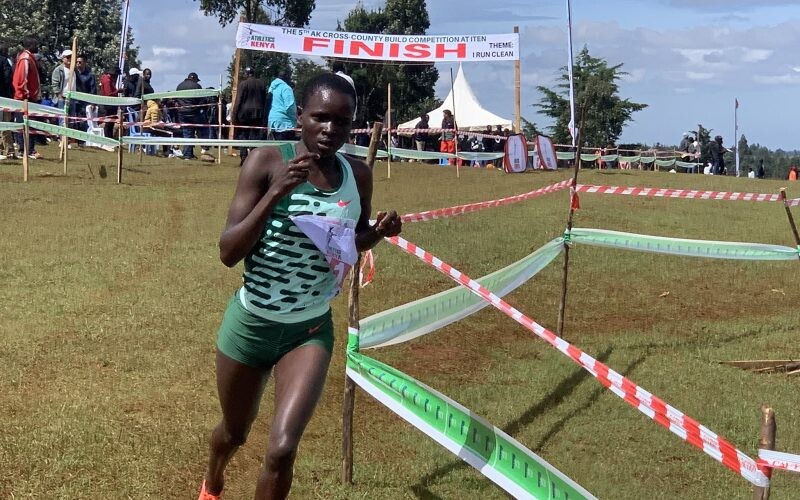
The Olympic qualifying mark for the women’s 10,000m is 30:40.00 whereas Anyango boasts a personal best (PB) of 32:51.58 set at the Fernanda Ribeiro Gala in Maia, Portugal.
Anyango is confident in her ability to meet the Olympic standard in Oregon. She said her mission now is to realise her dream of competing at the global extravaganza.
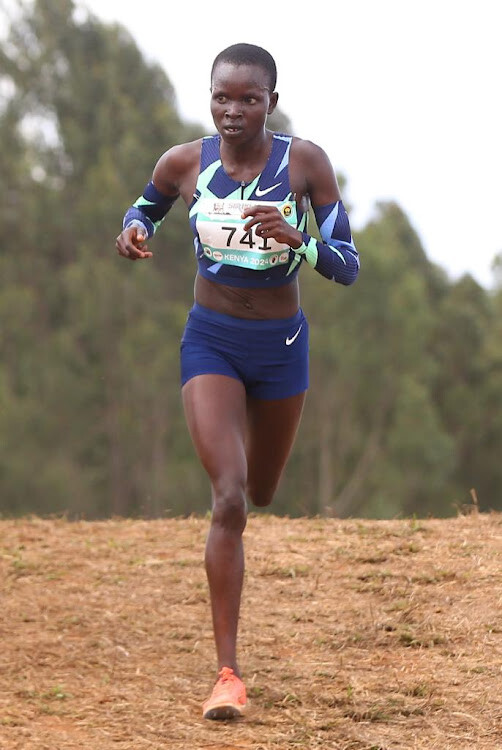
"Making it to the Olympics is my ultimate goal. While the challenge of hitting the mark is real, my determination will drive me to succeed," she emphasised.
Acknowledging the tough competition in the women’s 10,000m field, Anyango remains cautious, admitting that, "The competition among female athletes in the 10,000m will be tough. It's going to be a demanding race."
However, she believes her meticulous preparations and participation in key races this year will give her an edge in the USA.
“My preparations are going on well. I have taken part in a couple of races this year and they have been crucial as far as my endurance and speed work are concerned,” she stated.
Anyango kicked off the year with a strong performance in January at the Valencia 10km Road Race, clocking 28:57 to secure the runner-up spot. Agnes Ngetich clocked 28:46 to obliterate the women’s 10km record.
She later went on to clinch the title at the Sirikwa Classic cross-country tour clocking 32:55.
Anyango also made the Kenya team to the World Cross Country Championships in Belgrade, Serbia in March but finished outside the podium in position four (31:24).
The results, however, did not dampen her spirits as she went on to clinch silver at the Boston 5km Road Race in April clocking 14:59 behind Ethiopia’s Fotyen Tesfay (14:45).
She also won another silver medal the same month in the Bengaluru, India 10km Road Race clocking 31:16 behind Lilian Kasait (30:56).
Recognised for her achievements, Anyango was awarded the LG/SJAK Personality of the Month for February after her victory at the Sirikwa Classic.
She sees this accolade as a significant motivation as she prepares for the Olympic Trials in Oregon, stating, "The award will fuel my motivation as I gear up for the Olympic trials."
by Teddy Mulei
Login to leave a comment
Prefontaine Classic
The Pre Classic, part of the Diamond League series of international meets featuring Olympic-level athletes, is scheduled to be held at the new Hayward Field in Eugene. The Prefontaine Classicis the longest-running outdoor invitational track & field meet in America and is part of the elite Wanda Diamond League of meets held worldwide annually. The Pre Classic’s results score has...
more...Betsy Saina, Diego Estrada win Amway River Bank Run 25K
Betsy Saina, now a back-to-back champ, crossed the finish line first to win the 47th annual Amway River Bank Run women’s 25K Saturday, followed by the record-breaking men’s winner Diego Estrada.
Saina finished with a time of 1:22:31.61. Estrada had a time of 1:13:09.51, breaking the American record. Each earned the $10,000 first prize and Saina got a $2,500 bonus for winning the ‘race within a race’ that pits the men against the women.
After winning the River Bank Run for the second year in a row, Saina said Grand Rapids has a special place in her heart.
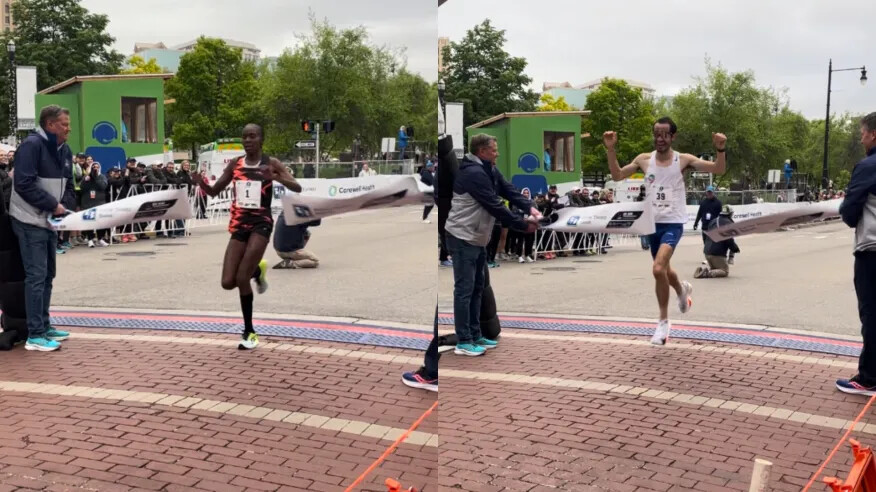
“Last year, when I came, I won the race, and I felt like it was a special place for me. Honestly, I love Grand Rapids. It’s one of the best cities I like to be in. The people are so nice. Everything is just so perfect for me. That is why I am here,” she said.
Saina, who has a 2-year-old boy, had a message for her fellow mothers.
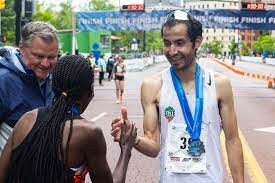
“I just want to let them know that no matter what, when you have a child, it’s not the end of the career, it is the beginning of it,” said Saina.
At this year’s race, Estrada broke the course record and set a new American record for the 25K. After finishing the race, Estrada fell at the finish line out of exhaustion.
“I was very exhausted. I made sure to put everything I had so there was nothing left in the reserves. So when I finished, I was like I hope it does not hurt because I’m going down,” said Estrada.
He said that he pushed himself hard during the last two miles of the race.
“Well, to be completely frank, when you are broke and this is how you eat, you can’t leave it up to chance,” said Estrada. “I knew I kind of had to suffer and put it down and that is what I did. I made a move.”
The 25K is the largest road race of its kind in the country and the national championship event for USA Track and Field. It has included the “race within a race” since 2015: The elite women get an 10:30 head start on the men to compensate for the average difference in finish times between sexes. If the women hold their lead and finish first, they win. If the men make up that difference and finish before the women, they win.
Tom Davis, from Fremont, Indiana, won the 25K handcycle race. He is a retired two-time Paralympian who started handcycling after he was injured while serving in Iraq.
“I started doing handcycling for therapy. A couple of years after that, I felt like God was telling me to get my bike out, start riding it, and race it and do it to glorify him. I did. It has been about eight years racing at the top level in the world,” said Davis. “I’m out here doing it for fun now.”
Miguel Jimenez-Vergara, from New Jersey, won the 25K wheelchair race. It was his first time participating in the Amway River Bank Run.
“It’s a really, really, really cool course. I have never done it before. It’s my first time coming out. It’s a really cool course with smooth roads and rolling hills. It was really cool,” said Jimenez-Vergara.
He plans to take part in the U.S. Paralympic Trials in Florida in July in hopes of joining the U.S. Paralympic Team this year in Paris.
by Michael Oszust, Rachel Van Gilder
Login to leave a comment
Amway River Bank Run
The Amway River Bank Run presented by Fifth Third Bank with Spectrum Health the Official Health Partner celebrates over 43 years. More than 16,000 people are expected to compete in the event which features the largest 25K road race in the country and offers the only 25K Wheelchair racing division in the world along with a 25K Handcycle division. The...
more...Meet the 85-year-old man who’s run every OneAmerica 500 Festival Mini-Marathon
For most people, running just one marathon is a big achievement.
But for 85-year-old Eugene Lausch, running in his 48th mini-marathon Saturday will be just another accomplishment.
The retired lawyer has run more OneAmerica 500 Festival Mini Marathons than nearly everyone in the field. Of the approximate 200,000 runners, Lausch is one of only six who have participated every year since the marathon’s start in 1977.
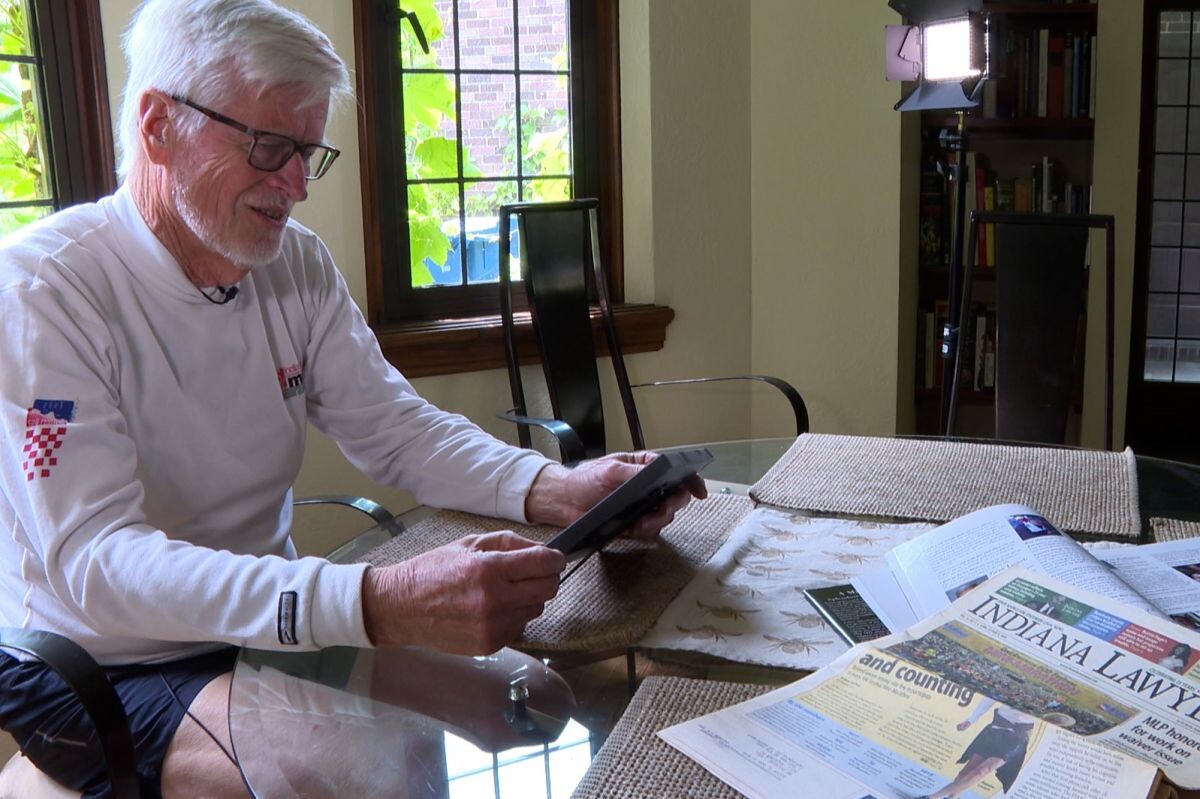
It’s a hobby that came to him almost by accident.
“I desperately wanted to be an athlete when I was a boy and, like every Hoosier lad, I wanted to be a basketball player, but I don't have good hand-eye coordination,” Lausch said.
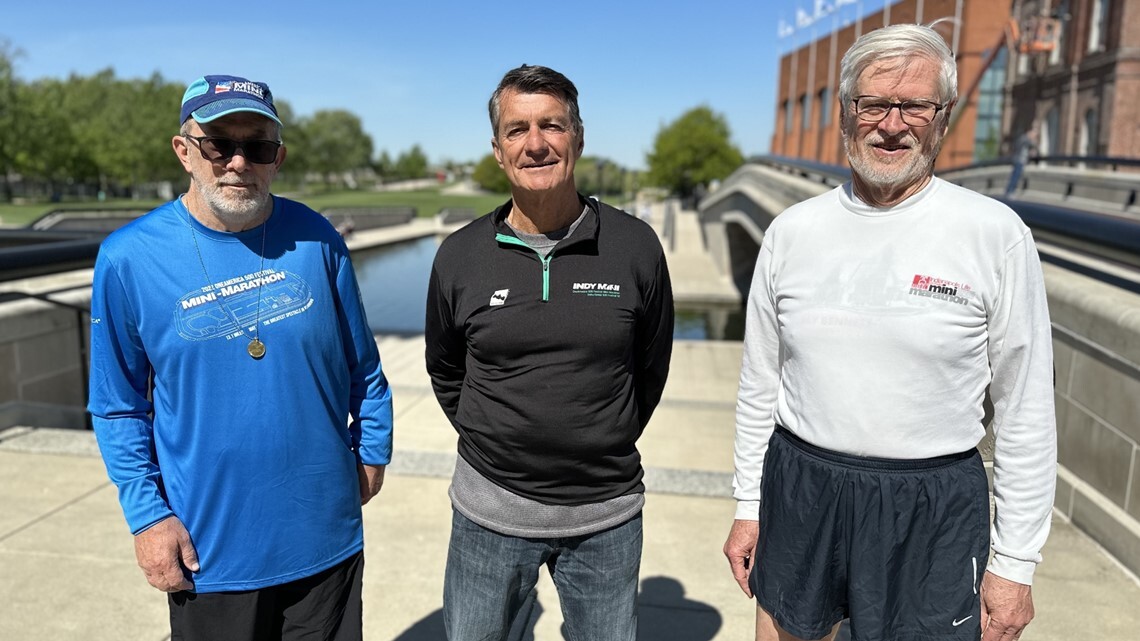
And since basketball requires a great deal of hand-eye coordination, he settled on running.
And, obviously, the hobby has stuck around.
As a student at Indiana Central University, now known as the University of Indianapolis, Lausch ran track. He went on to compete in the Indianapolis-Scarborough Peace Games and later coached track at the St. Richard Episcopal School in Indianapolis.
But his passion for marathons began in 1977, after being inspired by Olympian Frank Shorter. In the early seventies, Shorter became the first American runner in decades to win the Olympic marathon.
“That was an inspiration for a lot of people, including me,” Lausch said.
And 48 years later, he’s still going.
To keep fit, his regime is simple.
“I walk 23 miles a week,” he said. “Also, I do a considerable amount of outside activity and gardening that I think helps keep me fit.”
And even though Lausch is in better shape than most 85-year-olds, it hasn't always been easy.
In 2019, Laush was hit by a car while crossing the street.
“A car, which I never saw, knocked me down and broke my left hip,” Lausch said. “It was determined pretty quickly that my hip was fractured.”
The doctors told Lausch what he was already expecting, that he couldn't participate in the mini-marathon.
His ongoing streak would have been ruined if it were not for community members, including his granddaughter Claudia.
Several of the runners from St. Richard Episcopal School and Claudia pushed Lausch in a homemade cart for a portion of the mini-marathon that year.
“I must say that it's a bummer to have to be hit by a car and have your hip broken, but I was really buoyed up by the outpouring support,” Lausch said. “I think I really figured out what the Mini was all about.
“I don't think I really understood it before that it is less about winning. It's more about taking the assets you have and making the best of your circumstances.”
What was once a disaster turned into one of Lausch’s fondest memories associated with the marathon.
Lausch’s wife, Carolyn, and their two sons used to join him during the marathon. But now, Lausch runs by himself.
“I'm really happy about being able to continue to run, but I ended up not knowing very many people now who run the mini,” he said.
But even though he may not know everyone, people seem to know him. After his accident in 2019, several people came up to him to wish him well, he said.
“That was very heartening. I appreciated it a great deal,” Lausch said.
For now, Lausch will be walking the mini-marathon. He plans to continue to do it until he reaches 50 straight races in 2026.
by Grace Marocco
Login to leave a comment
OneAmerica 500 Festival Mini-Marathon
The mission of the 500 Festival is to produce life-enriching events and programs while celebrating the spirit and legacy of the Indianapolis 500 and fostering positive impact on the city of Indianapolis and state of Indiana. As an organization providing multiple events and programs, many of which are free to attend and impact over 500,000 people annually, our mission to...
more...Not an Early Riser? Try Dusk Patrol
Making time for adventure at sunset is just as effective and admirable as waking up for an alpine start
Whether you’re a seasoned backcountry skier or a new trail runner, chances are you’ve heard a pack of your fellow outdoorspeople gloating about their latest sunrise summit attempt, patting each other on the backs and guffawing because they had so much fun waking up at 4 A.M. for dawn patrol. Yuck.

Dawn patrol refers to the act of waking up before the sun and heading out on an early morning adventure, then speeding back to town to clock in to your desk job. There’s nothing inherently fun about rising early to ski or run or paddle, but when you call it “dawn patrol,” it becomes something else. As long as I’ve been in the outdoor world, dawn patrol has felt like the proverbial cool kids table that, in theory, anybody can sit at, so long as they like to rise in the dark and get their sweat on before their brains are fully awake. Unfortunately, that’s not me.
As a certified non-morning person who needs several cups of coffee to get going each day, it’s darn near impossible to convince me to wake up any earlier than I have to before reporting to work at my computer. Because I value my sleep and often have morning job commitments, I carve my adventure time out later in the day. I know I’m not alone in this. Those of us who still want to get after it on a random weekday from time to time deserve our own glorified phrase: dusk patrol.
I spent 19 years living in Los Angeles with a full-time day job. For me, dusk patrol often meant zooming out of my office’s parking structure at 5 P.M. on the dot to lace up my trail runners, don a headlamp, and jog up the side of Mount Hollywood, just as the city’s infamous smog would turn an otherworldly tangerine with the sunset. It was hard but rewarding to make these sunset jaunts happen. On one such occasion, I even stopped on the hike down for an impromptu planetarium show at the historic Griffith Observatory.
On another one of my post-work whims, I checked the moon phases app on my phone and reached out to a few friends to join me for a nighttime trek up the coastal Los Liones Trail. A full moon meant that we didn’t need to use our headlamps, and our late start time meant that we had the trail entirely to ourselves. The smell of SoCal chaparral and the moonlit ocean views from the gravel path made for an utterly magical evening as we twirled around and made hand puppets with our prominent moon shadows.
Once I had really gotten into the spirit of these sojourns, friends started divulging their own favorite nighttime microadventures with me, like well-guarded family secrets that needed to be whispered and held tightly. A guy I was dating once left work early and drove out to Joshua Tree with me to scramble up one of his favorite unnamed peaks at sunset, cans of beer conveniently stashed in our packs. My buddy Brandon introduced me to a weekly cycling meet up in Los Angeles called The Passage of a Few People Through a Rather Brief Moment in Time, which took riders to the farthest-flung corners of the city. It was a group for athletic lovers of the odd and the urban, meeting at 24-hour strip mall donut shop and taking its participants through secret tunnels, down pitch black dirt trails, to industrial mining quarries, and along abandoned piers overlooking the ragged Pacific.
I live in Boulder, Colorado now, and though the after-work traffic is nowhere near as soul-crushing as in the City of Angels, I’ve tried to keep the spirit of dusk patrol alive, which is much easier these days with a chunk of the Rocky Mountains at my doorstep. But of course, better outdoor access also gives me more room to get creative with my outings.
Last October, my partner Oliver and I drove my minivan across a series of winding roads to witness the autumn elk rut in Rocky Mountain National Park as the sun set over the soaring Continental Divide. As we hiked around a rocky bend, our terror and delight, we witnessed an enormous bull screeching his bugle call just off trail as he gathered his harem. I’ve knocked out countless sunset summits with my mutt, Marla, on Mount Sanitas and multiple Flatiron trails near town, and this year, I aim to step it up a notch and take advantage of the nearby Indian Peaks Wilderness to get out for some weeknight backpacking trips, planning to be back at my desk at 10 A.M. to check my email.
If you can’t tell by now, I’m a huge fan of having your cake and eating it too. In other words, even if you’re not a morning person, you can still get after it on a random weekday evening. Here are some of my tried-and-true tips for making dusk patrol a smooth experience.
No one wants to rush to the trailhead after work, only to realize that they forgot their precious hydration bladder. Pack the night or the morning before your nighttime rendezvous, when you’re not in a tizzy, then toss your fully-loaded pack and trail shoes (or inflatable kayak/SUP if you’re more or a river rat) into your car, so you can leave straight from work.
In Alastair Humphreys’ appropriately-named new book, Local, he sets out to complete one adventure per week for an entire year. The catch? They all have to be within his neighborhood. He’s proof that you don’t have to live at the foot of a 14er or on a piece of waterfront property to have a weekday adventure–climb a tree and watch the sunset, take a five mile jog around a part of town you’ve never been to, or try out mudlarking (scouring a shoreline at low tide to try to unearth ocean treasures). Fellow adventurer and Outside contributor Brendan Leonard told me that once, in lieu of heading into the Rocky Mountain foothills, he and some friends biked the entire 53 mile length of Colfax Ave in Denver (the longest commercial byway in the U.S.) and experienced the thrilling immersion of passing through multiple radically different neighborhoods as they bisected the city on two wheels.
It goes without saying that most dusk patrol missions will not involve time-consuming, home-cooked meals with a knife and fork. Either pack a no-cook, soak-in-the-bag meal to eat at the trailhead or summit (Pact-It Gourmet makes a bevy of awesome treats that can dehydrate in lukewarm water while you trek), or splurge on your favorite take out, then chow down during the drive to your starting point.
As someone who didn’t start rock climbing until age 29, it was news to me that you can easily purchase a veritable floodlight to place atop your head that’ll cast a blinding glow, suitable for the most intense evening excursions. Just be sure to pack an extra set of batteries or double-check your light’s charge level (if it’s a plug-in model) the night before your dusk patrol plan. The Petzl Actik Core and Black Diamond Spot 400 have both served me well on night hikes and low-light rock scrambling missions.
Not only is it safer to have a friend in tow on after-dark excursions, should things go sideways, it’ll also help hold you accountable, so that you don’t bail on your mountain goals after an annoying phone call or conference room fiasco at the office. Plus, aren’t sunsets just a smidge more spellbinding when you experience them in good company? Pick a specific time and place to meet each other after work, and don’t forget to tell someone not on the adventure what time you both plan to return home.
Login to leave a comment
TCS World 10K Bengaluru: Kenya’s Peter Mwaniki, Lilian Kasait win international elite titles
Kenyan runners Peter Mwaniki (28:15) and Lilian Kasait (30:56) cruised to the international elite men’s and women’s titles respectively, in the 16th edition of the TCS World 10K Bengaluru here on Sunday.
Mwaniki shifted gears at the 7.5 km mark to leave his countryman Hillary Chepkwony behind.
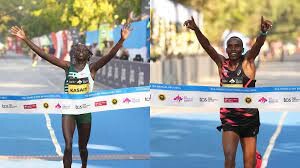
It was a similar story for Lilian, who pulled away from the nearest rival Emmaculate Achol at the 7.1 km mark.
Mwaniki and Lilian were unable to break the event records (men - 27:38, women - 30:35) on this new route.
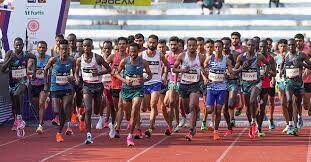
The new route was praised by most runners, but the finish line - stationed along a cordoned-off stretch on Cubbon Road - lacked buzz.
This was in contrast to previous editions, where the grand finish on the Sree Kanteerava Stadium running track witnessed several cheering runners and onlookers.
On Sunday, Mwaniki, Lilian and other medalists had only the photographers and a few event officials to share their joy with when they completed the run.
Lilian had to overcome a setback along the way. Near Ulsoor Lake, she nearly bumped into the timing vehicle, which seemingly made a wrong turn. “The car turned, so I thought it was a turning point and followed the car. But the officials on the motorbike told me to proceed (forward), so I followed my colleague Emmaculate,” Lilian said.
ter winning the international elite men’s title in TCS World 10K Bengaluru. | Photo Credit: GETTY IMAGES
Kenyan runners Peter Mwaniki (28:15) and Lilian Kasait (30:56) cruised to the international elite men’s and women’s titles respectively, in the 16th edition of the TCS World 10K Bengaluru here on Sunday.
Mwaniki shifted gears at the 7.5 km mark to leave his countryman Hillary Chepkwony behind.
It was a similar story for Lilian, who pulled away from the nearest rival Emmaculate Achol at the 7.1 km mark.
Mwaniki and Lilian were unable to break the event records (men - 27:38, women - 30:35) on this new route.
The new route was praised by most runners, but the finish line - stationed along a cordoned-off stretch on Cubbon Road - lacked buzz.
This was in contrast to previous editions, where the grand finish on the Sree Kanteerava Stadium running track witnessed several cheering runners and onlookers.
READ | Tajinderpal Singh Toor: Indian athletes don’t think of themselves any lesser than top athletes
On Sunday, Mwaniki, Lilian and other medalists had only the photographers and a few event officials to share their joy with when they completed the run.
Lilian had to overcome a setback along the way. Near Ulsoor Lake, she nearly bumped into the timing vehicle, which seemingly made a wrong turn. “The car turned, so I thought it was a turning point and followed the car. But the officials on the motorbike told me to proceed (forward), so I followed my colleague Emmaculate,” Lilian said.
Emmaculate had to be taken to the hospital after finishing the run. She was discharged a few hours later, organisers said.
Mwaniki explained that the course record could have been broken if the pacemaker had stayed on longer. “Our expectation was that the pacemaker would run five kilometres. But he dropped out at two kilometres. If the pacemaker had stayed for five kilometres, it may have been possible to break the course record,” Mwaniki said.
It was a memorable day for Kiran Matre, who broke the event record for Indian men’s elite athletes. Matre’s 29:32 bettered the previous milestone of 29:49 set by Suresh Kumar in 2015.
Sanjivani (34:03) continued her impressive run in this event. This is the third consecutive time that Sanjivani (34:03) has finished on top of the Indian women’s elite field.
Mwaniki and Kasait took home $26,000 each. Matre and Sanjivani earned ₹2,75,000 each. Matre also secured a bonus of ₹1,00,000 for breaking the event record.
by Ashwin Achal
Login to leave a comment
TCS WORLD 10K BENGALURU
The TCS World 10k Bengaluru has always excelled in ways beyond running. It has opened new doors for people to reach out to the less privileged of the society and encourages them to do their bit. The TCS World 10K event is the world’s richest 10 Km run and has seen participation from top elite athletes in the world. ...
more...Still running strong: Michigan woman, 73, ready for Indy Mini, her 109th half-marathon
At 73 years young, Adele Pitt is no stranger to darting through the finish line.
She's gearing up to run her 109th half-marathon in the OneAmerica 500 Festival Mini-Marathon on Saturday, May 4.
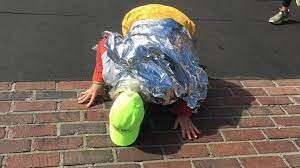
"I've run all 50 states and D.C, five continents and a couple islands," she proudly listed.
But the 13.1-mile trek that starts in the heart of downtown Indianapolis is by far her favorite.
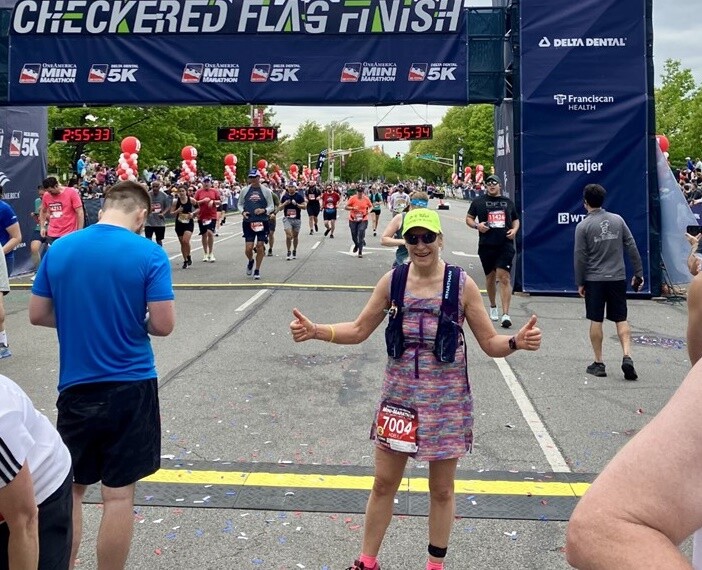
"How many people get to run on the Indy 500 track? It's awesome!" Pitt said.
In fact, she loves the "Indy Mini" so much that she's made the trip from her home in Benton Harbor, Michigan, to run almost every year since 2004, only skipping 2018, after she was diagnosed with colon cancer. She skipped that year as she started treatment, but refused to stay down for long.
The diagnosis may have slowed her stride, but never stopped her in her tracks..
She was back the next year, not at full strength, but fully confident she'd "run the cancer away," she said.
"I had a good race that year," she said, looking at a picture from 2019. Pitt loves to look back at race day photos and is now compiling them into a scrapbook.
Now in remission, "Back and Better" seems to be one of her mottos. She's ready to lace up her running shoes, and her running dress (yes, it's a thing, she said) – as she does every year.
"I usually put on a fake tattoo and my mantra is, 'I can, I will, I am and then one foot, one foot, one foot,'" she said. "And that applies to more than just running. It's just one foot at a time, one step at a time."
Still running strong, Adele plans to tackle many more steps, miles and milestones, taking it all in full stride.
"When I got to my 100th race, there were people that were like, 'Well, are you done now?'" she said, gladly telling them, "No, we are never done! We just keep on going."
Login to leave a comment
OneAmerica 500 Festival Mini-Marathon
The mission of the 500 Festival is to produce life-enriching events and programs while celebrating the spirit and legacy of the Indianapolis 500 and fostering positive impact on the city of Indianapolis and state of Indiana. As an organization providing multiple events and programs, many of which are free to attend and impact over 500,000 people annually, our mission to...
more...Kenyan trio of Peter Mwaniki, Emmaculate Anyango and Bravin Kipkogei headline the 16th edition of TCS World 10K Bengaluru
The Kenyan trio of Emmaculate Anyango, Peter Mwaniki and Bravin Kipkogei headline the 16th edition of TCS World 10K Bengaluru on April 28.
The World Athletics Gold Label Road Race is a Sh27m prize money event featuring some of the world's most accomplished road and track athletes.
Anyango, the world's second-fastest woman over 10K, clocked 28:57 in Valencia while finishing behind compatriot Agnes Ngetich, who posted a 28:46 world record.
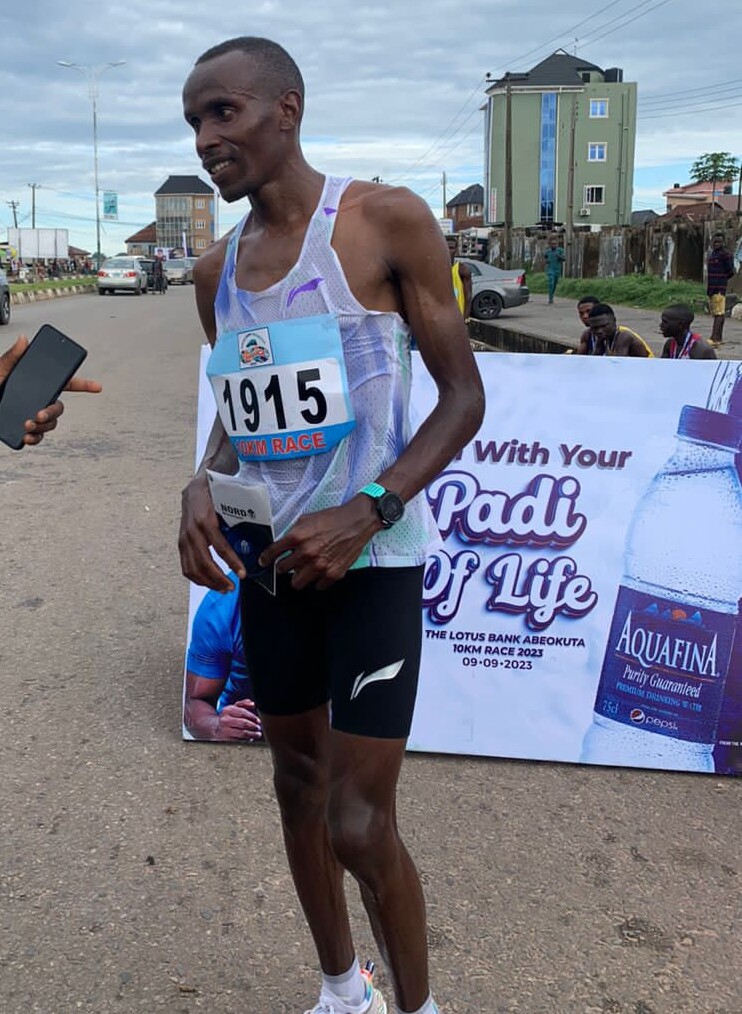
A silver medalist at the 2019 African Junior championships in 3000m, Anyango barely missed the podium at this year's World Cross Country Championships in Belgrade, Serbia.
“I am very excited to be in Bengaluru for the first time for this incredible event, which has gained a worldwide reputation for being one of the best 10K races. I have heard so much about the events hosted in India and the running revolution they began nearly two decades ago," said Anyango.
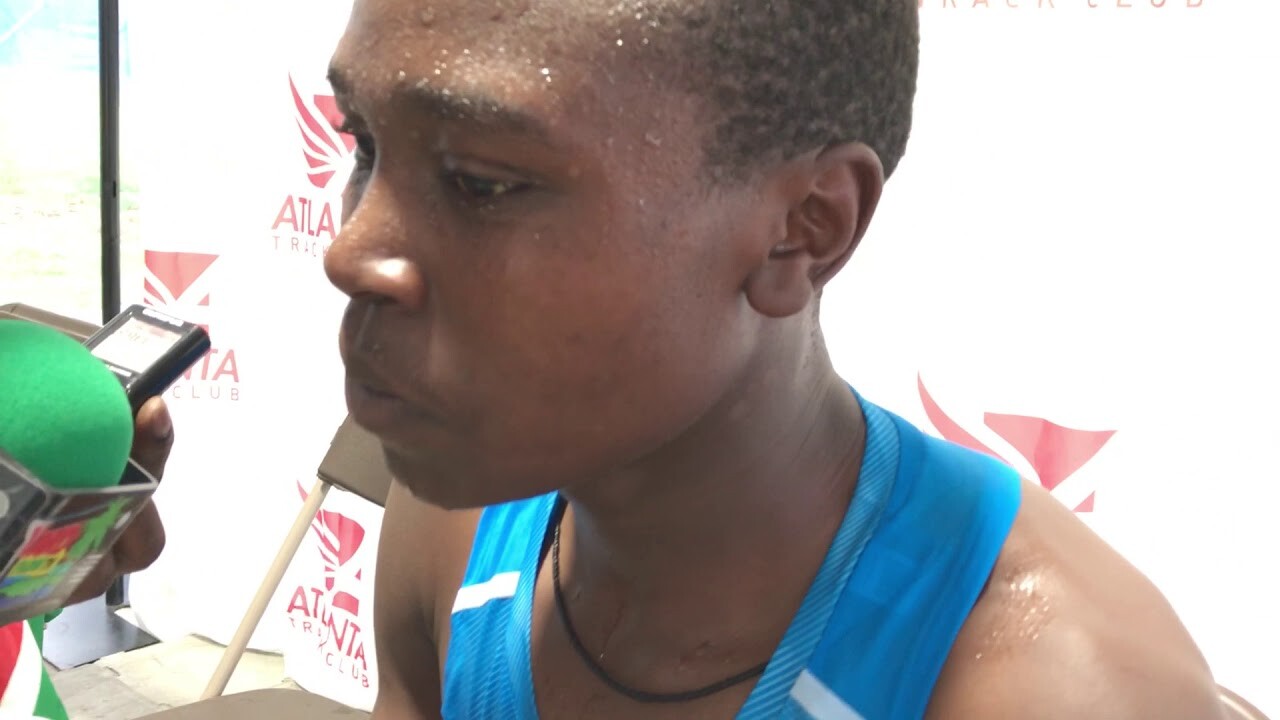
"I am looking forward to being there and doing my best. The field of runners in the women’s category is quite strong this year and I love a good challenge."
She will be joined by Lilian Kasait (29:32), Faith Chepkoech (29:50), Loice Chemnung (29:57), Cintia Chepngeno (30:08) and Grace Nawowuna (30:27).
Two Ethiopians, Aberash Minsewo, this year's Tata Mumbai Marathon winner, and Lemlem Hailu, 2022 World Indoor 3000m champion, add further shine to the women's start lists.
Mwaniki is the fastest among the men with a time of 26:59 he achieved while finishing third in Valencia earlier this year. He is the 19th runner in the World to run 10K in under 27 minutes.
Kipkogei, the 2019 African junior champion over 10,000m is credited with 27:02 from Madrid last year while Kiprop, clocked an impressive 27:16 this February at Castellon, Spain.
They will keep the race interesting.
Two more Kenyans, Hillary Chepkwony, last year's third-place finisher, and Patrick Mosin, the runner-up in Castellon the previous year, are expected to provide the necessary boost to return fast times.
Two young runners, John Wele from Tanzania and Boki Diriba from Ethiopia may also threaten the Kenyans.
Kenyans Nicholas Kimeli (27:38) and Irene Cheptai (30:35) have held the course records in Bengaluru since 2022.
The winners in the men's and women's categories will each take home Sh3.3m. A course record bonus of Sh1m is also up for grabs.
by Star Reporter
Login to leave a comment
TCS WORLD 10K BENGALURU
The TCS World 10k Bengaluru has always excelled in ways beyond running. It has opened new doors for people to reach out to the less privileged of the society and encourages them to do their bit. The TCS World 10K event is the world’s richest 10 Km run and has seen participation from top elite athletes in the world. ...
more...British duo win Manchester Marathon
British duo impress at the 2024 adidas Manchester Marathon
Sunday saw over 32,000 runners take the streets of Manchester to cover the 26.2 miles on one of the flattest courses in the UK.
On a day helped by perfect weather conditions, Adam Clarke from Aldershot, Farnham and District AC took the elite men’s title after completing the marathon in 2:16:29.
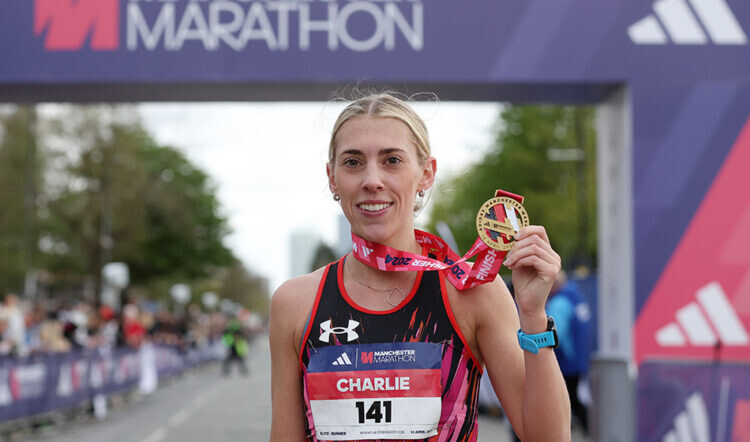
It was a comfortable race for the 33-year-old as he soared ahead from the leaders at the 18-mile mark, completing the race with a lead of just over two minutes.
The Brit has been training alongside his partner, Charlotte Purdue, who was recently named in the first wave of Olympic marathon selections for the British team ahead of the Paris Games.
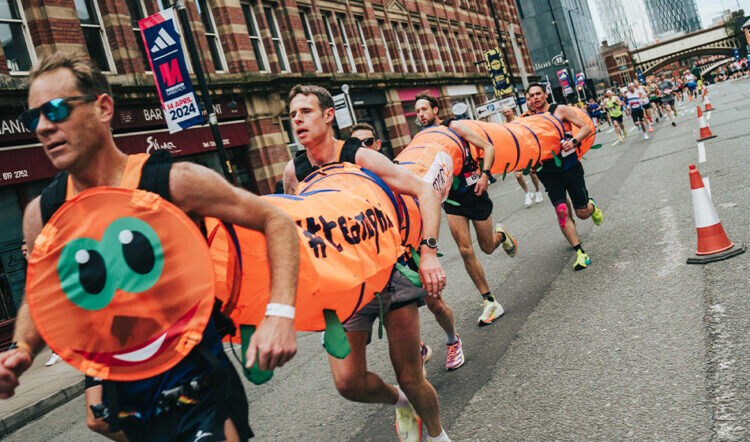
Behind Clarke was Marshall Smith from Ashford AC who finished second with 2:18:22 as Alexander Teuten from Southampton AC took bronze clocking 2:18:37.
Charlie Arnell, from MK Distance Project, made her marathon debut as she was the first woman through the finish with 2:37:12. The Brit ran 77:27 at the Bath Half Marathon in March.
Arnell finished almost five minutes clear of Melissah Gibson from Ealing Eagles Running Club (2:42:09) who finished in second with a great run considering she ran 100km just over two weeks ago at the Sri Chinmoy 100km in Perth.
Gibson, who completed 16 marathons last year, finished second at those trials which booked her a place on the IAU World 100km Championship team set to compete in India later this year.
Finishing in third behind Gibson in Manchester was Anna Lawson from Clapham Chasers, clocking an impressive PB of 2:43:32 having not started with the elite field.
Arnell finished almost five minutes clear of Melissah Gibson from Ealing Eagles Running Club (2:42:09) who finished in second with a great run considering she ran 100km just over two weeks ago at the Sri Chinmoy 100km in Perth.
Gibson, who completed 16 marathons last year, finished second at those trials which booked her a place on the IAU World 100km Championship team set to compete in India later this year.
Finishing in third behind Gibson in Manchester was Anna Lawson from Clapham Chasers, clocking an impressive PB of 2:43:32 having not started with the elite field.
Among the notable figures joining the mass field of participants, the event also saw multiple world records set.
Almost impossible to miss were a group of six participants, Marcus Green, Rich Bidgood, Hugh Tibbs, Nick Wright, David Mills and James Bewley dressed as a caterpillar, setting a world record for the fastest marathon in a six-person costume (2:57:31).
Christian Howett ran the full marathon in a pair of crocs, finishing in 2:58:54 which saw him claim the world record.
by Jasmine Collett
Login to leave a comment
Manchester Marathon
We pride ourselves on welcoming all to take on our 26.2 mile challenge, from some of the world's greatest elite runners, to those who thought completing a marathon would never be possible. Many regular runners find this the ideal event to get a personal best time, whilst everybody finds the incredible Mancunian support throughout the course unforgettable. ...
more...Emmaculate Anyango Achol will headline 16th edition of TCS World 10K Bengaluru
Emmaculate Anyango Achol, the world's second-fastest 10K woman runner, will headline the 16th edition of TCS World 10K Bengaluru, scheduled for Sunday. The World Athletics Gold Label Road Race is a USD 210,000 prize money event featuring some of the world's most accomplished road and track and field athletes.
And among the star attractions this year is Kenya's Anyango, who clocked an excellent 28:57 in Valencia while finishing behind her teammate Agnes Ngetich, who posted a world record 28:46 there.
A silver medalist in the 2019 African junior championships in 3000m, Anyango narrowly missed the Belgarde podium in this year's World cross-country championships.
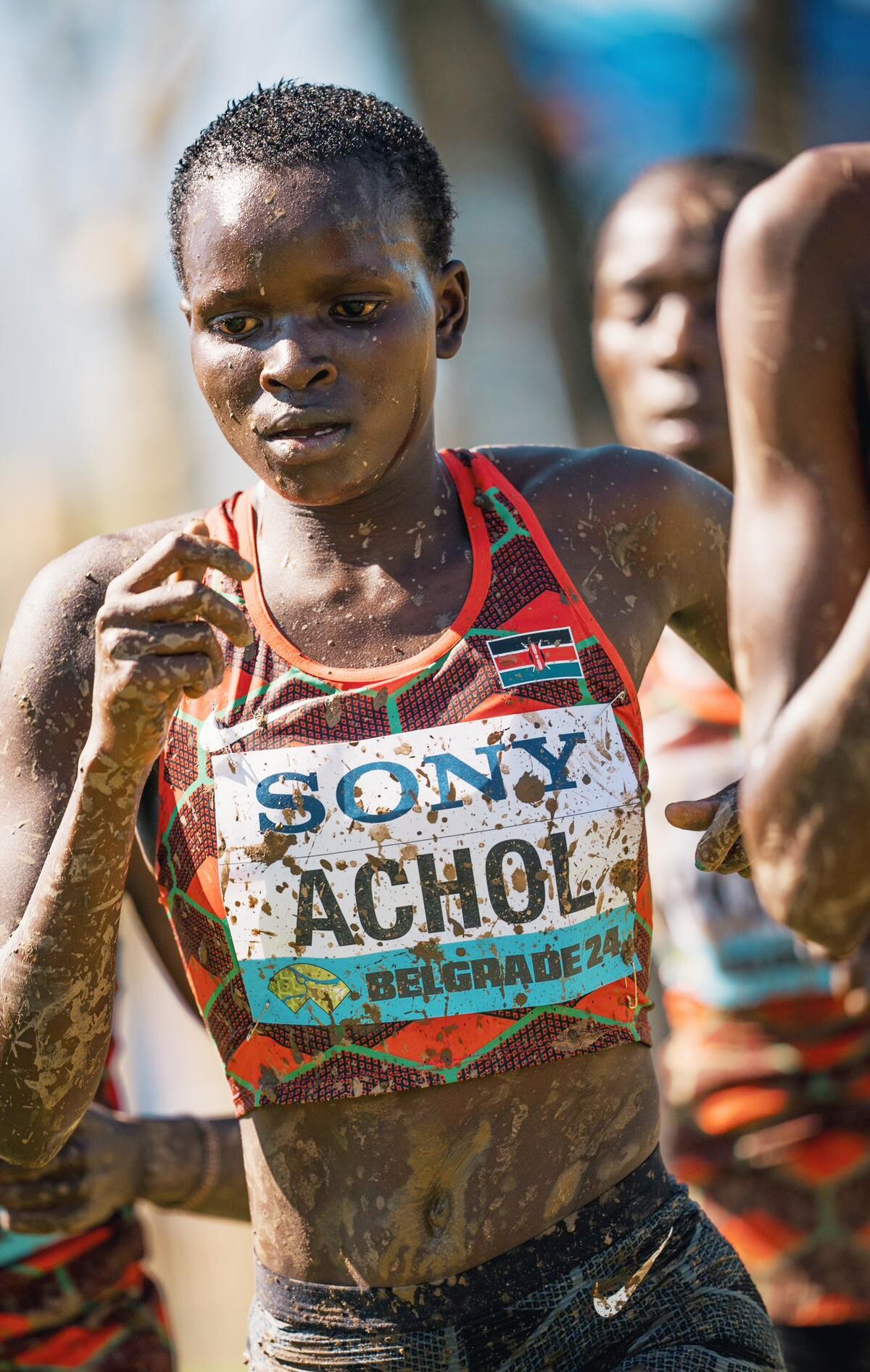
"I am very excited to be in Bengaluru for the first time for this incredible event, which has gained a worldwide reputation for being one of the best 10K races. I have heard so much about the events hosted in India and the running revolution they began nearly two decades ago.
"I am very much looking forward to being there and clock my best. The field of runners in the women's category is quite strong this year and I love a good challenge," expressed Anyango.
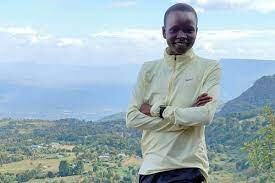
Five of her compatriots will also take the women's starting line-up in Bengaluru, with timings faster than the event course record (30:35).
Lilian Rengeruk Kasait (29:32), Faith Chepkoech (29:50), Loice Chemnung (29:57), Cintia Chepngeno (30:08), and Grace Nawowuna (30:27) make their team formidable. Anyango's inclusion in this epic line-up draws attention to a power-packed elite women's race to the title.Rengeruk and Chepngeno participated in the epic race in Valencia, while Chepkoech and Chemnung clocked their best in Castellon and Paris. Nawowuna did it in Lille.
Two Ethiopians, Aberash Minsewo, this year's Tata Mumbai Marathon winner, and Lemlem Hailu, 2022 World Indoor 3000m champion, add further shine to the women's start lists.Peter Mwaniki, Bravin Kipkogei spearhead elite men's line-upMeanwhile, in the elite men's lineup, Kenya's Peter Mwaniki Aila (29) entered with the fastest time, 26:59. He achieved this mark while finishing third earlier this year in Valencia.
In that process, Peter became the nineteenth runner in the World to run the 10K distance in under 27 minutes.His country-mate and 2019 African junior champion over 10,000m - Bravin Kipkogei Kiptoo - is credited with 27:02 in Madrid last year and along with Bravin Kiprop, who clocked an impressive 27:16 this February at Castellon, Spain, will keep the race interesting.
Two more Kenyans, Hillary Chepkwony, last year's third-place finisher, and Patrick Mosin, the runner-up in Castellon the previous year, are expected to provide the necessary boost to return fast timings here.Two young runners, John Wele from Tanzania and Boki Diriba from Ethiopia, may also pose a threat to the Kenyans.
The winners in the men's and women's categories will each take home USD 26,000. A course record bonus of USD 8,000 is also in the offing.
Login to leave a comment
TCS WORLD 10K BENGALURU
The TCS World 10k Bengaluru has always excelled in ways beyond running. It has opened new doors for people to reach out to the less privileged of the society and encourages them to do their bit. The TCS World 10K event is the world’s richest 10 Km run and has seen participation from top elite athletes in the world. ...
more...Edwin Kurgat, Laura Galvan defend Carlsbad 5000 championships on race’s new course
Reigning champions Edwin Kurgat of Kenya and Laura Galvan of Mexico successfully defended their titles in the Men’s Elite and Women’s Elite races to cap Sunday’s Carlsbad 5000.
The annual road race in Carlsbad Village, with events throughout the day for runners of different ages and skill levels, featured an updated course that benefited from the picturesque weather.
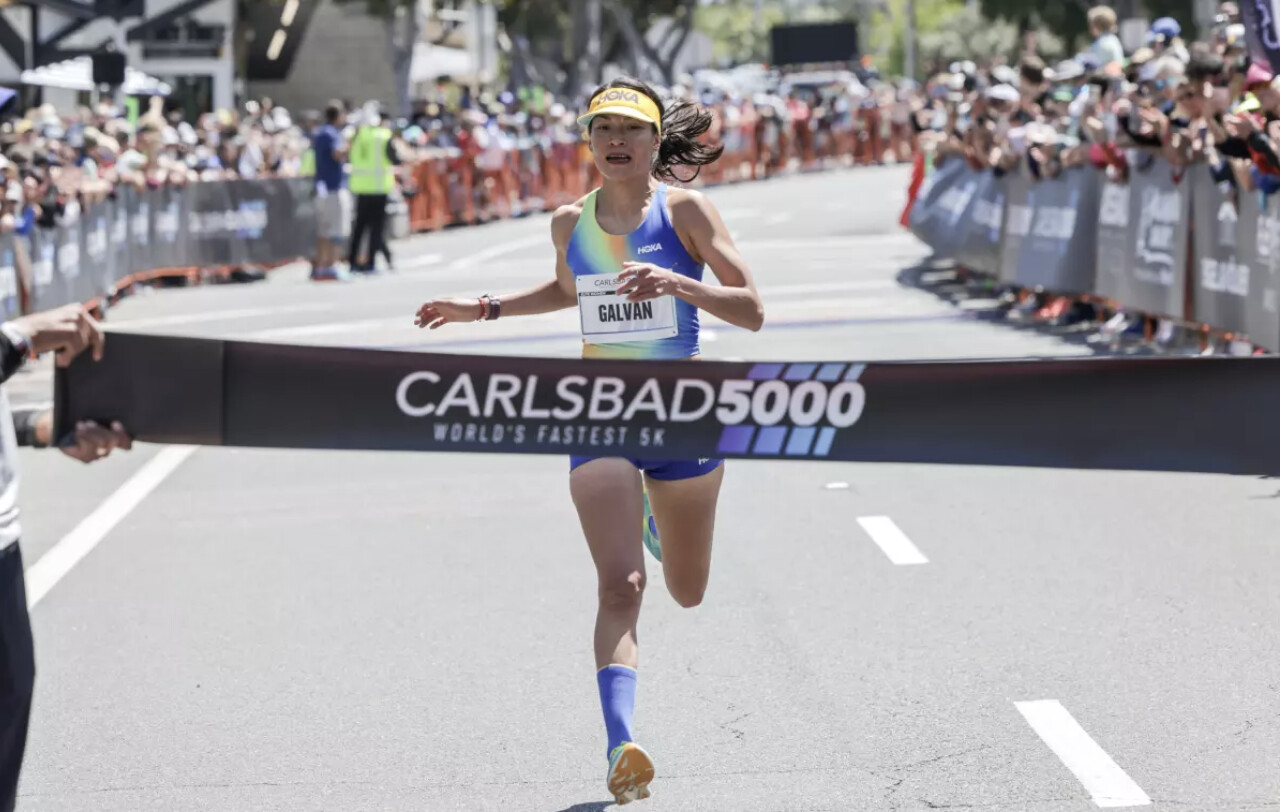
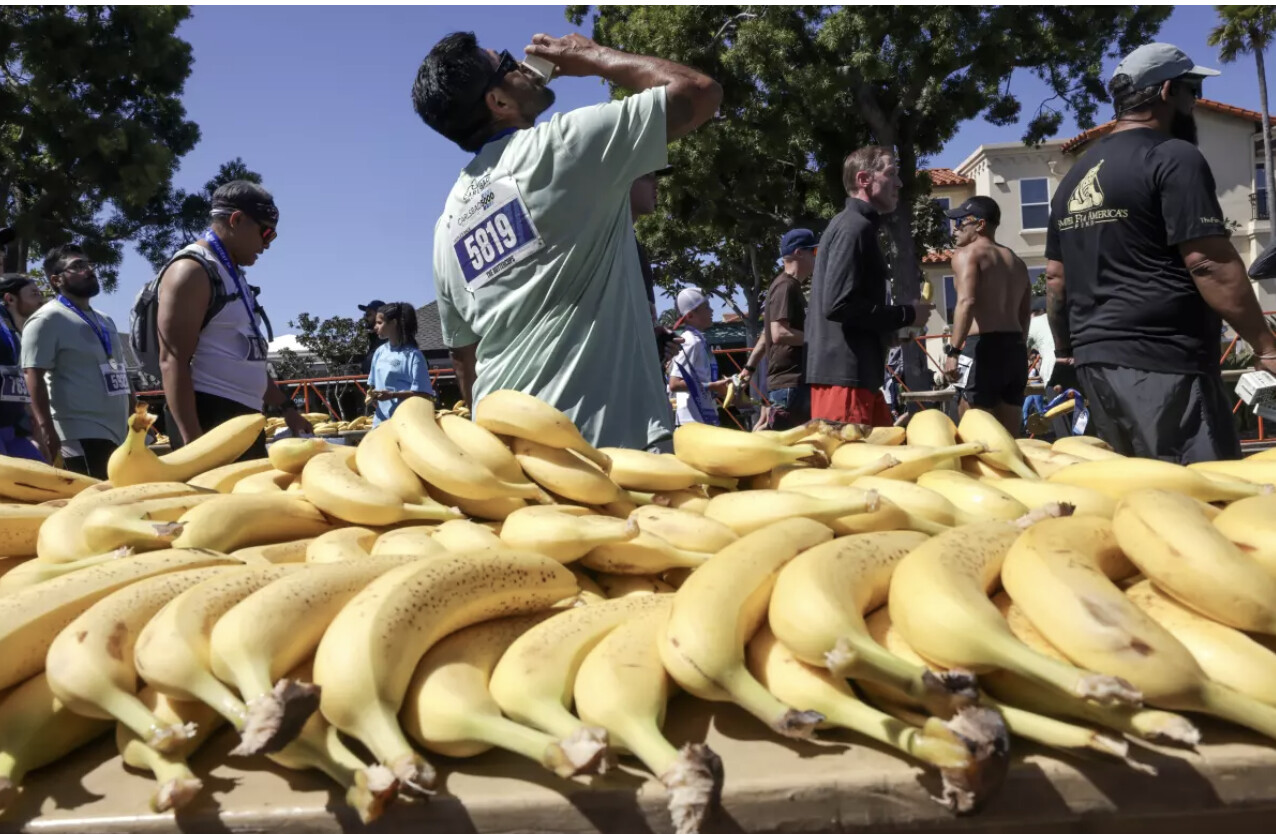
Under blue skies with only wispy clouds, competitors ran parallel to the coastline on Carlsbad Boulevard. They were cheered on both by spectators there to take in the “World’s Fastest 5K” and the beachgoers who became impromptu fans.“The new course is way fun,” said Kurgat. “You don’t have to think about much, so I like it better than last (year’s) course.”
Kurgat’s appreciation for the course manifested in a final time of 13:46.11. His 4:26 pace edged him ahead of New Zealand’s Matt Baxter, who finished second at 13:47.74.
“I felt surprisingly good throughout the entire race,” said Baxter, who ran a 4:27 pace. “I just couldn’t quite hold onto Edwin as we came up that last hill … When I saw him in sights coming through his home stretch, I was giving it everything, because I knew if I was even close to Edwin, it was going to be a day I could be happy with.”
With a mile remaining and the runners coming up the slope, the 2019 NCAA cross-country champion from Iowa State Kurgat gained separation.
Kurgat and Baxter pulled away from American Ben Veatch — who, at Indiana University set the USATF American Junior indoor 5K record with a since-broken 13:57.27. Veatch finished third on Sunday with a time of 14:09.39.
His repeat first-place performance at the Carlsbad 5000 continued an impressive 2024 for Kurgat, who in January ran a 12:57.52 in the indoor 5,000 meters at the John Thomas Terrier Classic in Boston.
An Olympic-qualifying time to his credit, Kurgat’s attention for 2024 turns to Paris and the Oymmpics.
“It’s a big year, Olympic year. I wanted to come here, have some fun, take a quick break and I wanted to use (Carlsbad) as part of my training,” Kurgat said.Likewise, fellow repeat Carlsbad 5000 champion Galvan ran an Olympic-qualifying time during the World Championships last August in Budapest, Hungary.
A native of La Sauceda, Guanajuato, Galvan will represent Mexico in Paris for the 5,000 meters. She has designs on qualifying for the 10,000, as well.
Ahead of competing for the nation this summer, onlookers at the Carlsbad 5000 waved Mexican flags for Galvan on Sunday.
“I really like the atmosphere,” she said. “It was crazier than last year because last year, we had many turns (on the course) ... The crowd was really, really amazing.”An enthusiastic crowd made for a welcoming environment to Galvan amid the intensity of Olympic preparations.
“Stress builds up. Coming here to a race like this makes it fun,” Galvan said. “I said, ‘If I win, great. If I don’t, it’s fine.’ Because what I wanted to do as much as winning was having a good race.”Galvan accomplished her goal of running a strong race, and winning again came with that.
She finished with a time of 15:19, 20 seconds ahead of second-place finisher, Marissa Howard. Carrie Verdon came in third at 15:49.
Each champion’s successful defense ahead of their respective pursuits of Olympic success provided fitting punctuation to an all-around idyllic spring North County day.
San Diego running legend Meb Keflezighi, a part-owner of the race, summed it up this way:
“Great turnout from the crowd, great turnout from the participants and perfect weather.”
by Kyle Kensing
Login to leave a comment
Daniel Simiu eyes Berlin Half Marathon course record
Daniel Simiu is not resting on his laurels as he targets the course record at the Berlin Half Marathon on Sunday.
World Half Marathon silver medallist Daniel Simiu has eyes on the course record as he returns to the Berlin Half Marathon on Sunday, April 7.
The course record currently stands at 58:42 and was set by Eric Kiptanui during the 2018 edition of the event. Simiu has been unbeaten so far this season, claiming wins at the 67° Campaccio-International Cross Country and the Sirikwa Classic Cross Country.
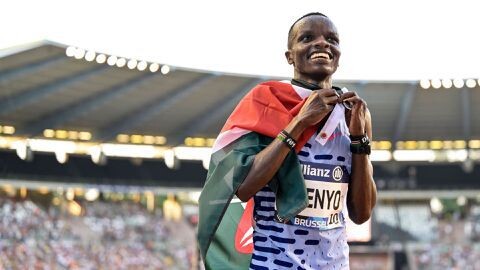
He now heads to the German capital confident and ready to pull off something unique with the course record part of his major plans. However, he faces a stern test from his compatriots since all the six runners that have personal bests of sub 60 minutes are from Kenya.
The 28-year-old has not yet run sub 59:00 and his PB stands at 59:04 which he will attempt to beat when he descends on the course. Last season, he stunned the world to win the Kalkutta 25k race with a world-best time of 1:11:13.
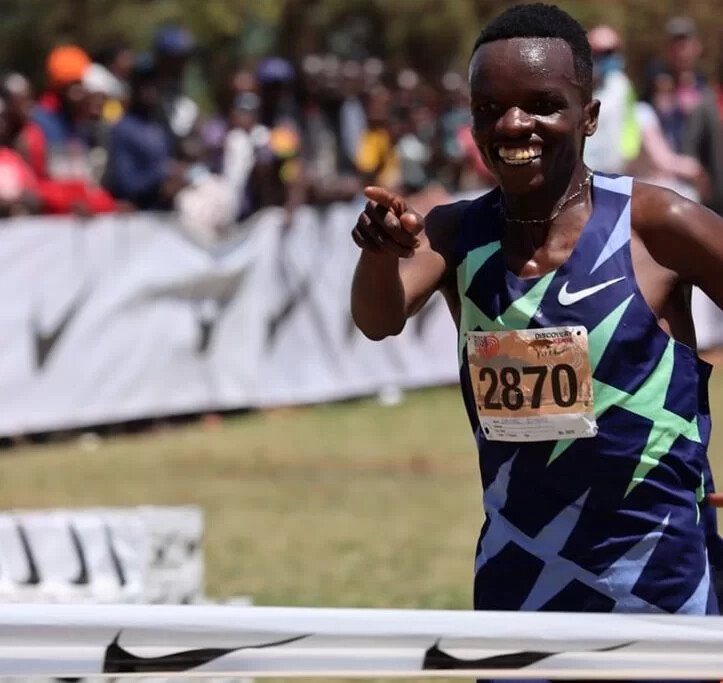
The record he set in India indicates that Ebenyo should be capable of running well under the course record in Berlin. Bravin Kiprop will also be in the mix after taking the Sevilla Half Marathon earlier this year and improving to 59:21, which at that time was a world-leading time.
Simon Boch is the fastest German on the start list with 61:23 while Samuel Fitwi returns to the race where he set his personal record of 61:44 a year ago.
Meanwhile, the women’s race will see Germany’s record holder Melat Kejeta, return to the streets of Berlin. Kejeta has won the race before but when she triumphed in 2018 with 69:04 she still competed for Ethiopia.
“My first goal is to run faster than the 66:25 I ran in Valencia last year. If all goes well during the race then I will try to attack my personal best,” she said.
Ftaw Zeray and Yalemget Yaregal from Ethiopia will certainly be her strongest challengers. Zeray has a PB of 66:04 while Yaregal was third at the Berlin Half Marathon last year in 66:27.
by Abigael Wuafula
Login to leave a comment
Berlin Half Marathon
The story of the Berlin Half Marathon reflects a major part of the history of the German capital. It all began during cold war times and continued during reunification. The events leading up to today's event could really only have happened in this city. Its predecessors came from East- and West Berlin. On 29th November 1981 the Lichtenberg Marathon was...
more...Malaysia rejects offer to host 2026 Commonwealth Games
Malaysia has rejected an offer to hold the 2026 Commonwealth Games due to time constraints, costs and an insufficient offer of funding, its government said on Friday, in a major setback for a quadrennial multi-sport event that has struggled to find hosts.
Malaysia was asked to step in after the Australian state of Victoria withdrew, citing ballooning costs, with the Commonwealth Games Federation (CGF) offering 100 million pounds ($126 million) in supporting funds.
Malaysia ruling itself out raises the possibility that the Games may not take place for the first time since being cancelled in 1942 and 1946 due to the Second World War.
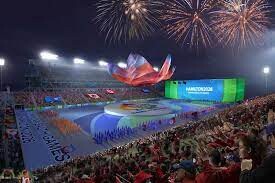
Malaysia could not commit to hosting the contest at such short notice with cost concerns and little time to assess the potential economic impact, officials said.
"If we had a longer time, we would definitely do it, but because there's such a short time, we definitely can't do it," government spokesperson and Communications Minister Fahmi Fadzil told a regular briefing.
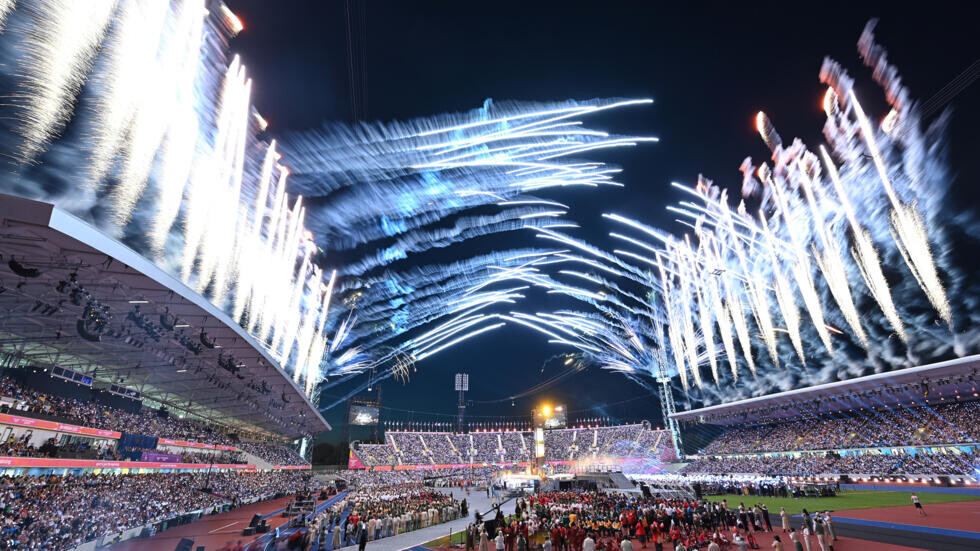
"When we assessed the viability of hosting the Games, the length of time needed and the cost was seen to be particularly prohibitive."
The CGF expressed disappointment at Malaysia's decision, but said its search for a host was continuing.
"The confidential process to determine a host is continuing with other interested Commonwealth Games Associations," a CGF spokesperson said, without elaborating.
RELEVANCE QUESTIONED
The Games are typically contested by about 70 countries and territories of the former British empire and medals tables have in recent editions been dominated by Australia, England, Canada, India, New Zealand and South Africa.
Victoria's withdrawal had already placed the future of the event in doubt and raised questions about whether a Games with colonial origins was still relevant in the modern era, and over its place in an already packed global sporting calendar.
TV rights, the main income driver for international sports events, are tiny for the Commonwealth Games compared to other large-scale competitions, meaning national and local governments can face budget deficits if hosting.
Malaysia's youth and sports ministry said the 100 million pounds funding it was offered would not be enough to cover the costs of hosting the Games.
"Additionally, the economic impact could not be identified in this short timeframe," the ministry said.
The Games has struggled to find a willing host in recent years and five of the last six editions have been held in Australia or Britain.
The English city of Birmingham, which had been due to host in 2026, stepped in to save the 2022 event after South Africa were stripped of hosting rights over a lack of progress in preparations.
Birmingham's move led to the CGF scrambling to find another host for 2026 and Victoria had been the only viable candidate after several other cities withdrew from the bidding process over cost issues.
The proposal had received a mixed response in Malaysia, which hosted the 1998 edition, over the lack of preparation time and costs.
The Malaysian Olympic Council had initially proposed holding a downsized Games, with limited spending on athletes' accommodation and smaller opening and closing ceremonies.
by Reuters
Login to leave a comment
The Commonwealth Games
The Commonwealth Games are coming to Victoria - bringing an action packed sports program to our regional cities and delivering a long-term legacy for our future. From 17 to 29 March 2026, Geelong, Bendigo, Ballarat, Gippsland and Shepparton will be on the world stage, attracting millions of viewers and creating thousands of jobs. The multi-city model will...
more...Former NFL player offers world champion Christian Coleman $100,000 to run a 40-yard dash
The newly crowned world 60m champion, Christian Coleman, has been offered USD $100,000 to run a 40-yard dash at full speed. The challenge comes after a University of Texas Longhorns football player Xavier Worthy broke the NFL’s 40-yard dash record (36 metres) at the 2024 NFL Draft Combine on Saturday in Indianapolis.
Worthy, a wide receiver prospect in the 2024 NFL Draft, ran a time of 4.21 seconds on his second of two attempts, breaking the record of 4.22 seconds set by former NFL wide receiver John Ross in 2017. Worthy’s time was instantly compared to the speed of the world’s fastest sprinters, and to prove a point, former NFL quarterback Robert Griffin III said he would give Coleman $100,000 to prove a point.
Coleman previously ran a 40-yard dash during his collegiate track career at the University of Tennessee in 2018, recording a mark of 4.12 seconds. Seven years later, Coleman now has three world sprint titles on his resume, and is widely considered one of the best starters in the world. The argument for Griffin III is that Coleman’s 40-yard dash would show the difference between NFL receivers and world-class sprinters.
On Friday, Coleman reclaimed his world 60m indoor title at the 2024 World Indoor Championships, beating Noah Lyles in the final in a world-leading time of 6.41 seconds. His winning time equates to an average speed of 21 mph (33 km/h) over 60m. When that speed is calculated for the 40-yard dash (36m), it equals a time of 3.90 seconds, well below Worthy’s mark.
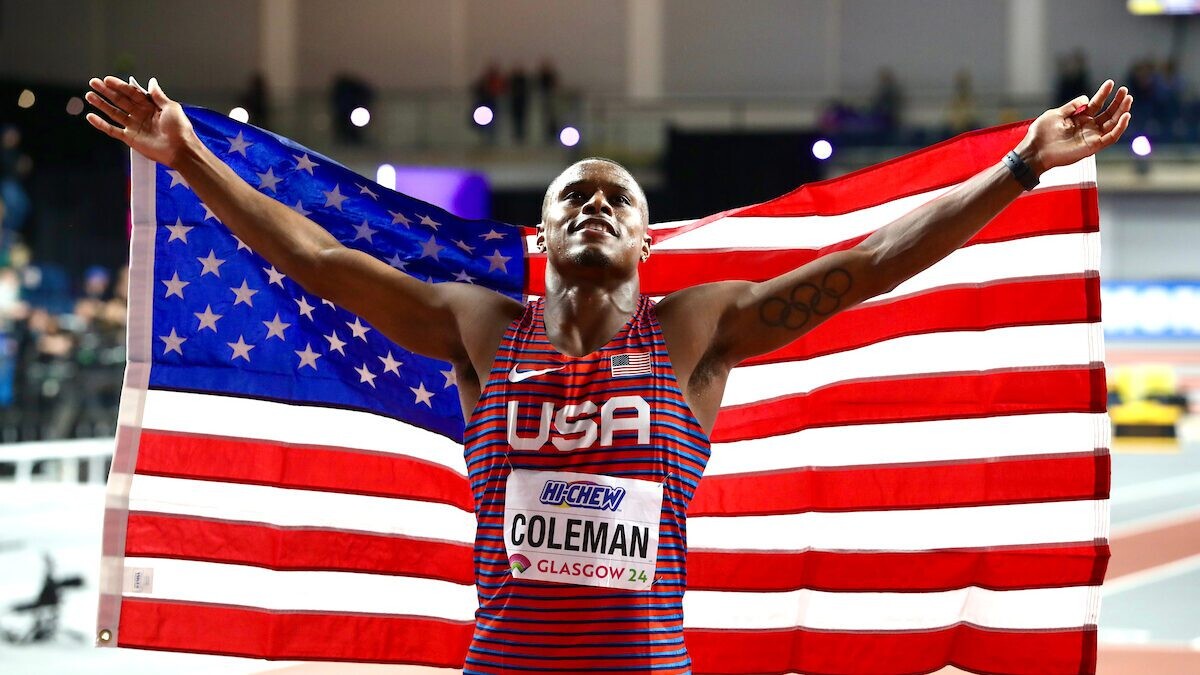
Coleman has not come out and said whether he will take up Griffin III’s challenge, but considering it would be an easy way for him to make $100,000, I don’t see why he wouldn’t. Plus, he would settle the debate once and for all.
by Marley Dickinson
Login to leave a comment
ST. PIERRE'S MILE RECORD EARNS HER USATF ATHLETE OF THE WEEK HONORS
INDIANAPOLIS — Bettering her own American record* in the women's mile, Elle St. Pierre (Enosburg, Vermont/USATF New England) earned recognition as the 5th USATF Athlete of the Week award winner for 2024.In only her second track race since giving birth to a son last March, St. Pierre clipped almost a half-second off her own AR in the mile to win the Millrose Games in 4:16.41. She became the third fastest woman ever and her en route 1500 time of 4:00.34 puts her second on the all-time U.S. indoor performer list.St. Pierre, the 2022 World Indoor Championships silver medalist in the 3000 and an Olympian at Tokyo in the 1500, beat a star-studded field at Millrose, making a strong move with 300 to go to pass Australia's Jessica Hull and take the lead. Her final quarter-mile of 61.33 put away a group of women who behind her set four national records and eight lifetime bests. Other top performances from last week:
Grant Fisher lowered the American best in the men's 2 mile with an 8:03.62 to place second at the Millrose Games. He is now the No. 3 all-time world performer. En route, his 7:30.88 for 3000 moved him to No. 3 on the all-time U.S. performer list.

Alicia Monson lowered the American best in the women's 2 mile at the Millrose Games, placing third in 9:09.70. She is now the No. 5 all-time world performer.
Yared Nuguse won the men's mile at the Millrose Games in 3:47.83, the third fastest time ever indoors, and the second fastest by an American. His en route 3:33.43 for 1500 was the third fastest ever by an American.
Brandon Miller won the men's 600 at the Kirby Elite meet in Albuquerque in 1:14.03, making him the No. 2 all-time world performer.
Nia Akins won the women's 600 at the Kirby Elite meet in Albuquerque in a world-leading 1:24.32 to move to No. 8 on the all-time world performer list.
Grant Holloway continued his 10-year winning streak in the men's 60H with a 7.32 at the Liévin World Indoor Tour - Gold meet in France. He tied the fourth-fastest time ever and only one man besides him has ever run faster.
*All records subject to verification by the USATF Records Committee. Now in its 23nd year, USATF’s Athlete of the Week program is designed to recognize outstanding performers at all levels of the sport. USATF names a new honoree each week when there are high-level competitions and features the athlete on USATF.org. Selections are based on top performances and results from the previous week.2024 Winners: January 17, Weini Kelati; January 24, Cooper Teare; January 31, Nico Young; February 7, Fiona O'Keeffe; February 14, Elle St. Pierre.
Login to leave a comment
2026 USAFT Indoor Championships
The 2026 USATF Indoor Championships, presented by Prevagen, are set to take place on February 22-23 at the Ocean Breeze Athletic Complex in Staten Island, New York. This premier event will feature the nation's top track and field athletes competing for national titles and spots on the U.S. team for the 2025 World Indoor Championships in Nanjing, China. The Ocean...
more...World Athletics comes under fire after controversial Xiamen and Tata Mumbai Marathons
Athletics enthusiasts have raised eyebrows concerning the credibility of the rules governing Platinum Label road races after recent happenings at the Xiamen and Tata Mumbai Marathons.
World Athletics has for long been known to champion for viewership boosts in China and India, with the belief being that the presence of renowned athletes and remarkable performances can significantly enhance engagement for those races.
However, the race organizers of some of the elite races in India and China together with World Athletics have come under fire after two recent marathons breached one of the rules of the World Athletics Platinum Label road races.
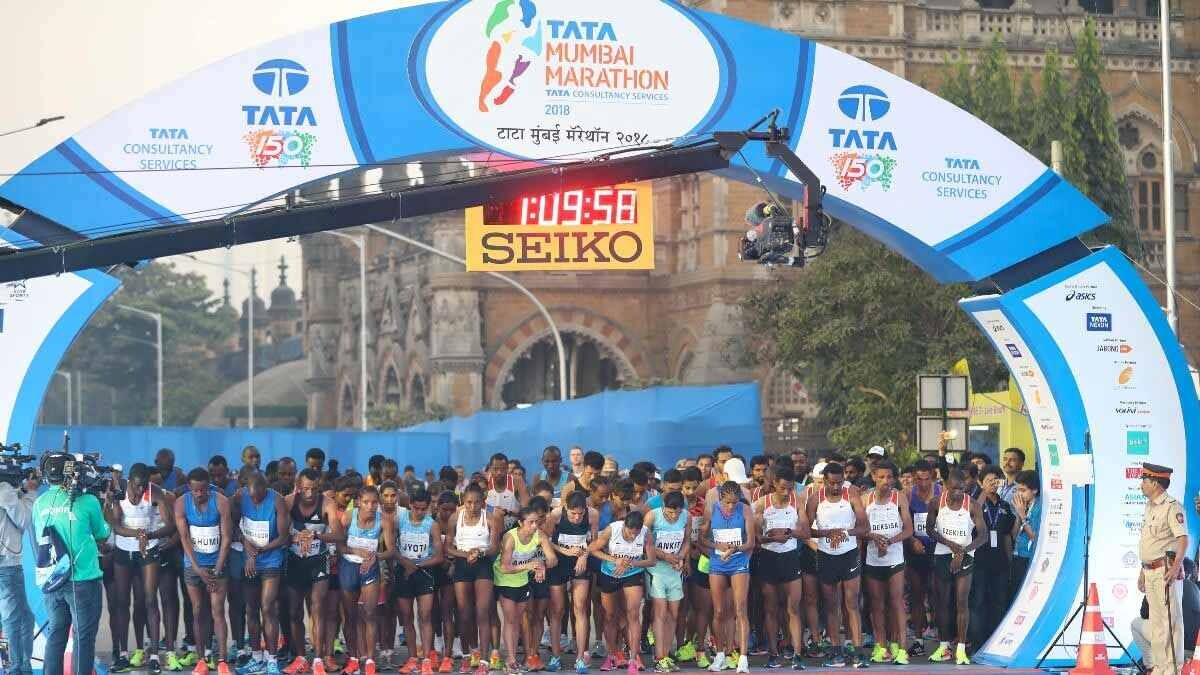
According to World Athletics, an intentional arrangement, act or omission aimed at an improper alteration of a result or the course of an event or competition in order to remove all or part of the unpredictable nature of the event or competition to obtain an undue benefit for oneself or others is a violation.
According to an analysis done by the Canadian Running Magazine, former world half marathon record holder Kibiwott Kandie and defending champion Philimon Kipchumba withdrew from the Xiamen Marathon after covering 20km and this was in order for them to collect their appearance money.
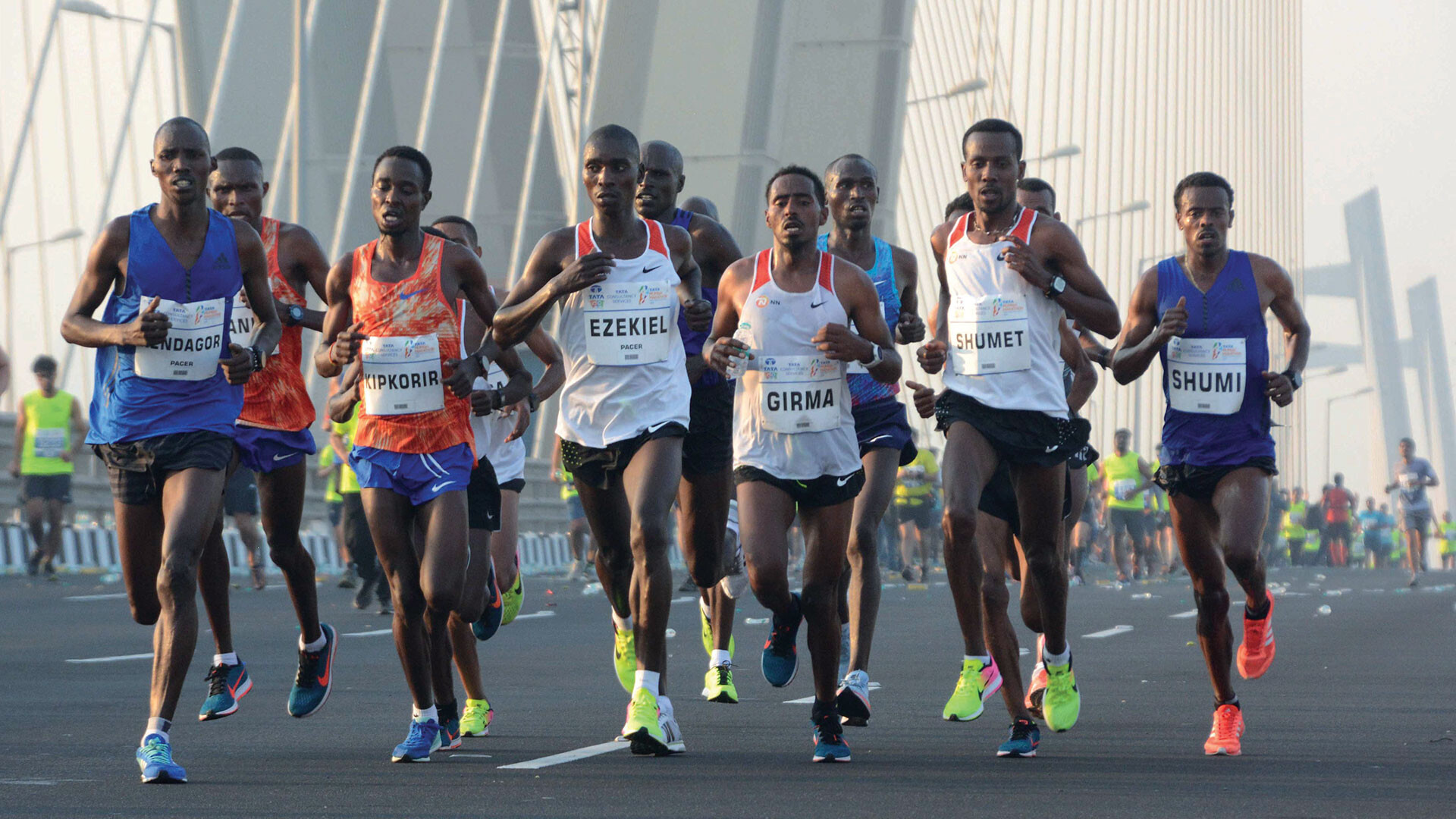
The race organizers were aiming to draw more attention to marathon events in China but their plan seemed not to work out. According to further reports, the organizers are said to have invited 22 elite international athletes, but only seven of them finished.
Kandie and Kipchumba withdrawing from the marathon immediately after crossing the 20K mark, raising eyebrows from locals as they posed for photos, shook hands and smiled for photos.
Before the race, World Athletics did a preview of the race, however, none of the top athletes who were featured in the preview finished the race.
When the Canadian Running Magazine reached to a World Athletics representative, the individual said: “As I am sure you understand, whether due to injury, personal reasons or other, we are never able to predict with certainty who will start or finish a race, come event time. Appearance fees are an important aspect of our sport, and many others–including tennis and golf.”
Although athletics and the pro tennis structure share similarities, they also have one major difference since a tennis player who is paid an appearance fee to play a tournament, or a match, will finish the match, unlike in elite marathoning.
Meanwhile, the 2024 Tata Mumbai Marathon in India on January 21 presented another example of high-performance athletes seeming to collect appearance fees without providing strong performances.
Ethiopian runner Lelisa Desisa headlined the Gold-Label men’s field, and two-time Amsterdam Marathon champion Tadelach Bekele headlined the women’s field. Both athletes started the race, but fell off the lead pack and dropped out.
by Abigael Wuafula
Login to leave a comment
Ethiopian runners Hayle Lemi, Aberash Minsewo win races at the Mumbai Marathon
Ethiopians Hayle Lemi and Aberash Minsewo won the men’s and women’s elite races, respectively, at the Mumbai Marathon 2024 on Sunday.
Hayle Lemi, who set the new course record with a timing of two hours, seven minutes and 32 seconds (2:07:32) last year, clocked 2:07:50 for the top spot this season. Aberash Minsewo, meanwhile, won the women’s race in 2:26:06.
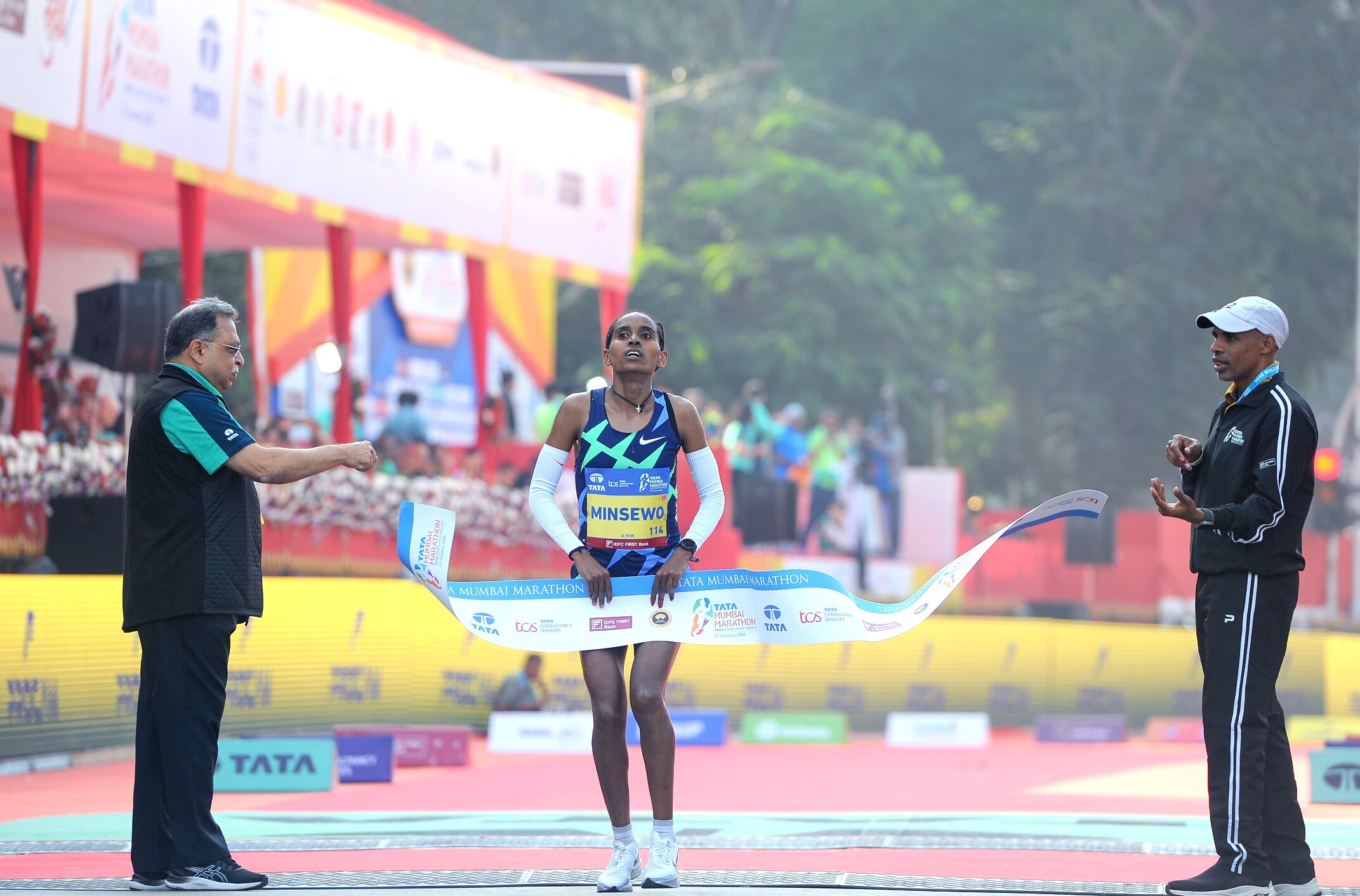
Interestingly, all podiums in the elite race went to the Ethiopian runners. Lemi, who won the 2016 Boston Marathon, was followed by Haymanot Alew, who took the silver in the men’s event in 2:09:03. Mitku Tafa settled for bronze in 2:09:58.
In the women’s race, Muluhabt Tsega took the silver in 2:26:51 while Medhin Bejene clocked a personal best to take the bronze in 2:27:34.
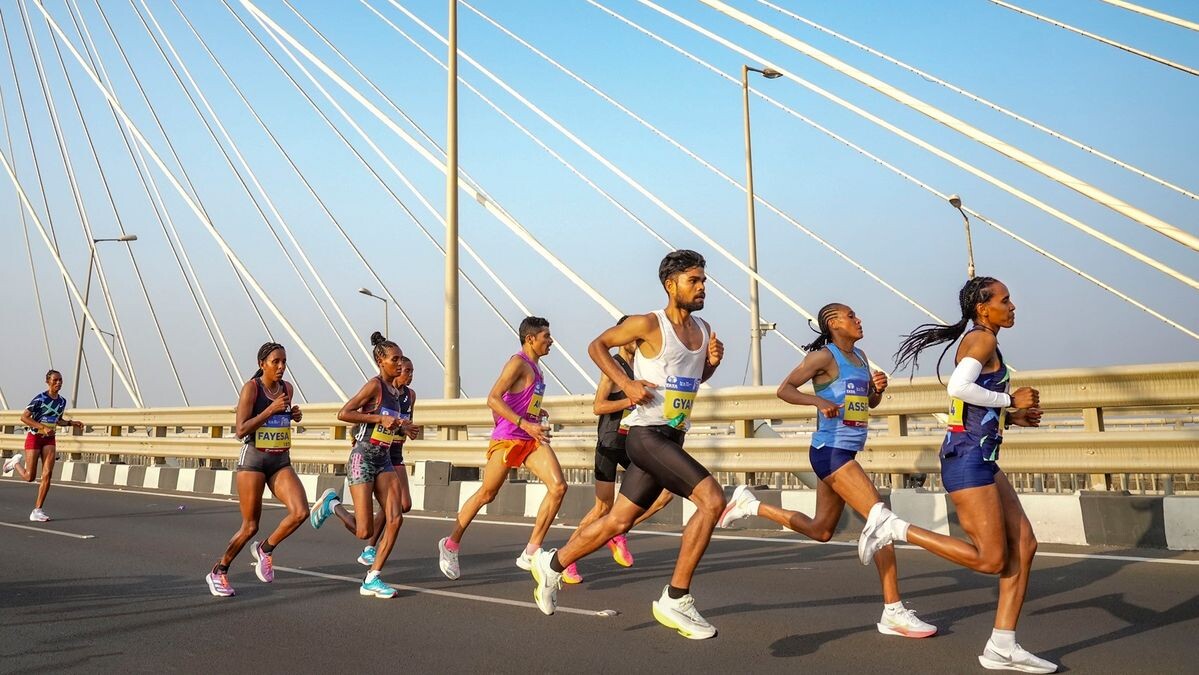
Indian runners at Mumbai Marathon 2024
Among Indian elite runners, Mumbai Marathon 2020 champion Srinu Bugatha pipped 2023 champion Gopi T and won the men’s race in 2:17:29 while Nirmaben Thakor Bharatjee won the women’s race in 2:47:11.
Gopi T followed Bugatha in 2:18:37 while Sher Singh Tanwar completed the Indian men’s podium, clocking 2:19:37.
Nirmaben Thakor Bharatjee, meanwhile, beat second-placed Reshma Kevate by a margin of 16 minutes and 23 seconds. Shyamali Singh came third among the Indian women in 3:04:35.
Sunday’s race was the 19th edition of the Mumbai Marathon, which is a World Athletics Gold Label Road Race event.
Mumbai Marathon 2024 winners
Overall elite men
Hayle Lemi (Ethiopia) - 2:07:50
Haymanot Alew (Ethiopia) - 2:09:03
Mitku Tafa (Ethiopia) - 2:09:58
Overall elite women
Aberash Minsewo (Ethiopia) - 2:26:06
Muluhabt Tsega (Ethiopia) - 2:26:51
Medhin Bejene (Ethiopia) - 2:27:34
by Ali Asgar Nalwala
Login to leave a comment
Tata Mumbai Marathon
Distance running epitomizes the power of one’s dreams and the awareness of one’s abilities to realize those dreams. Unlike other competitive sports, it is an intensely personal experience. The Tata Mumbai Marathon is One of the World's Leading Marathons. The event boasts of fundraising platform which is managed by United Way Mumbai, the official philanthropy partner of the event. Over...
more...Kenyan Anderson Seroi conquers Hong Kong Marathon
Kenya's Anderson Seroi wins Hong Kong Marathon, vows to return for a faster finish amid strong international competition.
Kenya’s Anderson Saitoti Seroi triumphed in the Hong Kong Marathon completing the grueling course in an impressive time of two hours, 12 minutes, and 50 seconds.
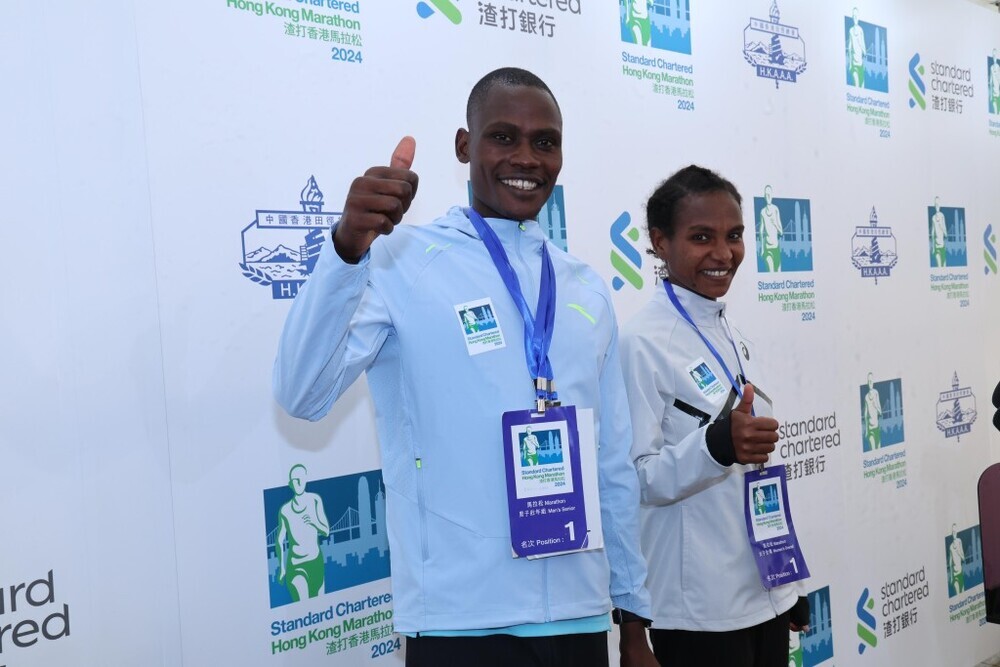
Seroi's victory came amidst challenging conditions, yet his resolve remained unshaken as he immediately set his sights on returning next year for an even swifter conquest.
The race, held on Sunday, saw Seroi narrowly outpace South Africa’s seasoned runner Stephen Mokoka, who secured the second spot with a time of 2:12:58.

Mekuant Ayenew from Ethiopia rounded out the top three, finishing in 2:13:09.
This year's marathon was marked by a moderate temperature of around 15 degrees Celsius (59 degrees Fahrenheit) at the start, providing somewhat ideal conditions for the runners.
In the women’s category, Ethiopia’s Medina Armino emerged victorious, clocking in at 2:28:47.
She was closely followed by Beatrice Cheptoo and Gadise Mulu, who completed the race in 2:29:30 and 2:29:46, respectively.
Despite the physical toll of the race, Seroi's spirit remained high.
Post-race, he expressed his gratitude and affection for the city of Hong Kong.
“First of all, I want to thank God for the win, but also Hong Kong, it’s a beautiful city,” Seroi said.
“I feel really good, the course is tough but I enjoy running it.” His determination was evident, as he pushed himself to the brink of exhaustion, even experiencing sickness after crossing the finish line.
Seroi, 30, is already planning his return, aiming to shatter his current record.
"I ran two hours 12 this year, so next year I’ll aim for two hours 10," he stated, showcasing his relentless ambition.
His 2024 goal is a testament to his unwavering commitment to excellence in the sport.
In a historical context, Seroi's time this year marks a significant achievement, but it also serves as a reminder of the fiercely competitive nature of the marathon.
In 2023, a time of 2:12:00, achieved by Senbeta Geza Tadease, was only good enough for third place, highlighting the continually evolving standards in marathon running.
The event also doubled as the Asian Marathon Championships, where India’s Man Singh claimed gold with a time of 2:14:19.
He was followed by China’s Huang Yongzheng and Kyrgyzstan’s Ilya Tiapkin, who finished in 2:15:24 and 2:18:17, respectively.
by Festus Chuma
Login to leave a comment
HONG KONG MARATHON
The Hong Kong Marathon, sponsored by Standard Chartered Bank, is an annual marathon race held in January or February in Hong Kong. In addition to the full marathon, a 10 km run and a half marathon are also held. Around 70,000 runners take part each year across all events. High levels of humidity and a difficult course make finishing times...
more...Strongest Women’s Field in the race history at Boston Marathon 2024
The 128th Boston Marathon presented by Bank of America will feature the strongest women’s field in race history, led by defending champions Hellen Obiri and Susannah Scaroni. A total of 19 women with personal bests under 2:23:00 will line up in Hopkinton aiming to earn the Open Division crown, including Olympians, Abbott World Marathon Majors winners, and national stars. In the Wheelchair and Para Athletics Divisions, Paralympic hopefuls from around the world are set to compete.
“The Boston Marathon is proud to showcase the world’s best athletes year in and year out on Patriots’ Day,” said Jack Fleming, President and CEO of the Boston Athletic Association. “This year’s women’s field is exceptionally fast and showcases many who’ve been podium finishers on the global stage. It’ll make for an exciting race from Hopkinton to Boston, and we look forward to crowning our champions on April 15.”
Women from 20 countries will be competing as part of the Bank of America Professional Athlete Team.
“Each year, the Boston Marathon sets the bar higher with an unbelievable level of athletic talent, and its impact on communities around the world,” said David Tyrie, chief digital officer and chief marketing officer, Bank of America. “The 128th Boston Marathon builds on a rich history and will continue to be an inspiration for all athletes.”
HELLEN OBIRI SET TO DEFEND OPEN DIVISION TITLE
Hellen Obiri, a two-time Olympic silver medalist from Kenya now living in Colorado, won the 2023 Boston Marathon thanks to a perfectly-timed sprint in the final mile. Adding to her trophy case, Obiri also took home the 2023 B.A.A. 10K title in June and the TCS New York City Marathon crown in November.
“I am excited to return to the 2024 Boston Marathon to try to defend my title,” said Obiri, who finished last year’s race in 2:21:38. “Boston is an historic race and I would like to add my name further to its history on April 15. Winning such an historic marathon with my family waiting at the finish line was an amazing experience.”
A trifecta of Ethiopians with lifetime bests under 2:18:00 will take to the Boston course. Worknesh Degefa, the 2019 Boston Marathon champion, returns, while 2:17:36 marathoner Tadu Teshome will make her Boston debut and Hiwot Gebremaryam aims to improve upon her eighth-place finish last year. Also from Ethiopia is World championships medalist Senbere Teferi; she won the 2022 B.A.A. 5K in a course record 14:49 and has shown talent at the longer distances. Experienced marathoner Ababel Yeshaneh –second in 2022 and fourth in 2023— will try to become the seventh woman from Ethiopia to win the olive wreath in Boston.
Joining Obiri from Kenya are 2022 World Athletics Championships Marathon silver medalist Judith Korir; two-time Boston Marathon winner Edna Kiplagat; four-time top-ten finisher Mary Ngugi-Cooper; and 2022 TCS New York City Marathon champion Sharon Lokedi. Helah Kiprop, who holds a silver medal in the marathon from the 2015 World Athletics Championships and has earned wins in Tokyo, Copenhagen, and Paris, makes her second career Boston start. From Morocco is 2023 World Athletics Championships Marathon bronze medalist Fatima Gardadi.
Desiree Linden leads the American contingent six years after winning the 2018 title. Linden has finished in the top-five five times, and holds the third fastest time by an American ever on the Hopkinton-to-Boston route (2:22:38). Linden will run her fifth U.S. Olympic Marathon Trials in February. Joining her is Emma Bates who finished fifth last year in the second-fastest time ever by an American woman at Boston (2:22:10).
“At this point in my career it’s an easy decision to return to the Boston Marathon and make it my top priority race of the spring,” said Linden. “I can’t wait to take on the iconic course for an 11th time and have the opportunity to mix it up with some of the best runners in the world.”
128TH BOSTON MARATHON PROFESSIONAL WOMEN’S FIELDS
Women’s Open Division
Country
Personal Best
Worknesh Degefa
ETH
2:15:51 (Valencia, 2023)
Tadu Teshome
ETH
2:17:36 (Valencia, 2022)
Hiwot Gebremaryam
ETH
2:17:59 (Valencia, 2023)
Judith Korir
KEN
2:18:20 (Eugene, 2022)
Meseret Belete
ETH
2:18:21 (Amsterdam, 2023)
Tiruye Mesfin
ETH
2:18:47 (Valencia, 2022)
Worknesh Edesa
ETH
2:18:51 (Berlin, 2022)
Zeineba Yimer
ETH
2:19:07 (Berlin 2023)
Senbere Teferi
ETH
2:19:21 (Berlin, 2023)
Dera Dida
ETH
2:19:24 (Berlin, 2023)
Edna Kiplagat
KEN
2:19:50 (London, 2012)*
Mary Ngugi-Cooper
KEN
2:20:22 (London, 2022)
Nazret Weldu Gebrehiwet
ERI
2:20:29 (Eugene) NR
Ababel Yeshaneh
ETH
2:20:51 (Chicago, 2019)
Vibian Chepkirui
KEN
2:20:59 (Vienna, 2022)
Helah Kiprop
KEN
2:21:27 (Tokyo, 2016)
Hellen Obiri
KEN
2:21:38 (Boston, 2023)
Emma Bates
USA
2:22:10 (Boston, 2023)
Desiree Linden
USA
2:22:38 (Boston, 2011)*
Buze Diriba
ETH
2:23:11 (Toronto, 2023)
Sharon Lokedi
KEN
2:23:23 (New York City, 2022)
Malindi Elmore
CAN
2:23:30 (Berlin, 2023)*
Fatima Gardadi
MOR
2:24:12 (Xiamen, 2024)
Angie Orjuela
COL
2:25:35 (Berlin, 2023) NR
Fabienne Konigstein
GER
2:25:48 (Hamburg, 2023)
Jackie Gaughan
USA
2:27:08 (Berlin, 2023)
Dominique Scott
RSA
2:27:31 (Chicago, 2023)
Grace Kahura
KEN
2:29:00 (Sacramento, 2023)
Katie Kellner
USA
2:32:48 (Berlin, 2023)
Briana Boehmer
USA
2:33:20 (Sacramento, 2021)
Dylan Hassett
IRL
2:33:25 (Pulford, 2021)
Parley Hannan
USA
2:33:43 (Carmel, 2023)
Sara Lopez
USA
2:33:48 (Eugene, 2023)
Annie Heffernan
USA
2:34:33 (Lowell, 2023)
Nera Jareb
AUS
2:35:00 (Queensland, 2022)*
Johanna Backlund
SWE
2:35:10 (Hamburg, 2019)
Argentina Valdepenas Cerna
MEX
2:35:34 (Chicago, 2022)*
Ariane Hendrix Roach
USA
2:35:39 (Sacramento, 2022)
Michelle Krezonoski
CAN
2:36:39 (Sacramento, 2022)
Shannon Smith
USA
2:36:43 (Columbus, 2023)
Caroline Williams
USA
2:37:01 (Sacramento, 2022)
Gina Rouse
USA
2:37:10 (Sacramento, 2023)*
Kim Krezonoski
CAN
2:37:20 (Sacramento, 2022)
Abigail Corrigan
USA
2:37:45 (Sacramento, 2023)
Marissa Lenger
USA
2:38:41 (Chicago, 2022)
Emilee Risteen
USA
2:38:46 (Duluth, 2023)
Isabelle Pickett
AUS
2:38:46 (Valencia, 2023)
Allie Hackett
USA
2:38:52 (Duluth, 2023
Mary Christensen
USA
2:38:55 (Big Bear, 2023)
Olivia Anger
USA
2:39:13 (Indianapolis, 2023)
April Lund
USA
2:39:23 (Houston, 2022)*
Sarah Short
AUS
2:39:51 (Valencia, 2023)
Maura Lemon
USA
2:40:30 (Valley Cottage, 2023)
Sarah Sibert
USA
2:40:31 (Philadelphia, 2022)
Lauren Ames
USA
2:40:34 (Valley Cottage, 2023)
Kassie Harmon
USA
2:41:48 (Utah Valley, 2023)*
Elizabeth Camy
USA
2:42:51 (Sacramento, 2022)*
Alexandra Niles
USA
2:43:23 (Hartford, 2022)*
Amber Morrison
USA
2:43:50 (Sacramento, 2022)*
Mindy Mammen
USA
2:44:01 (Duluth, 2023)*
Ziyang Liu
USA
2:44:56 (Eugene, 2023)*
*Denotes Masters Division (40+)
Login to leave a comment
Boston Marathon
Among the nation’s oldest athletic clubs, the B.A.A. was established in 1887, and, in 1896, more than half of the U.S. Olympic Team at the first modern games was composed of B.A.A. club members. The Olympic Games provided the inspiration for the first Boston Marathon, which culminated the B.A.A. Games on April 19, 1897. John J. McDermott emerged from a...
more...

